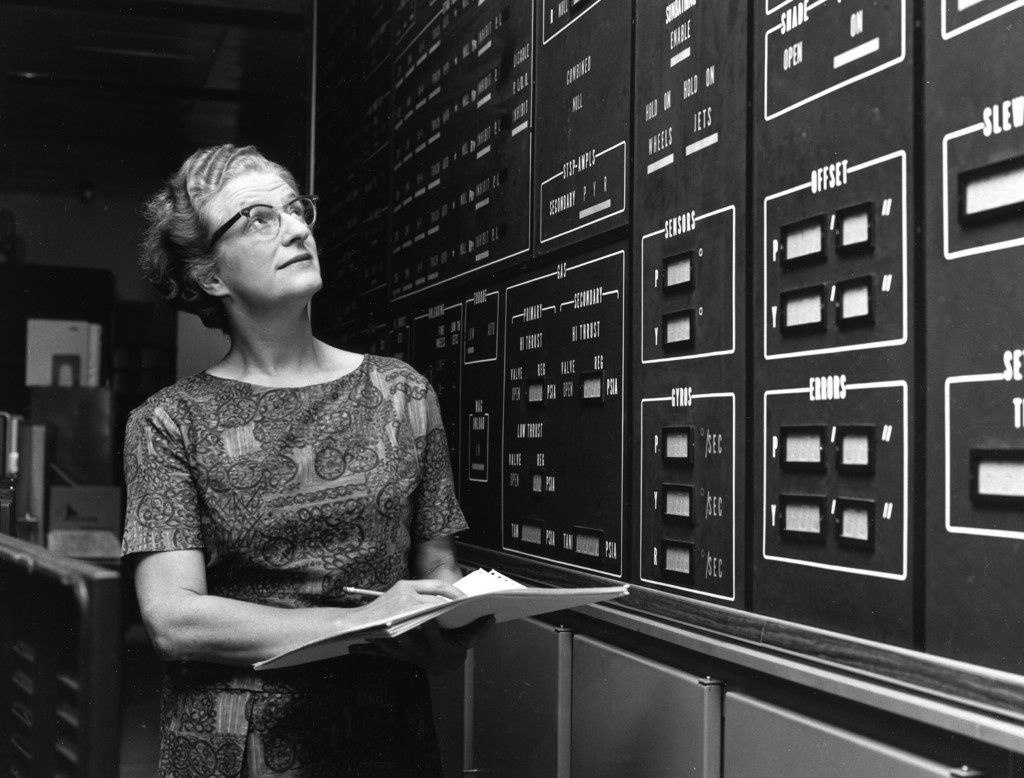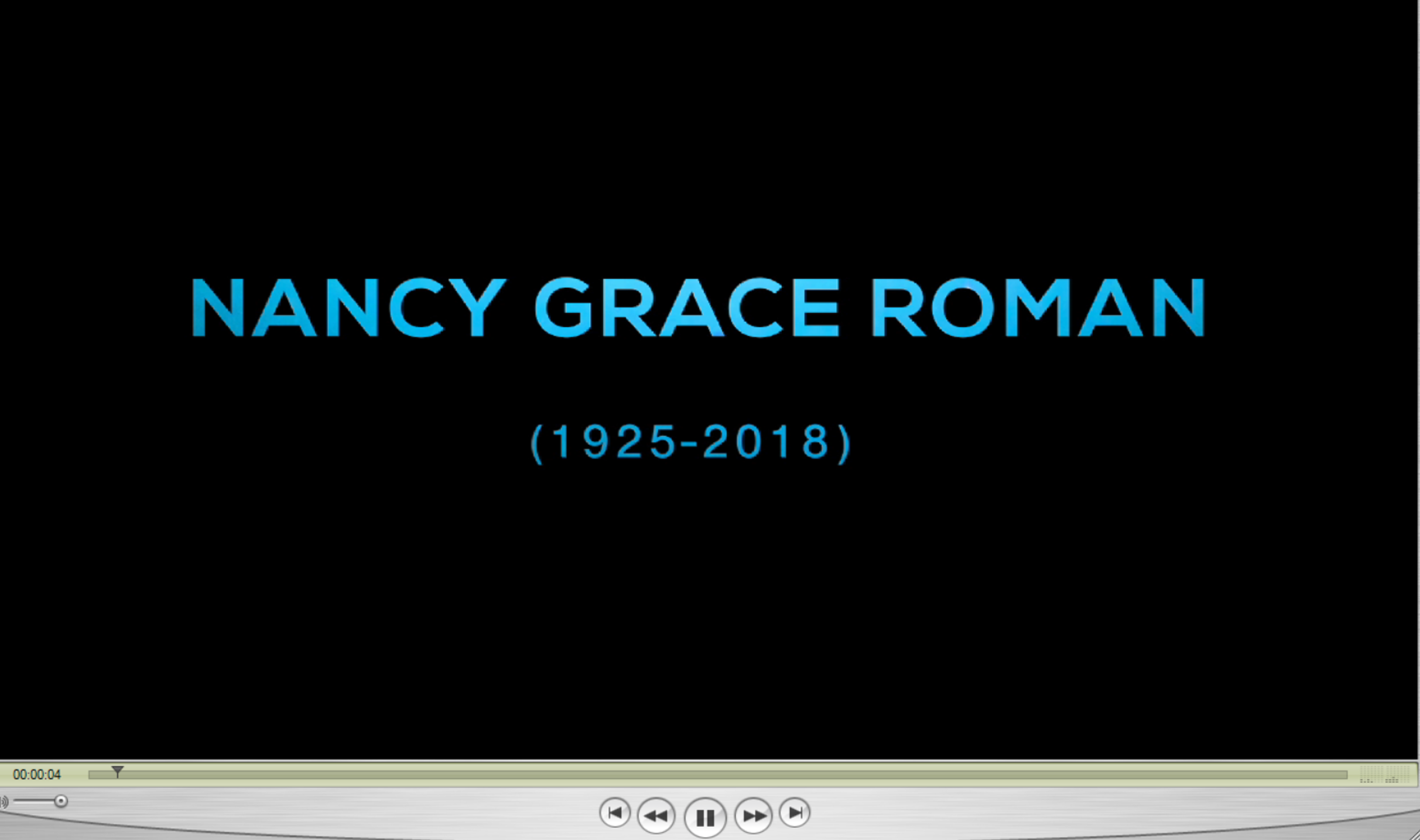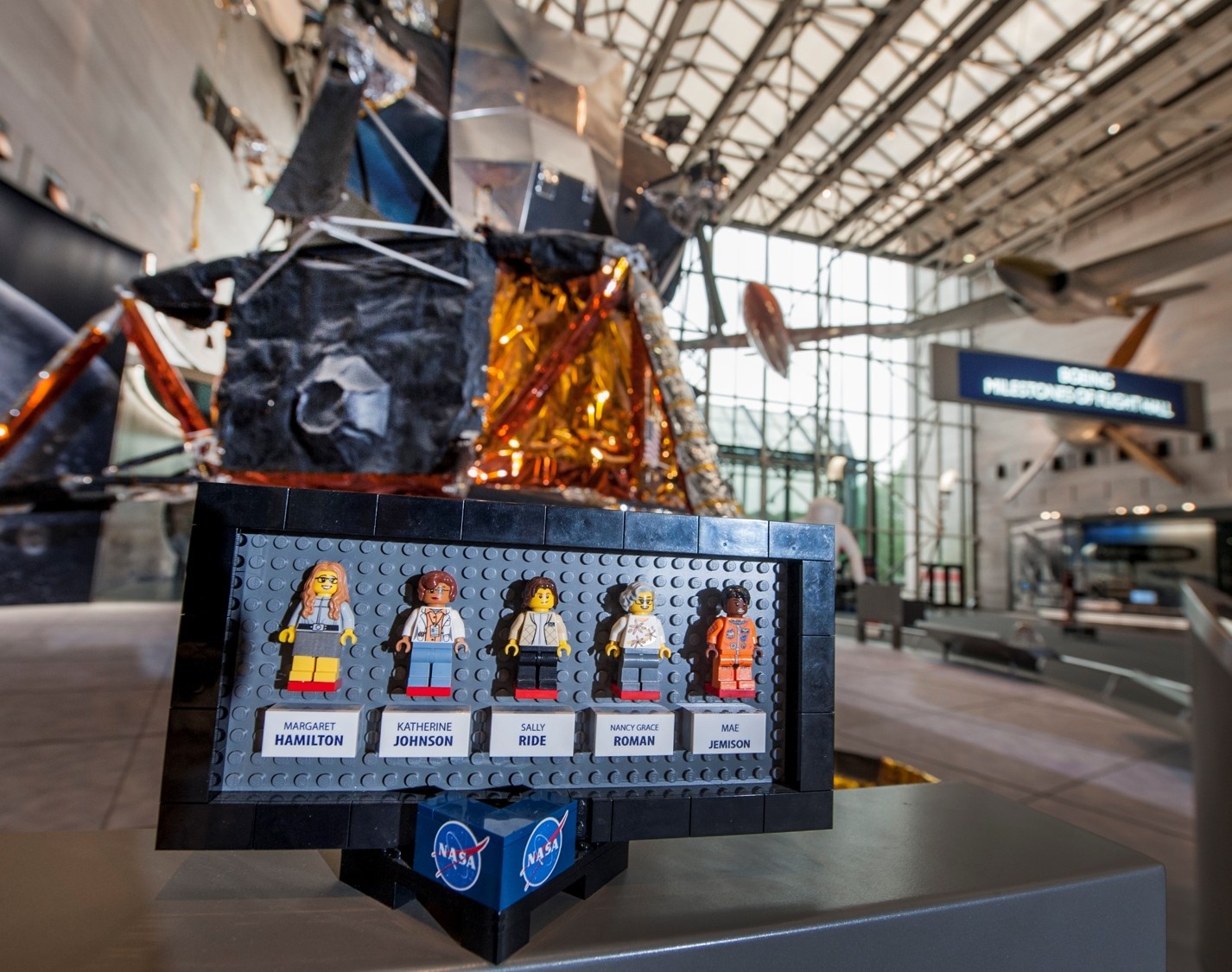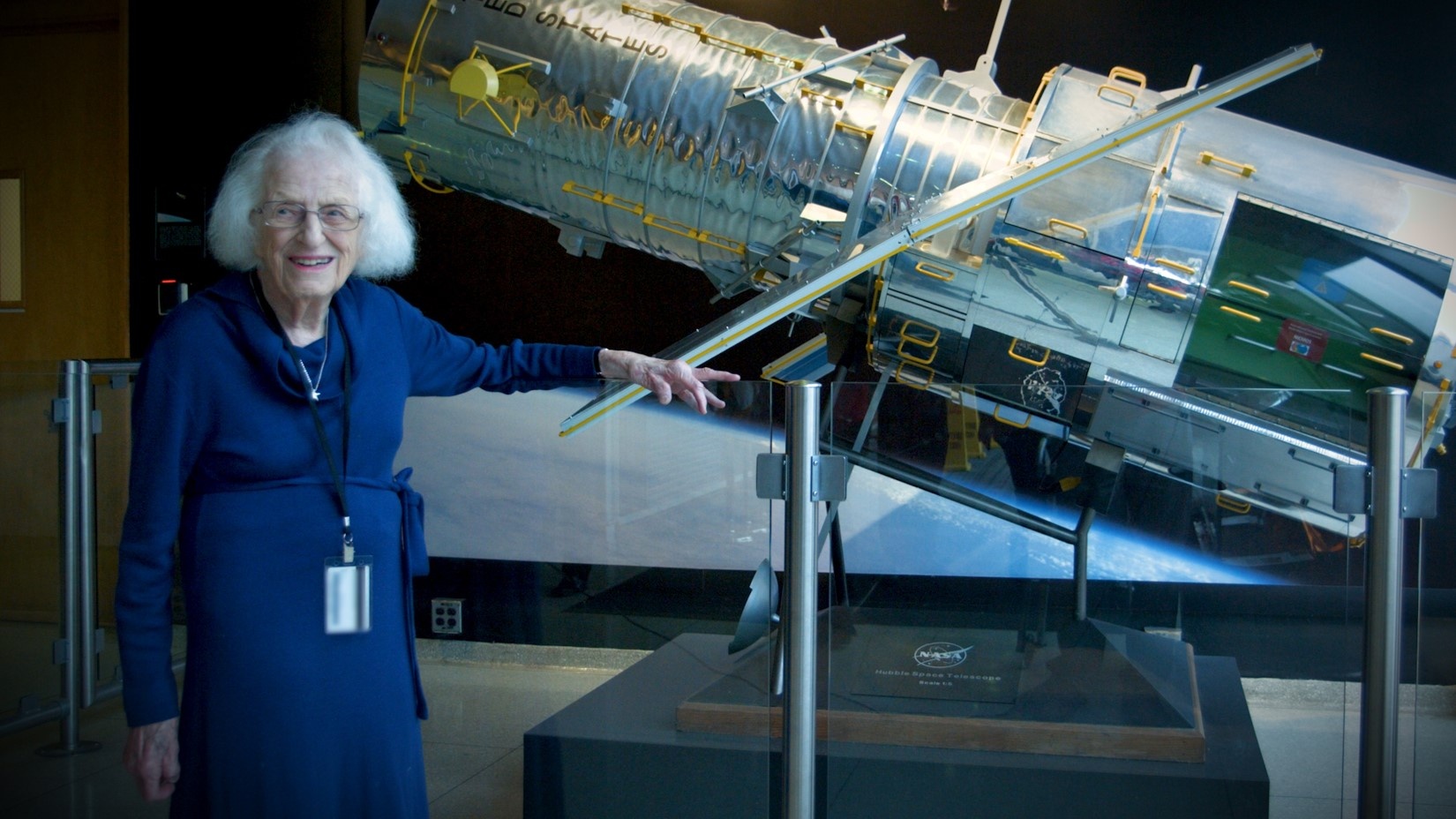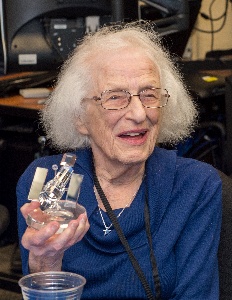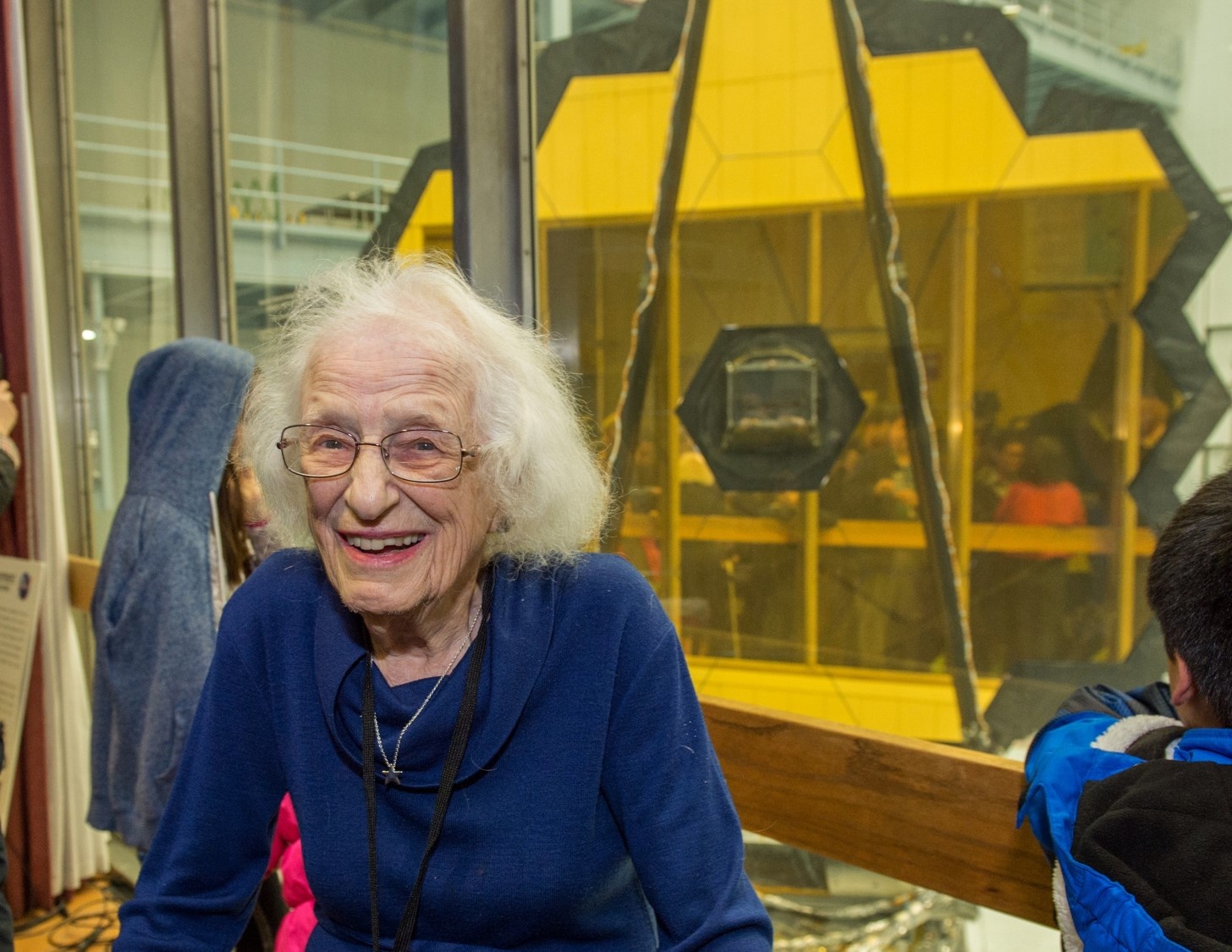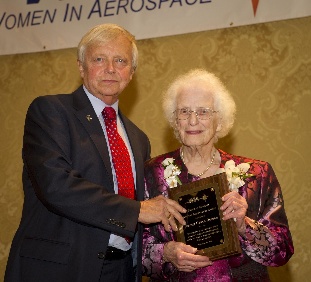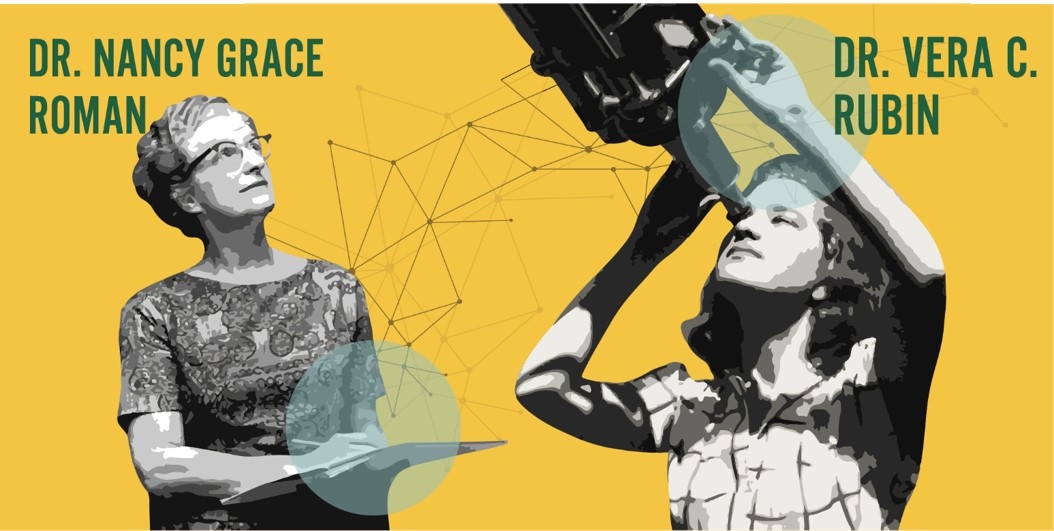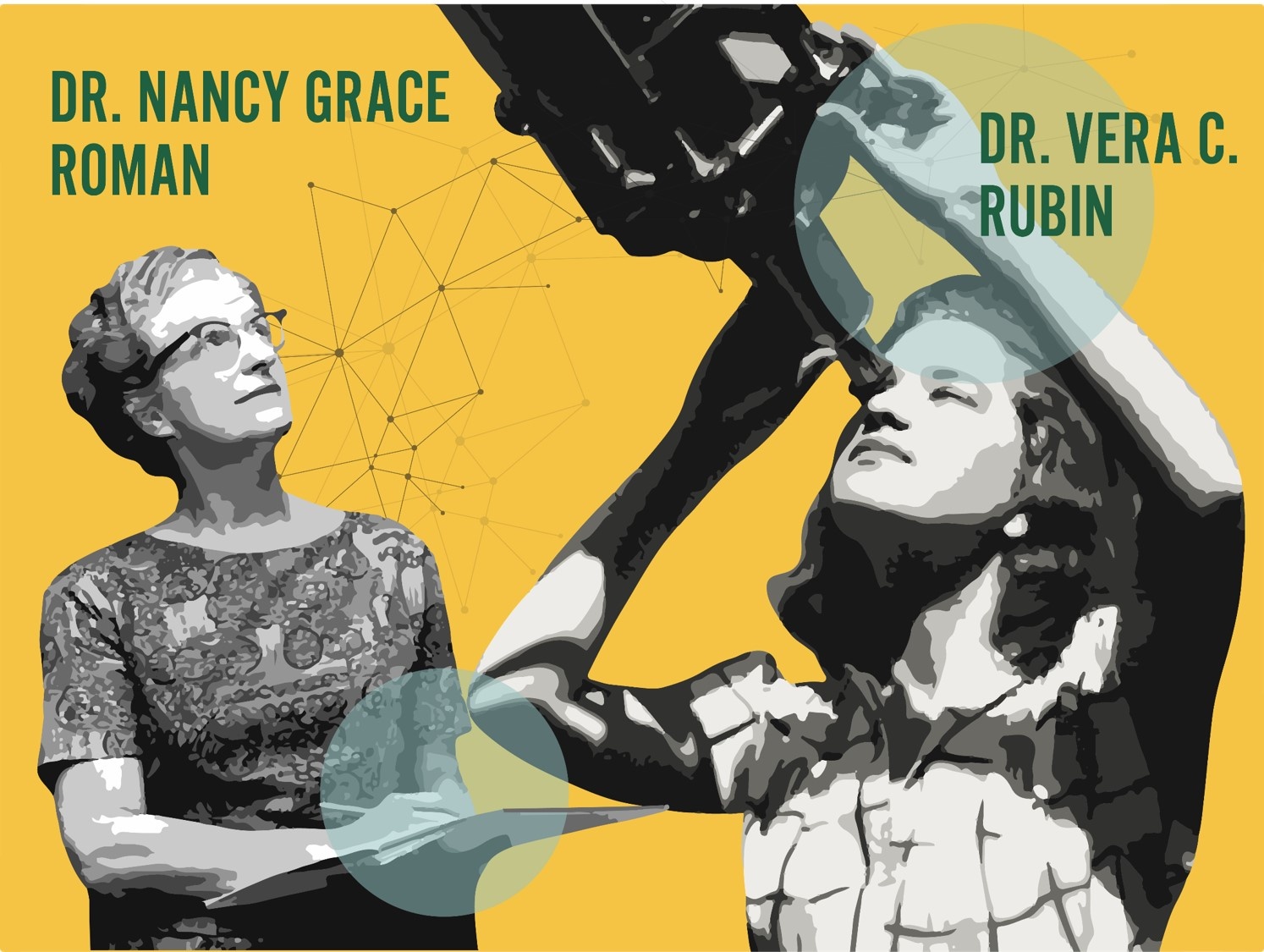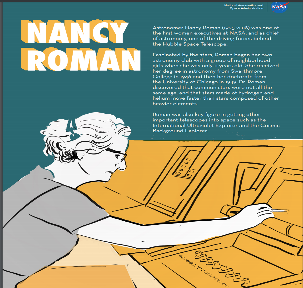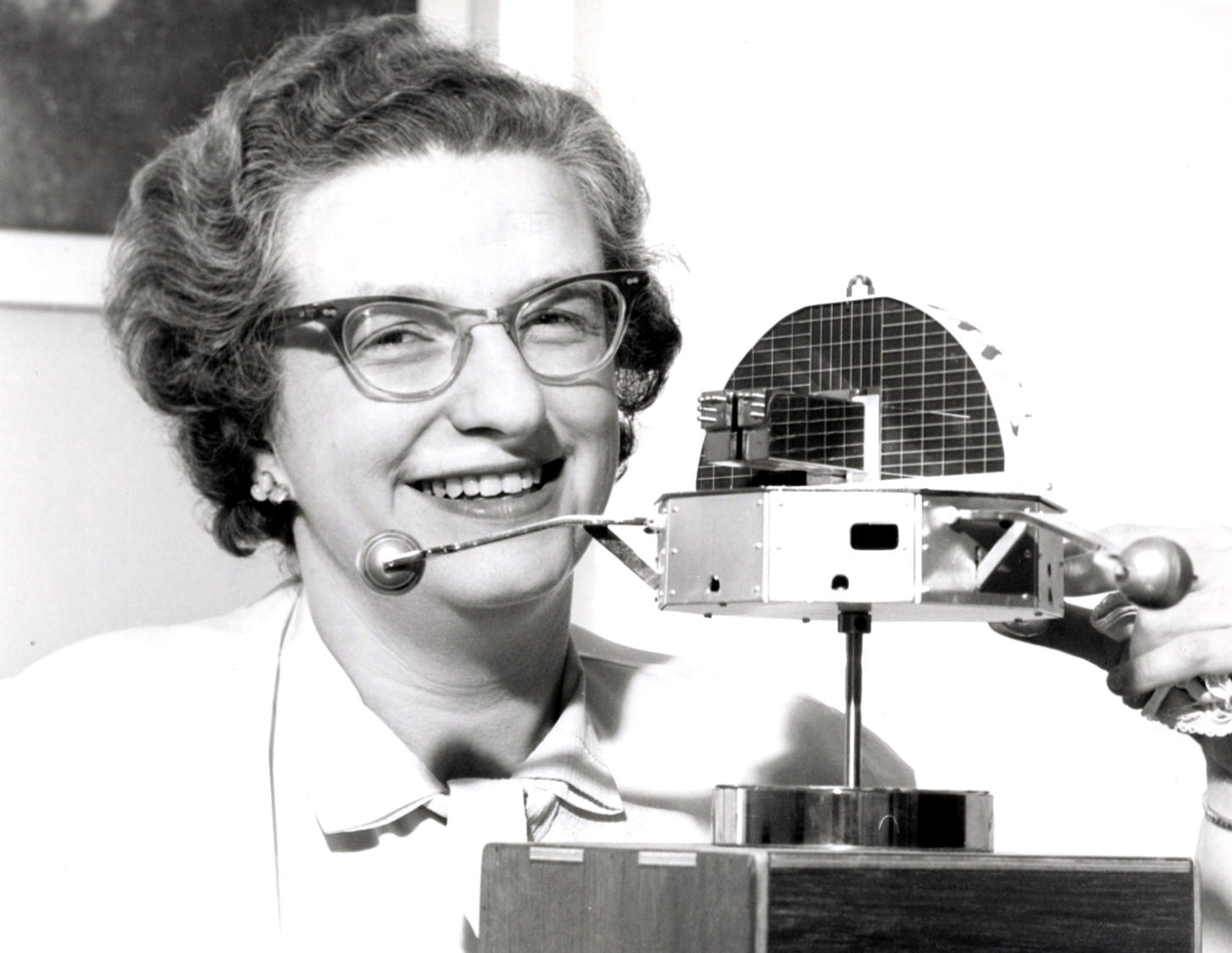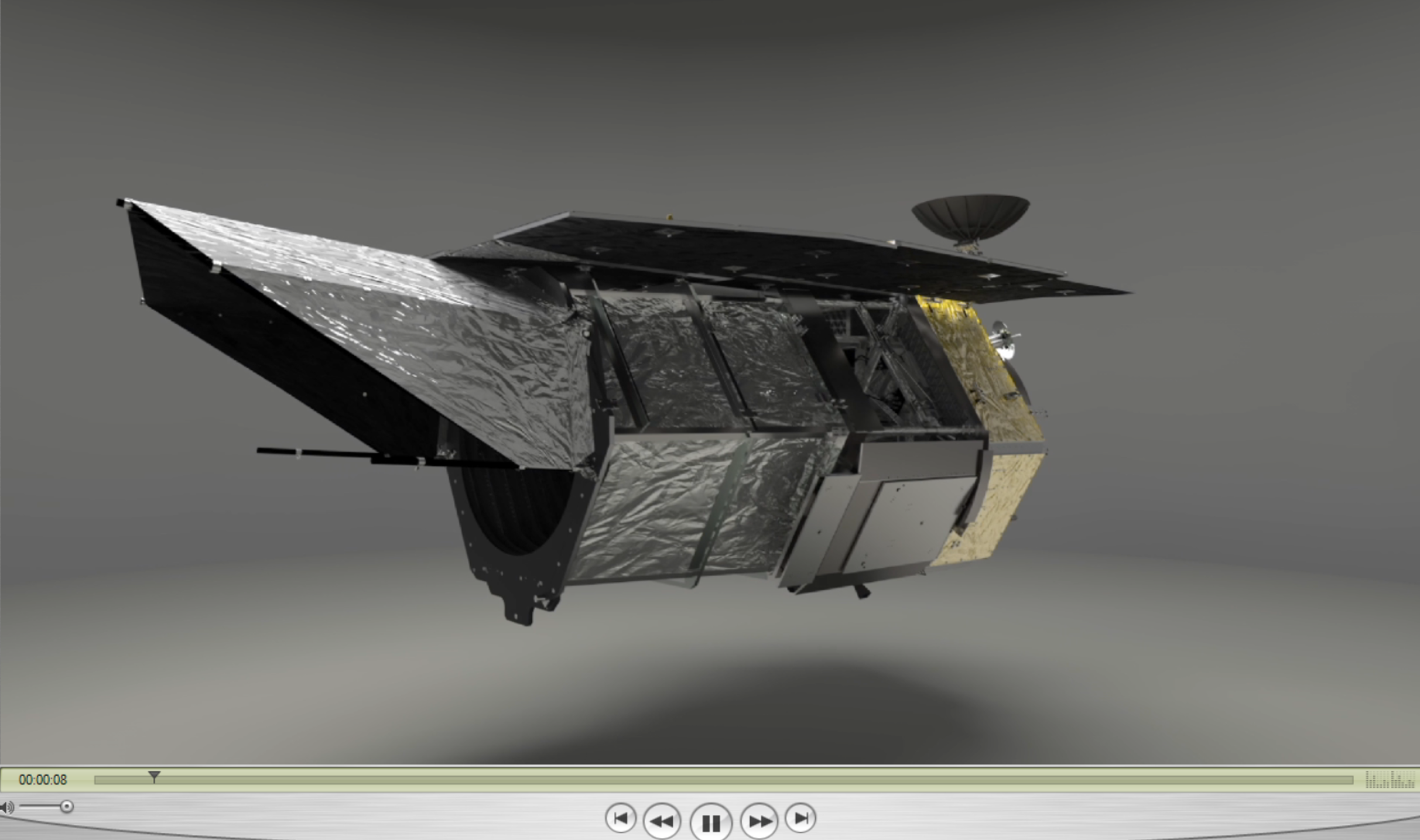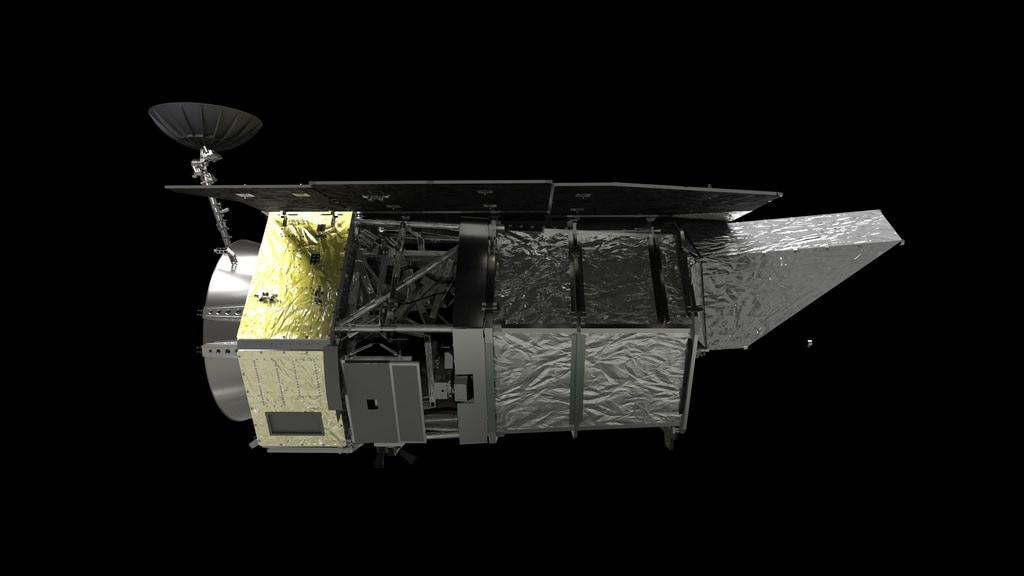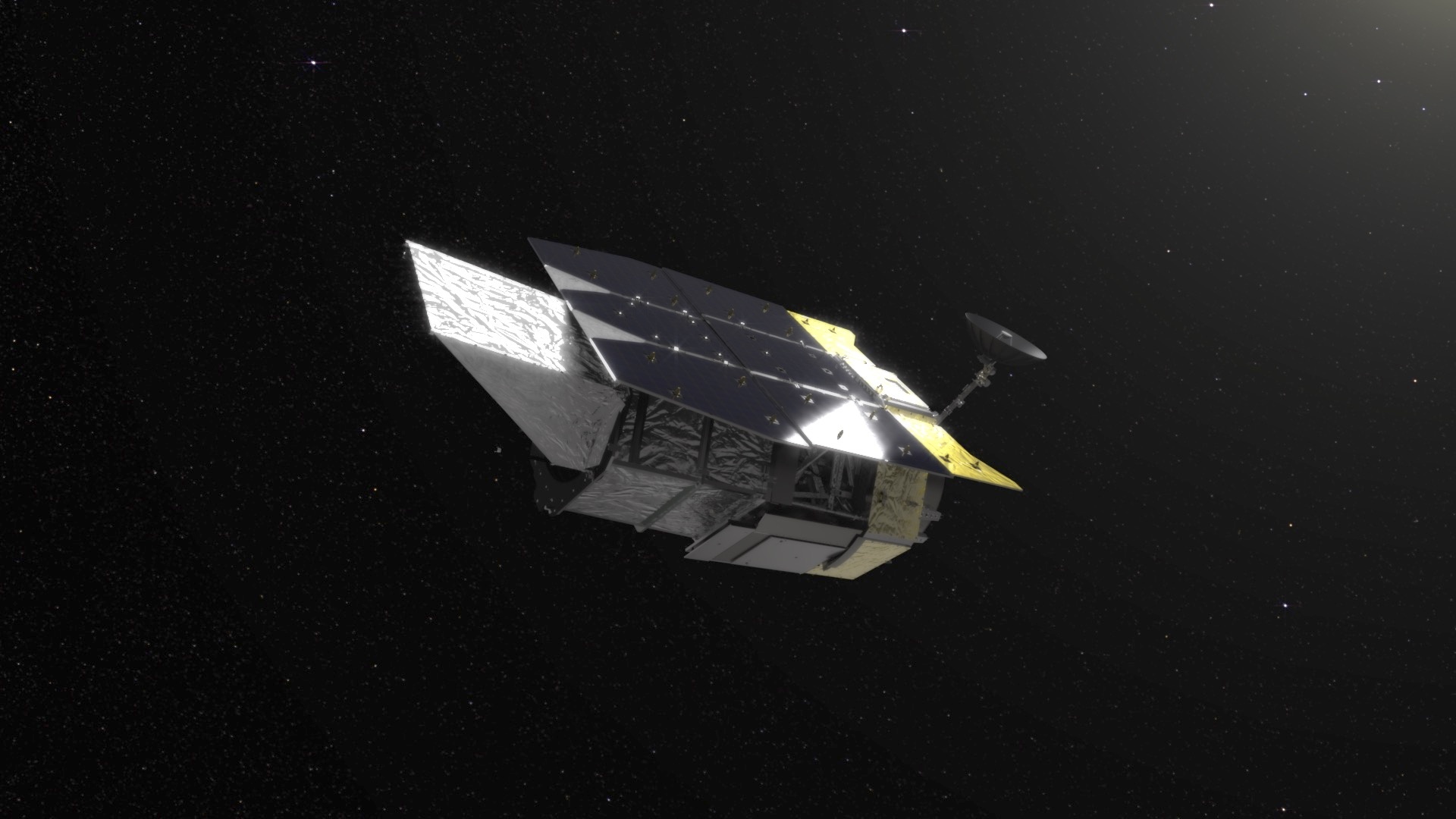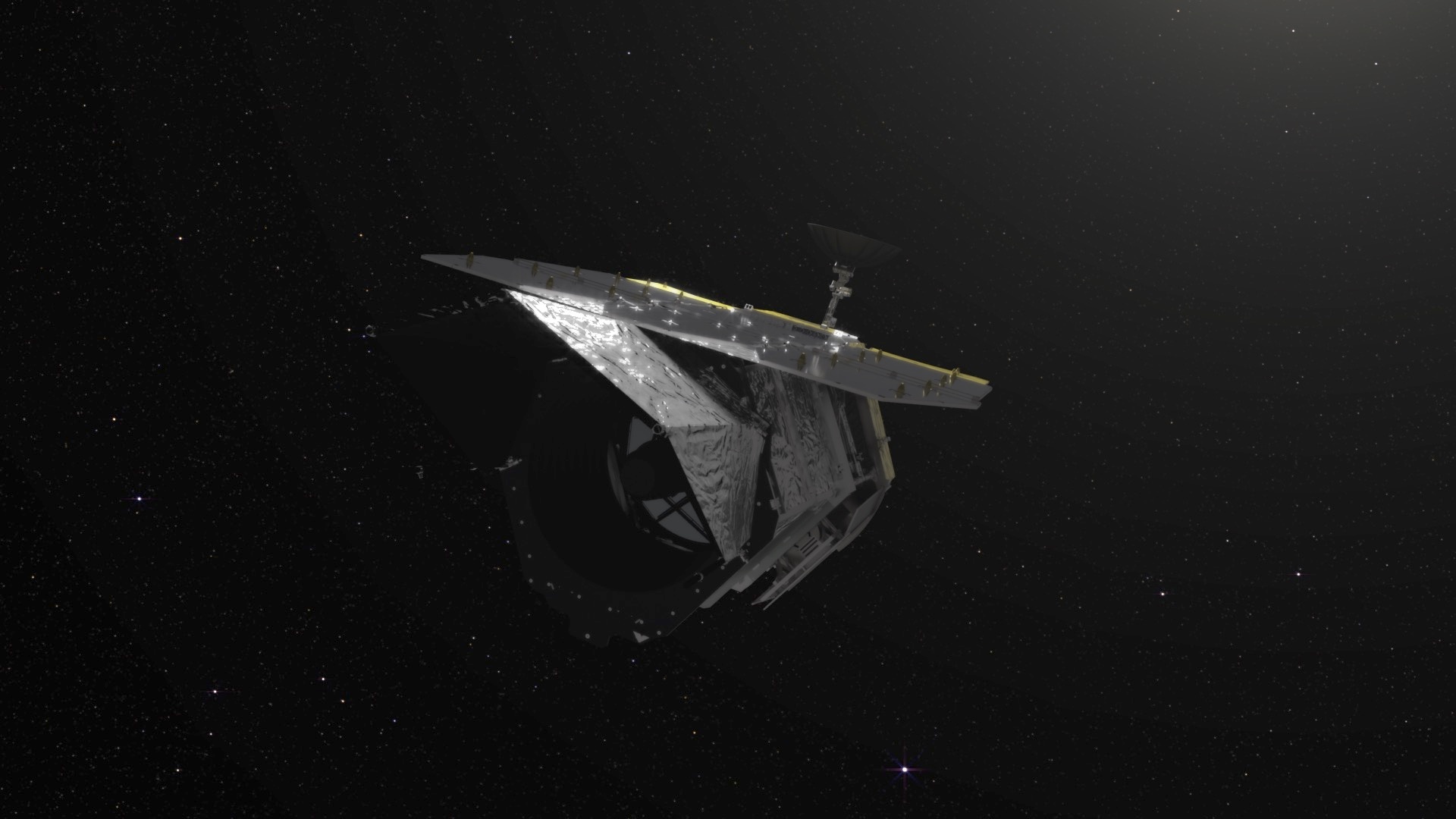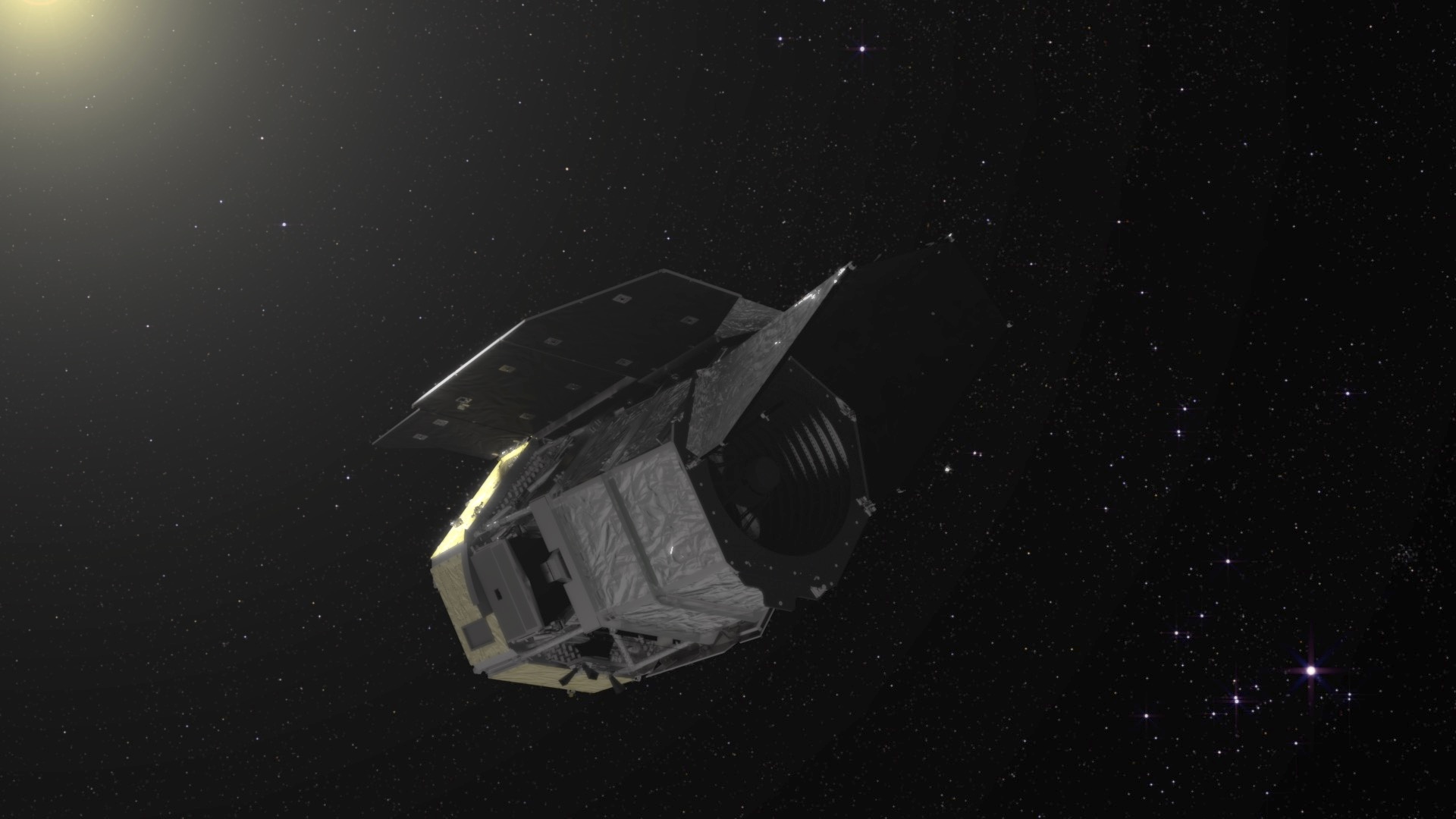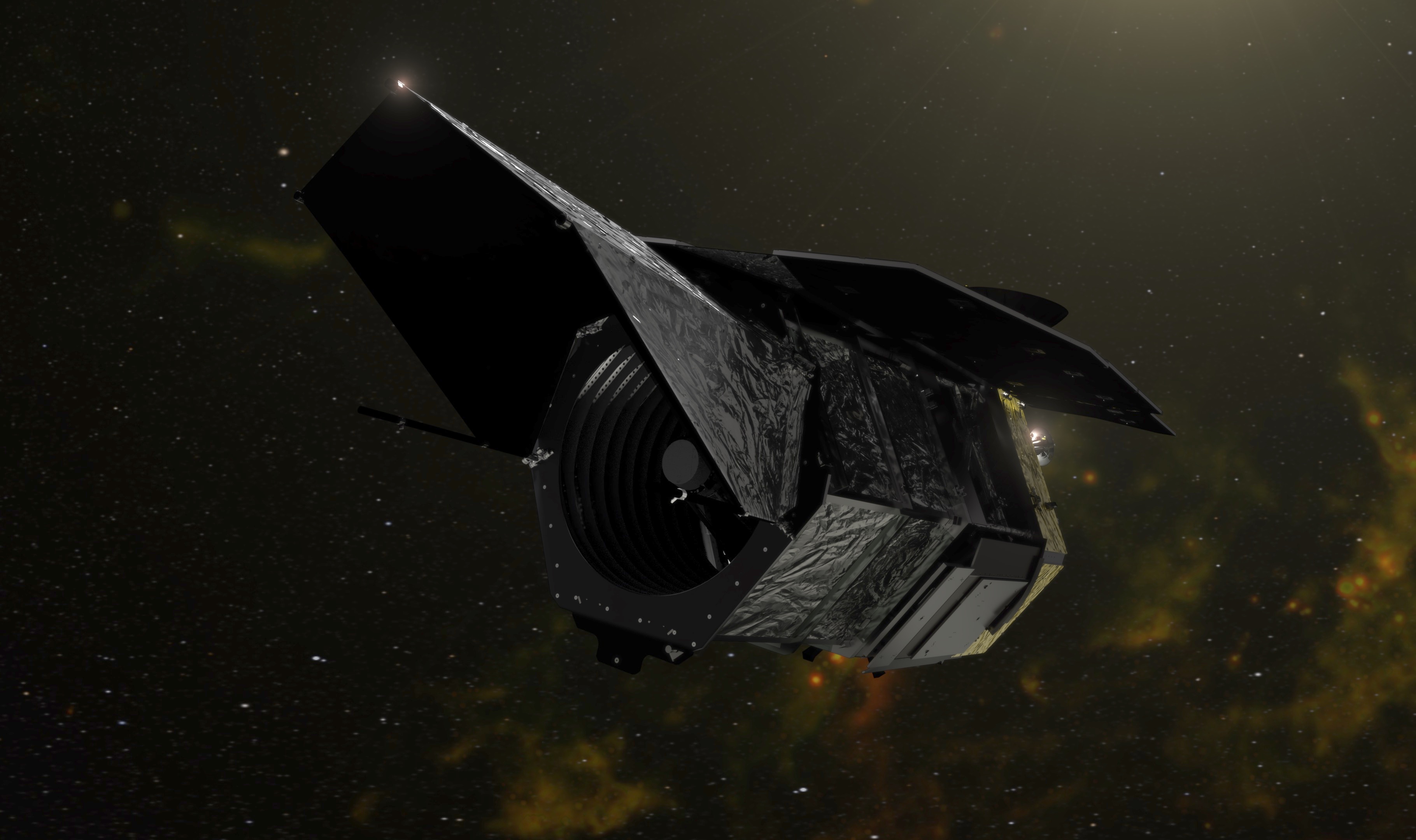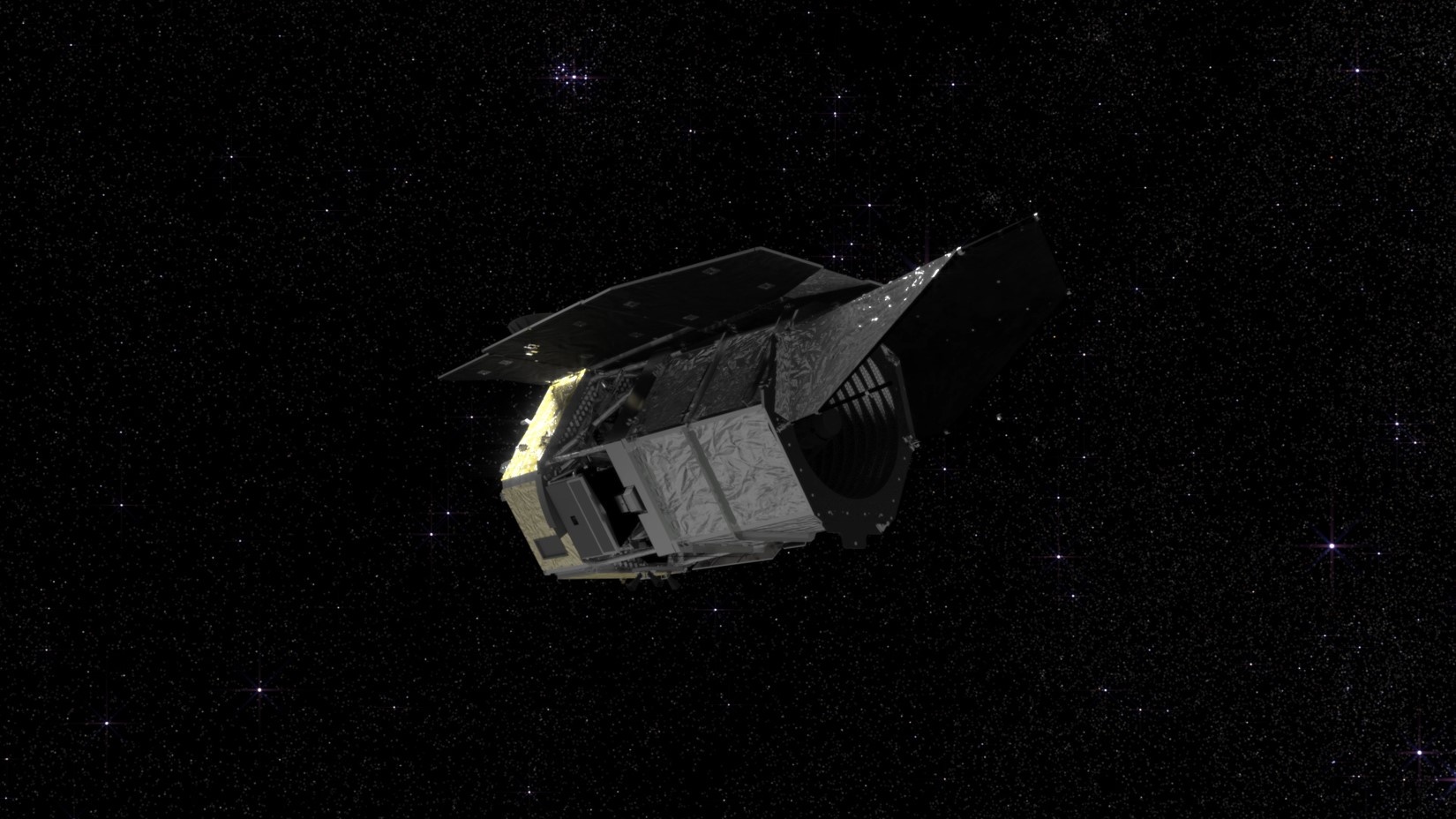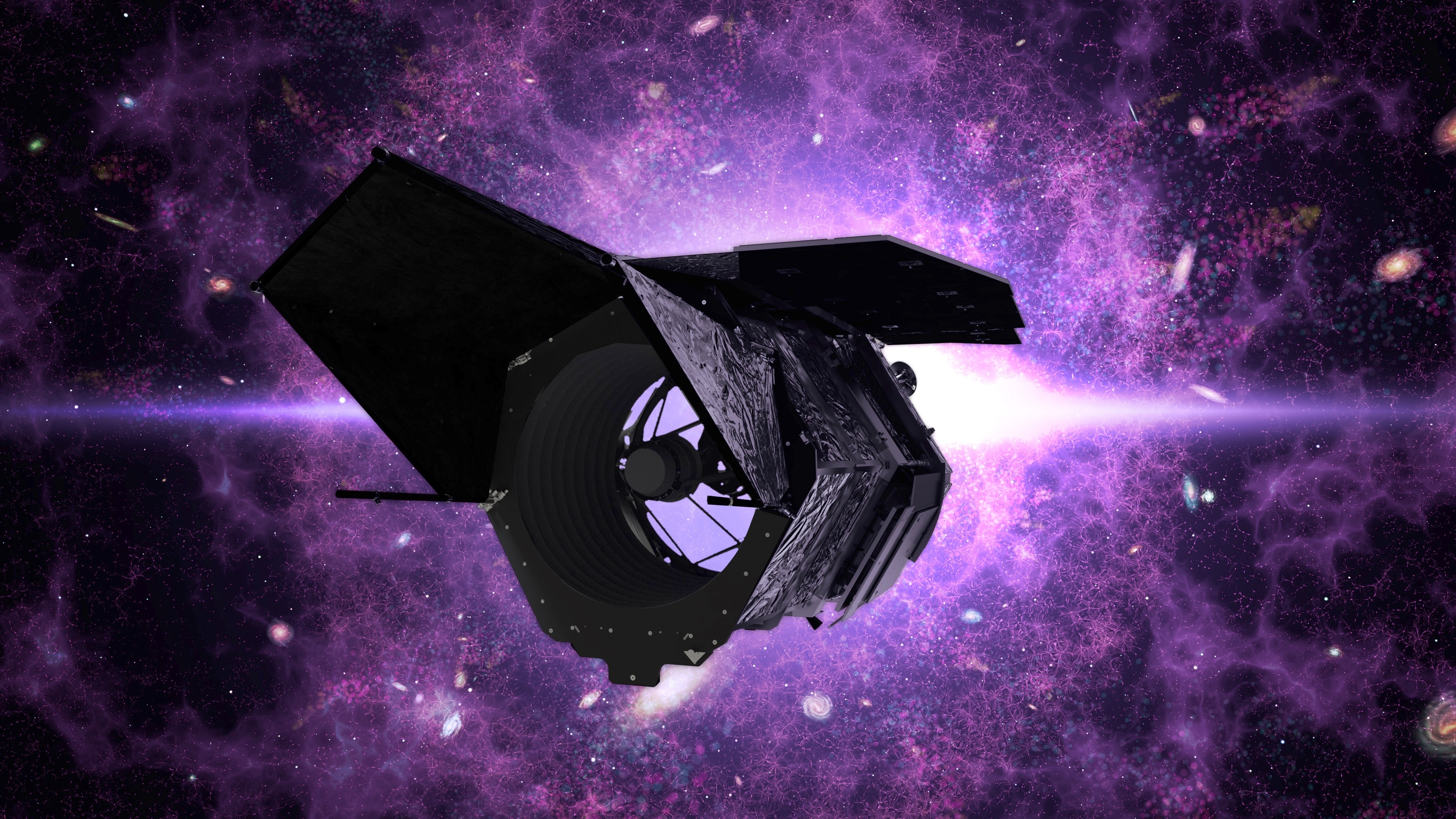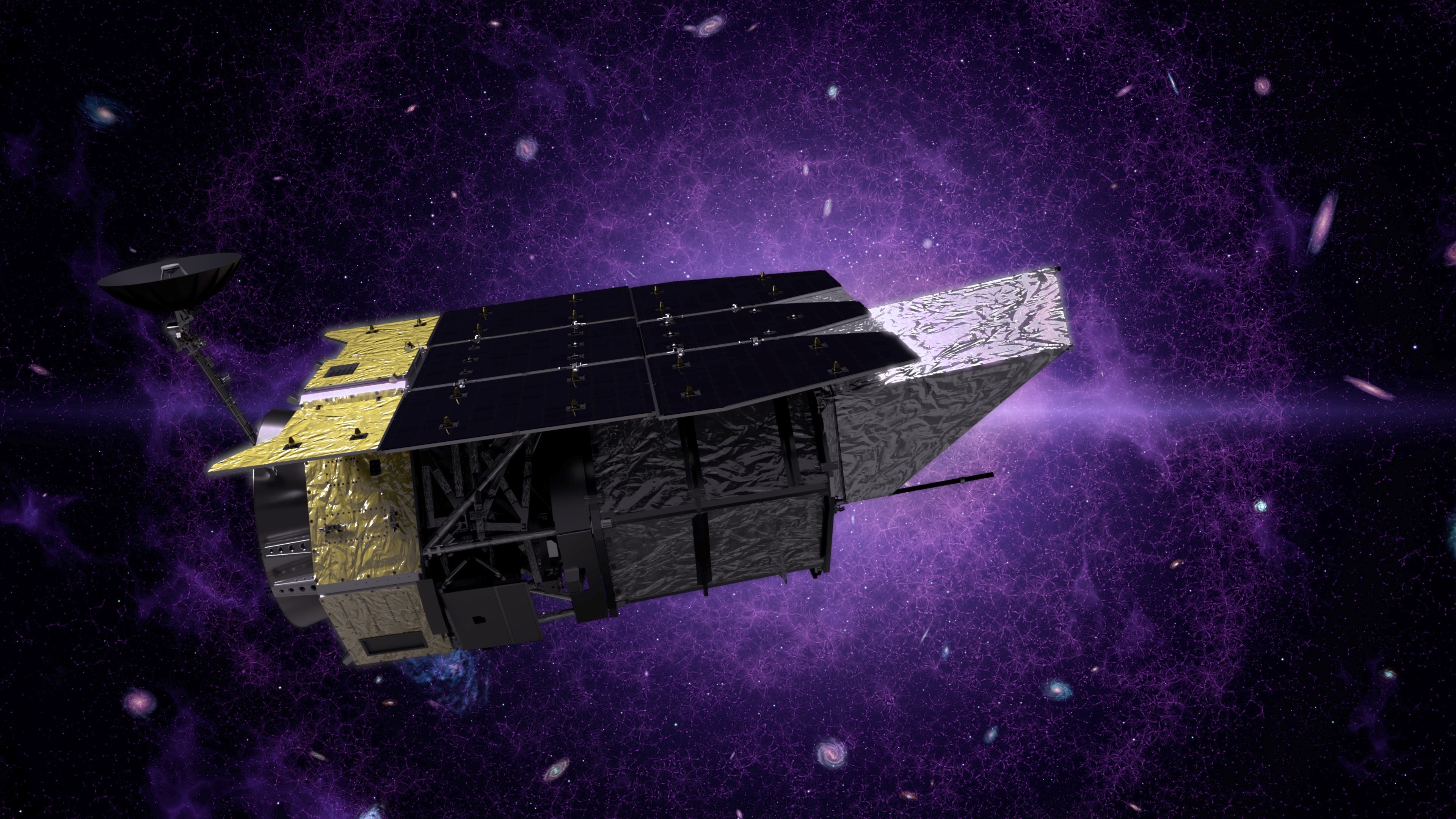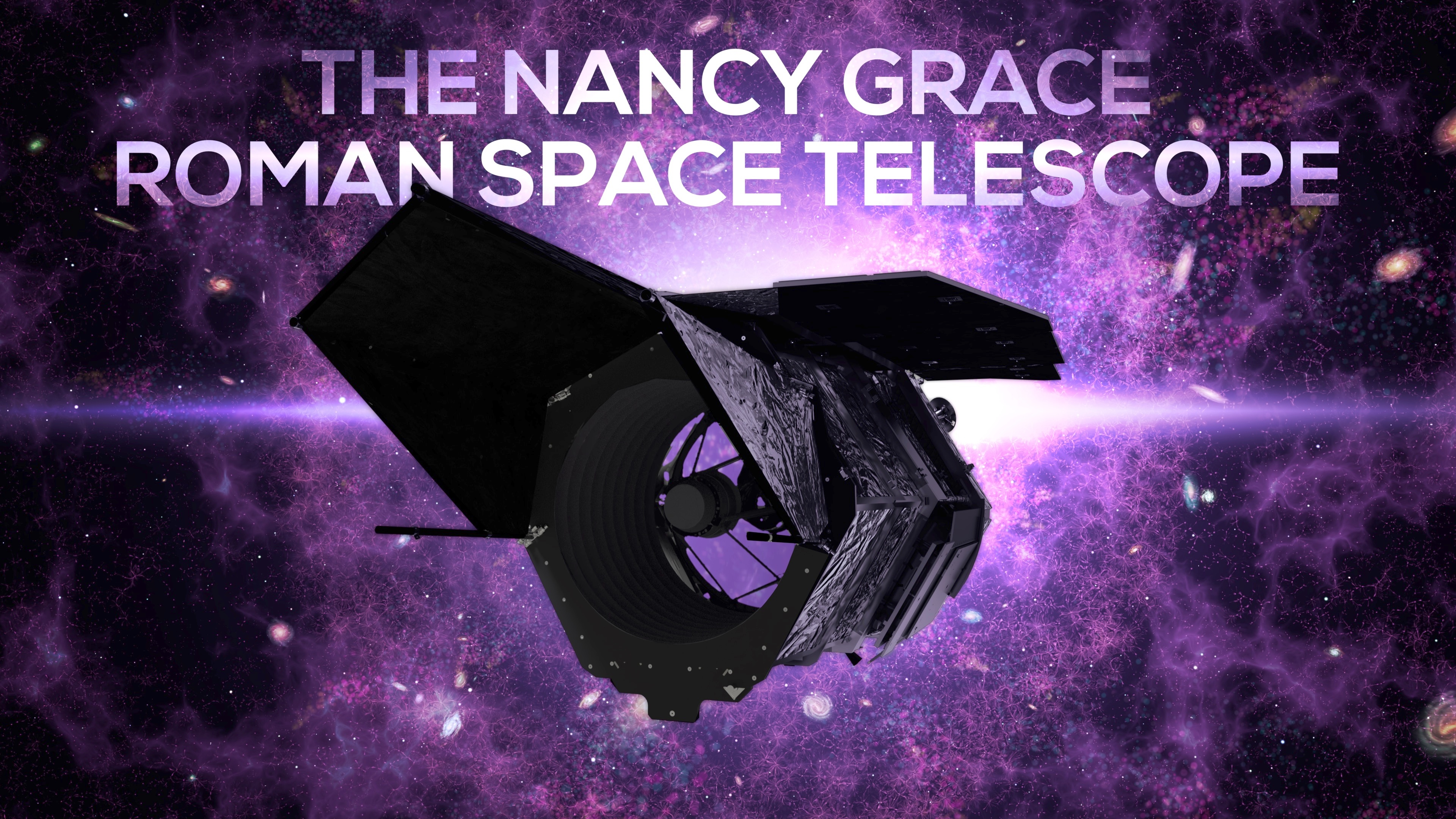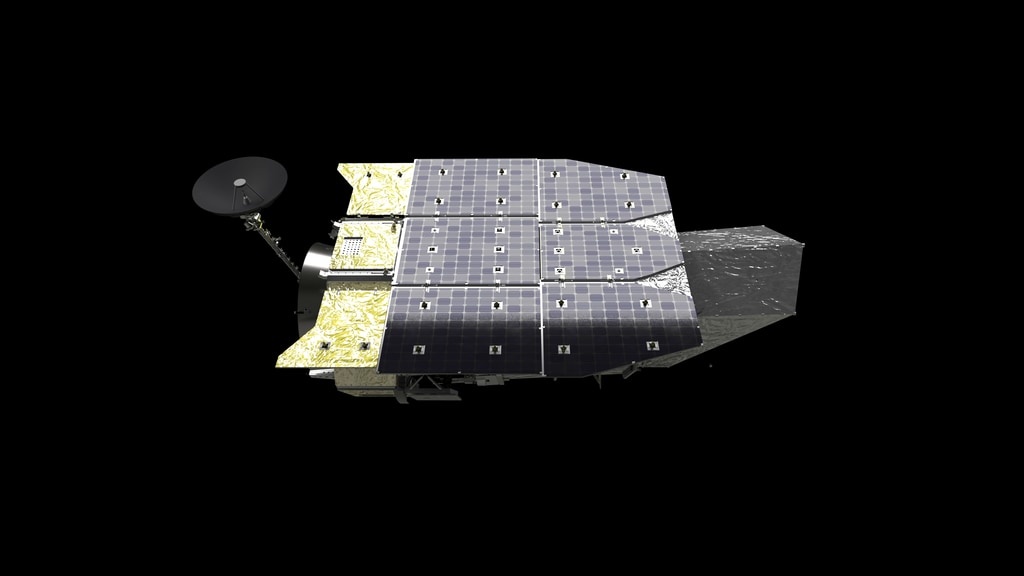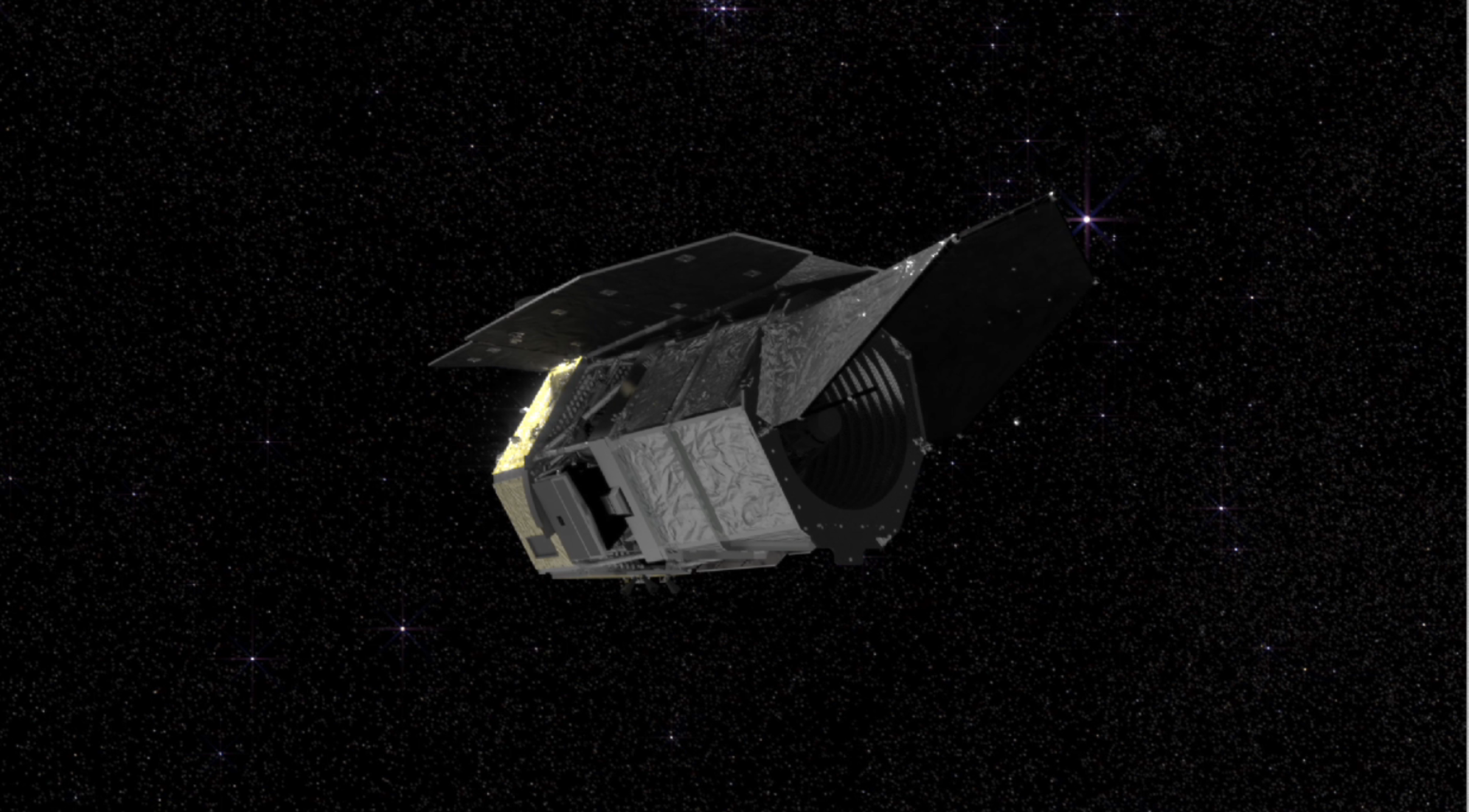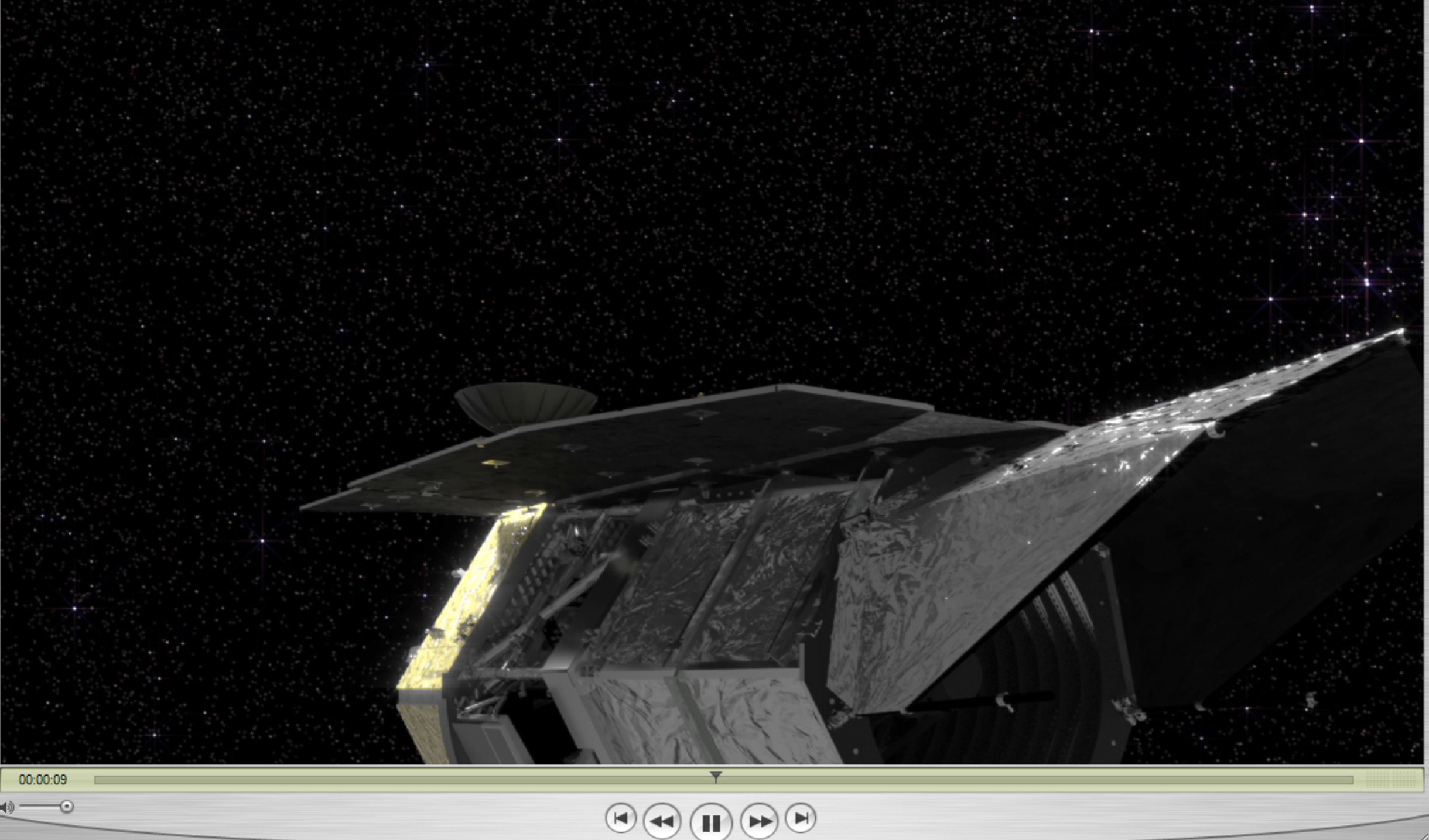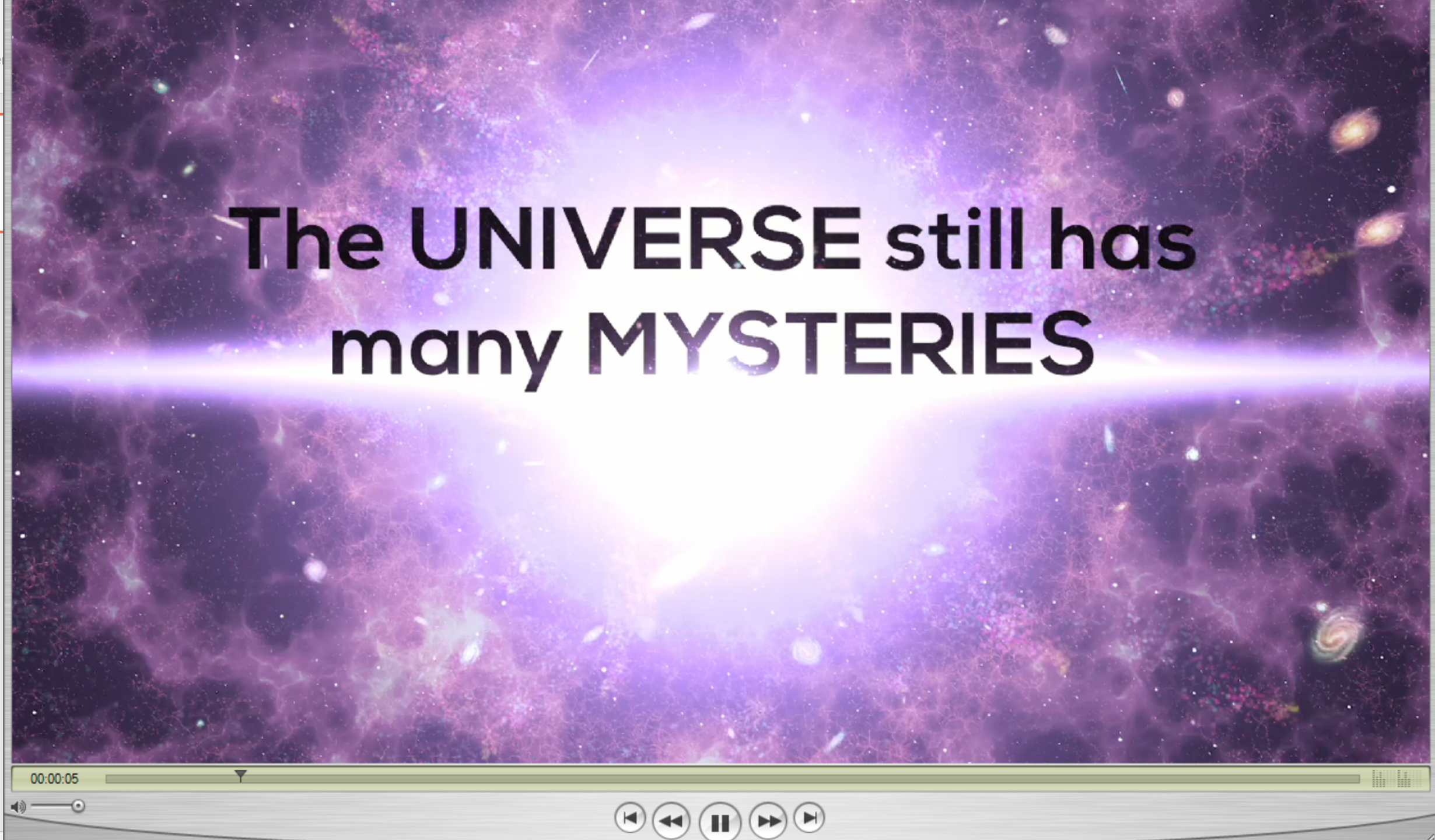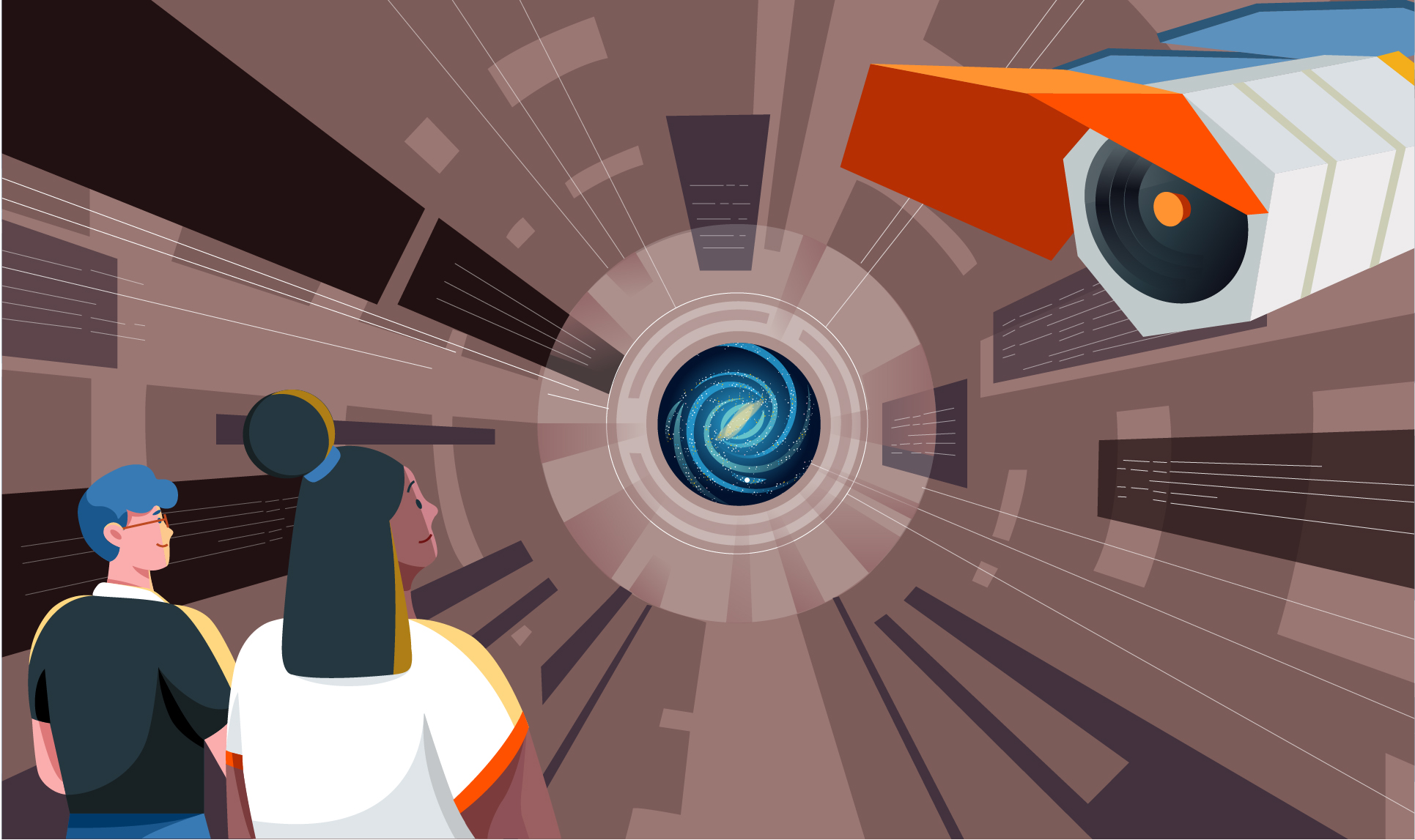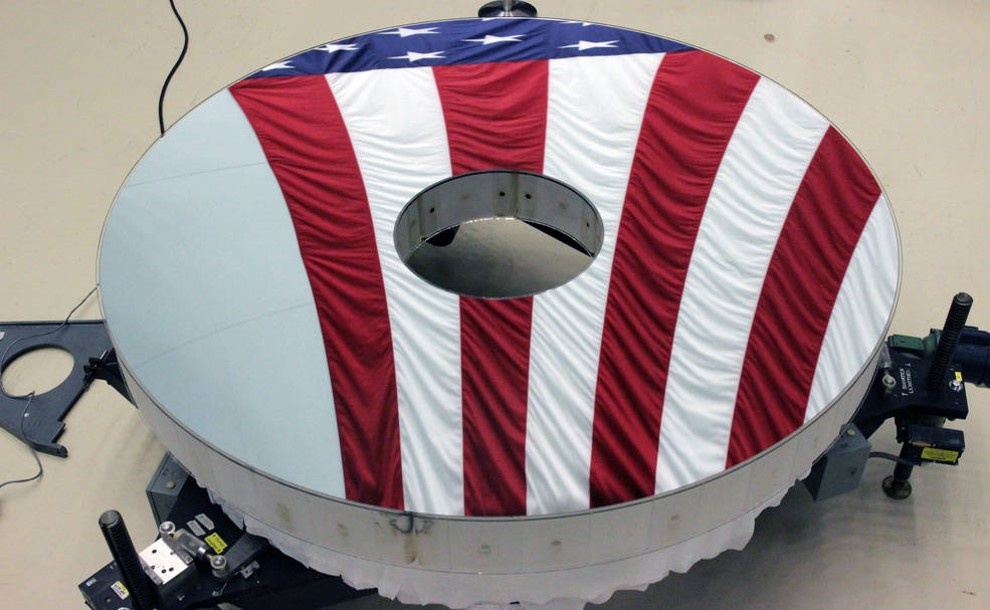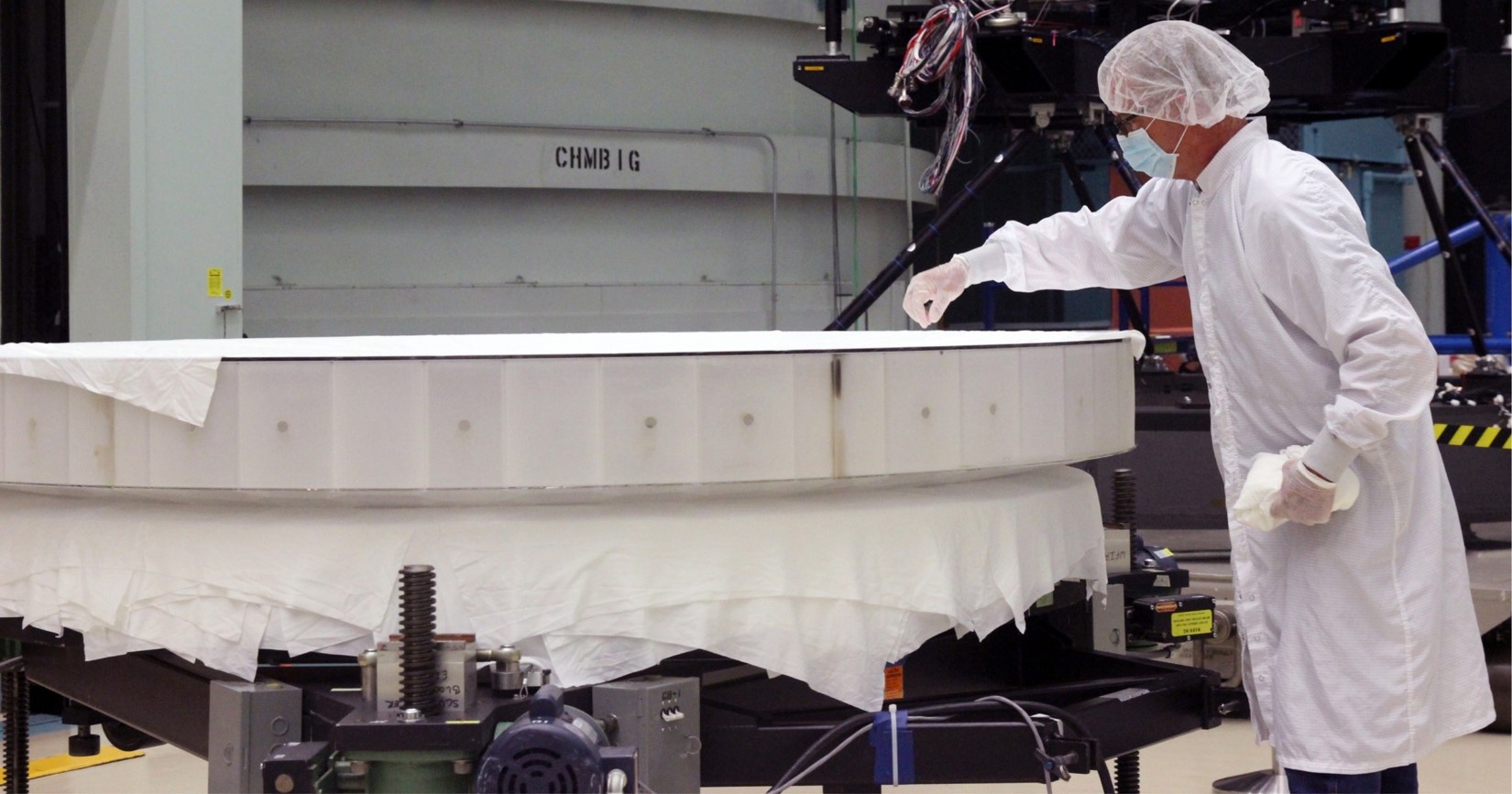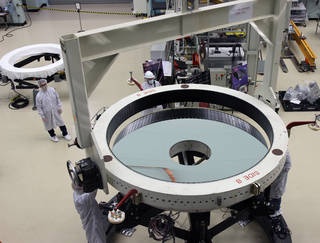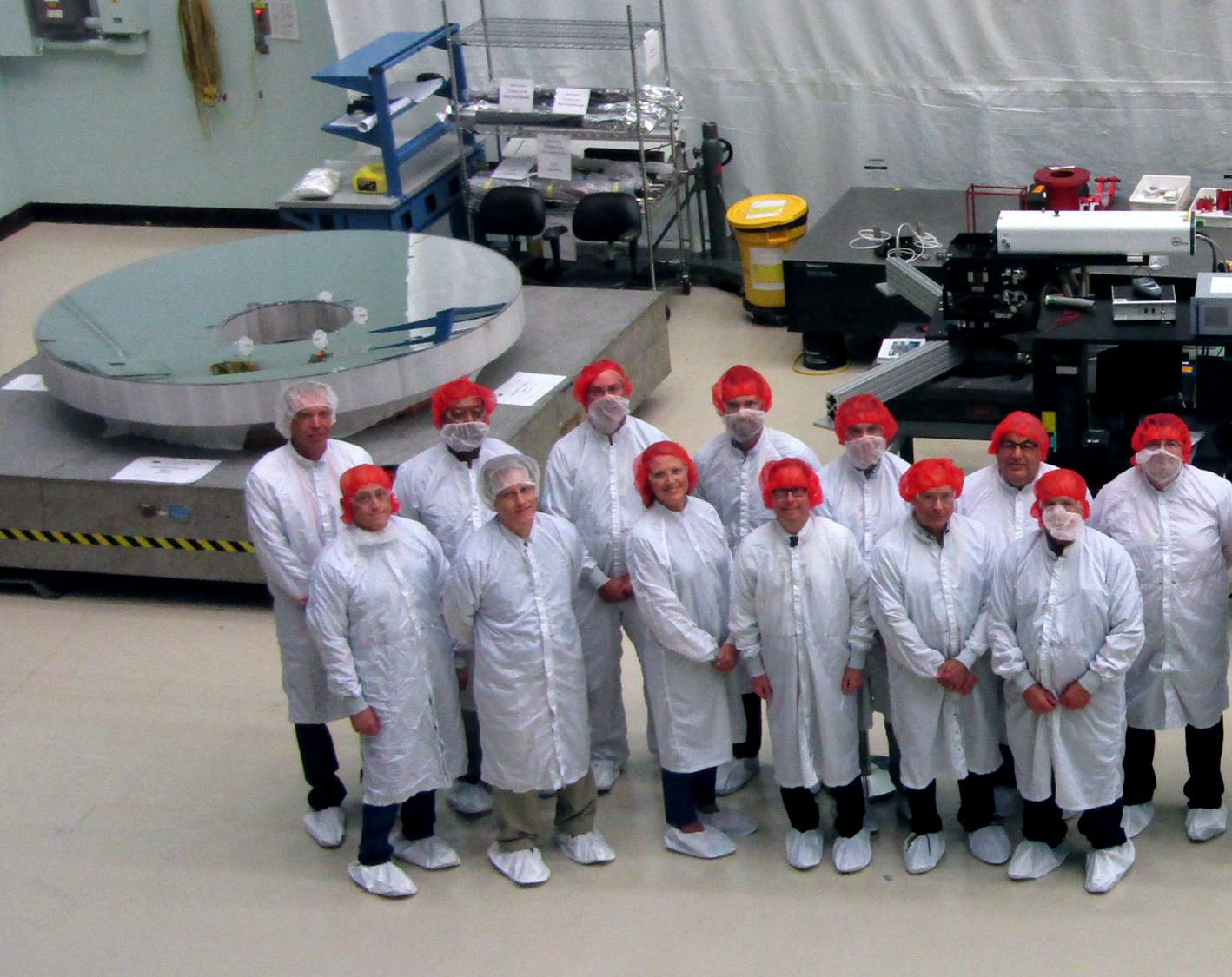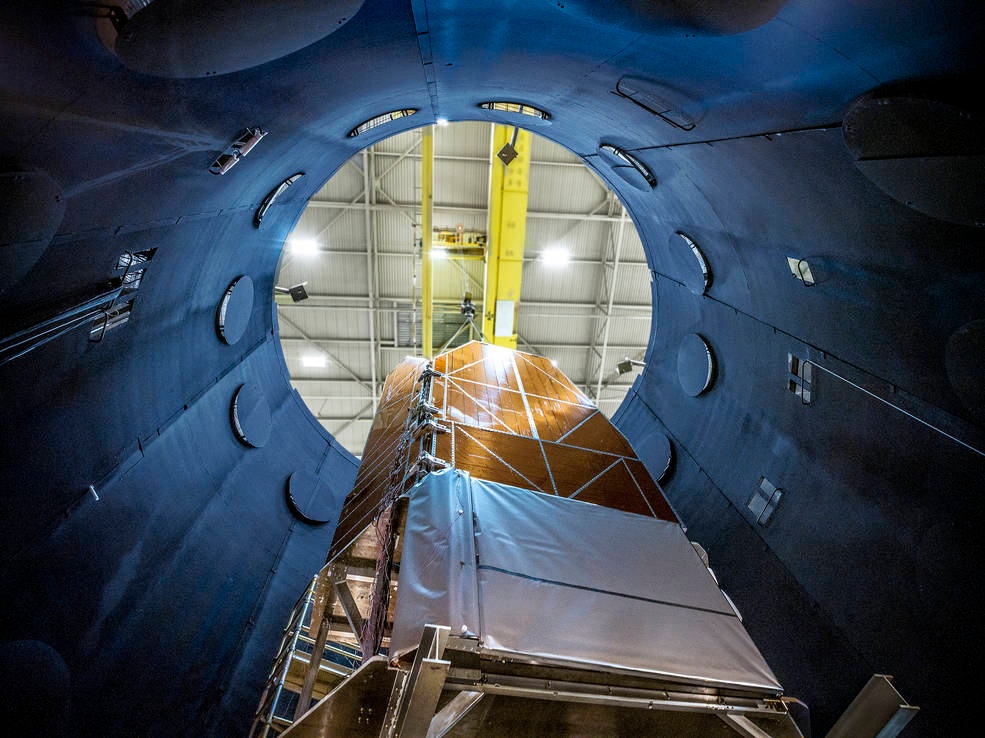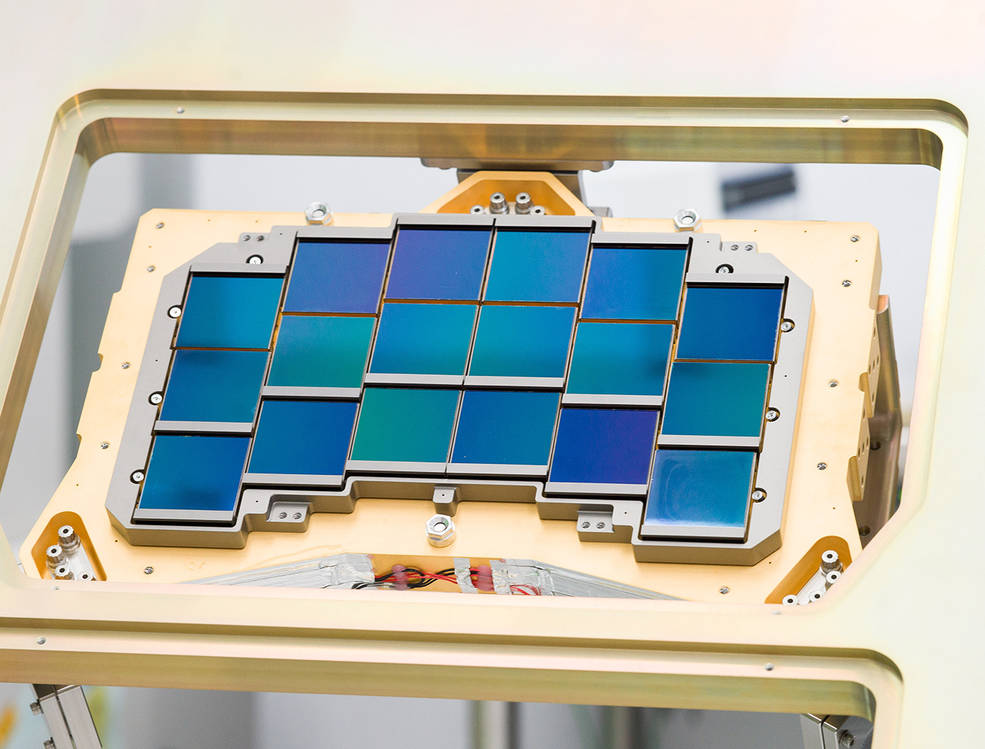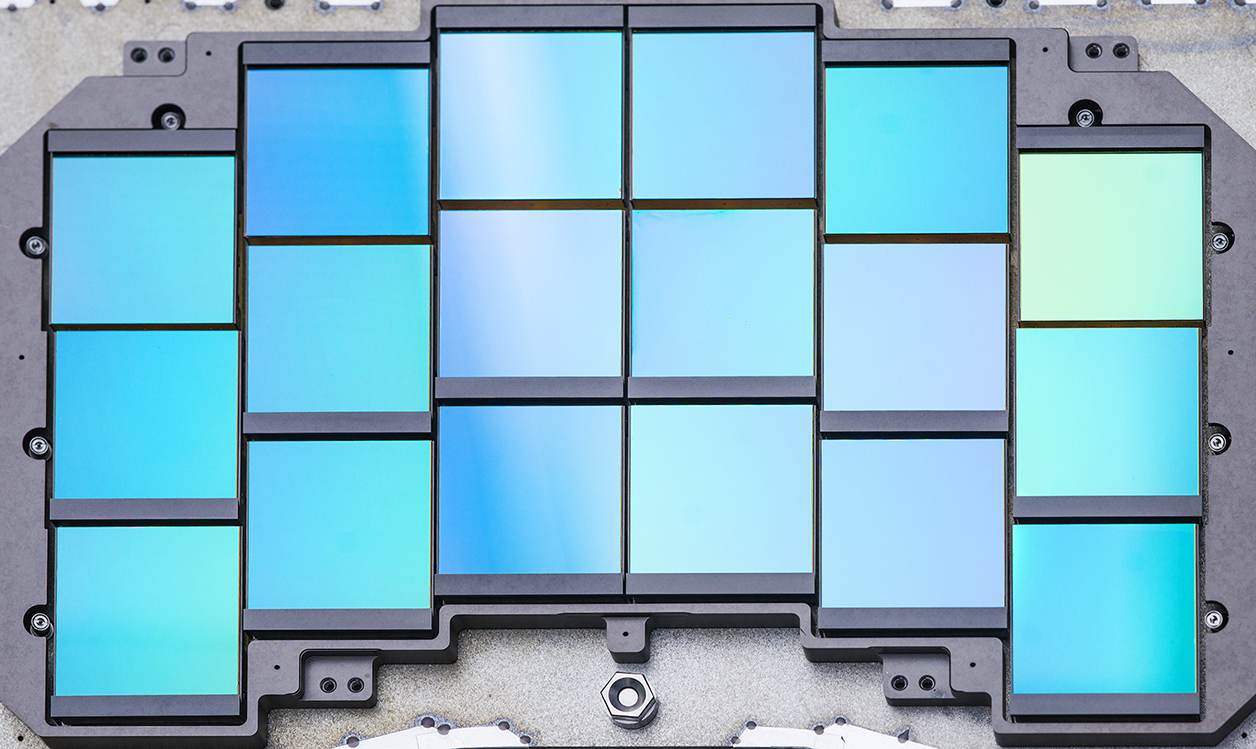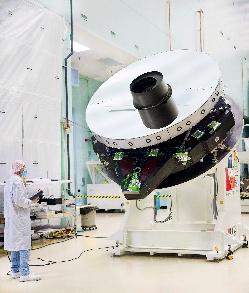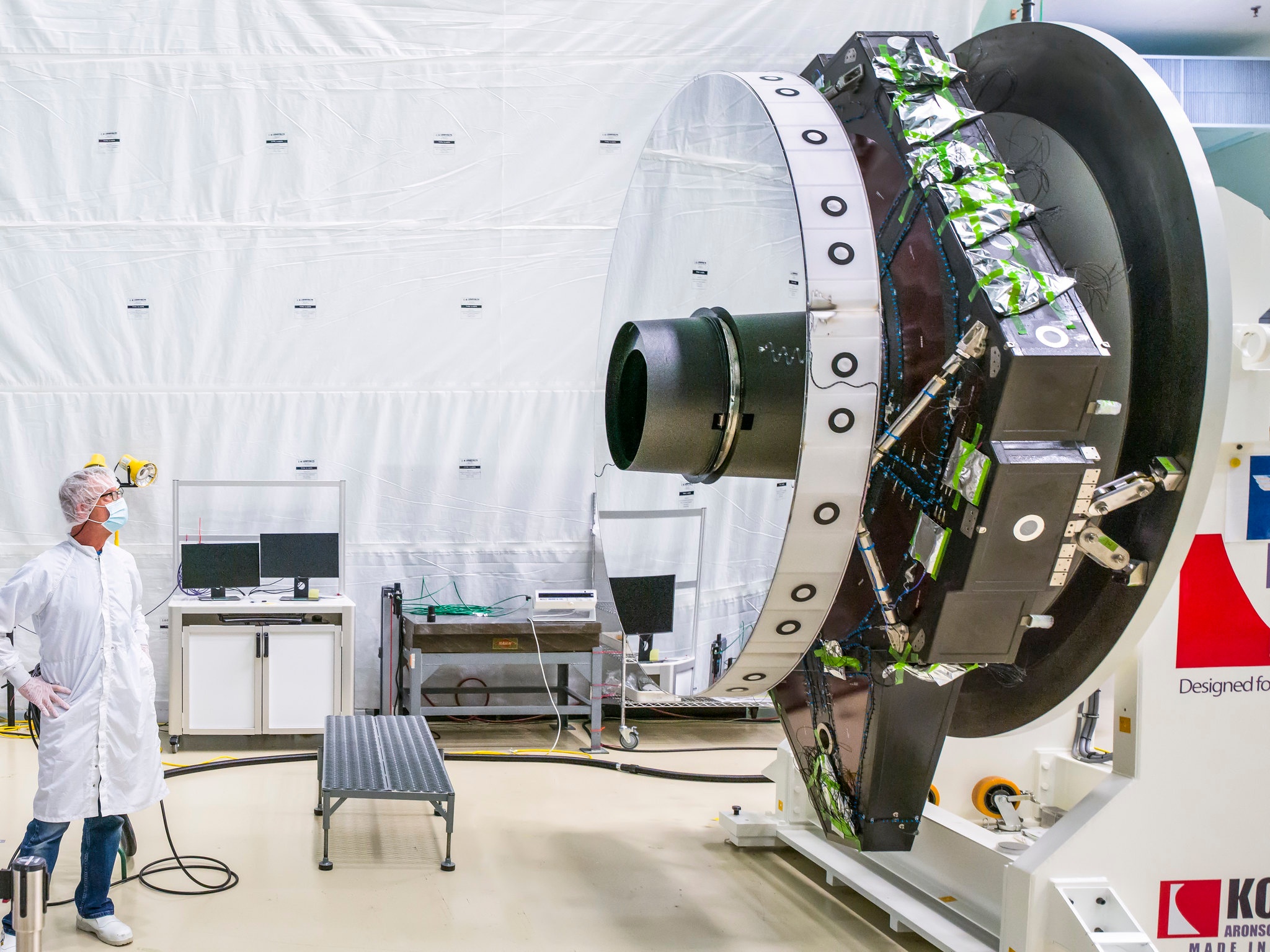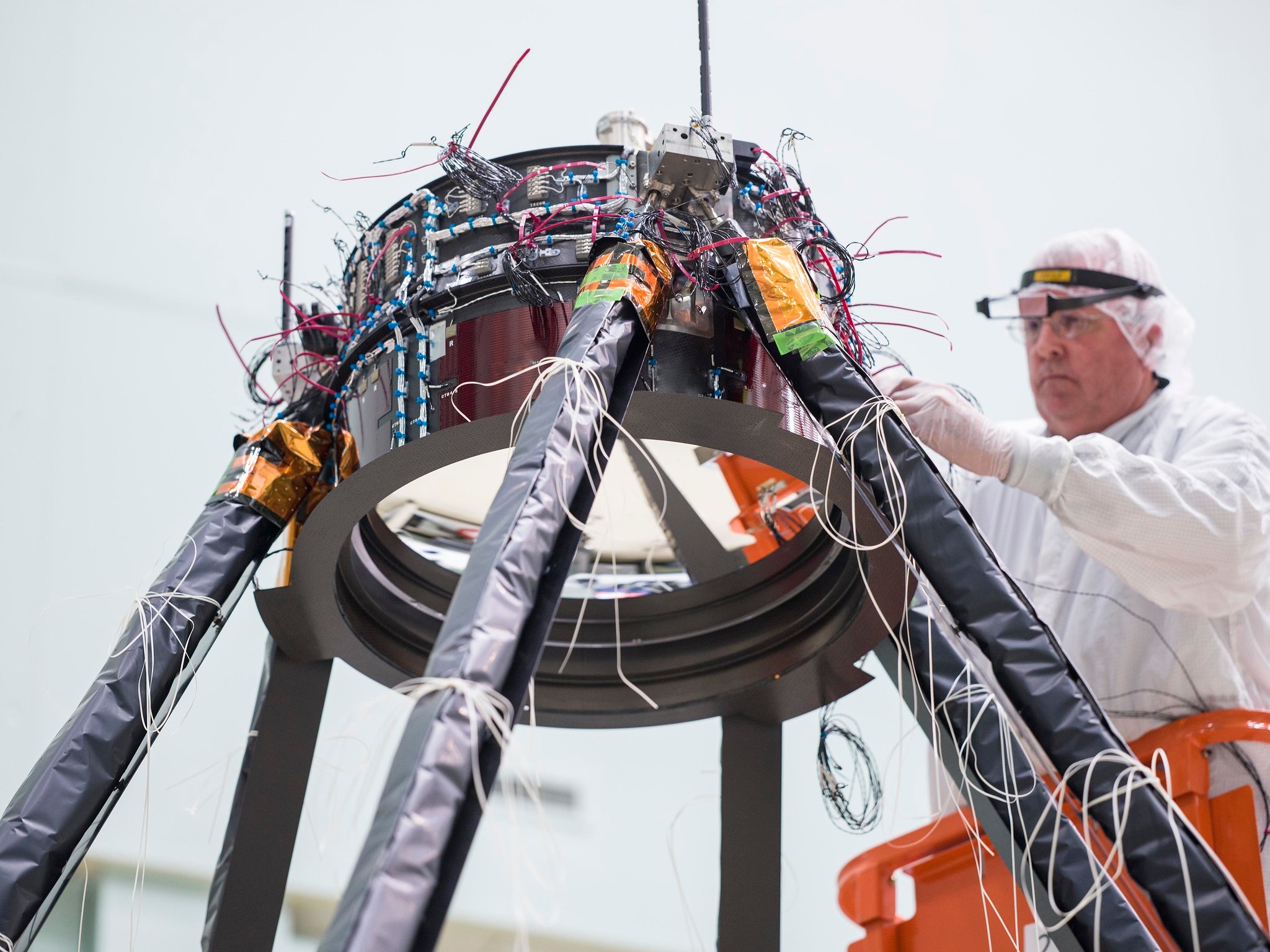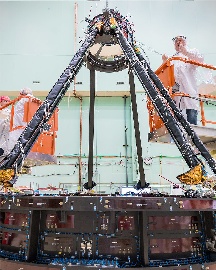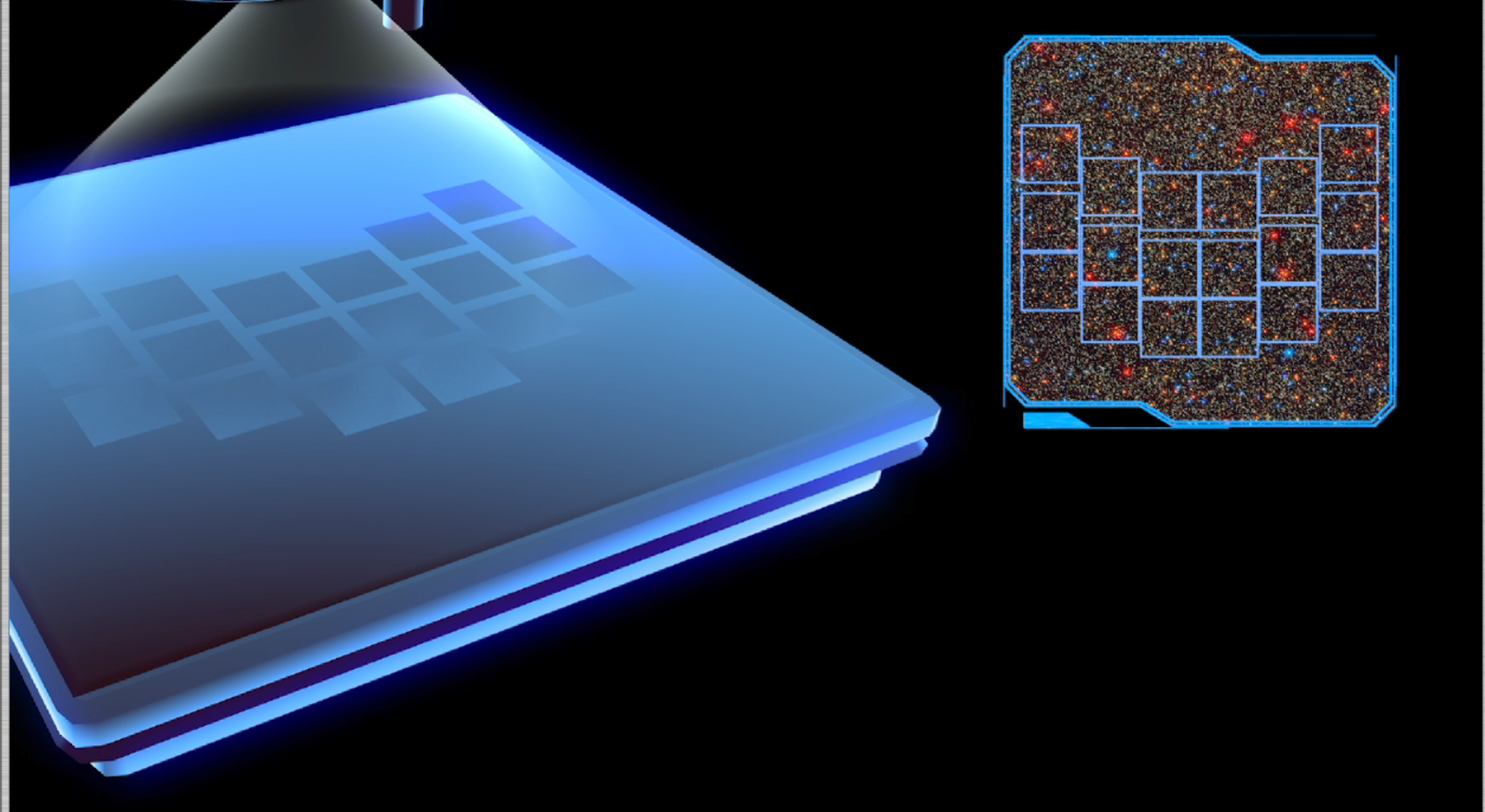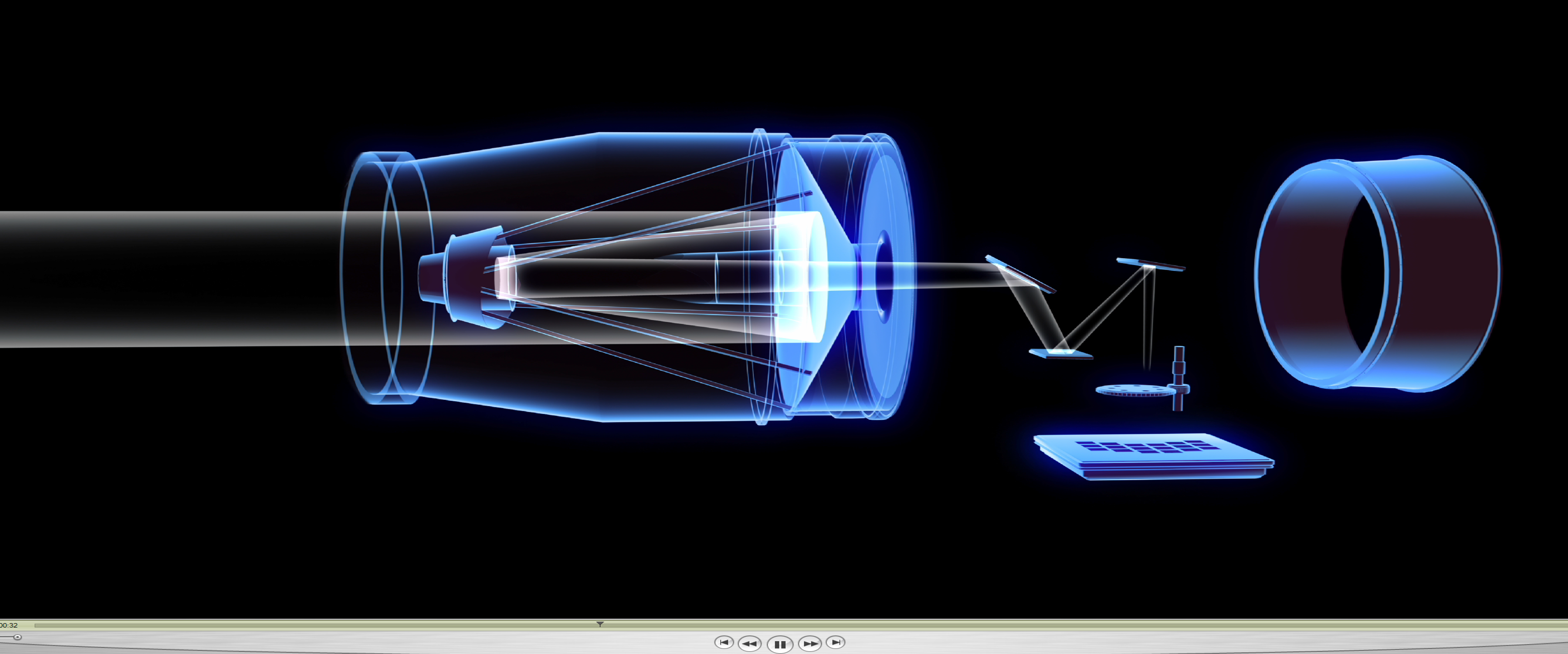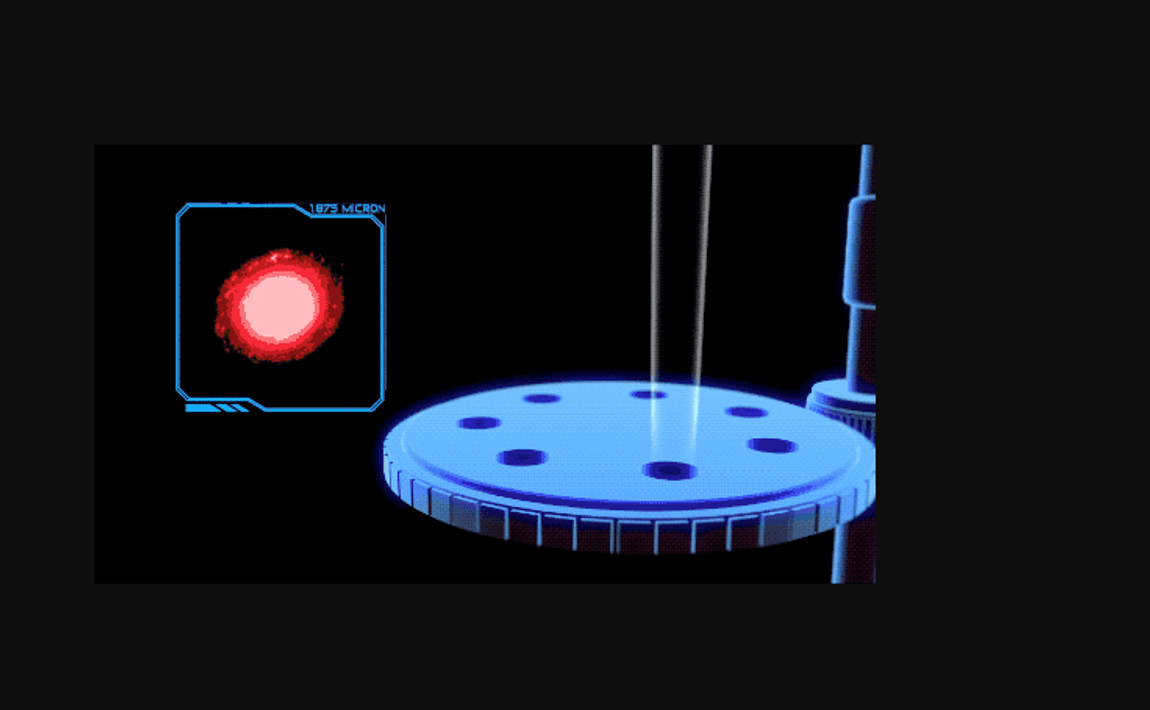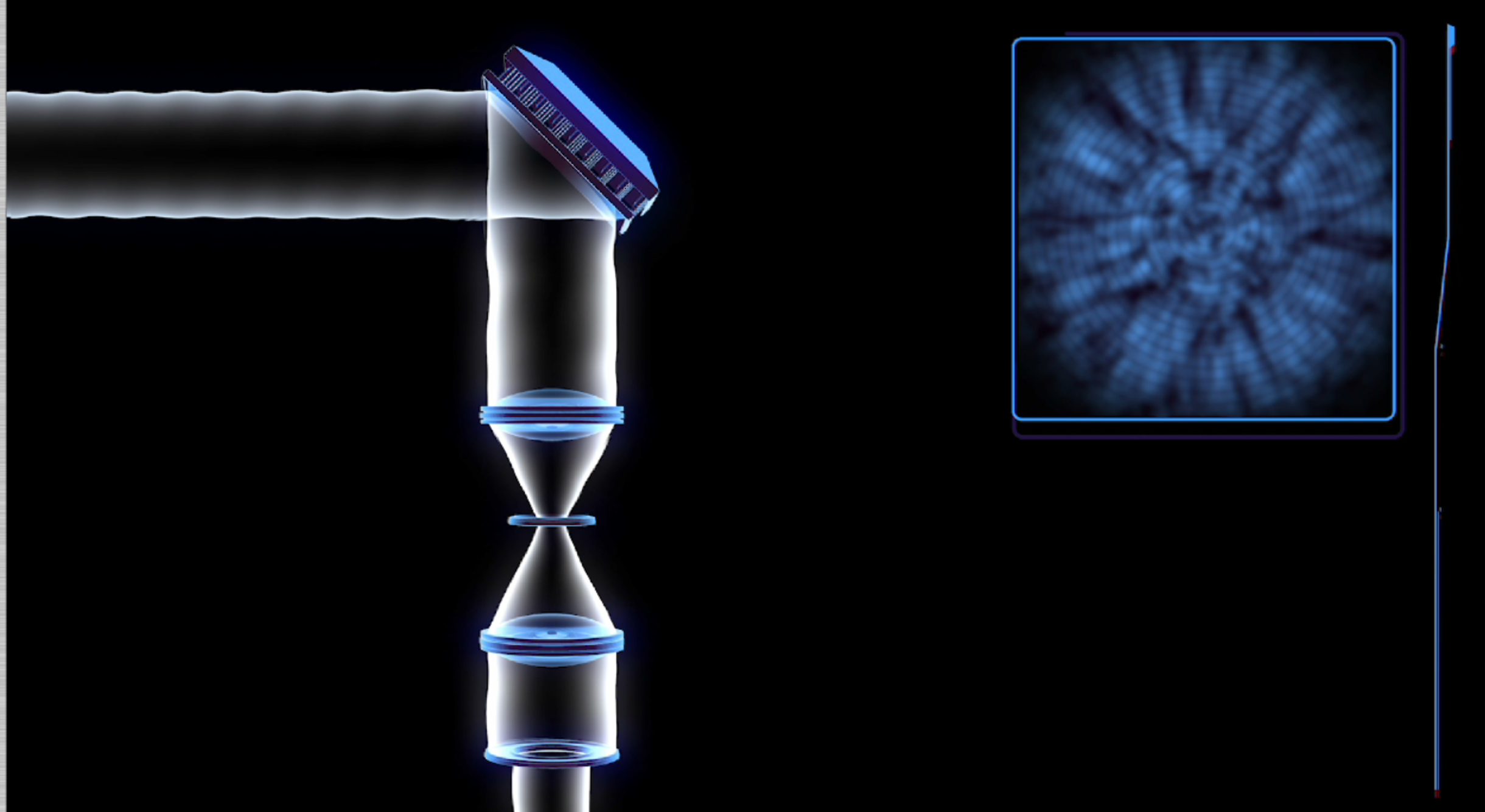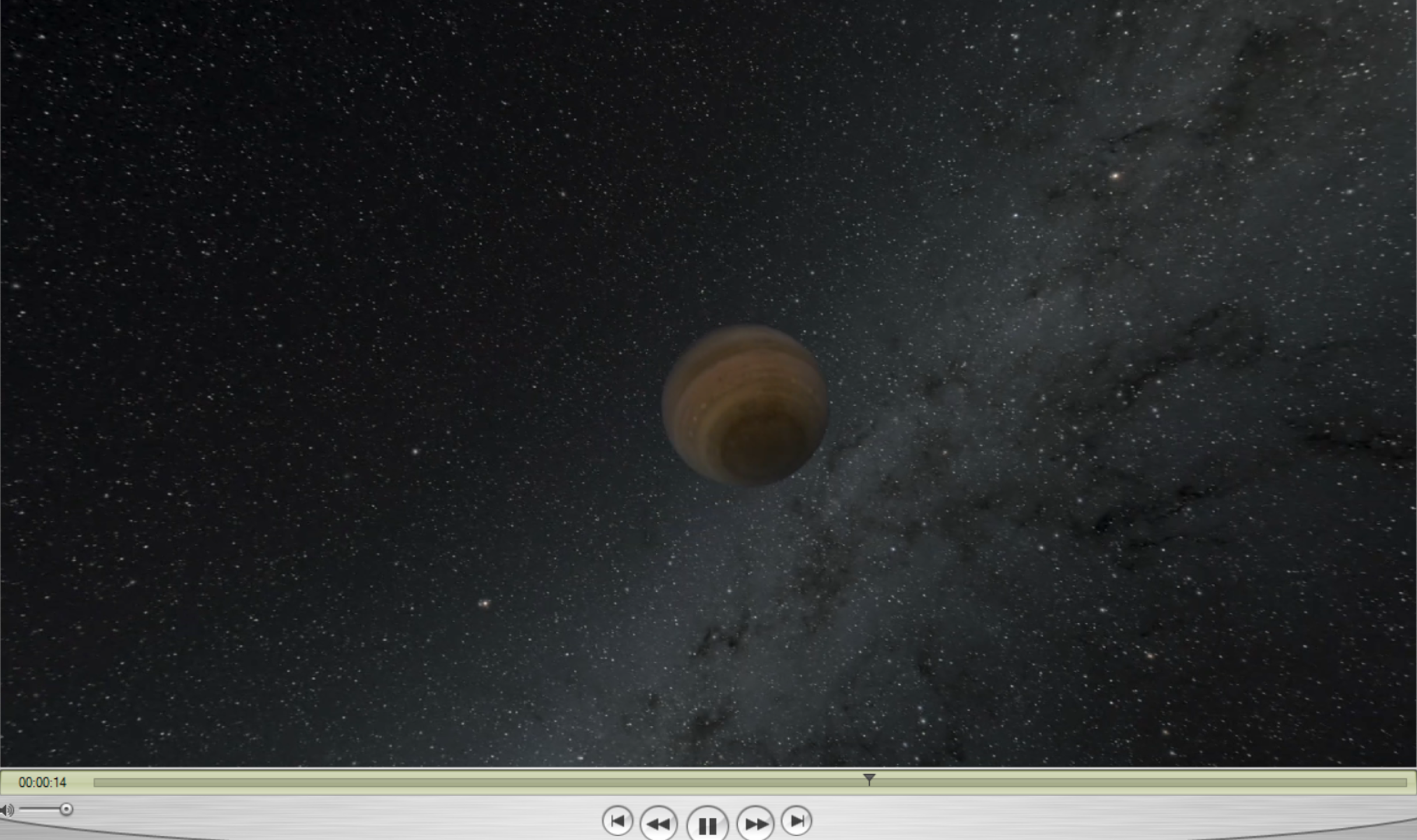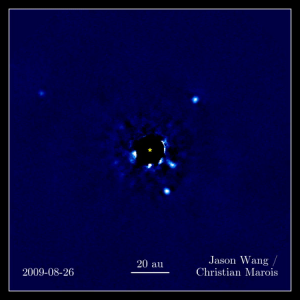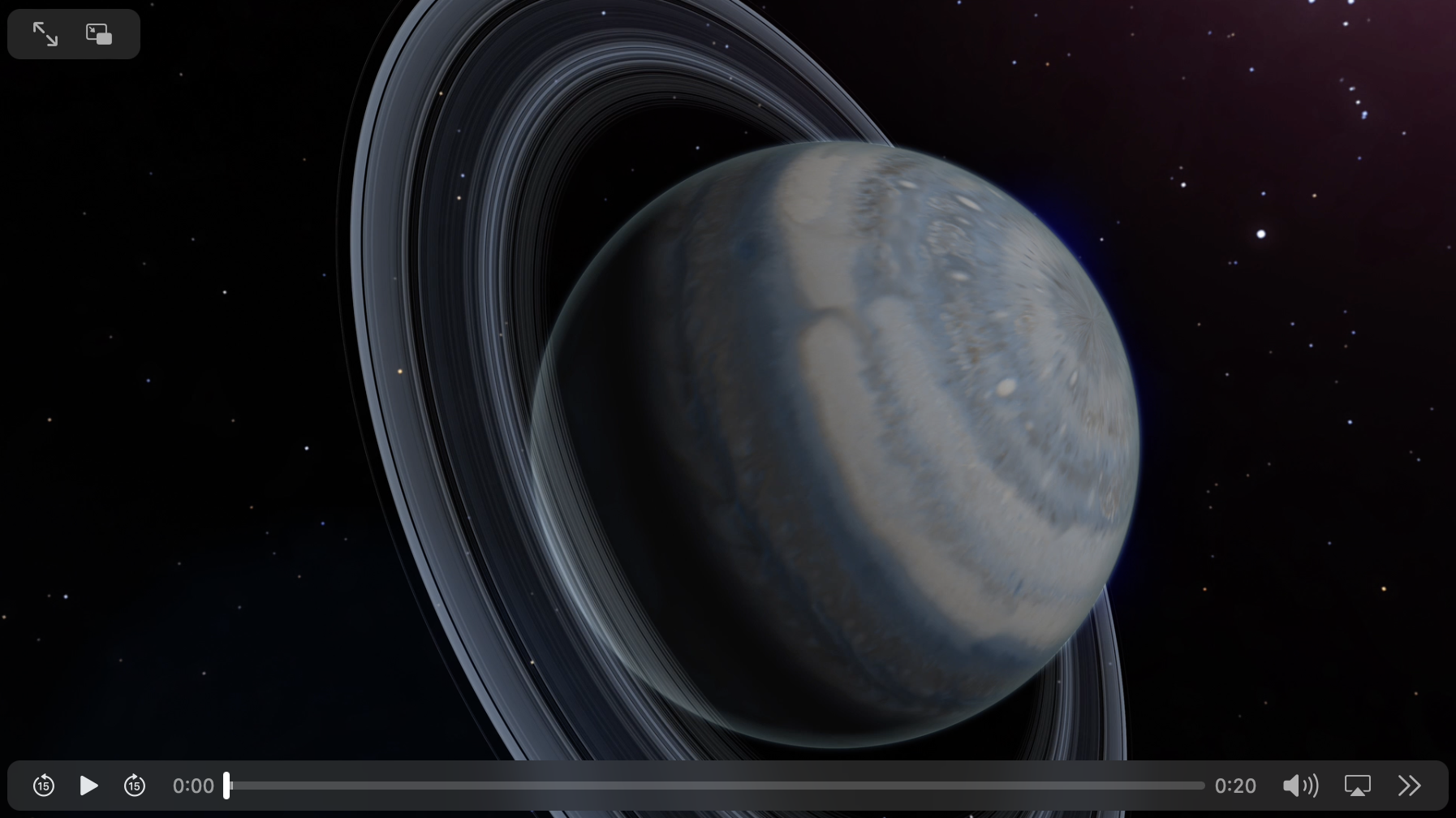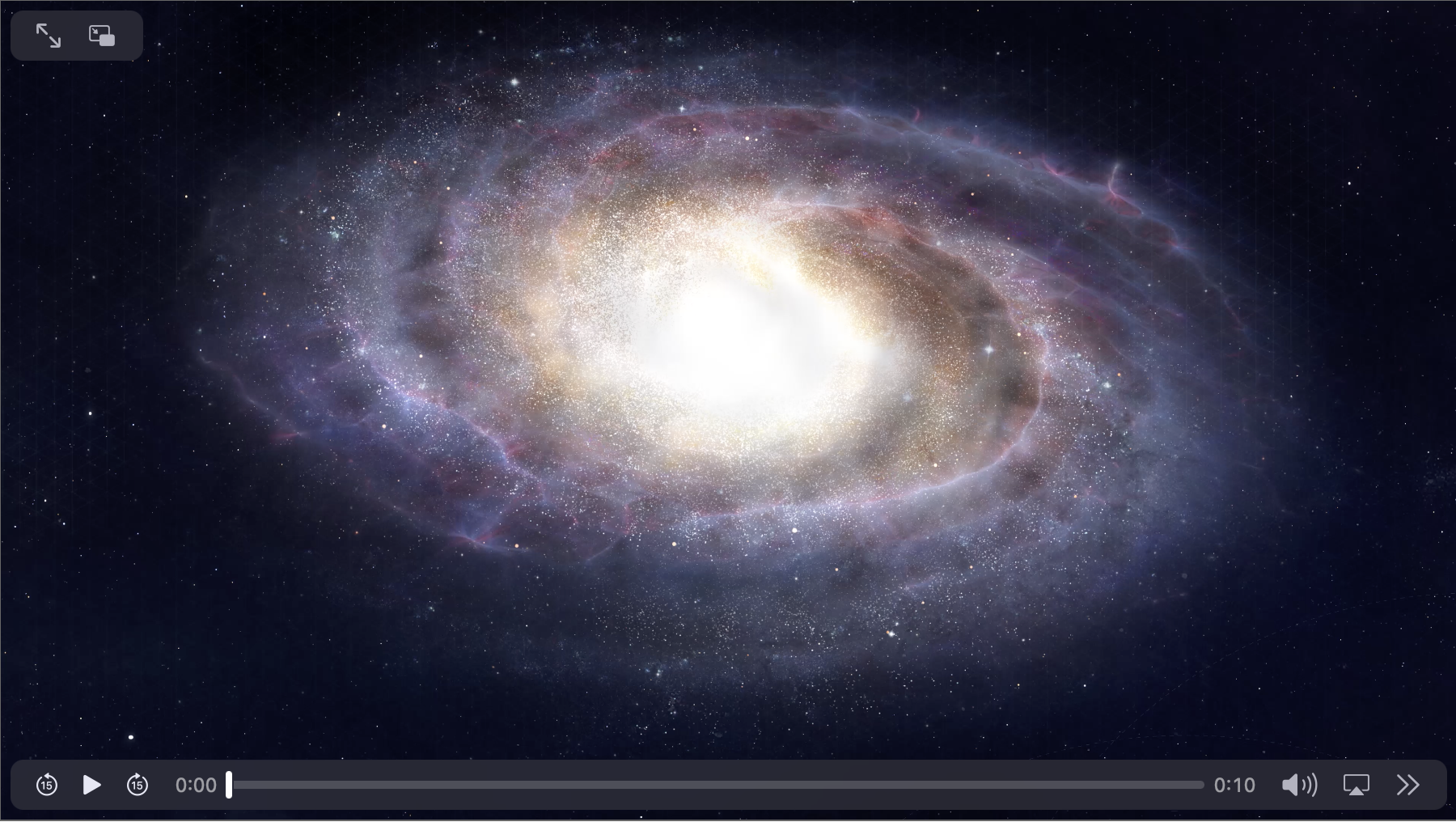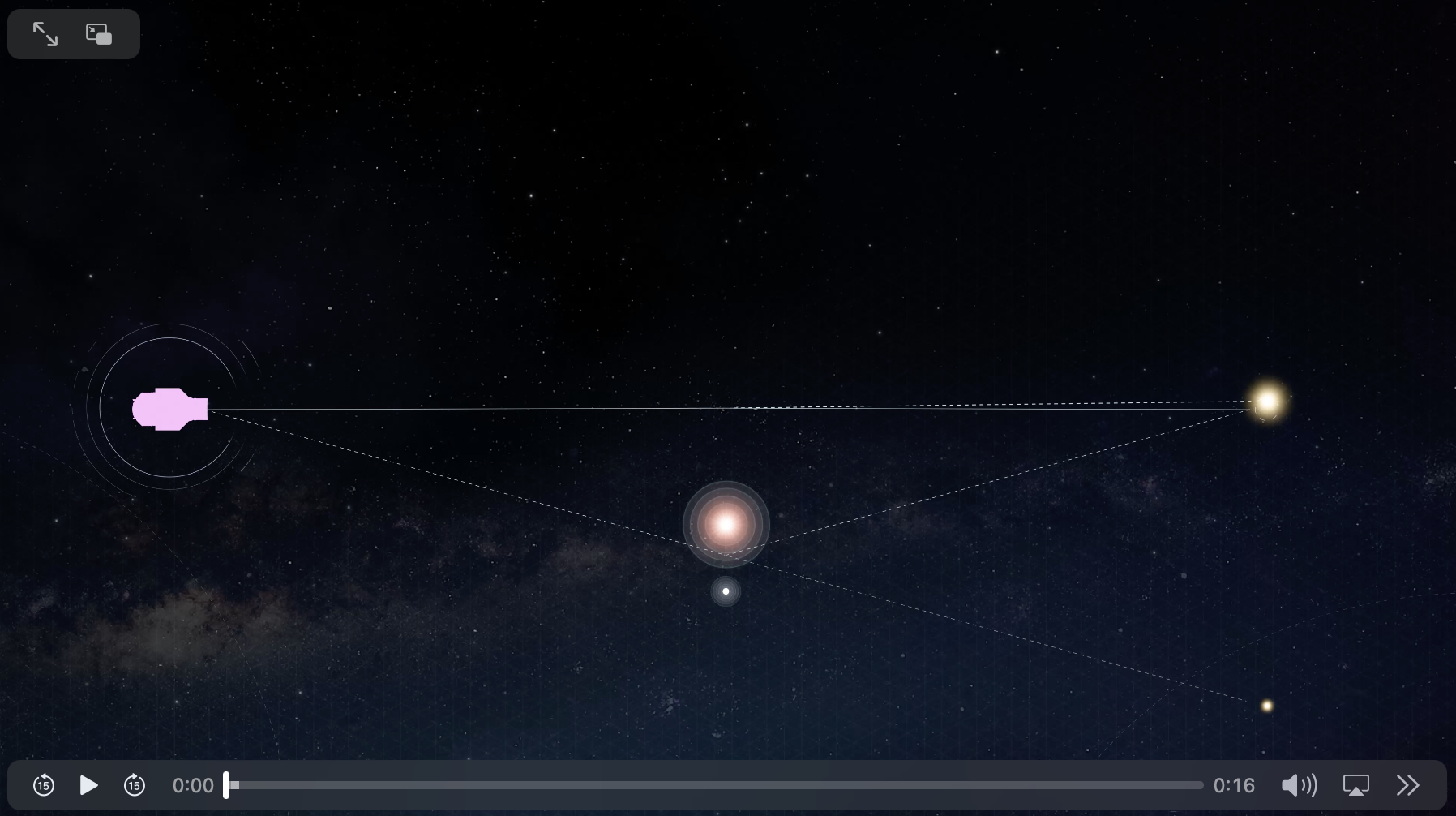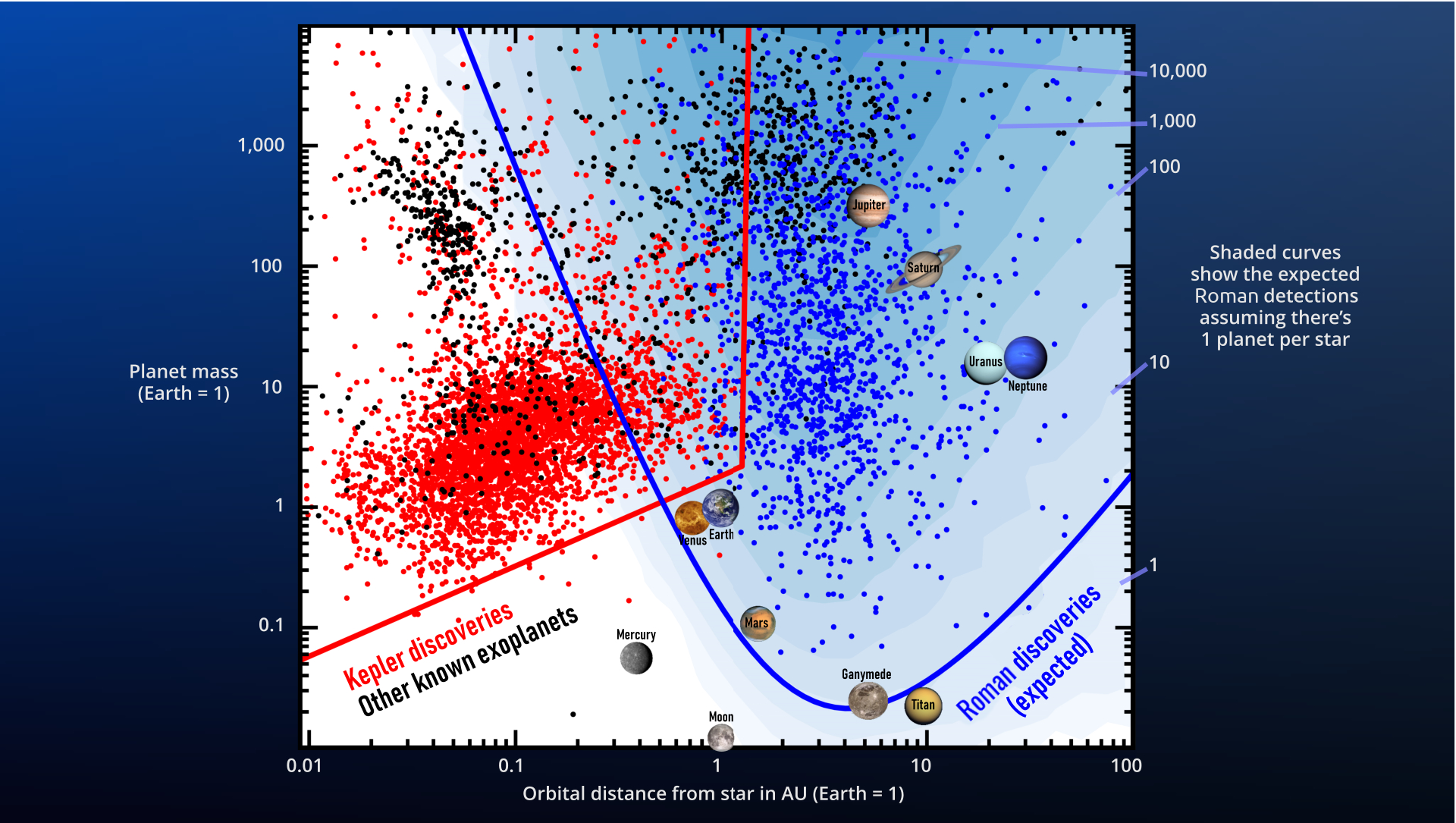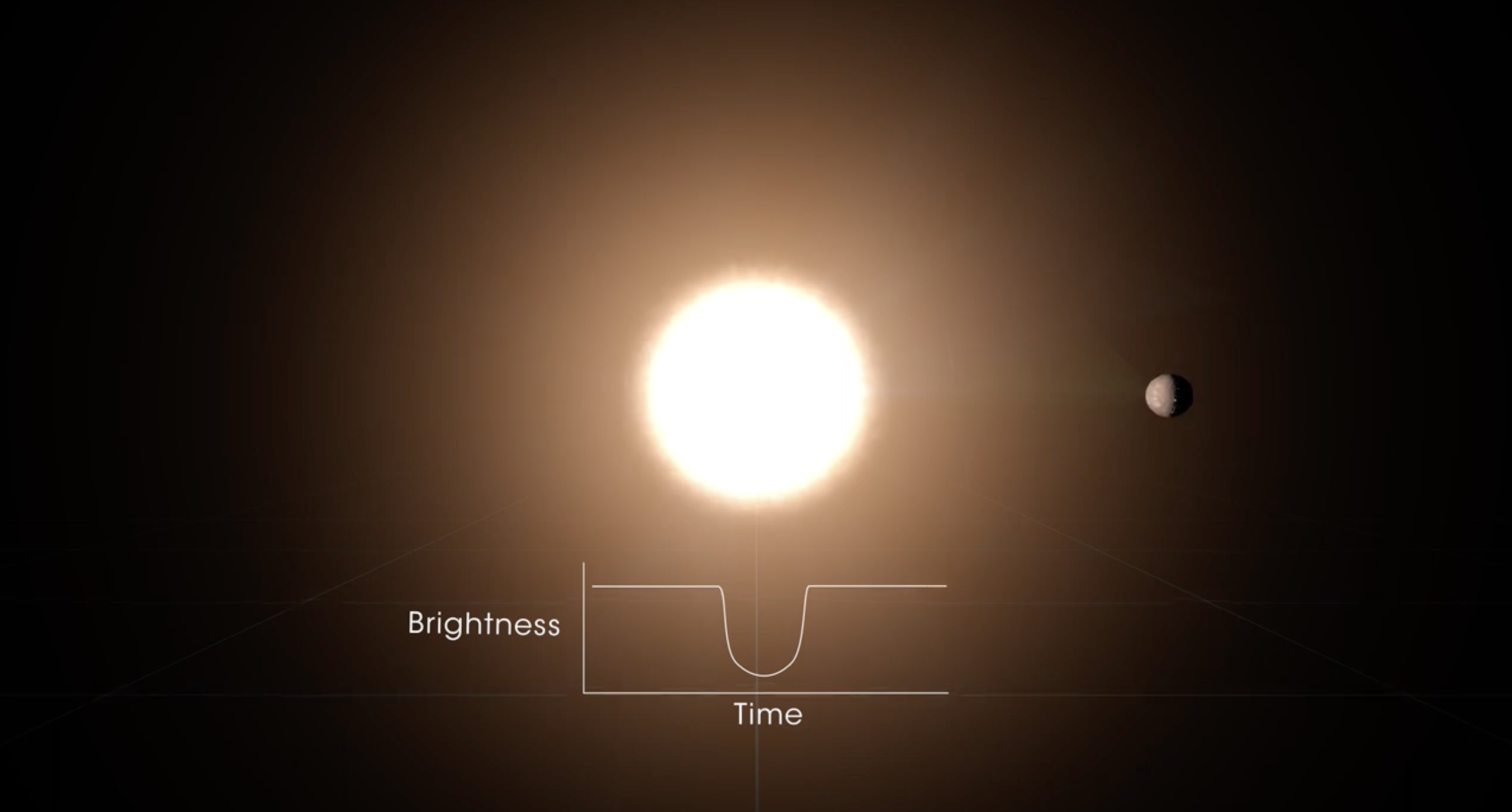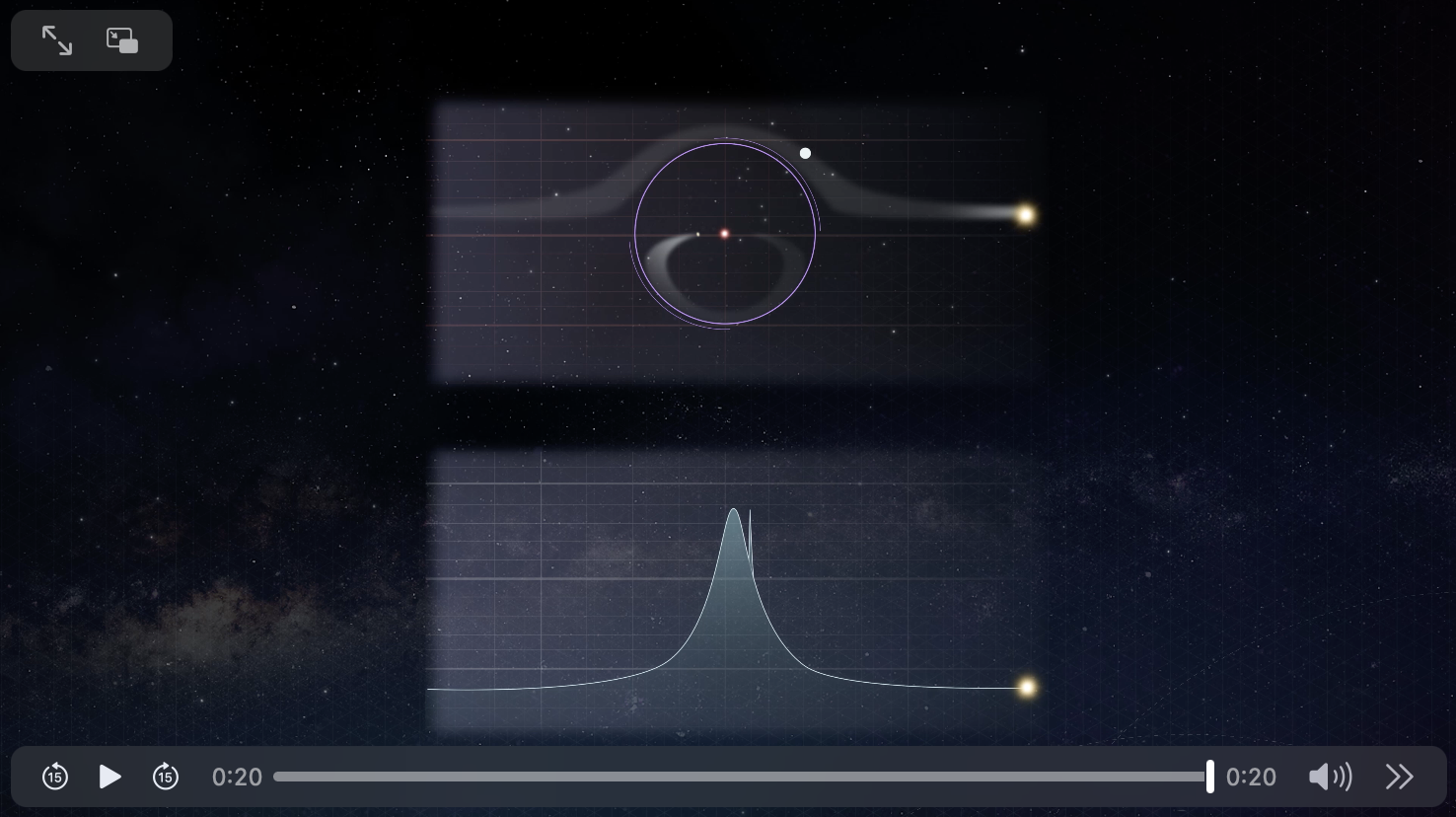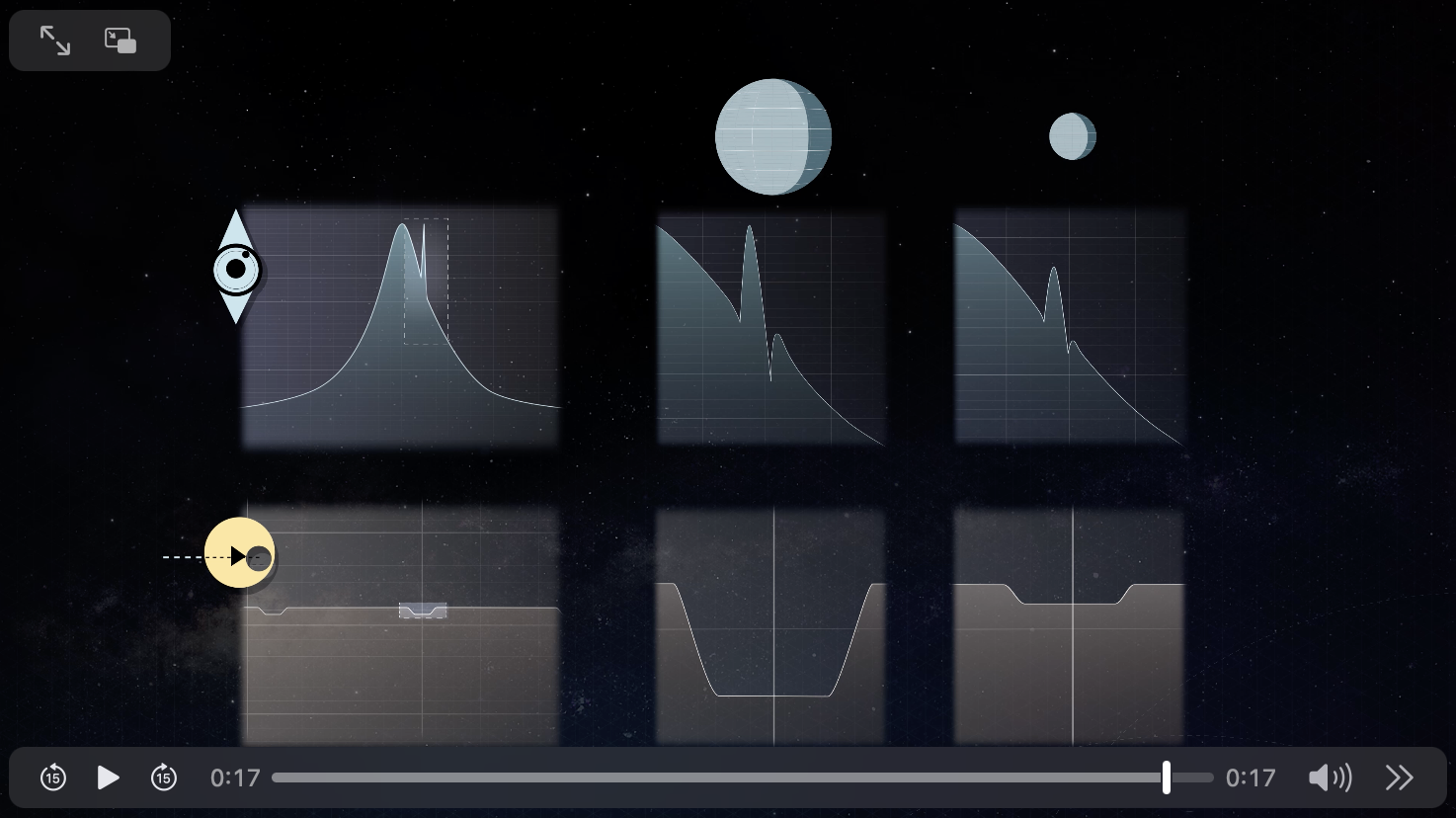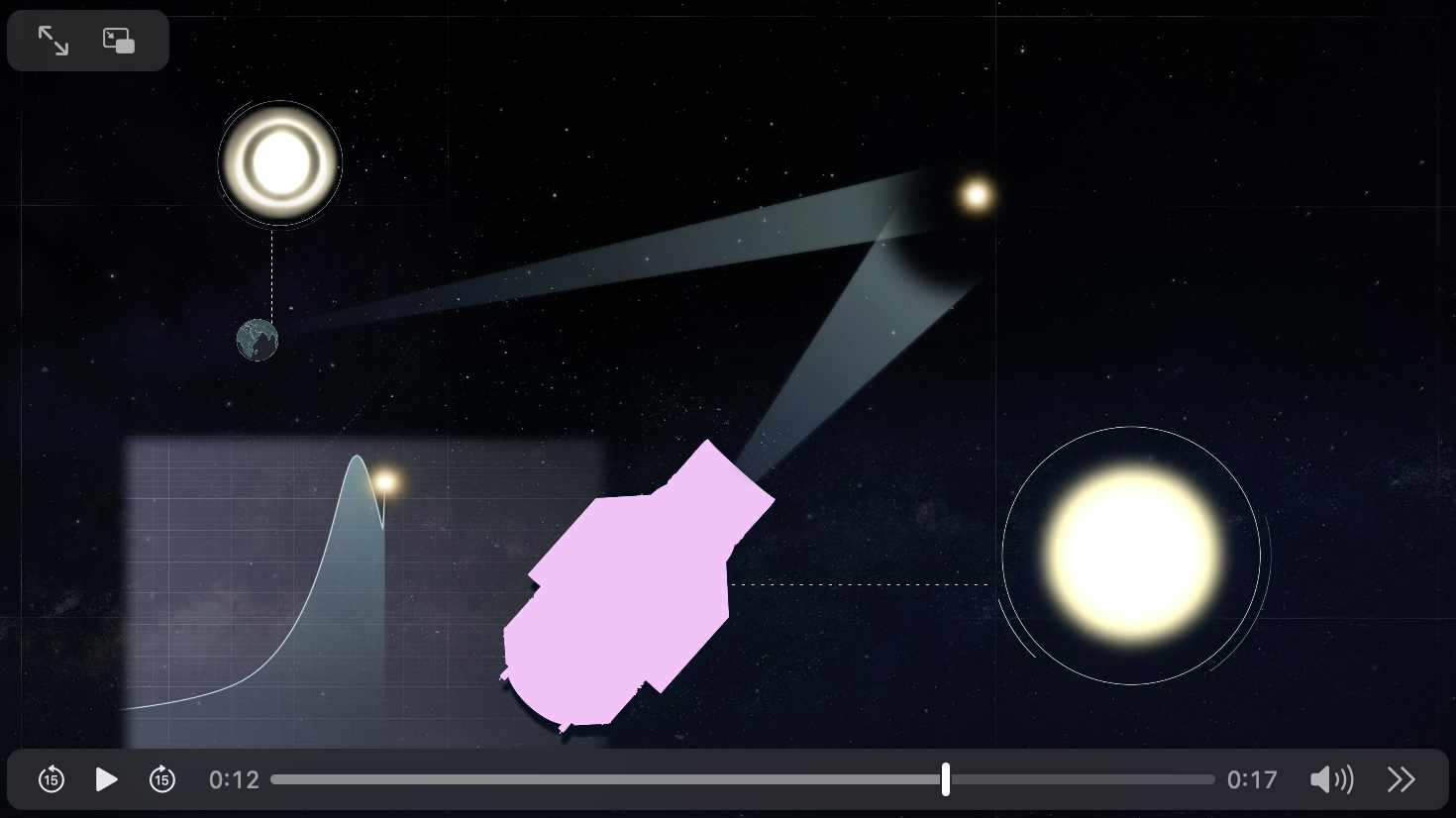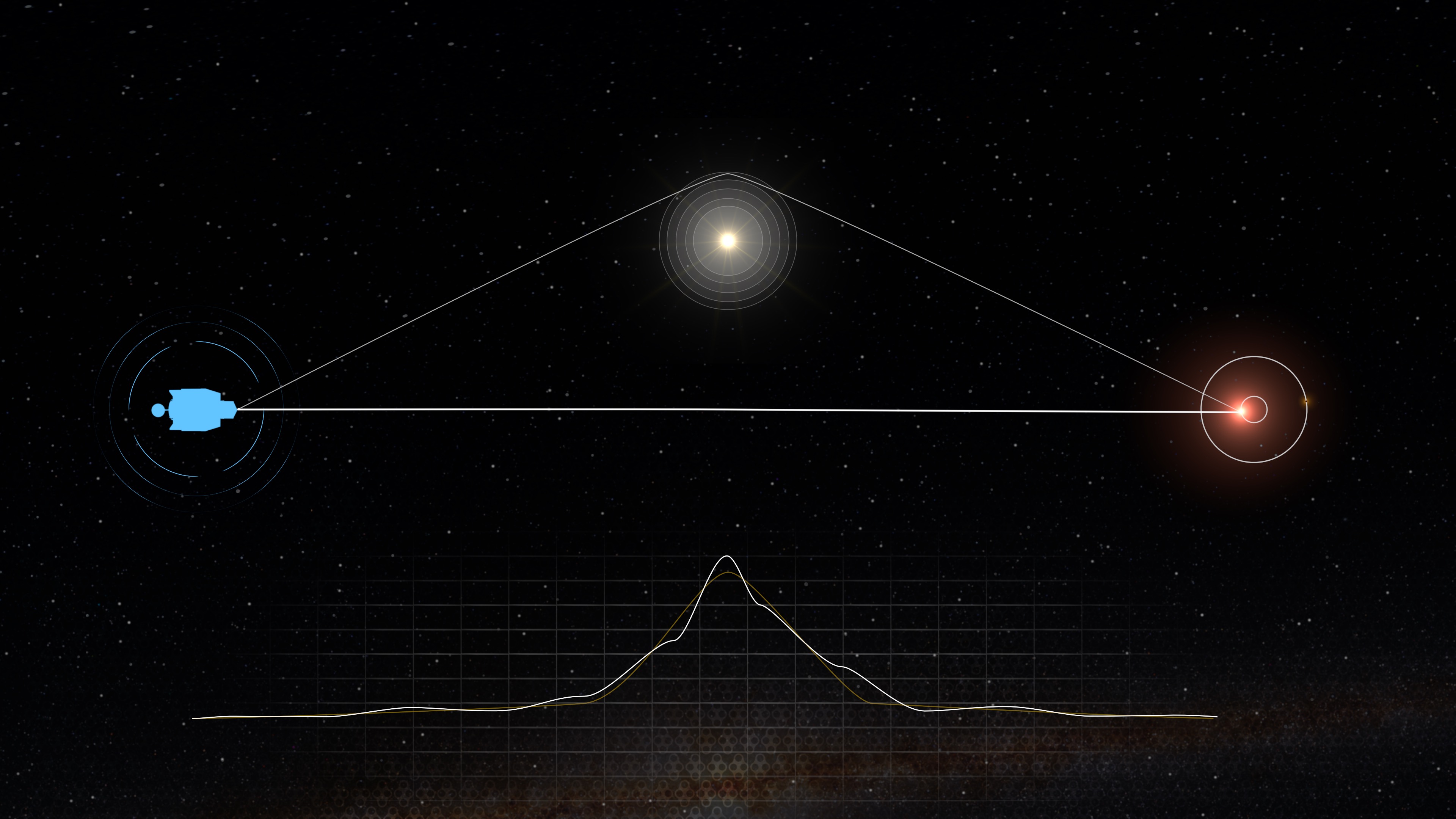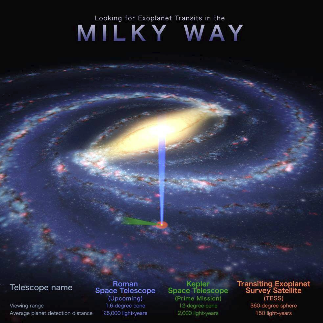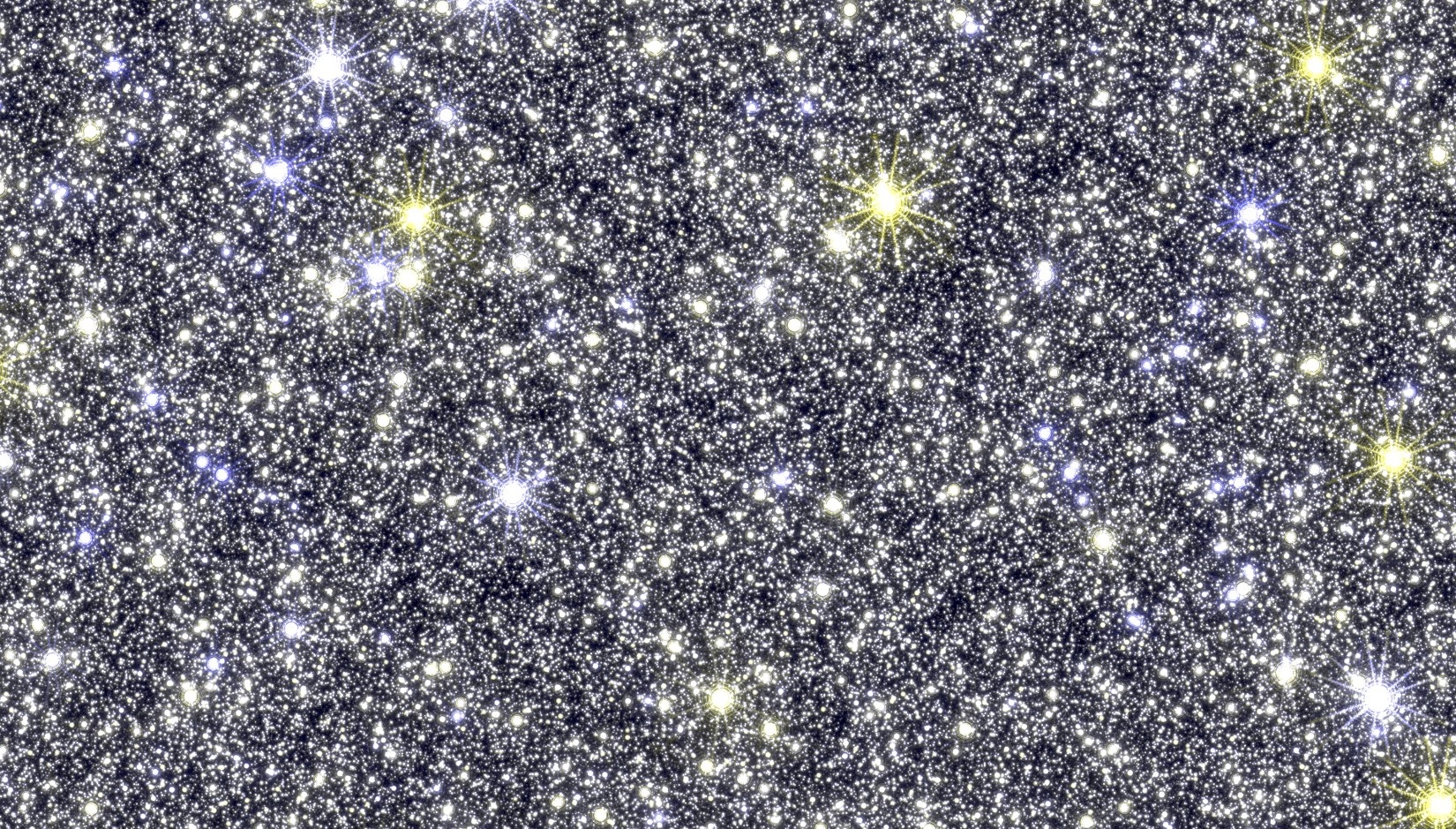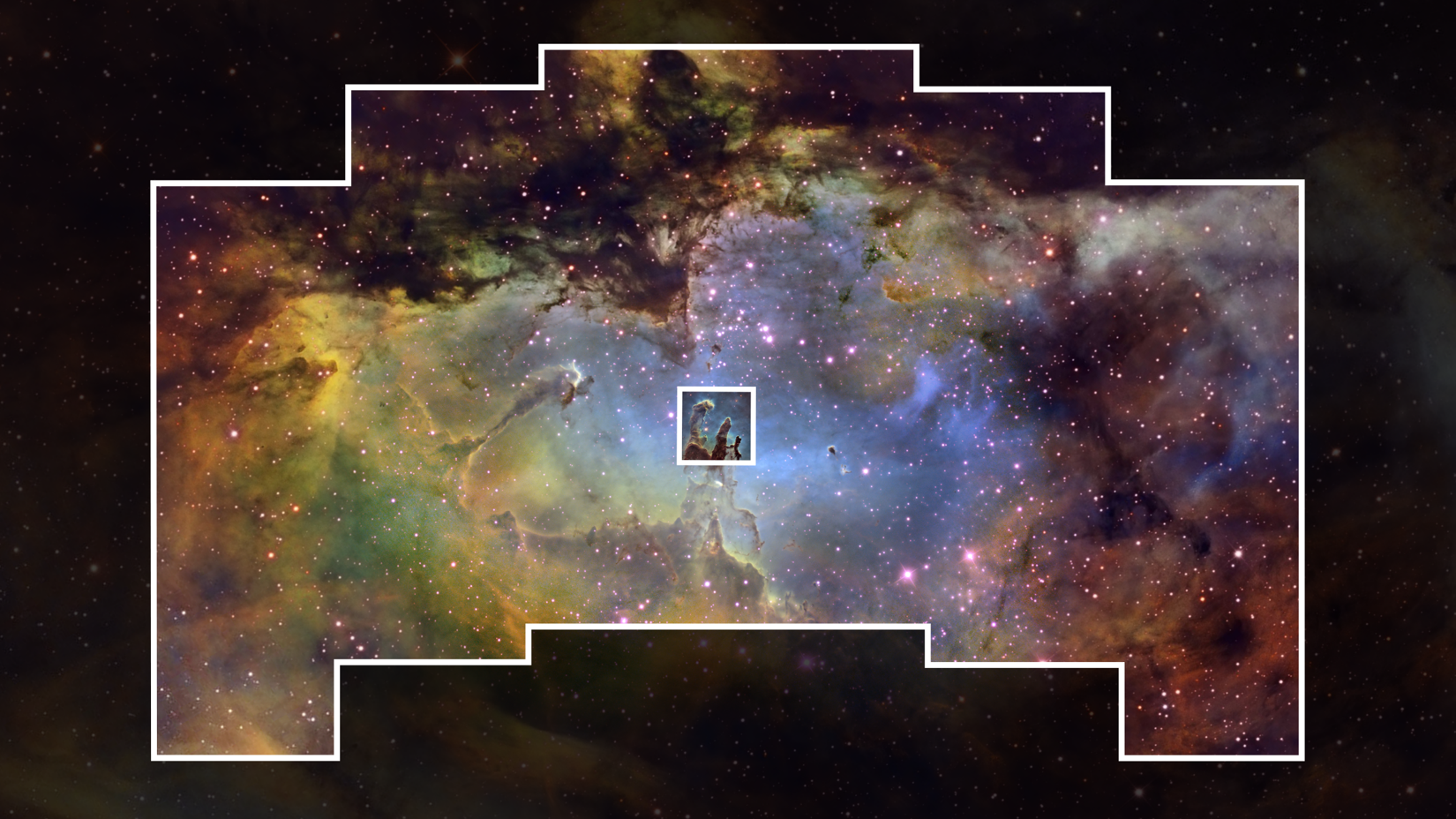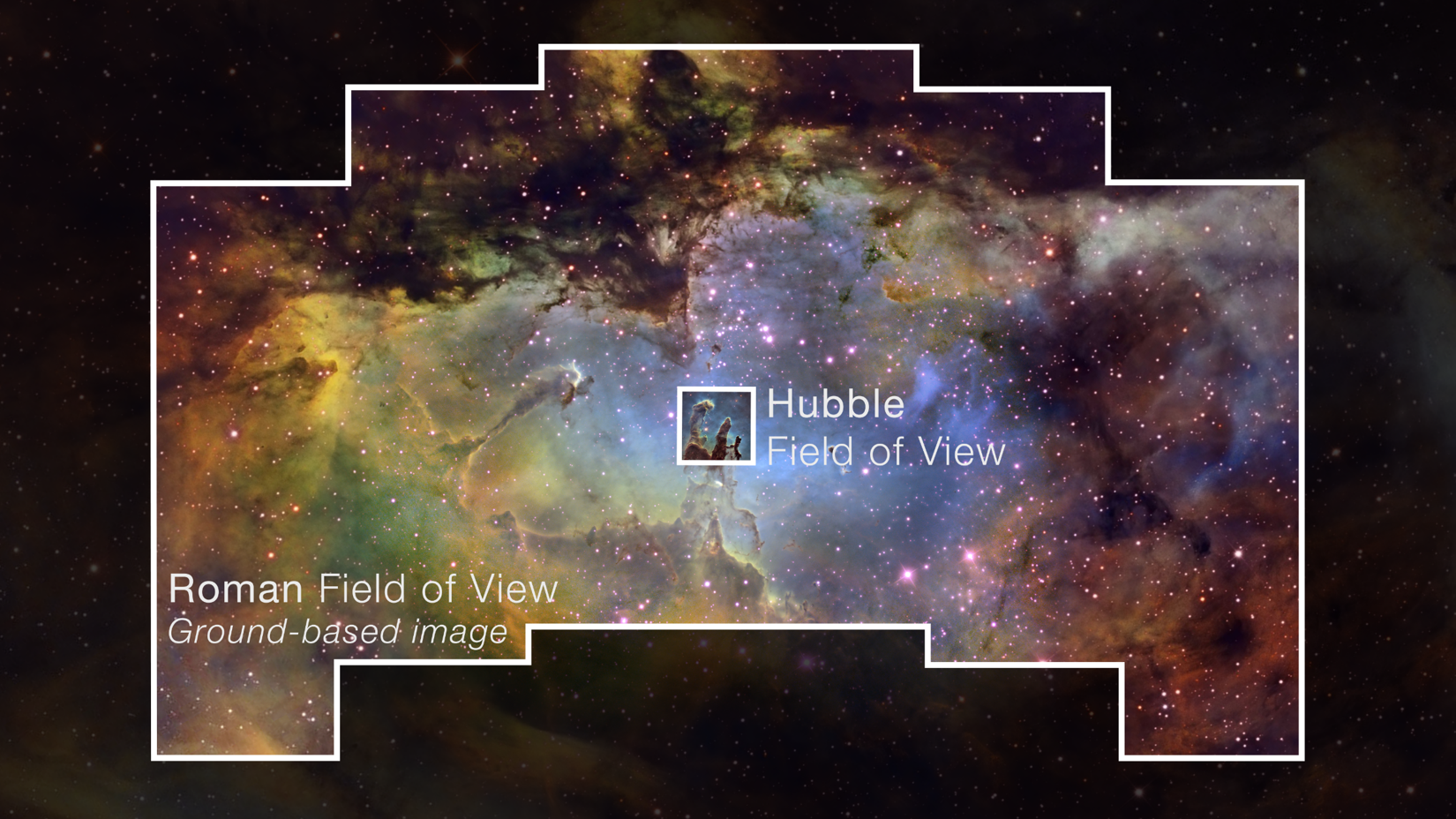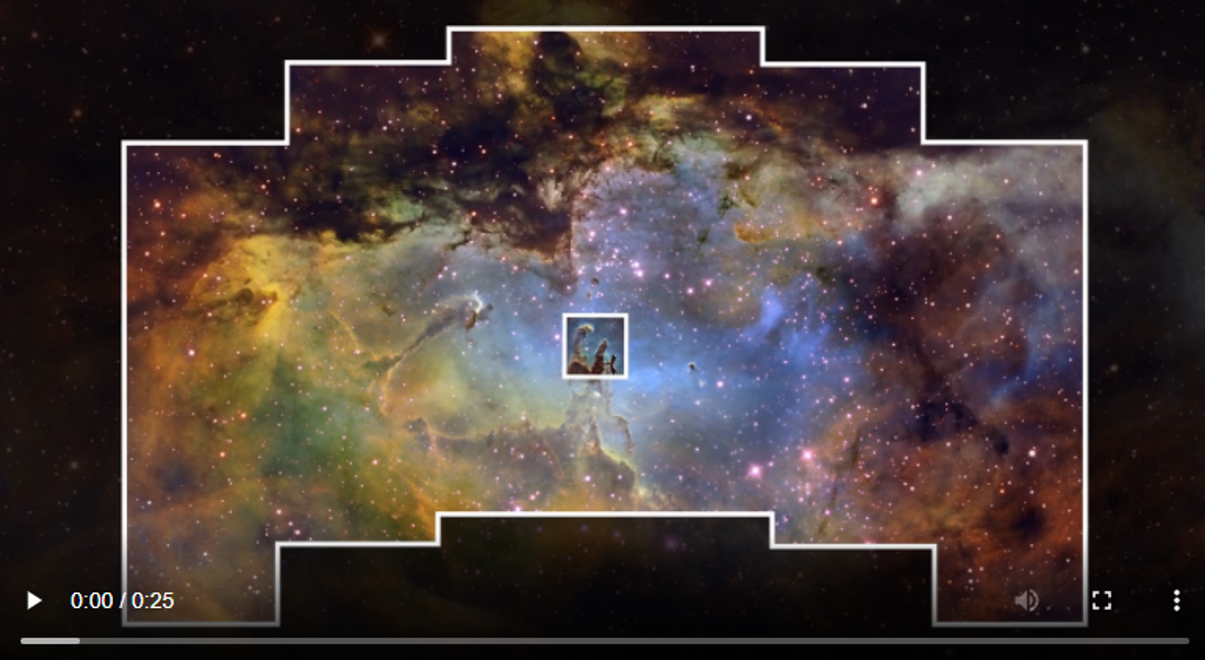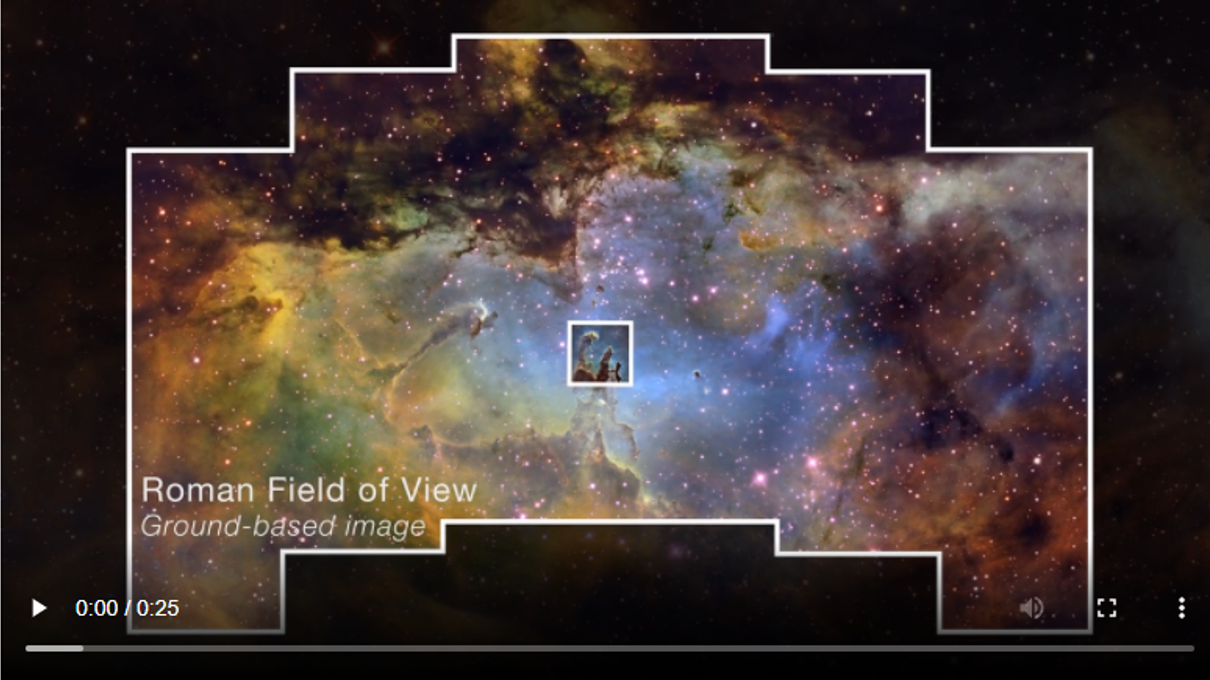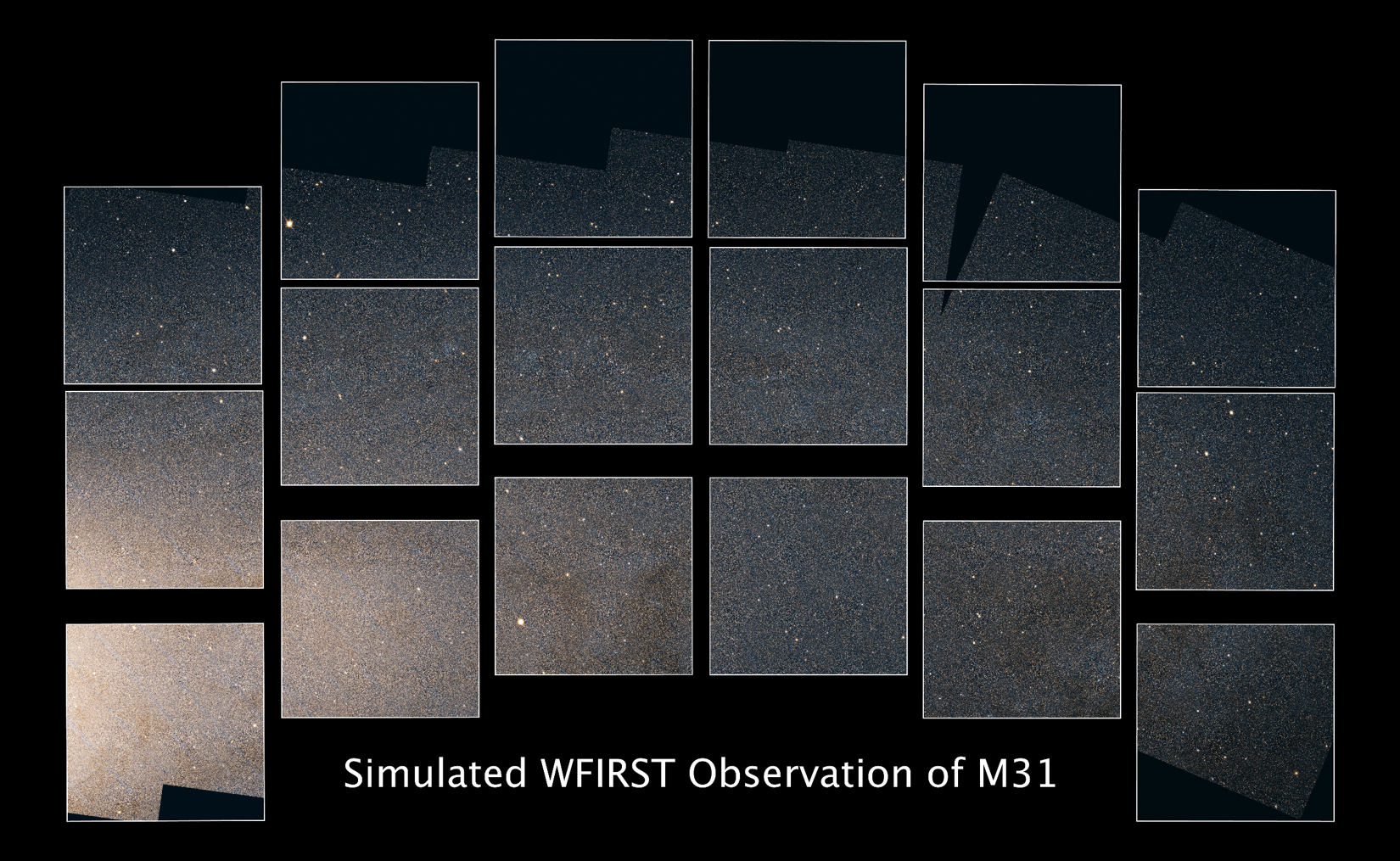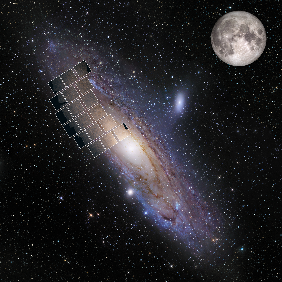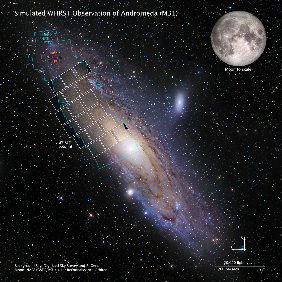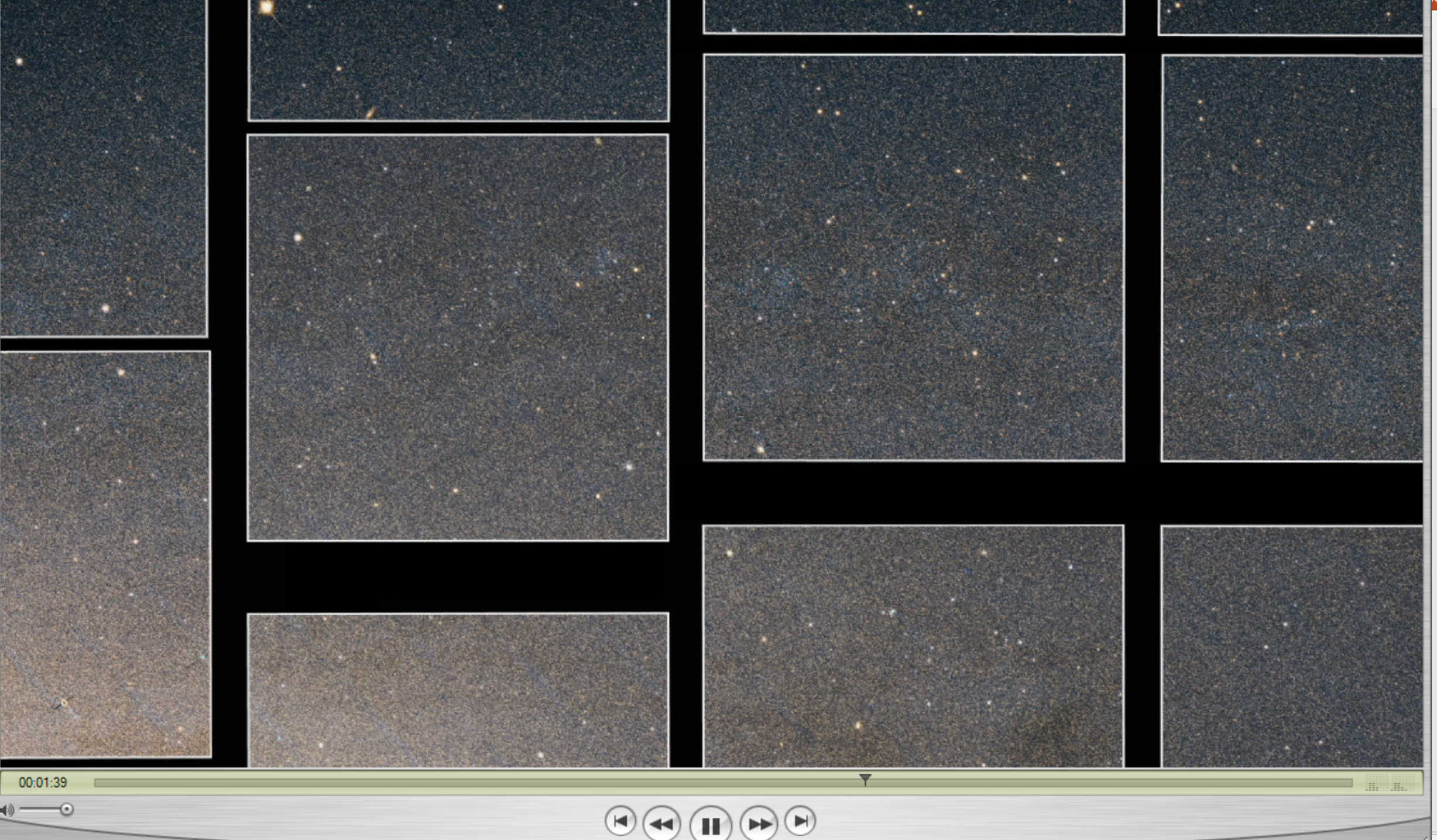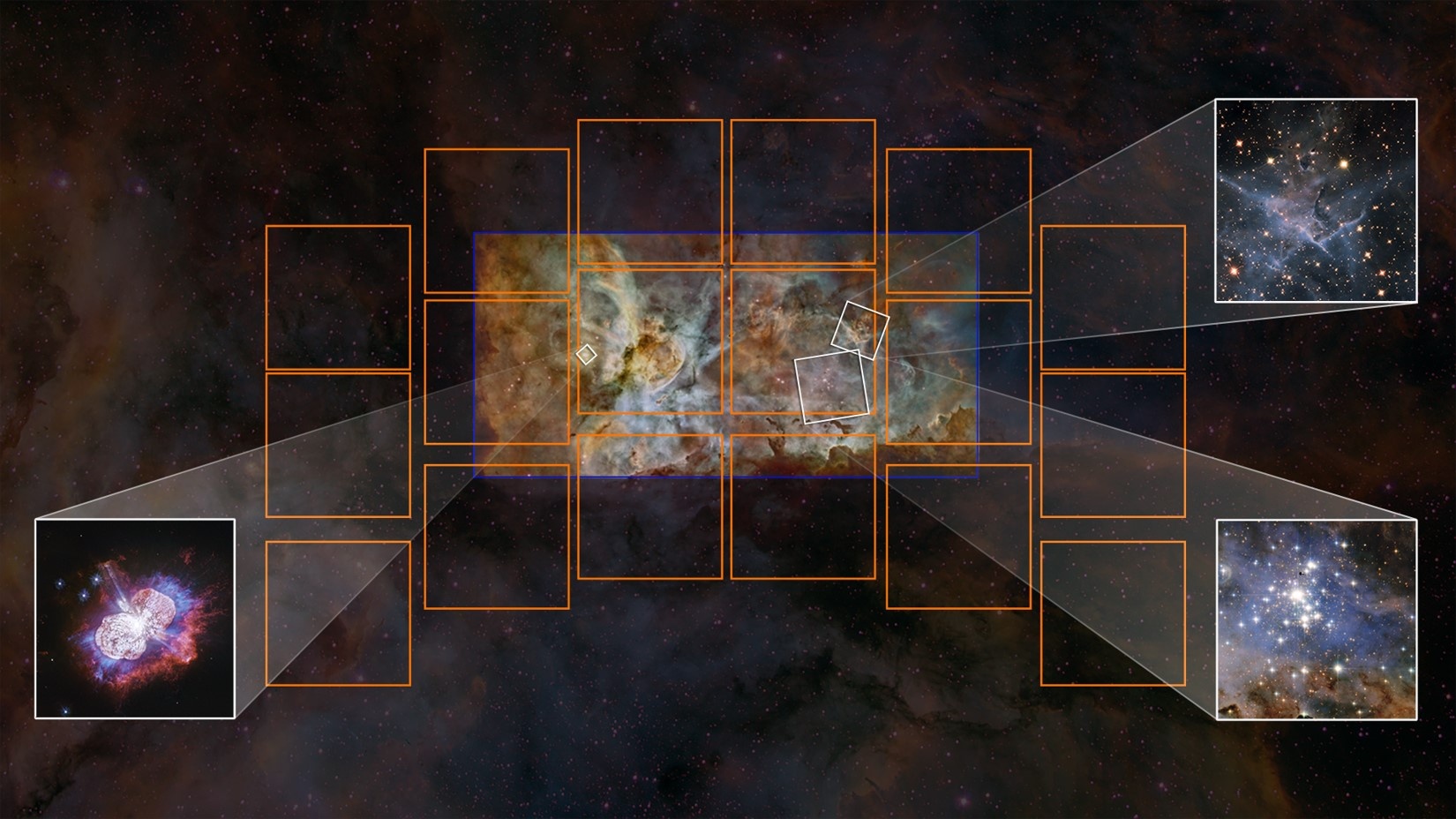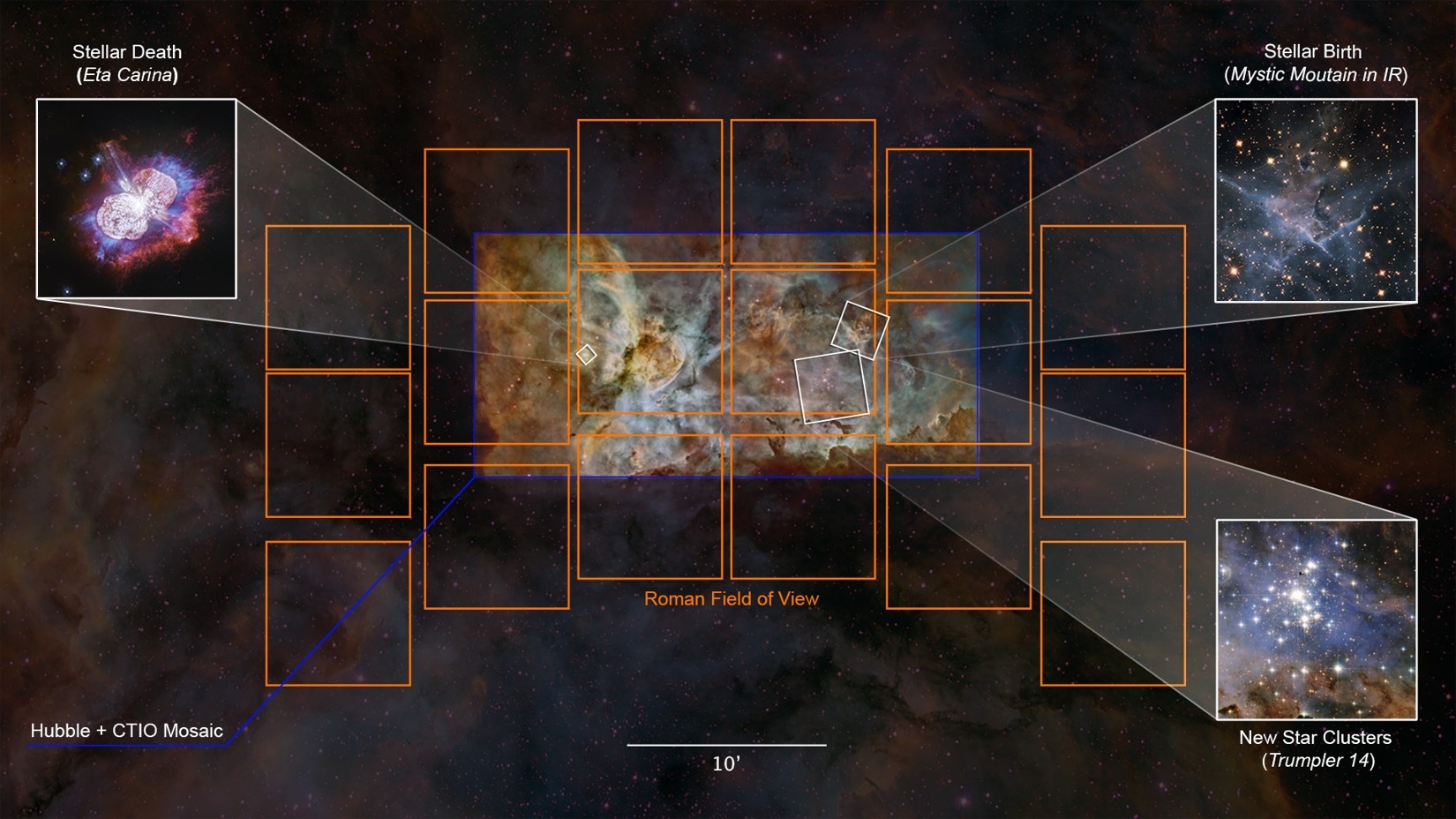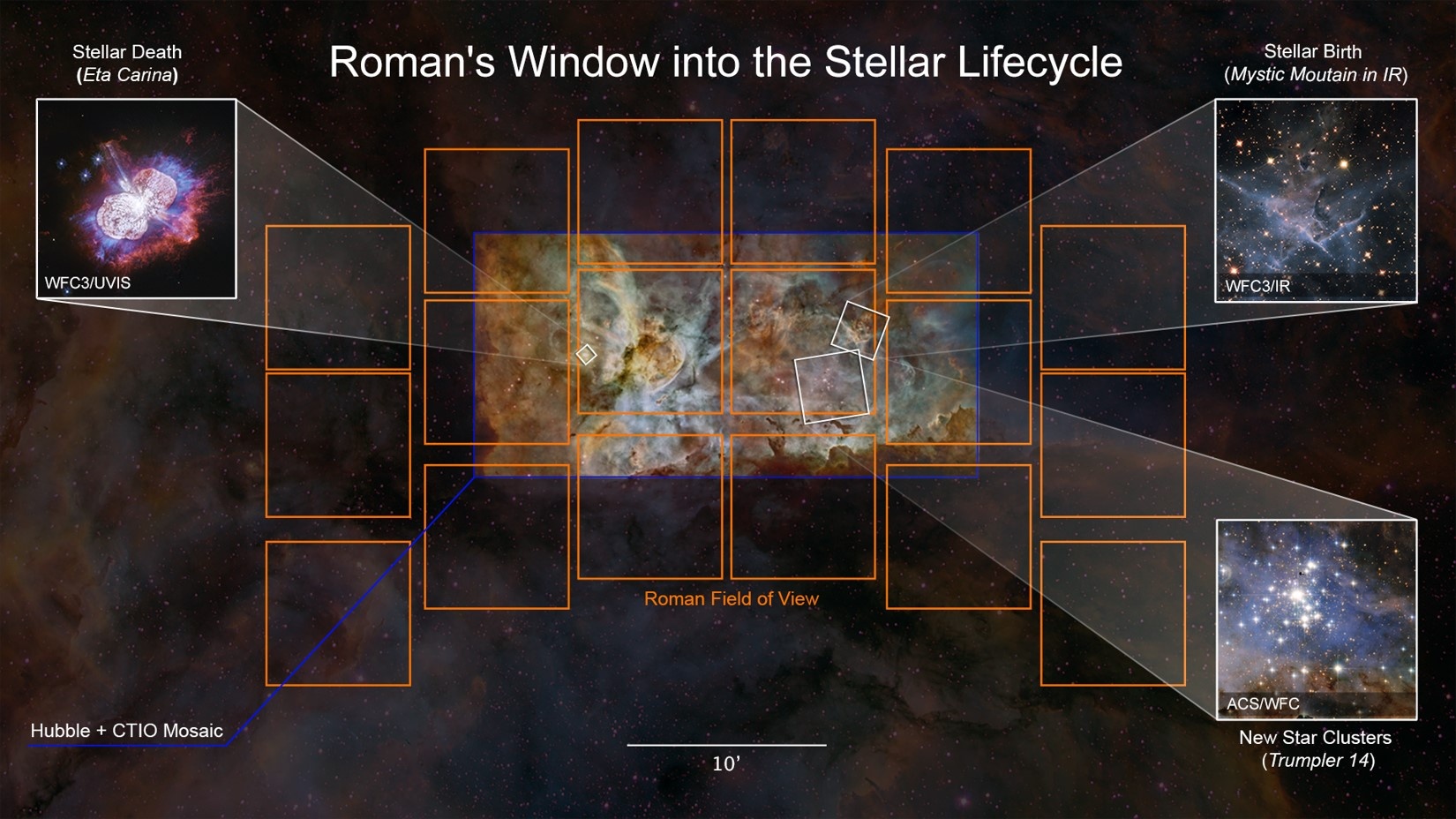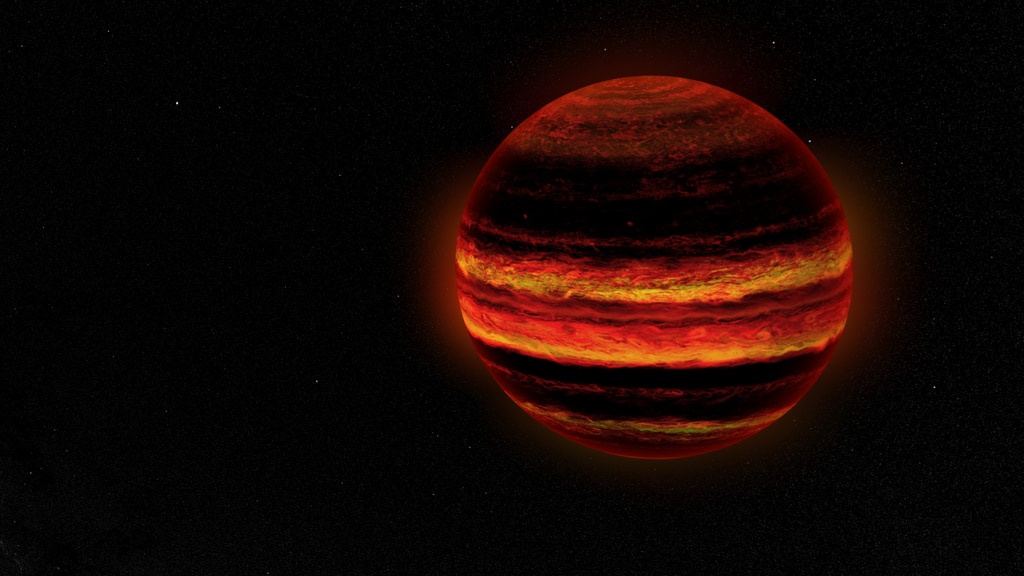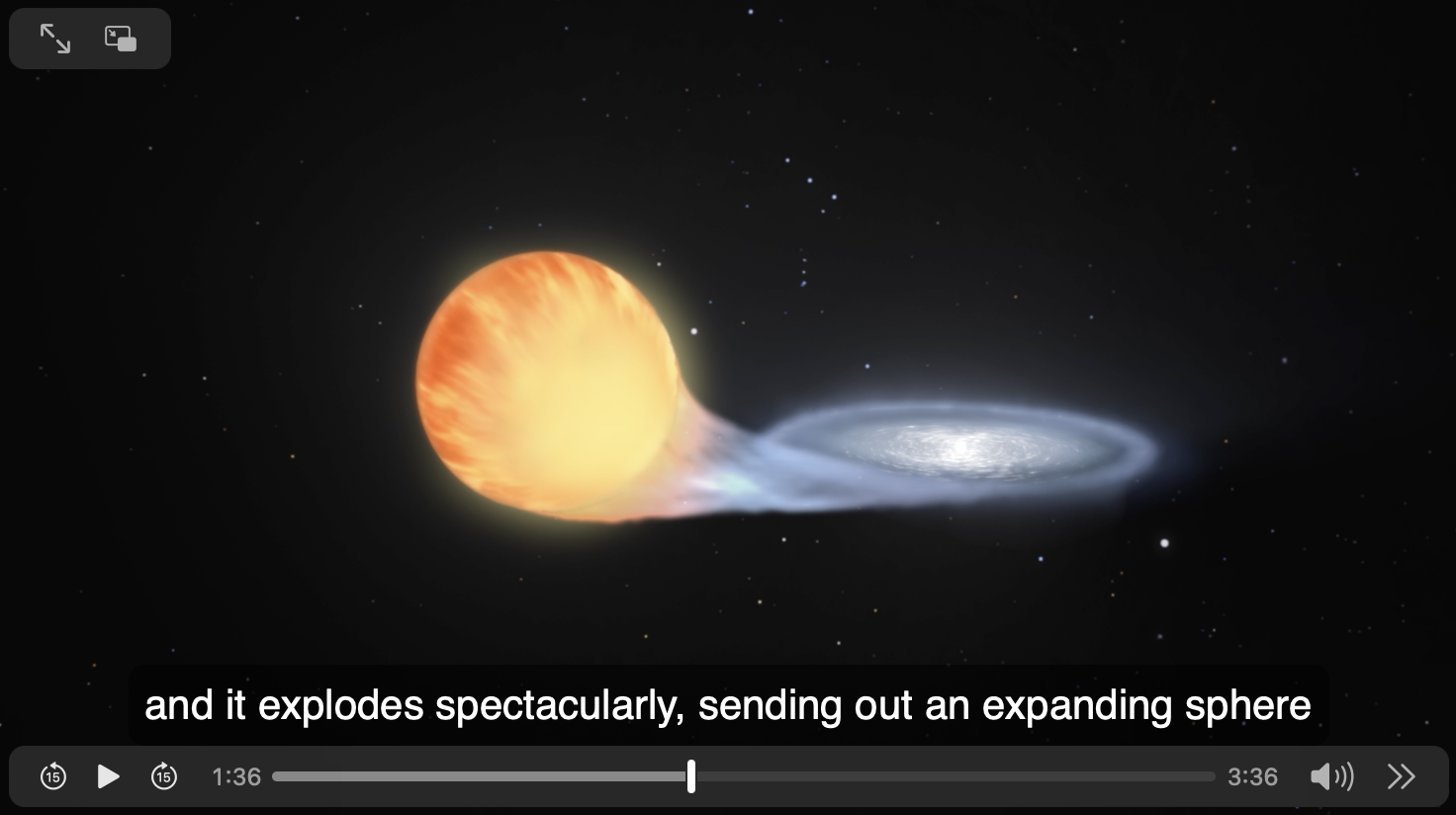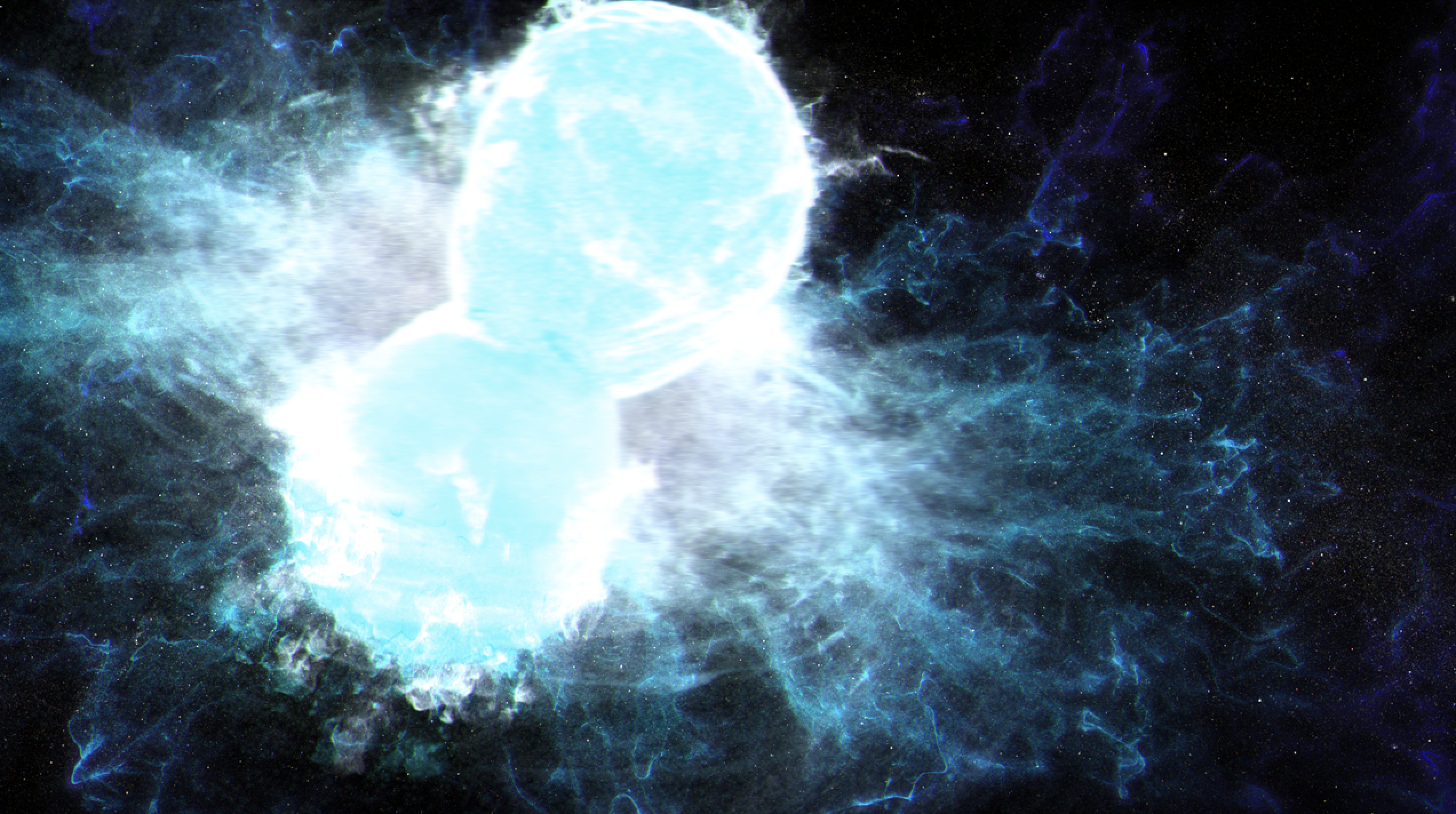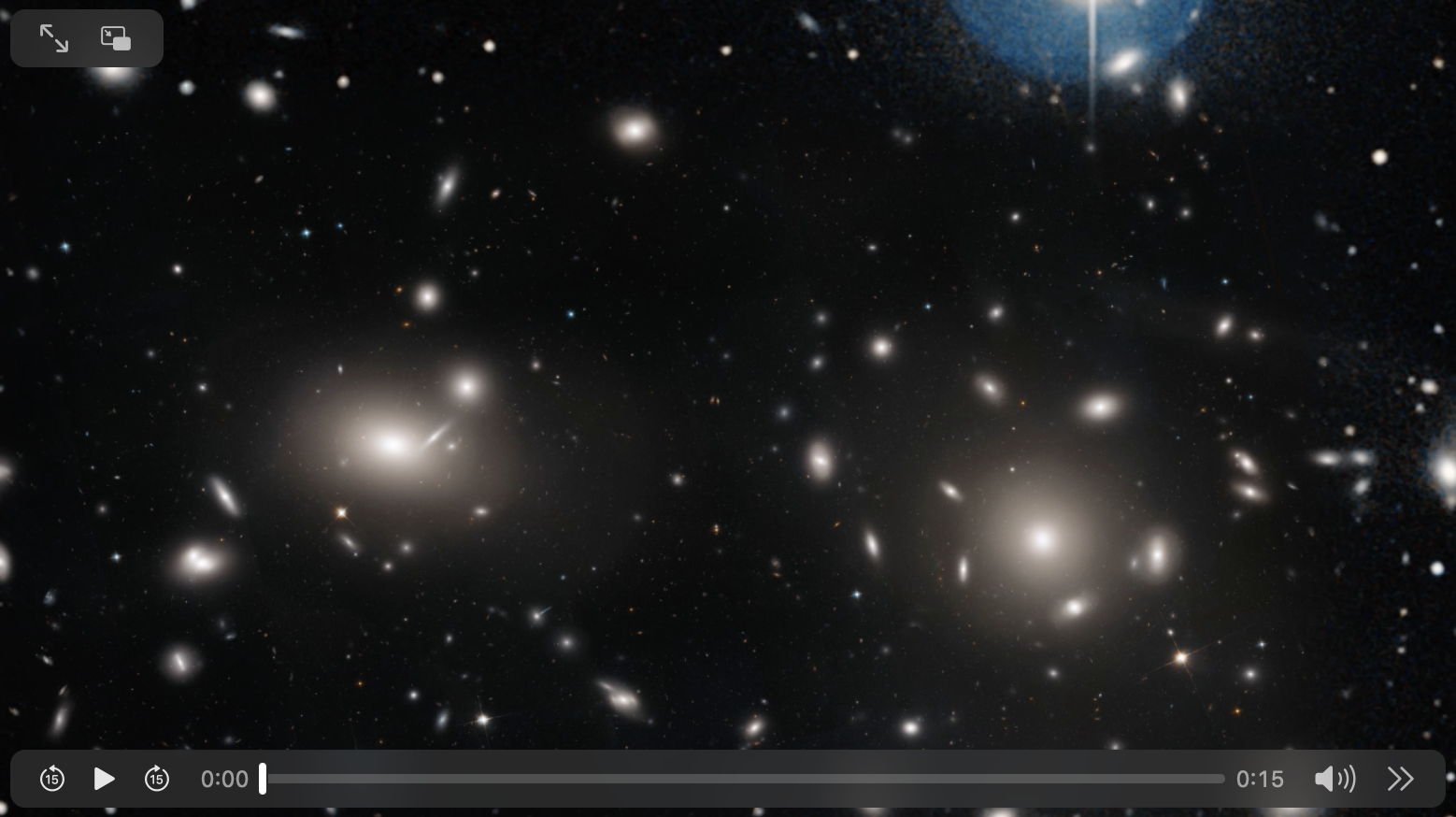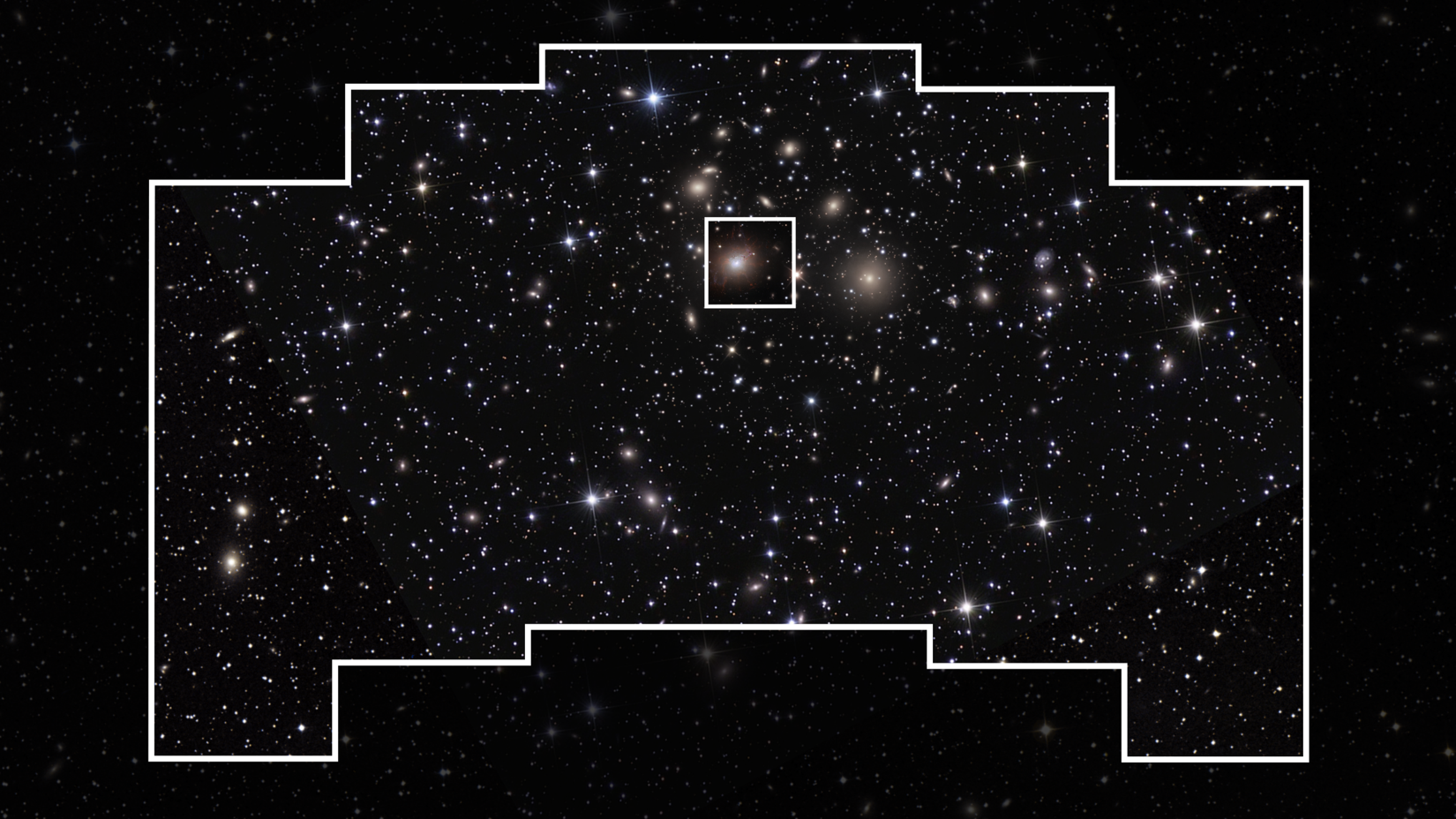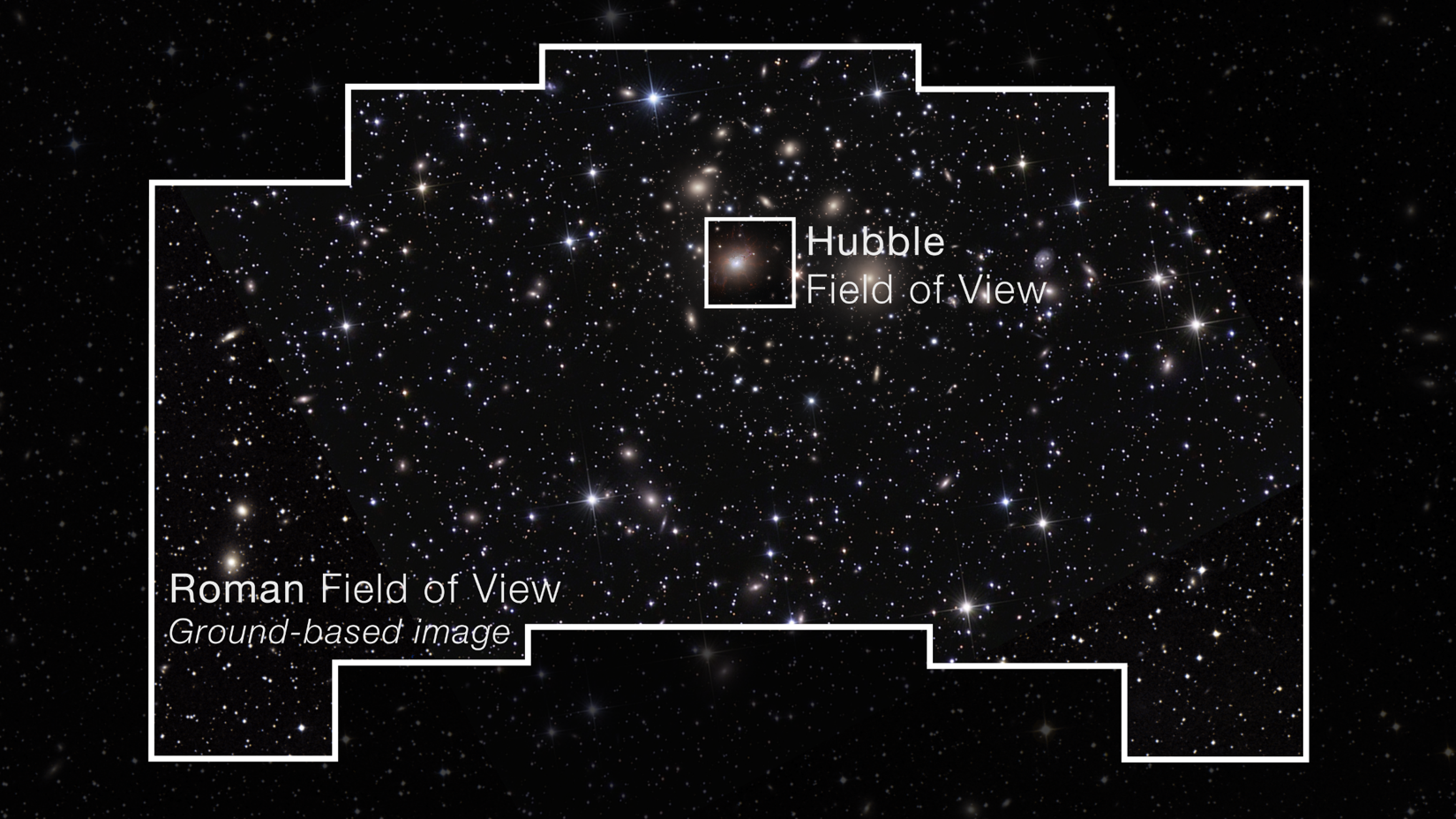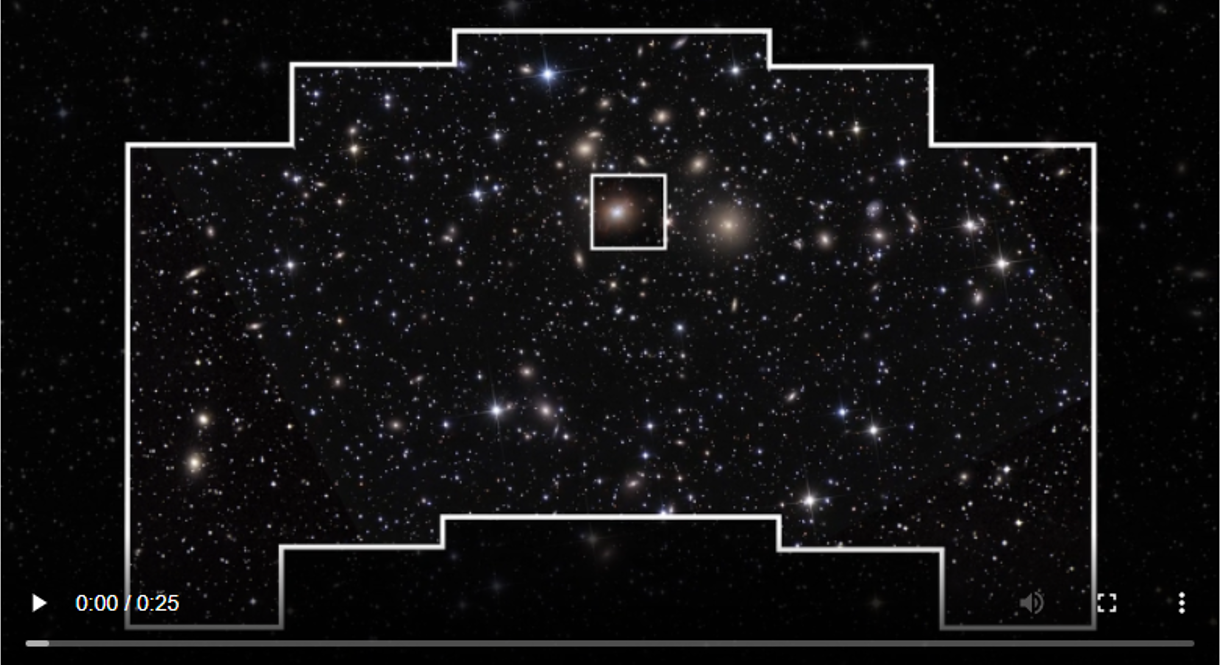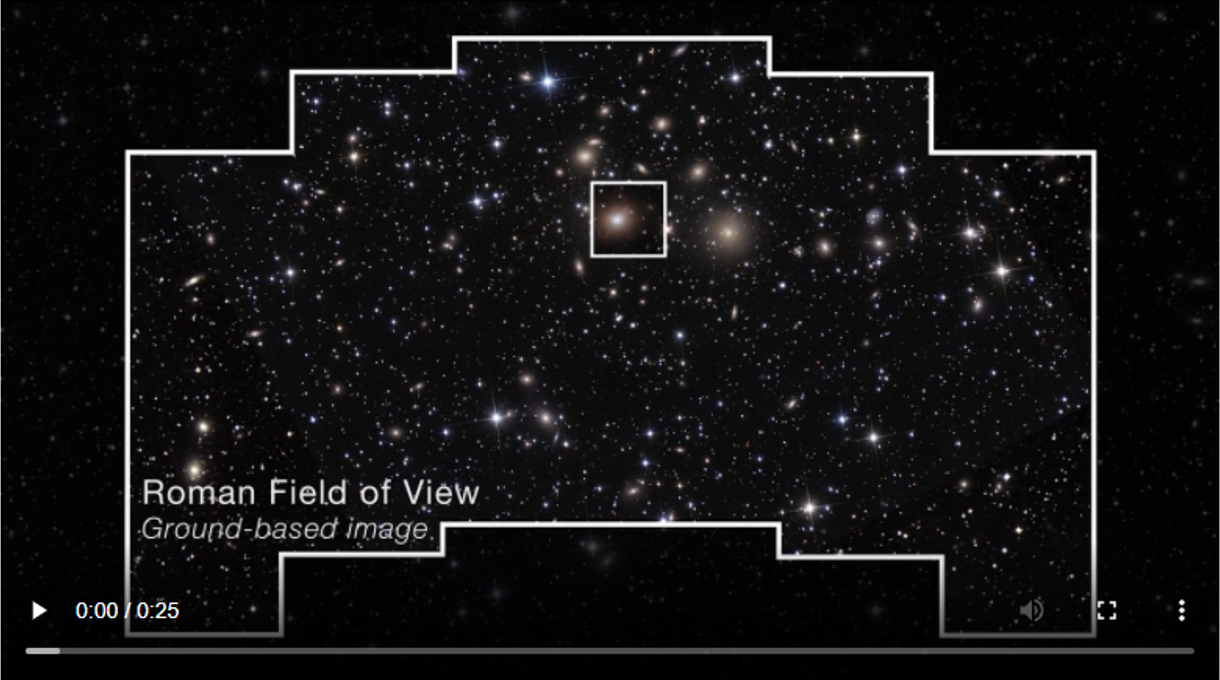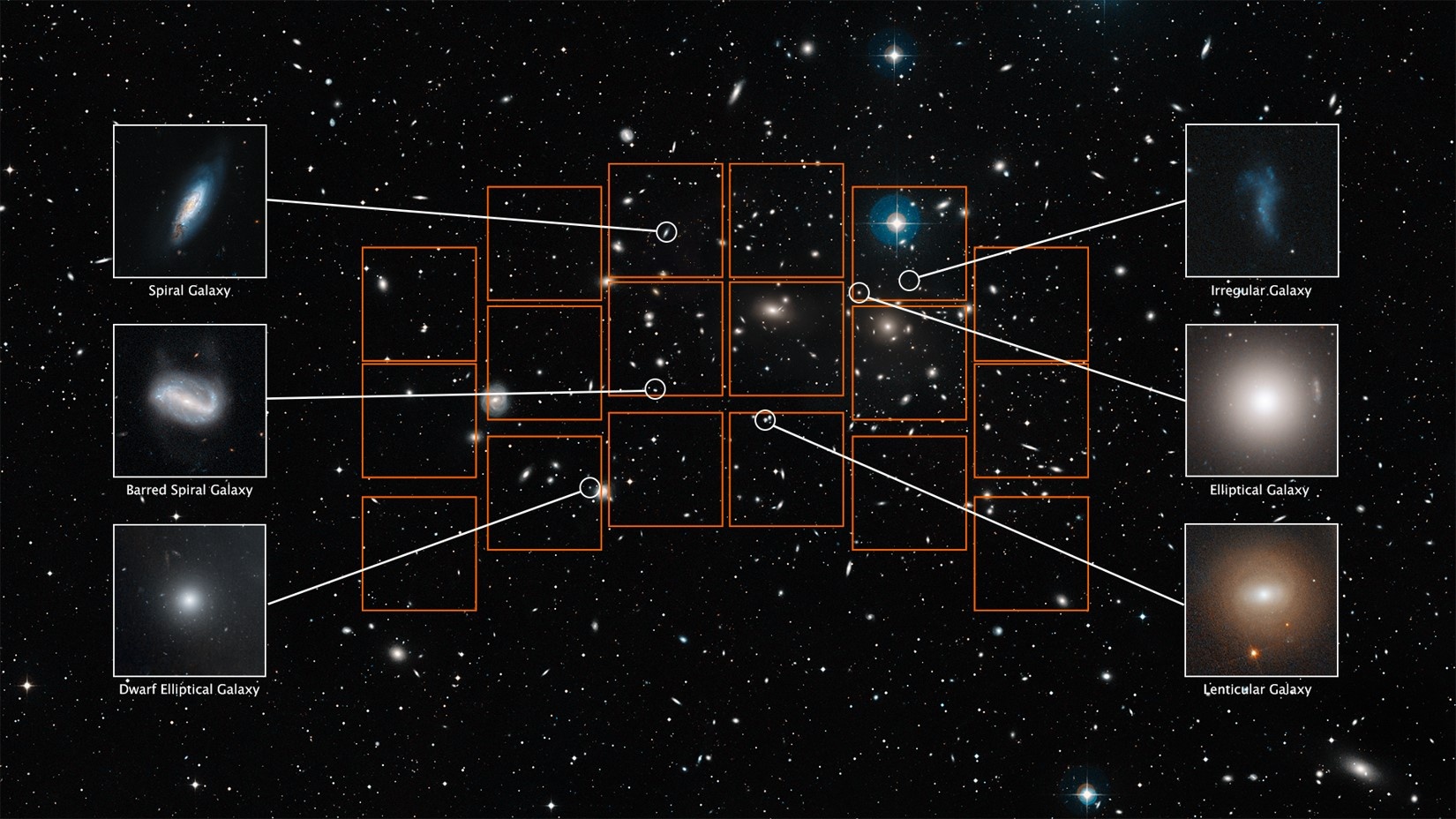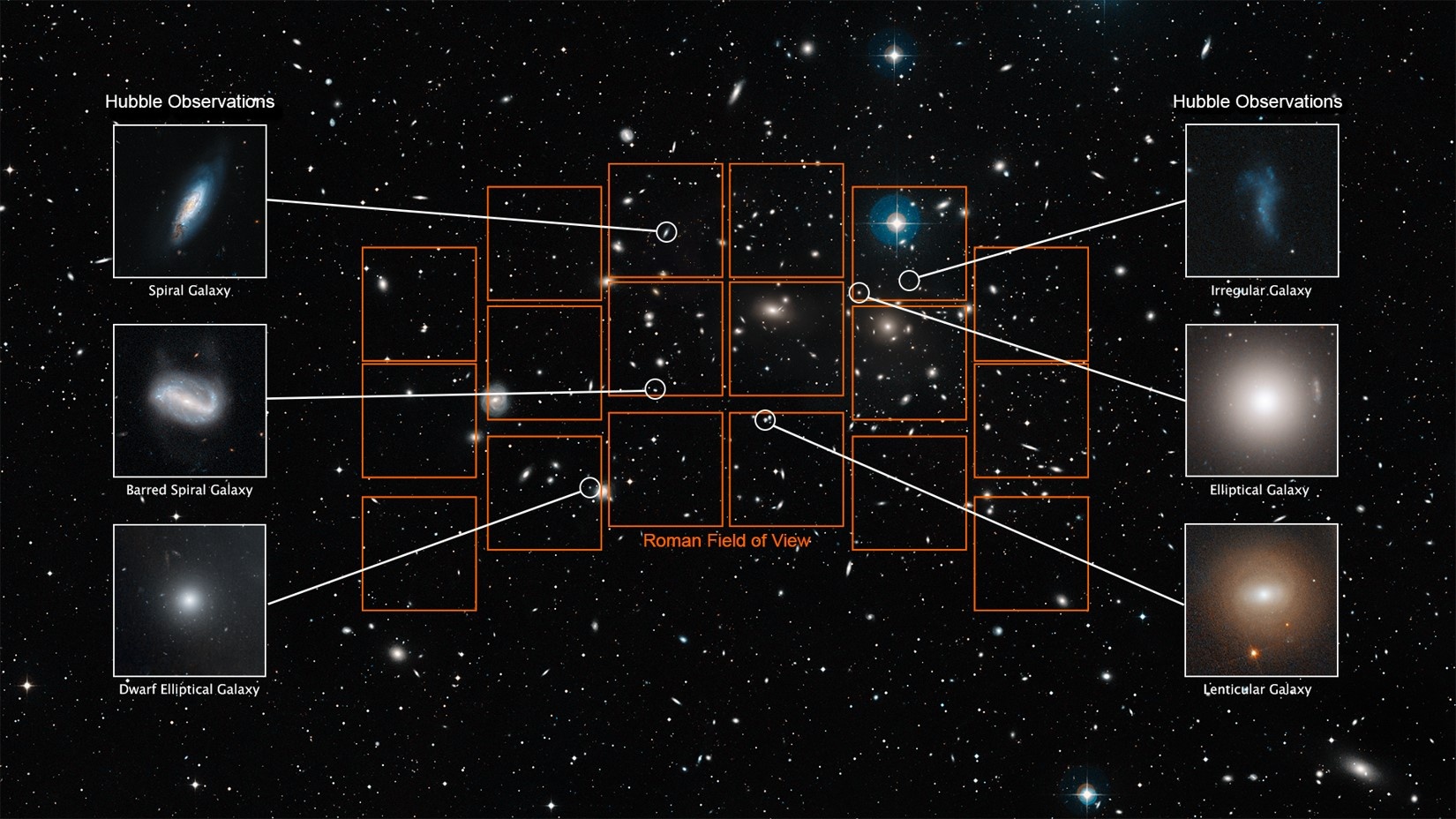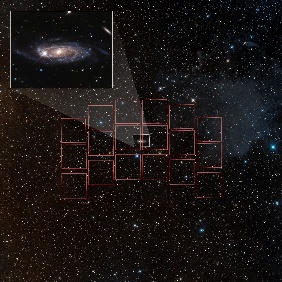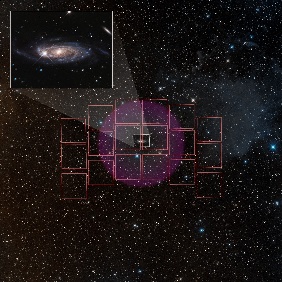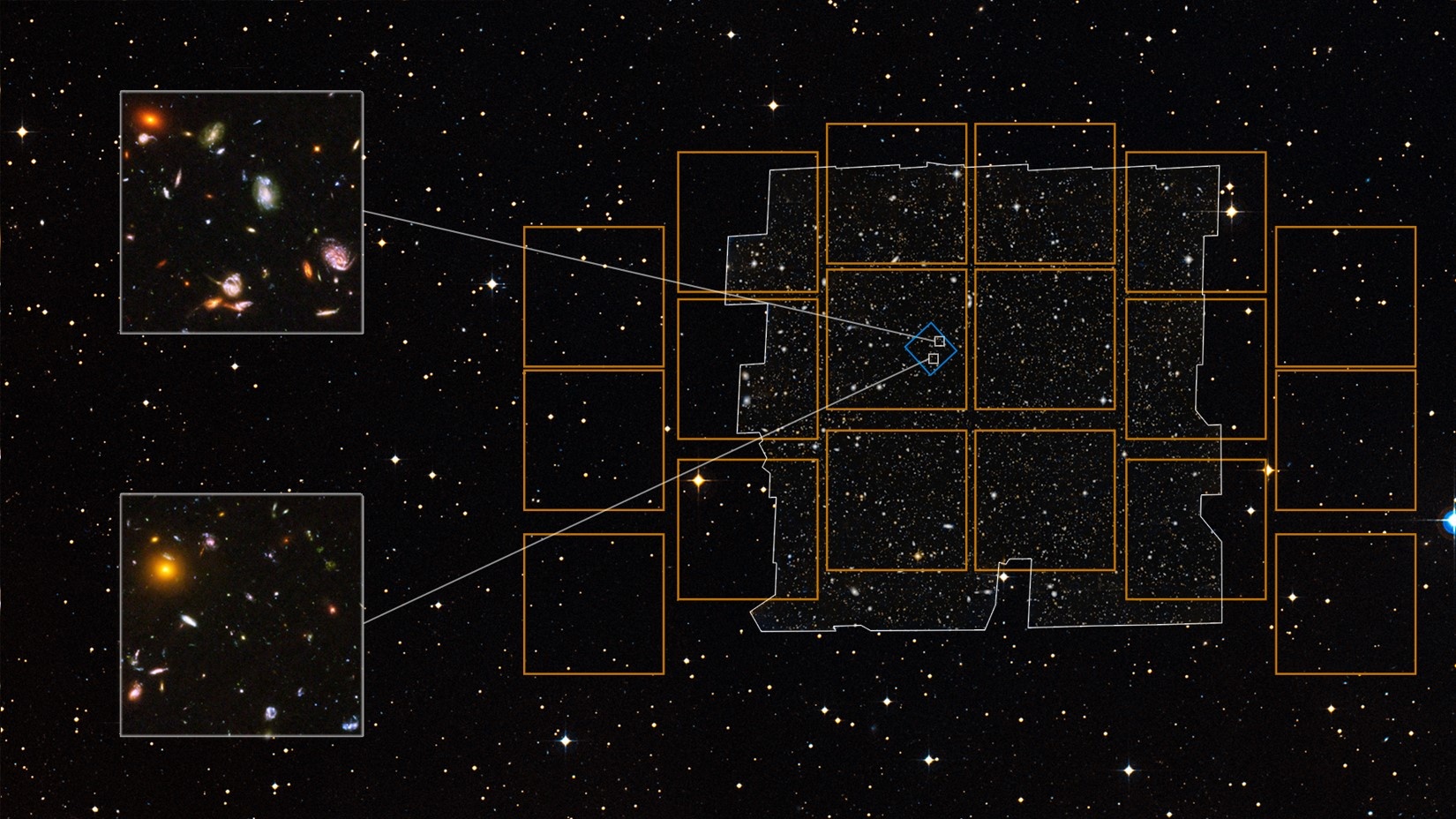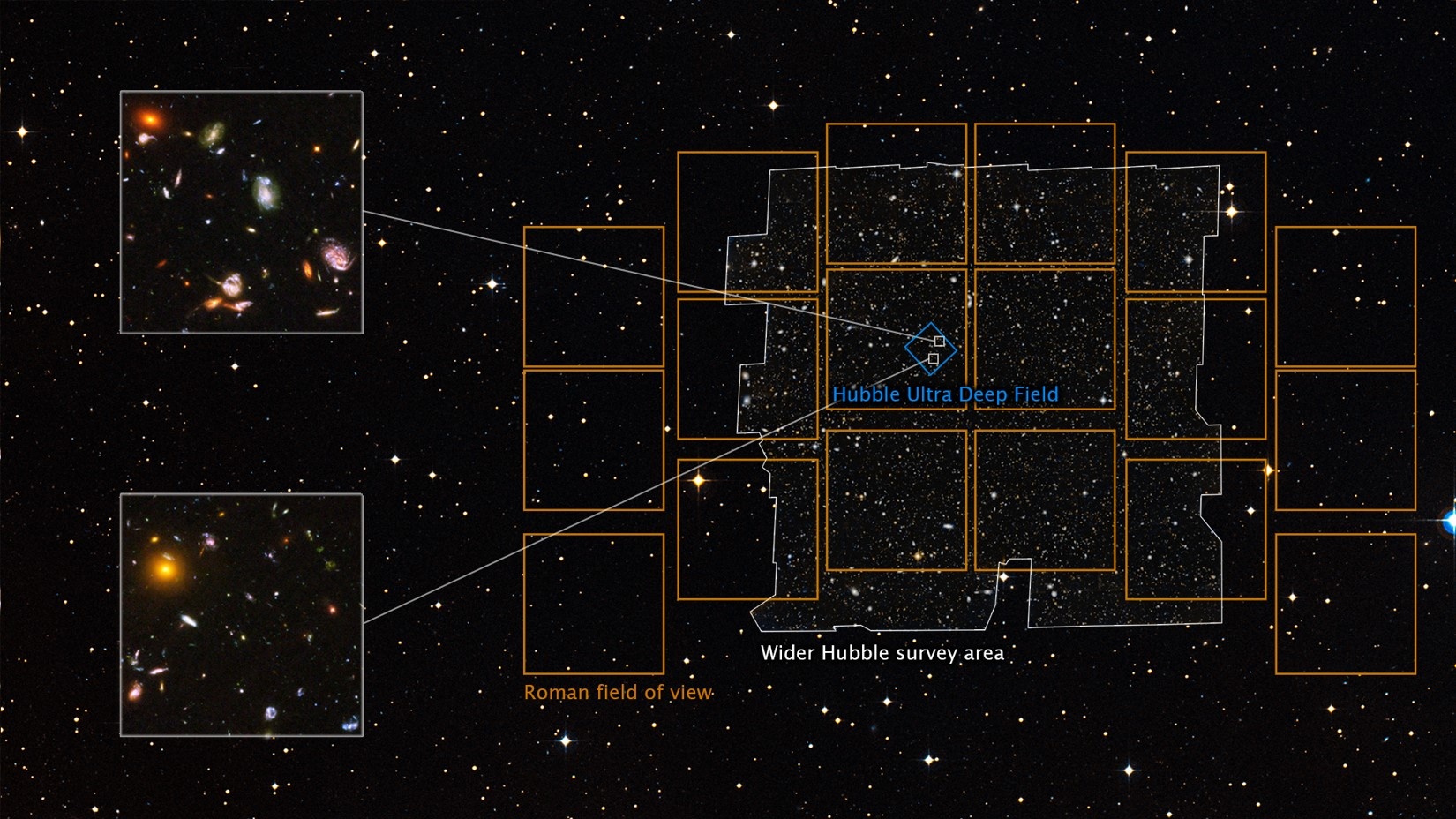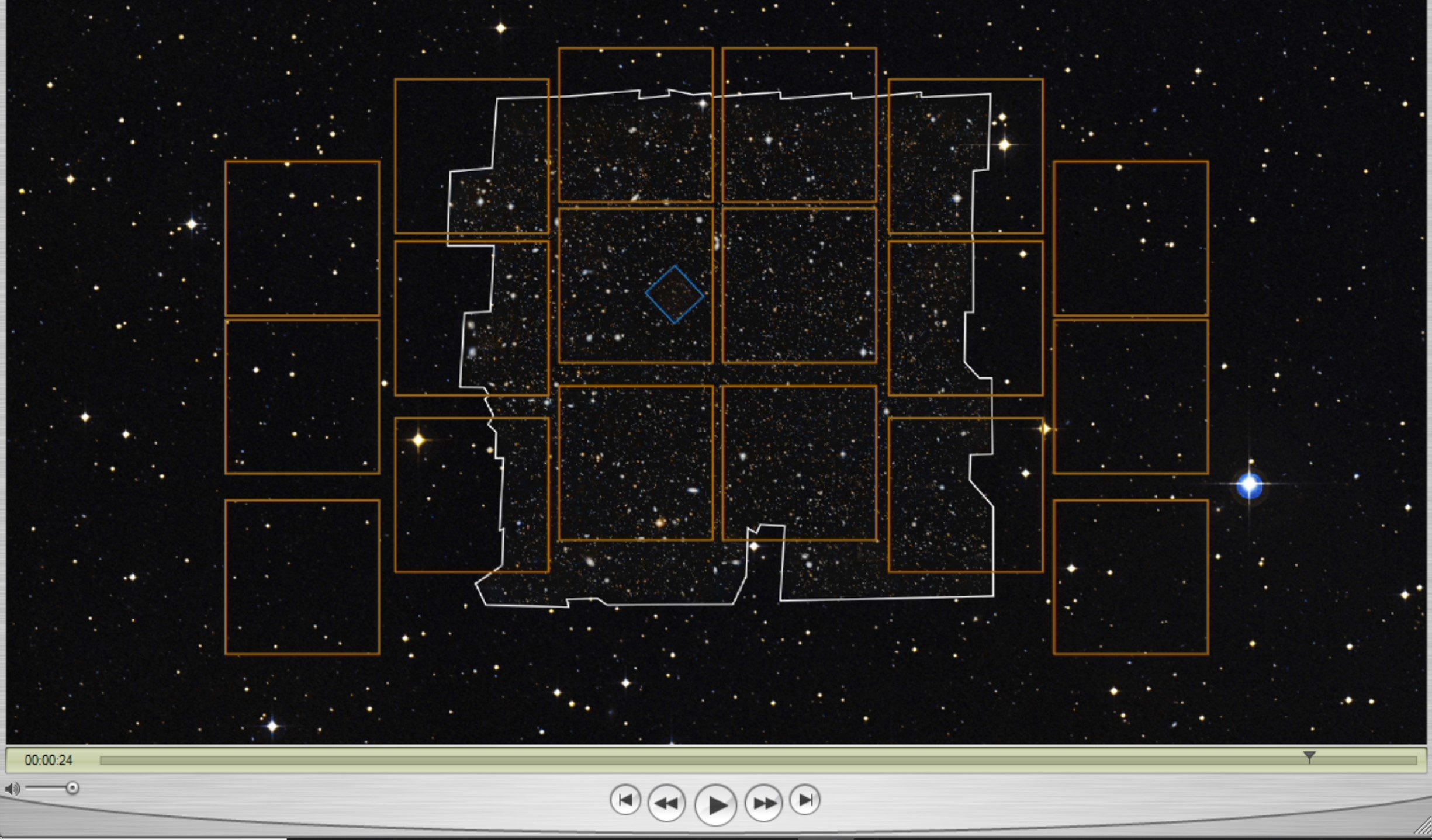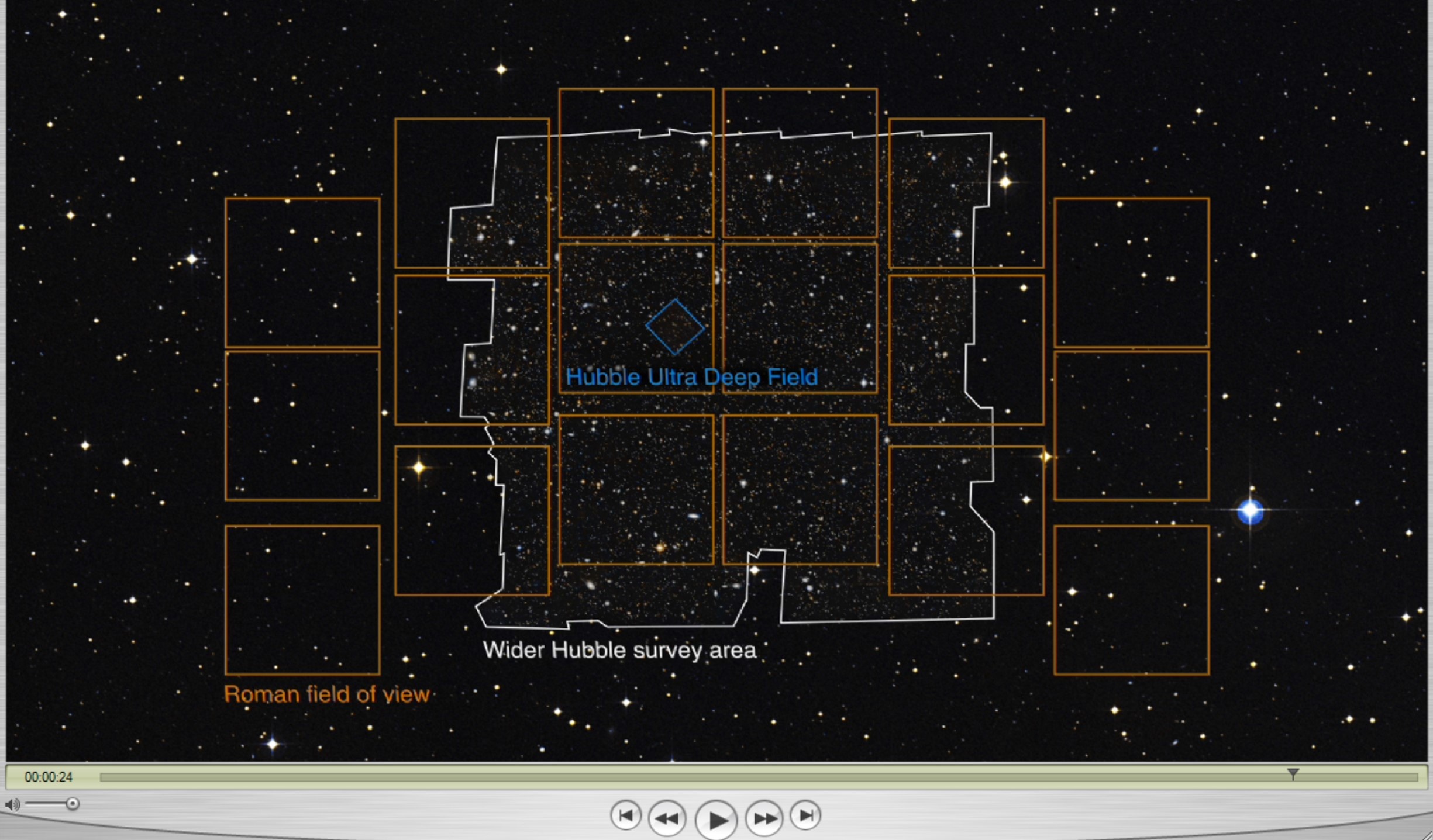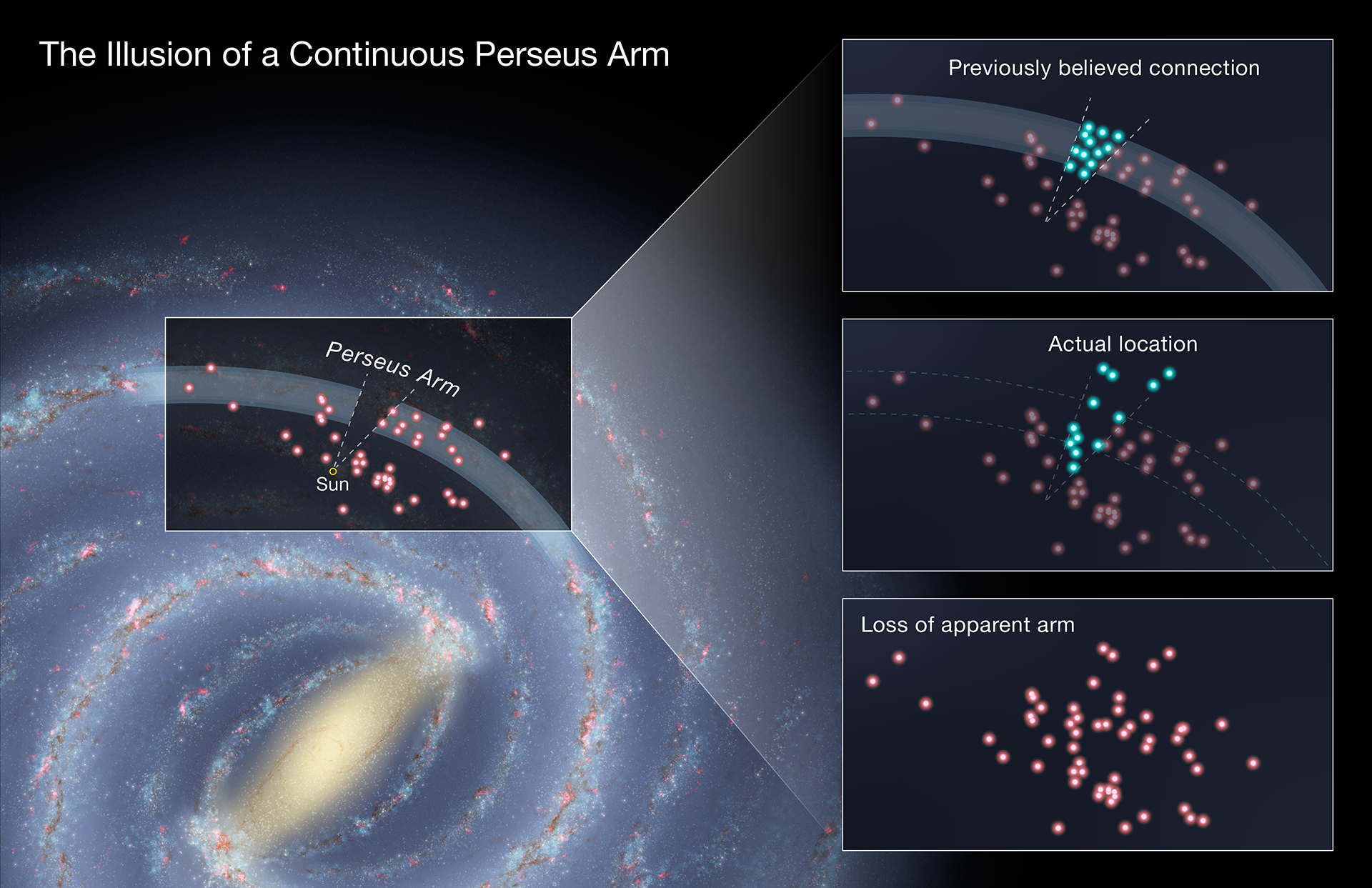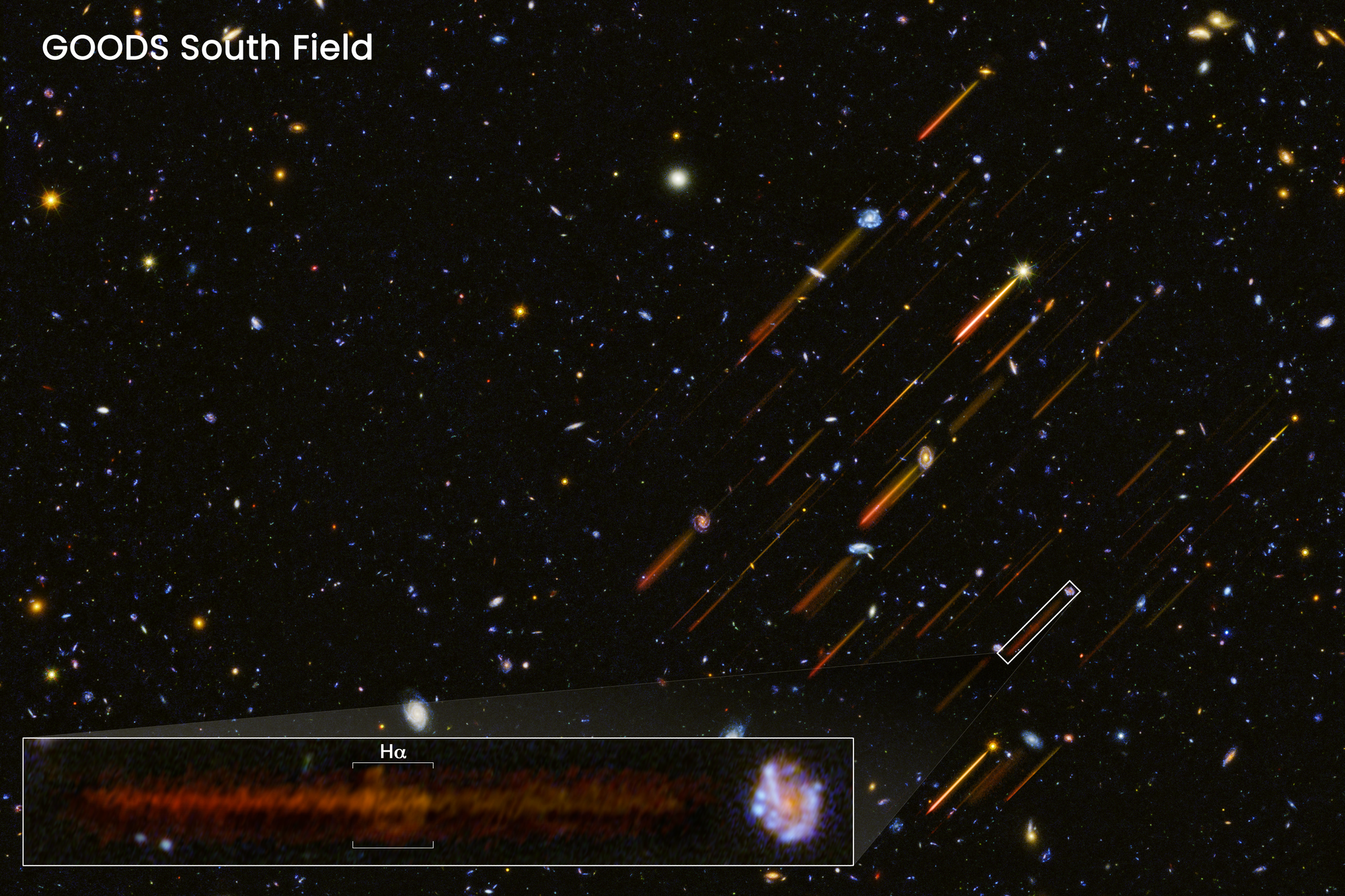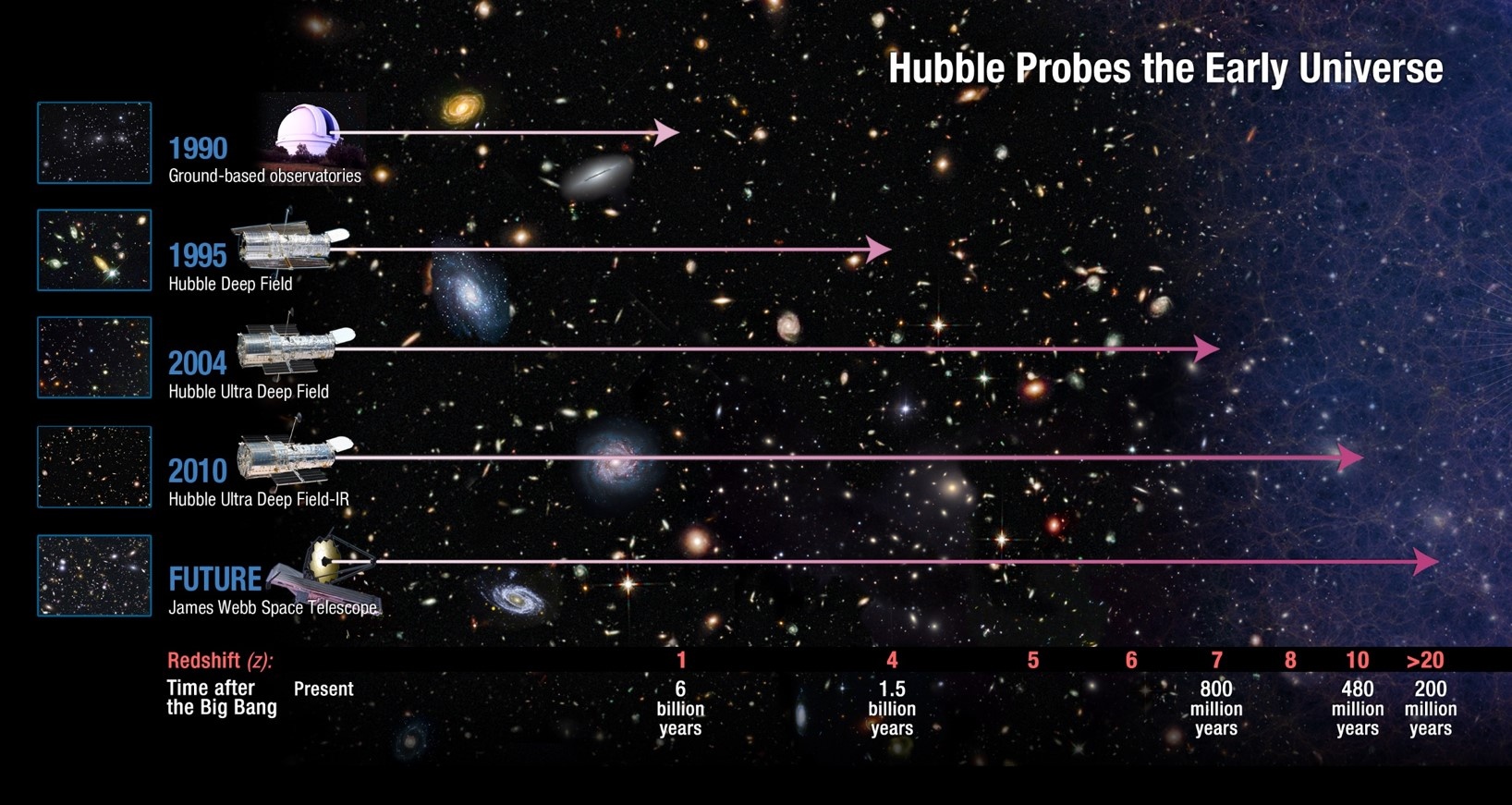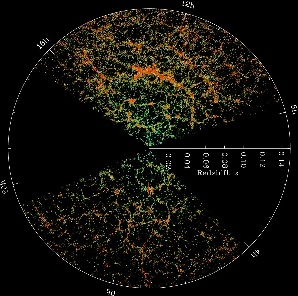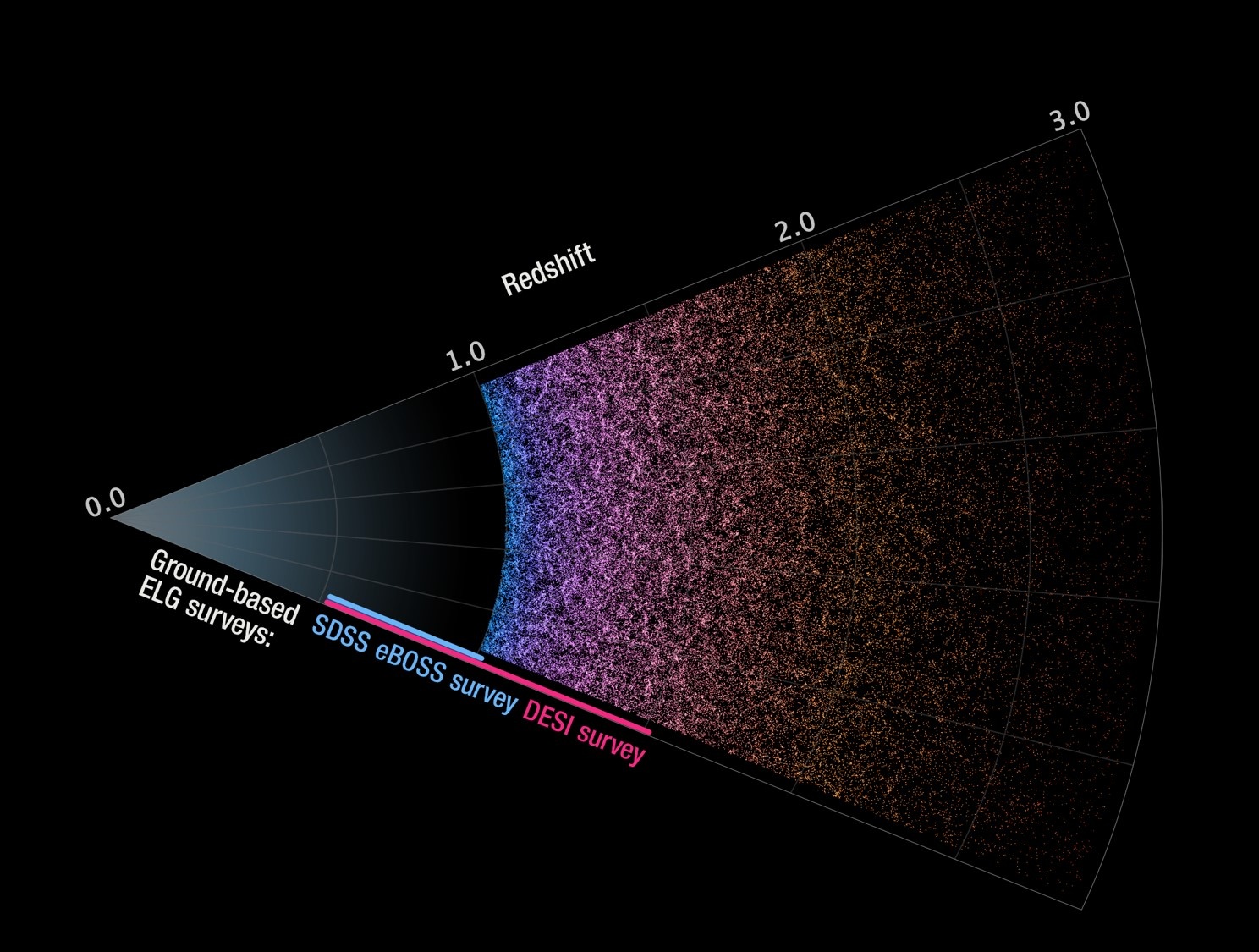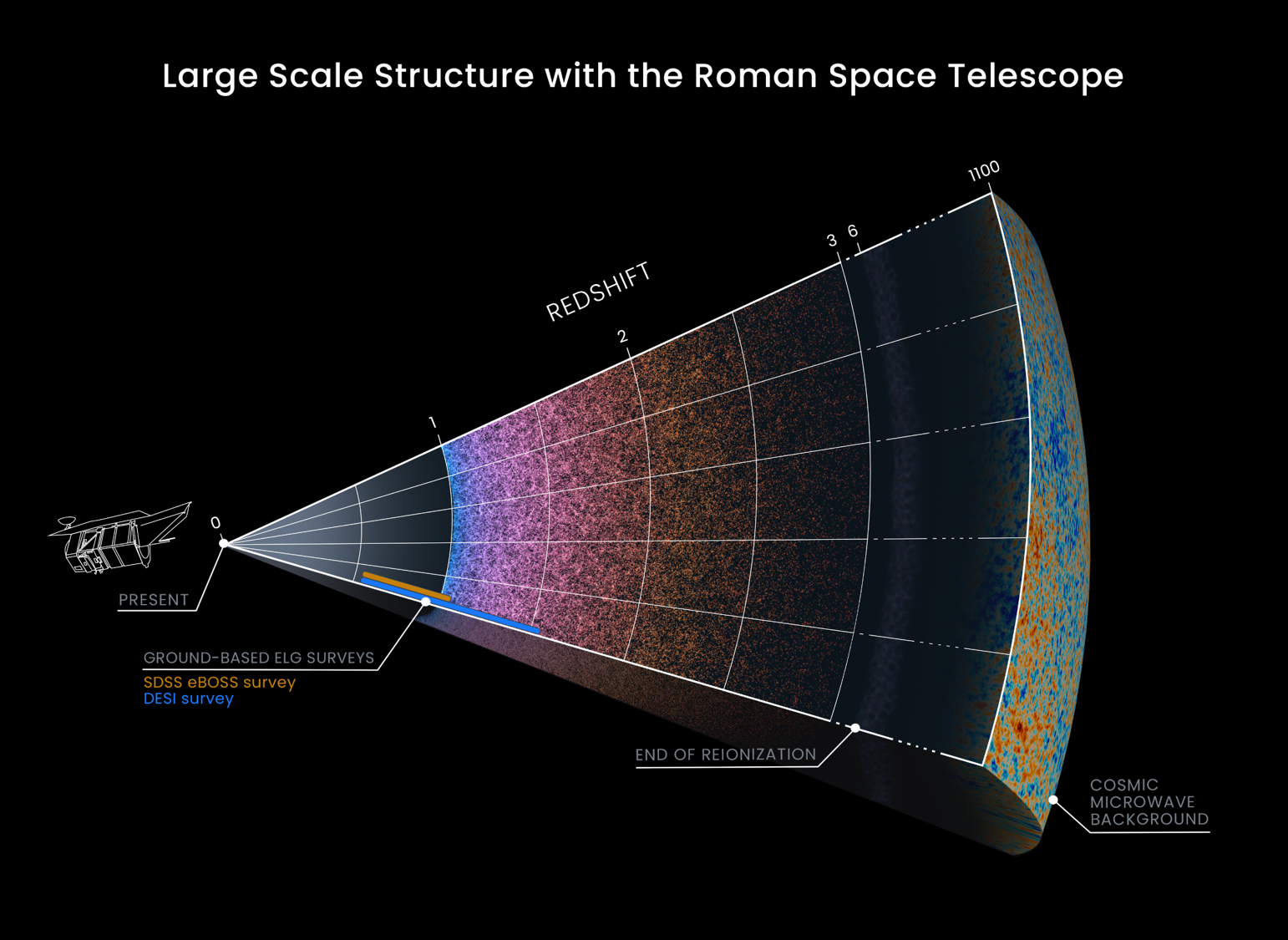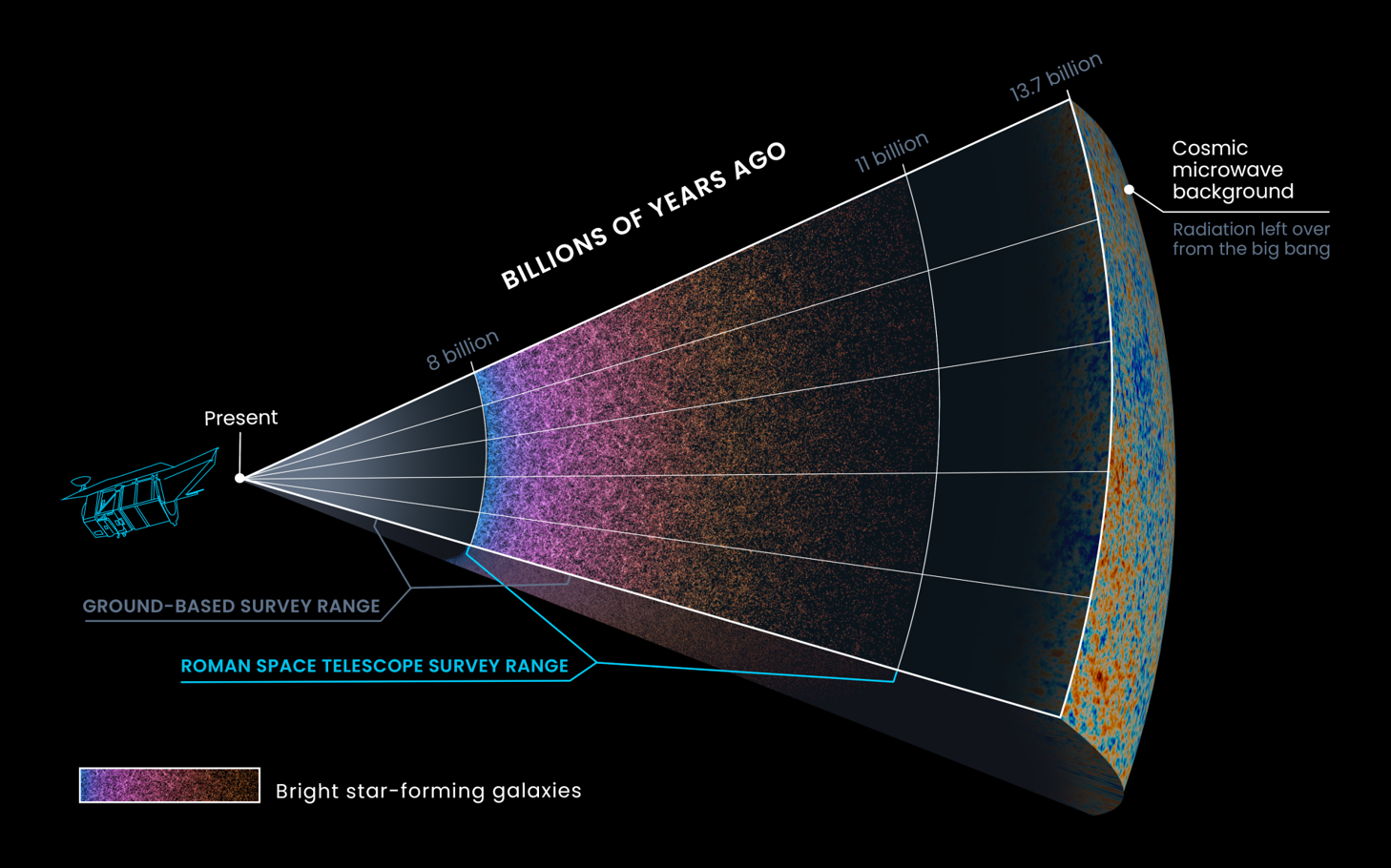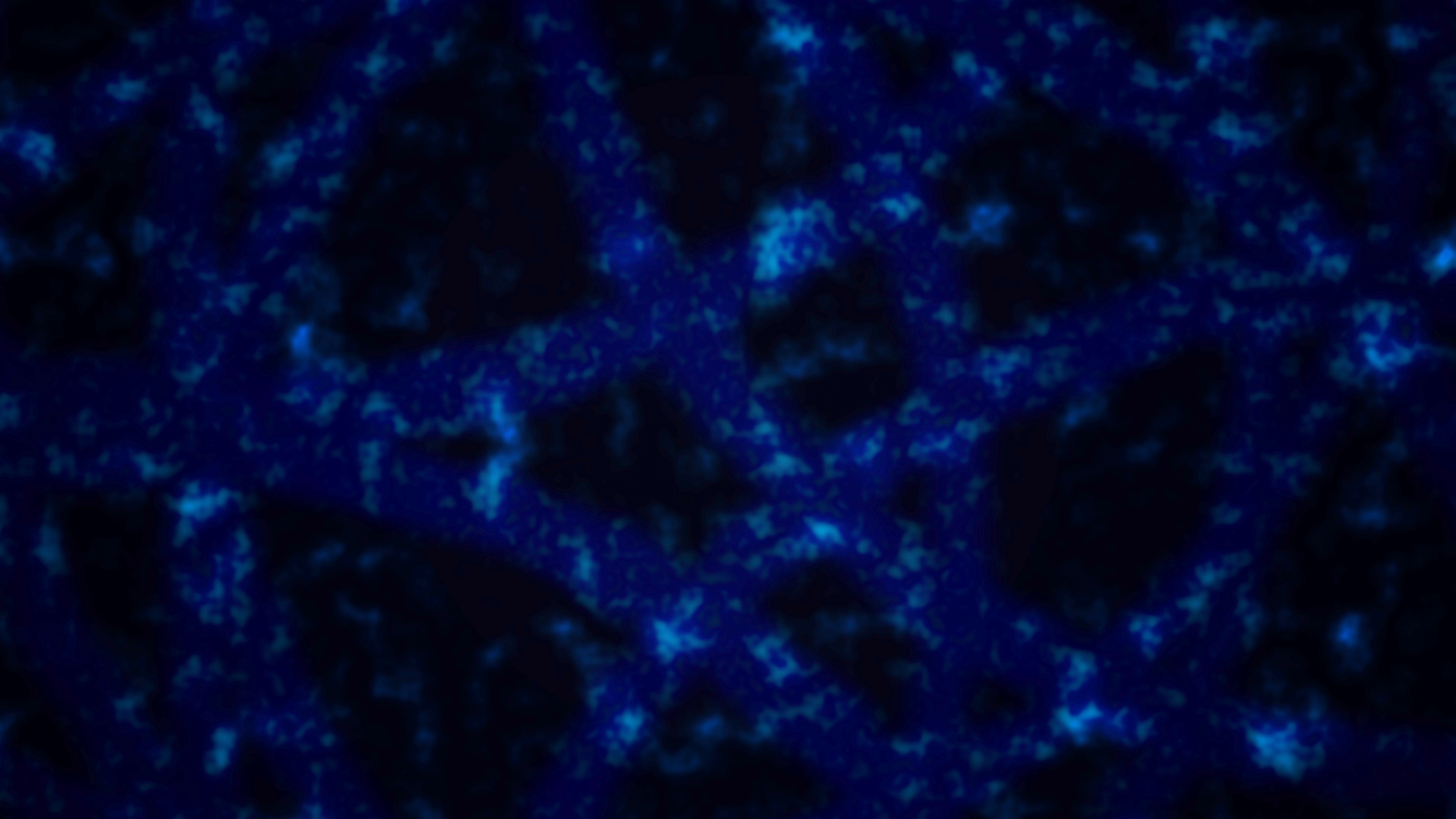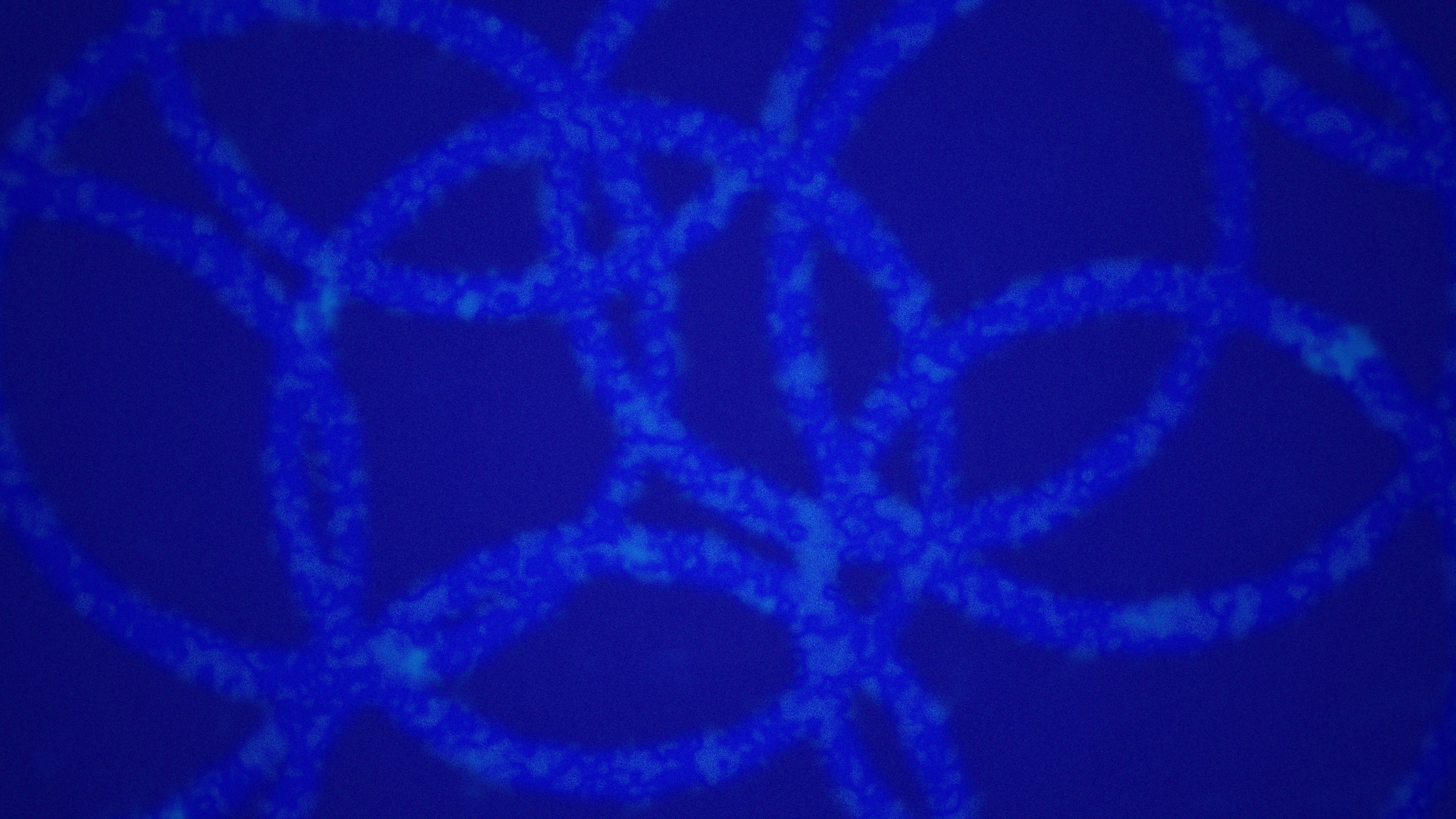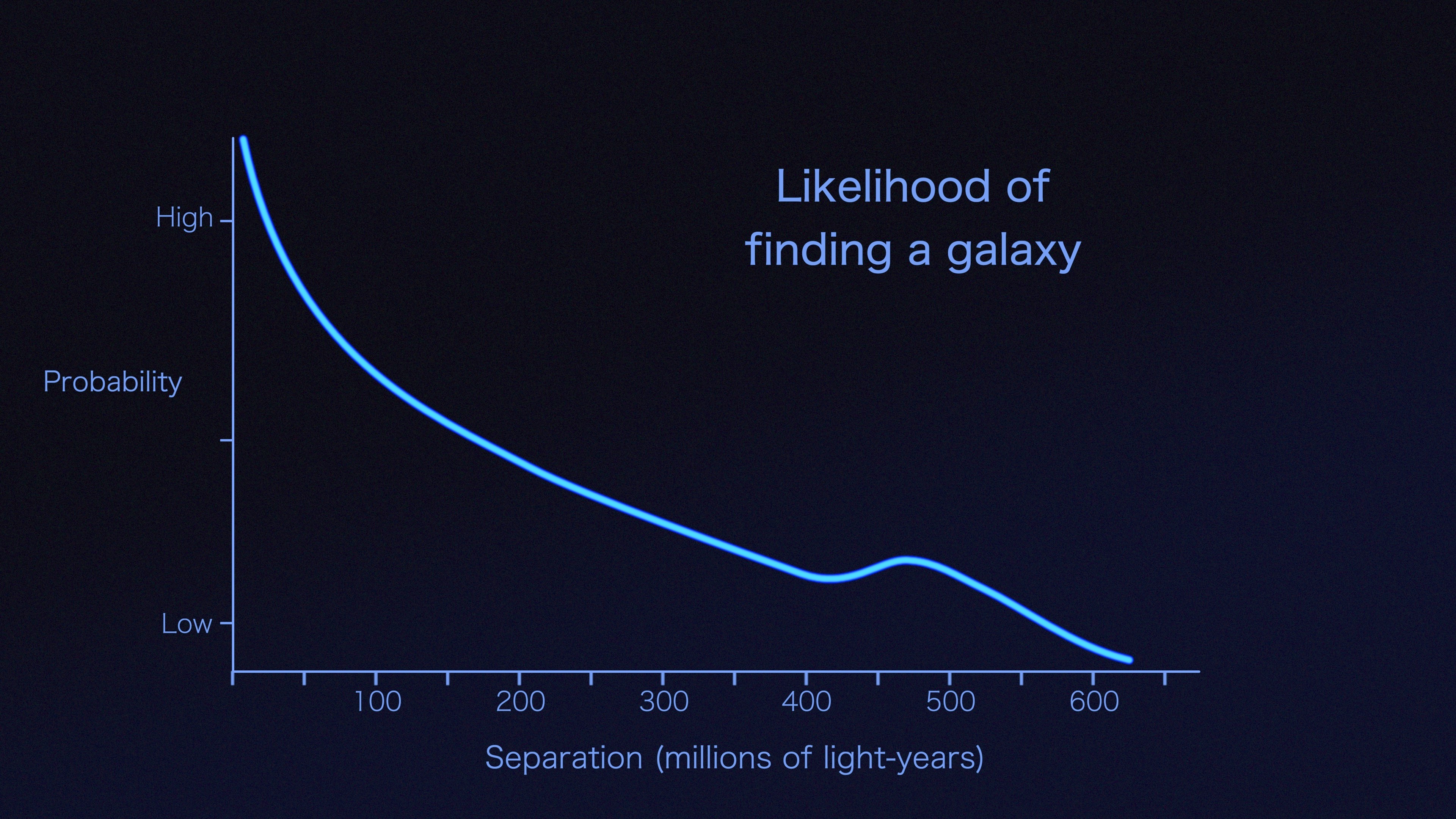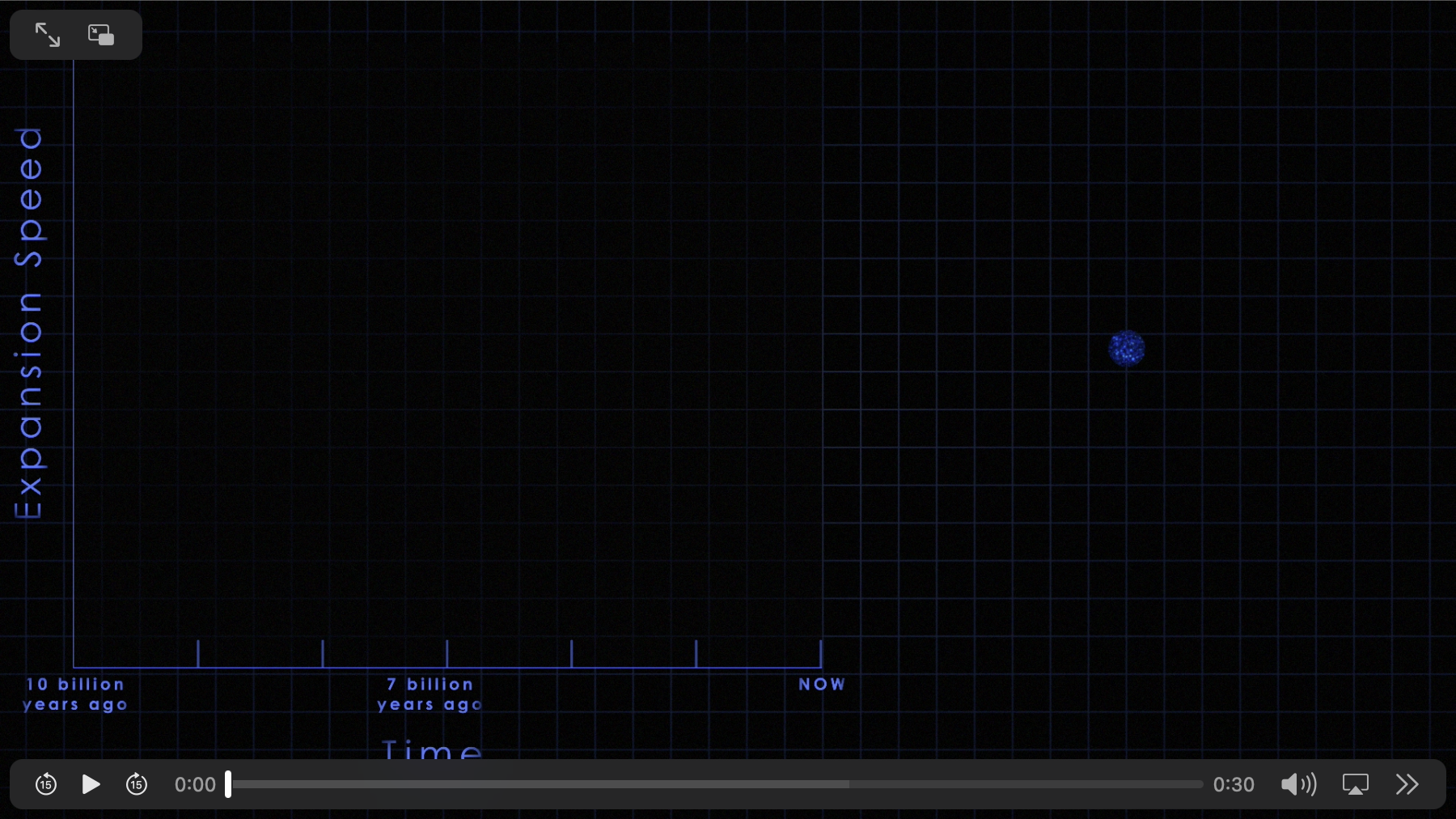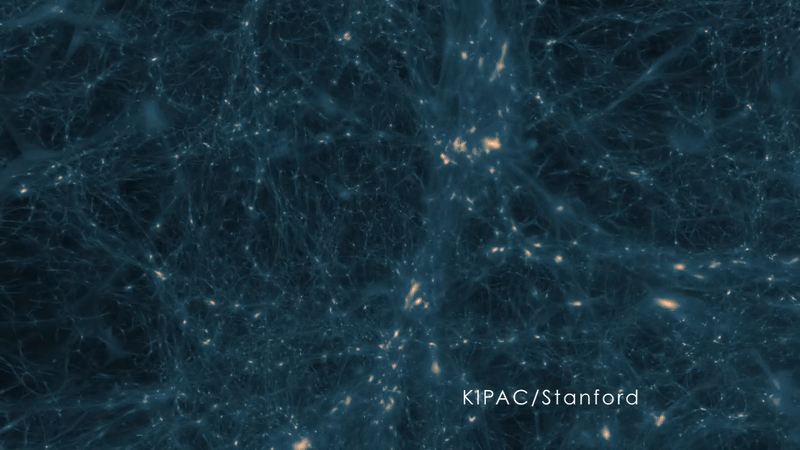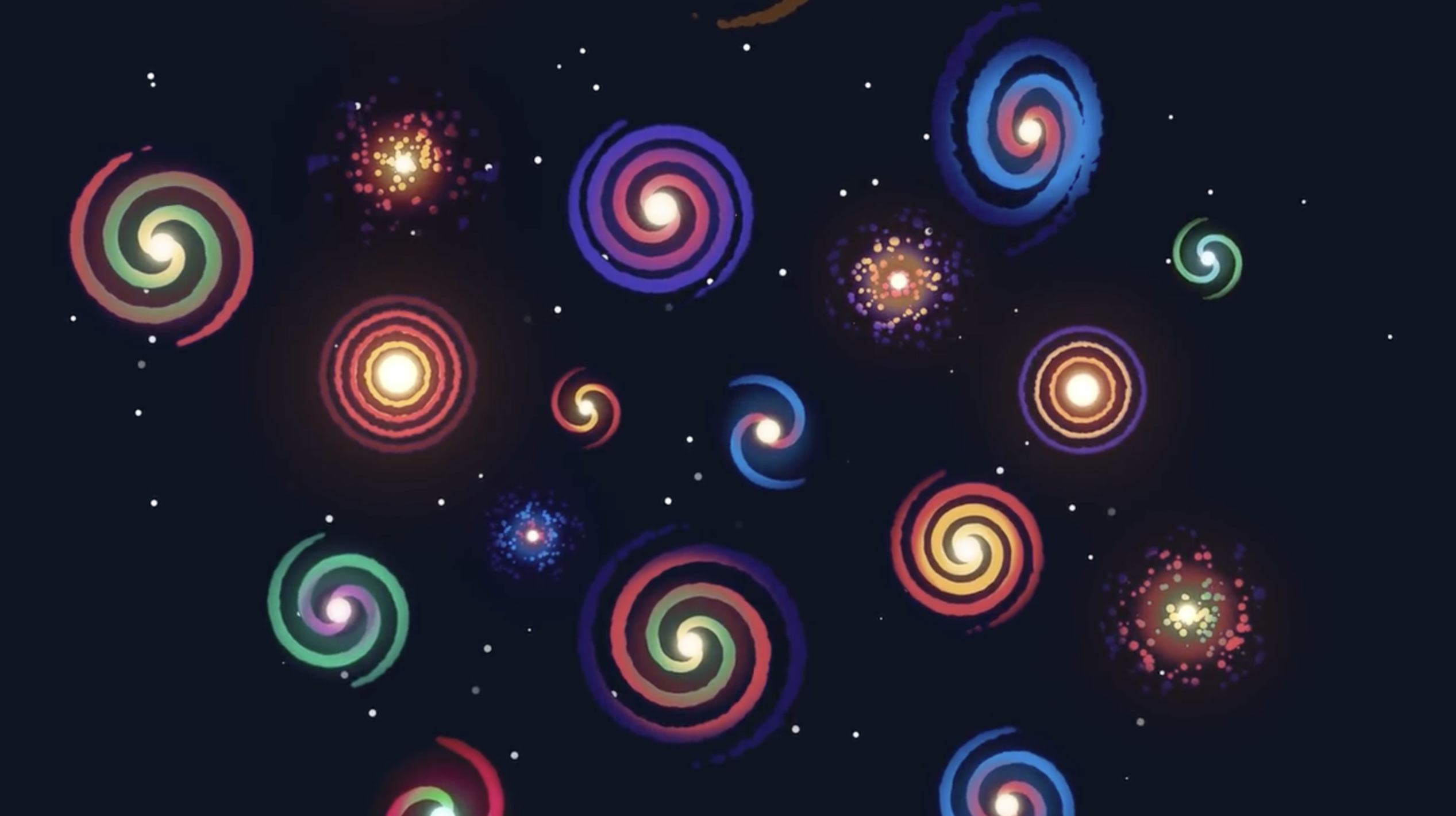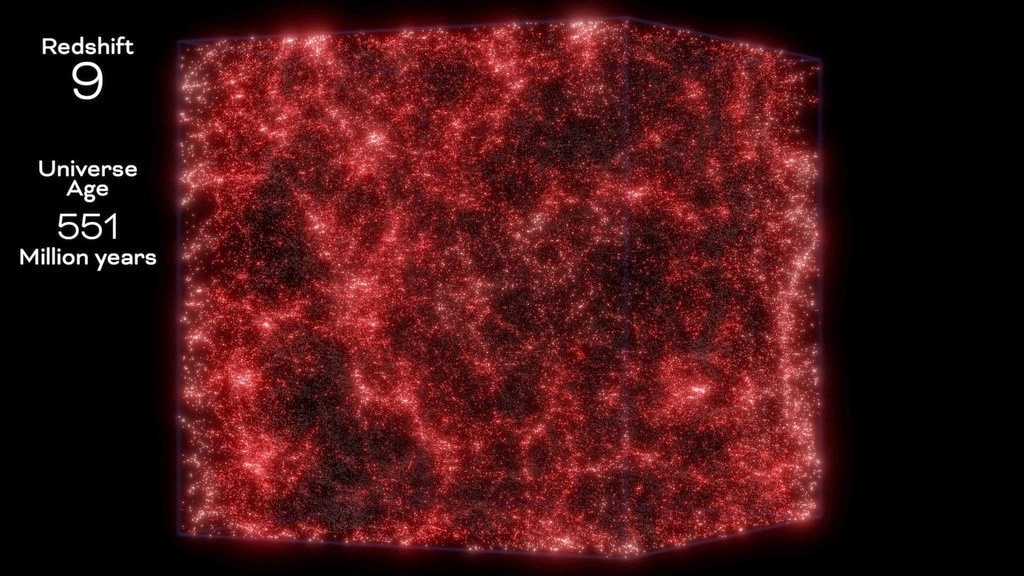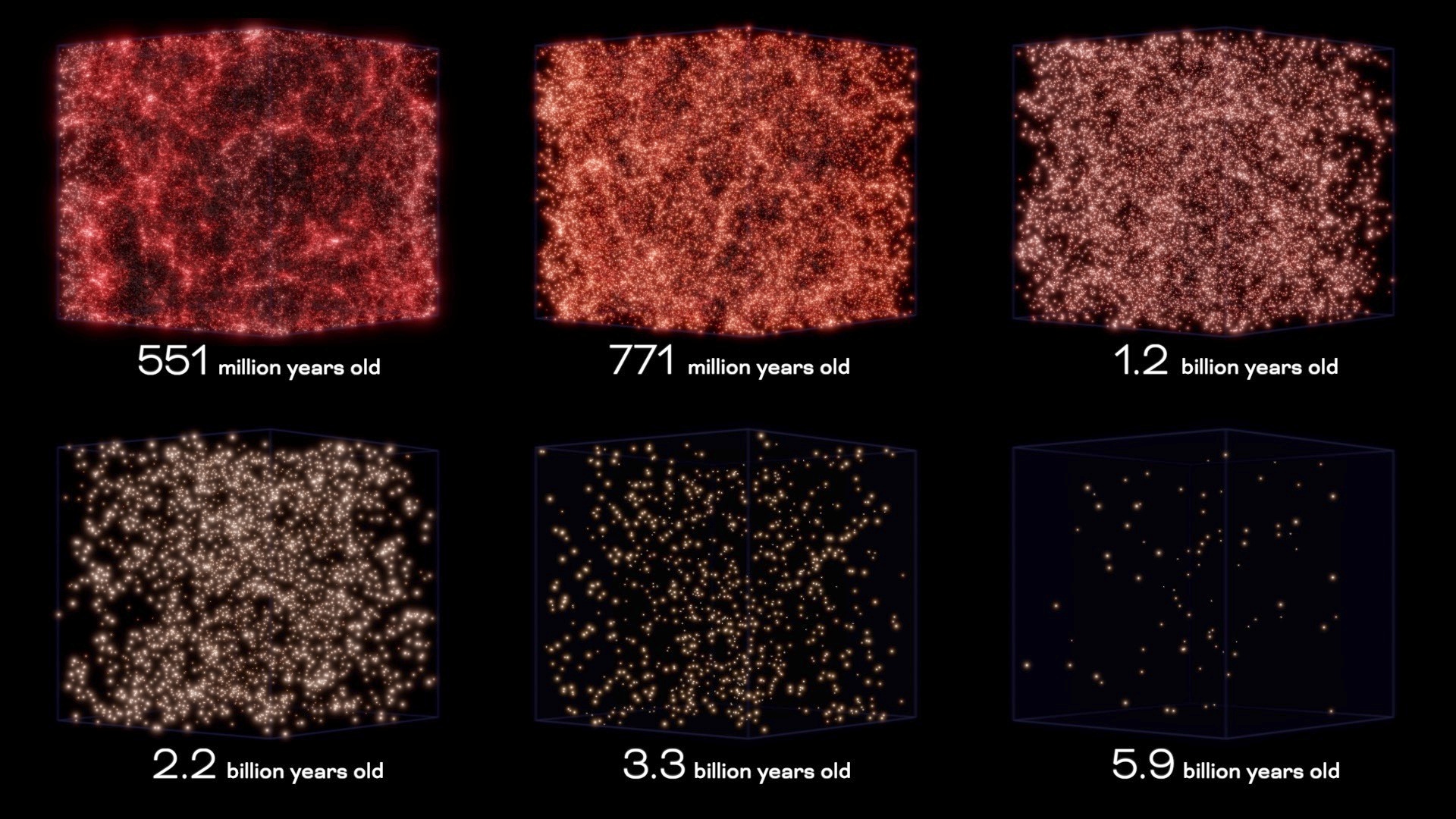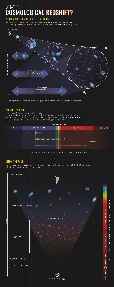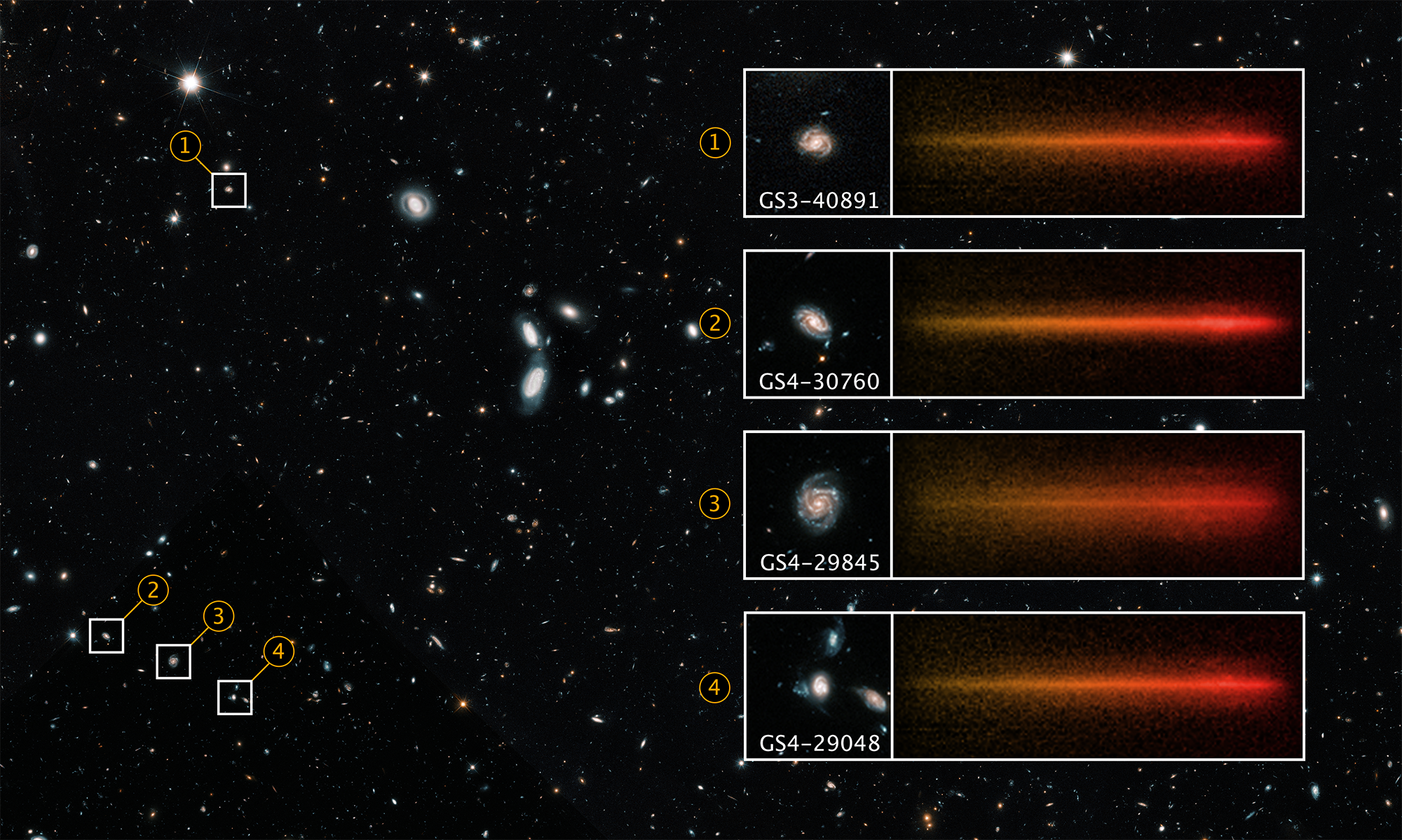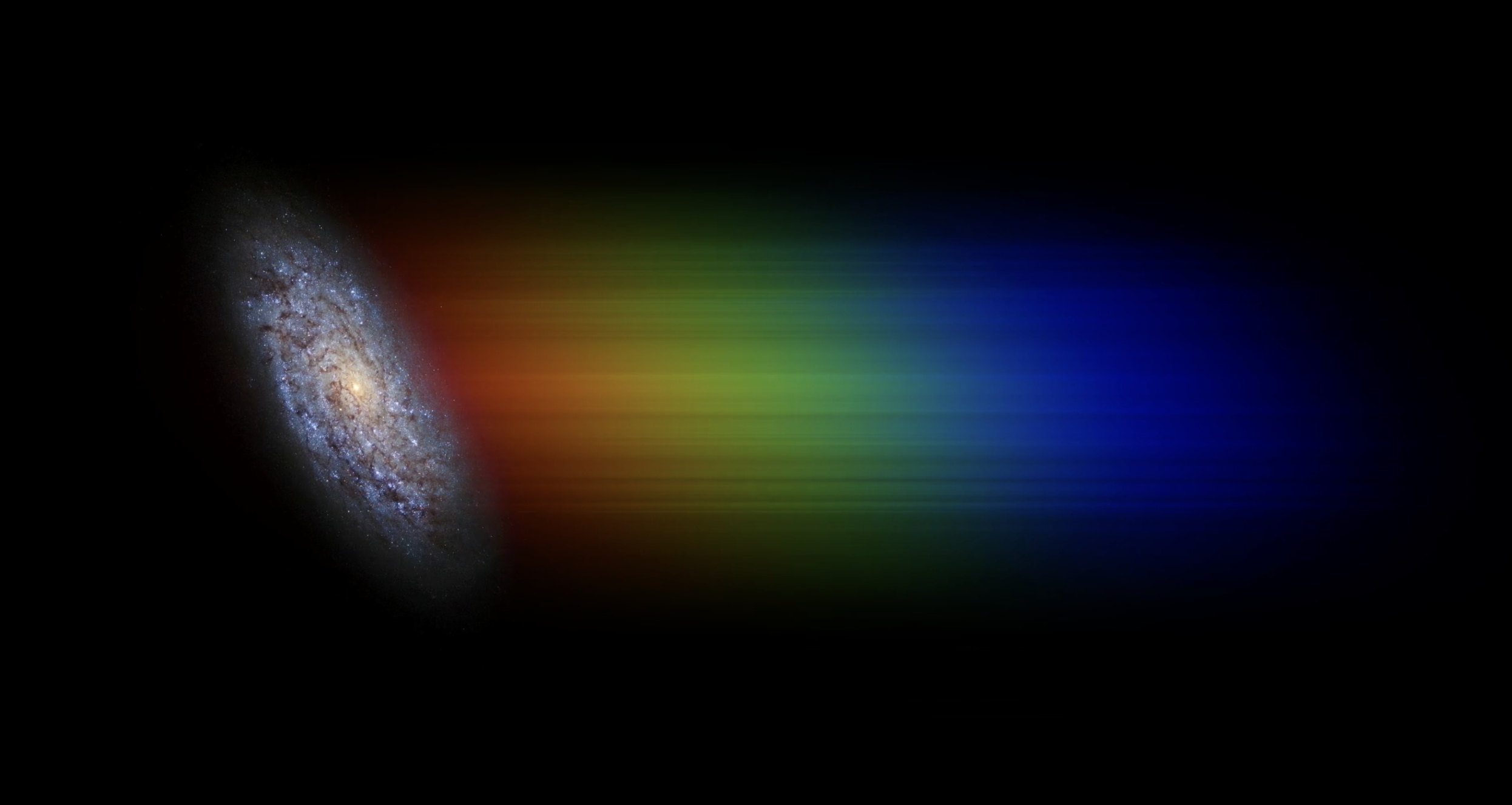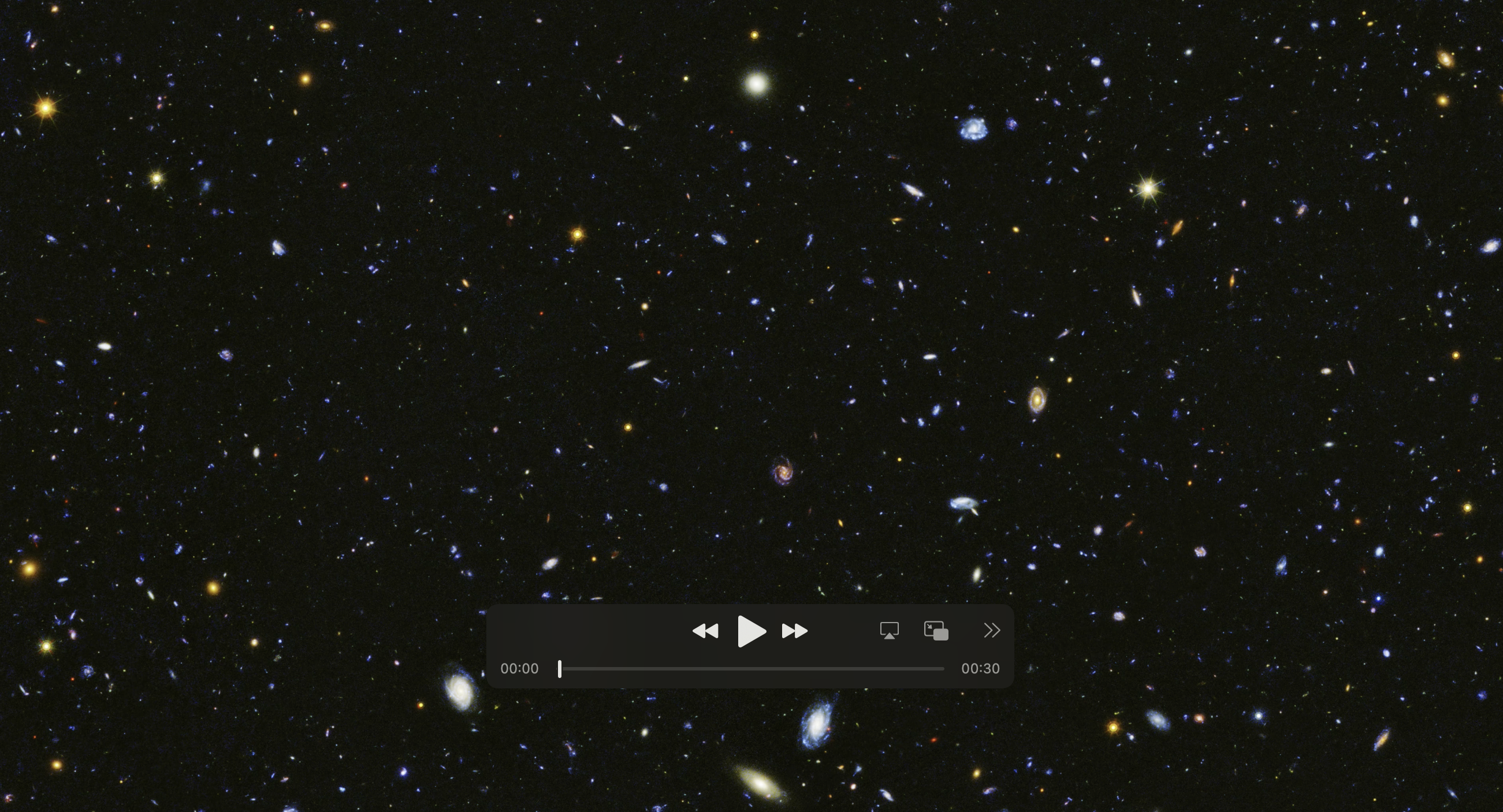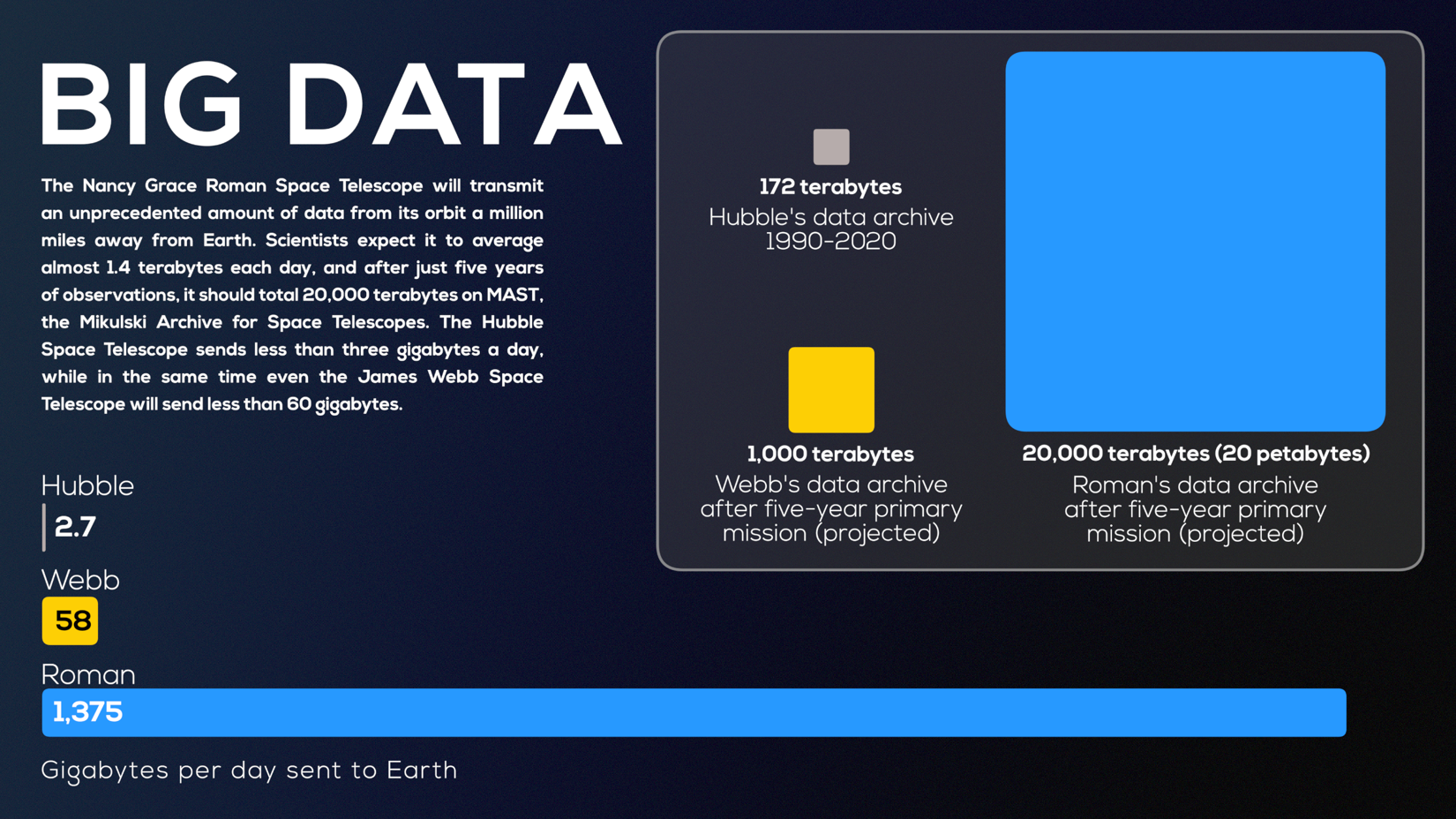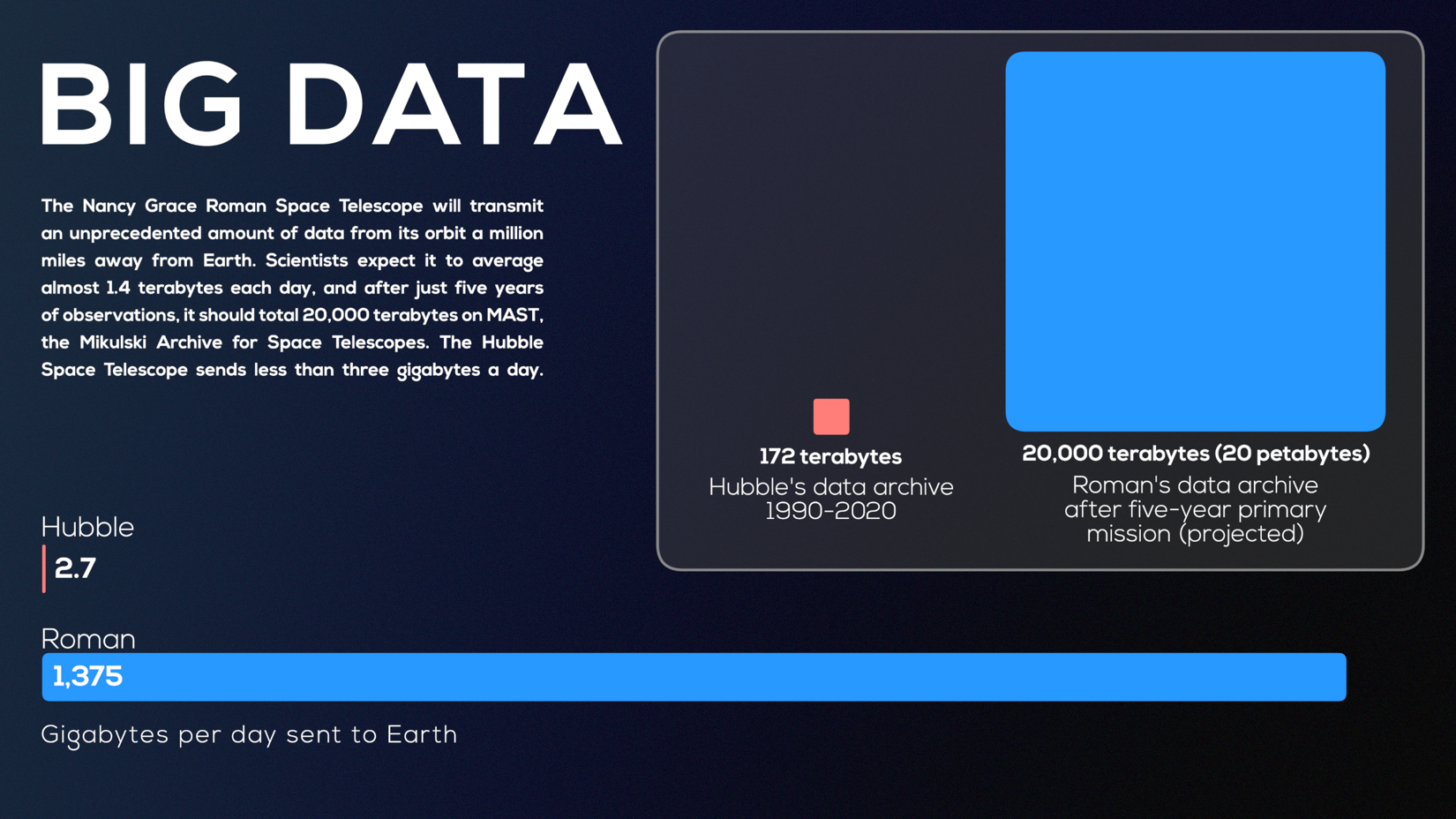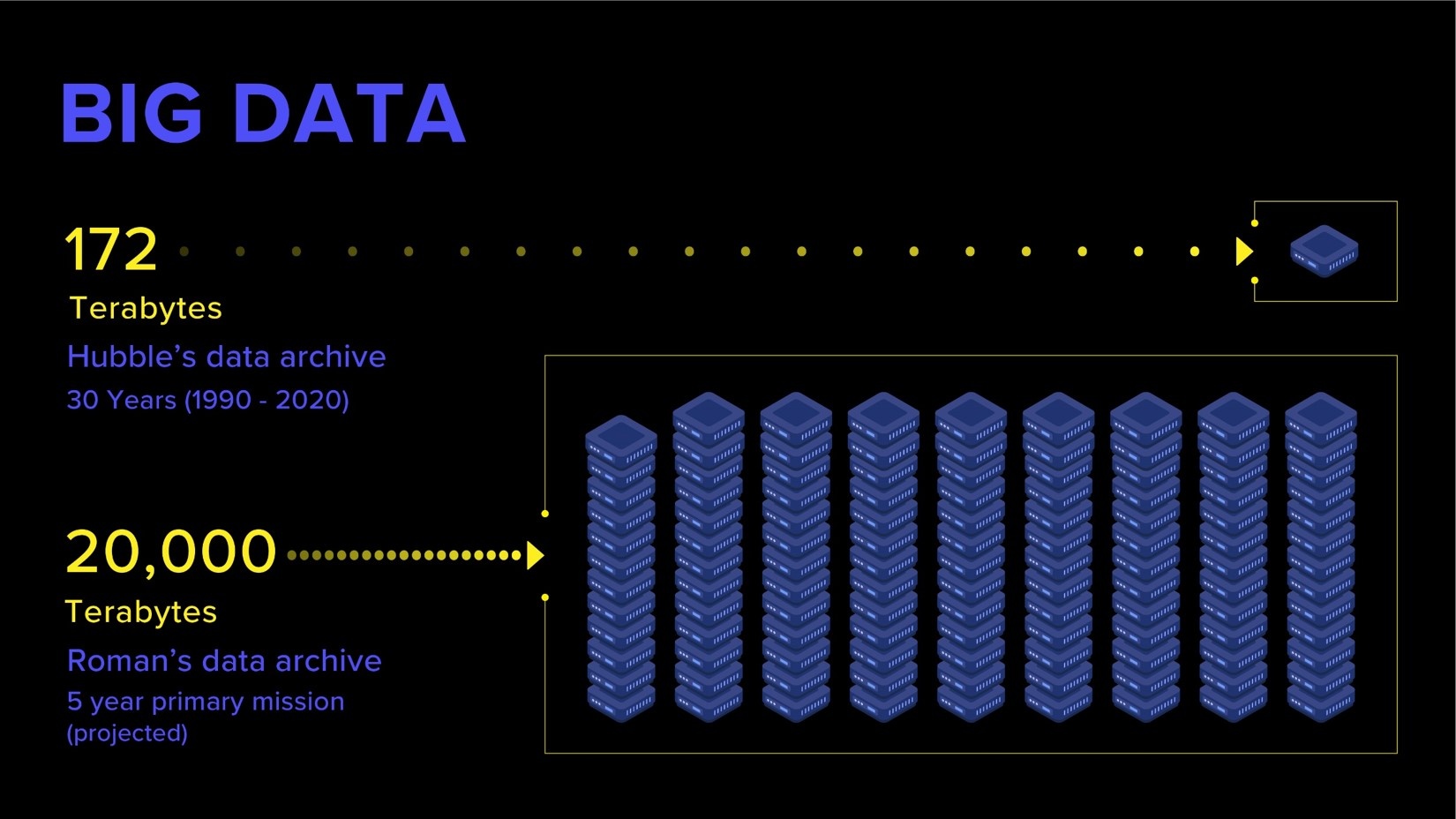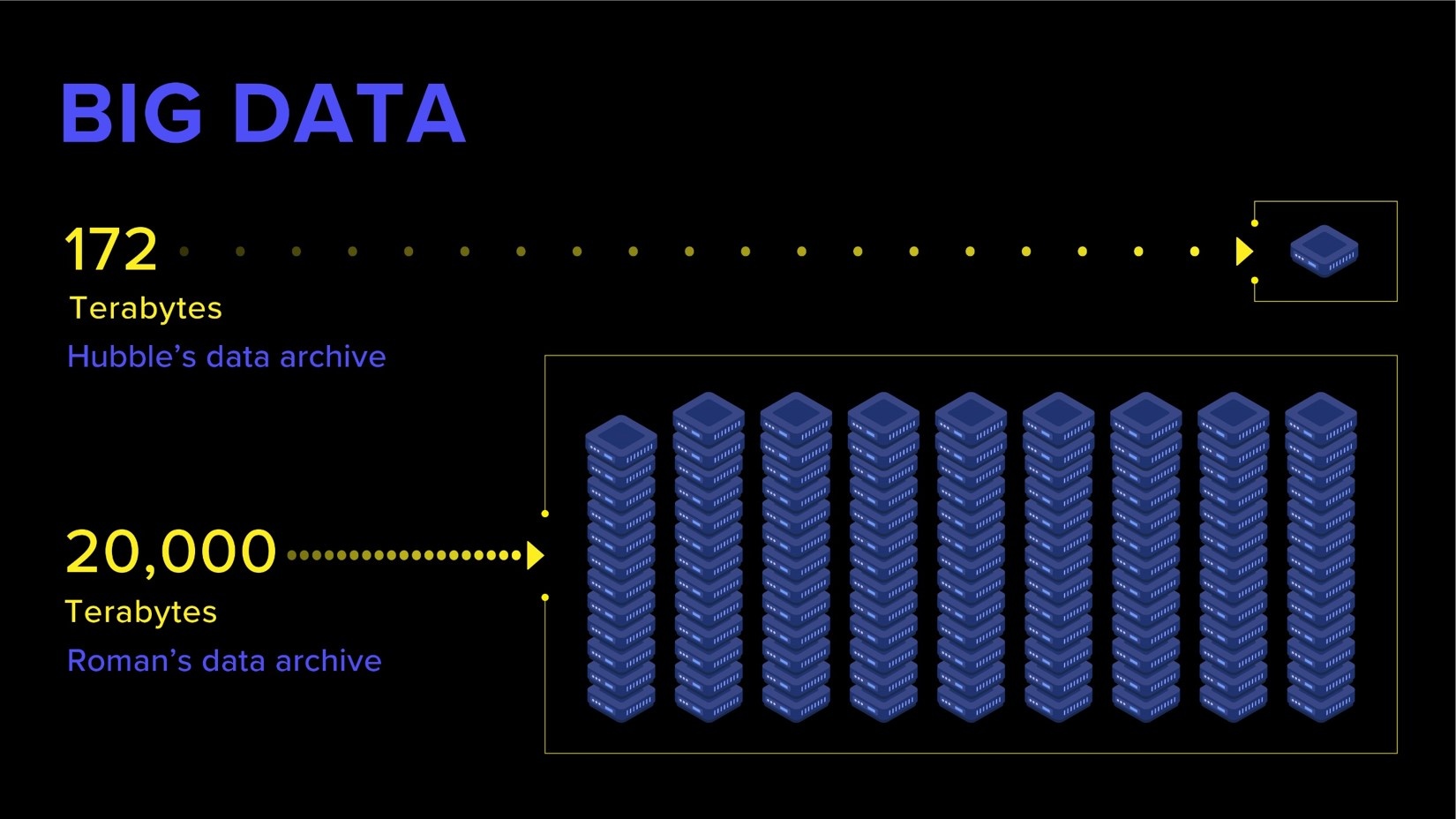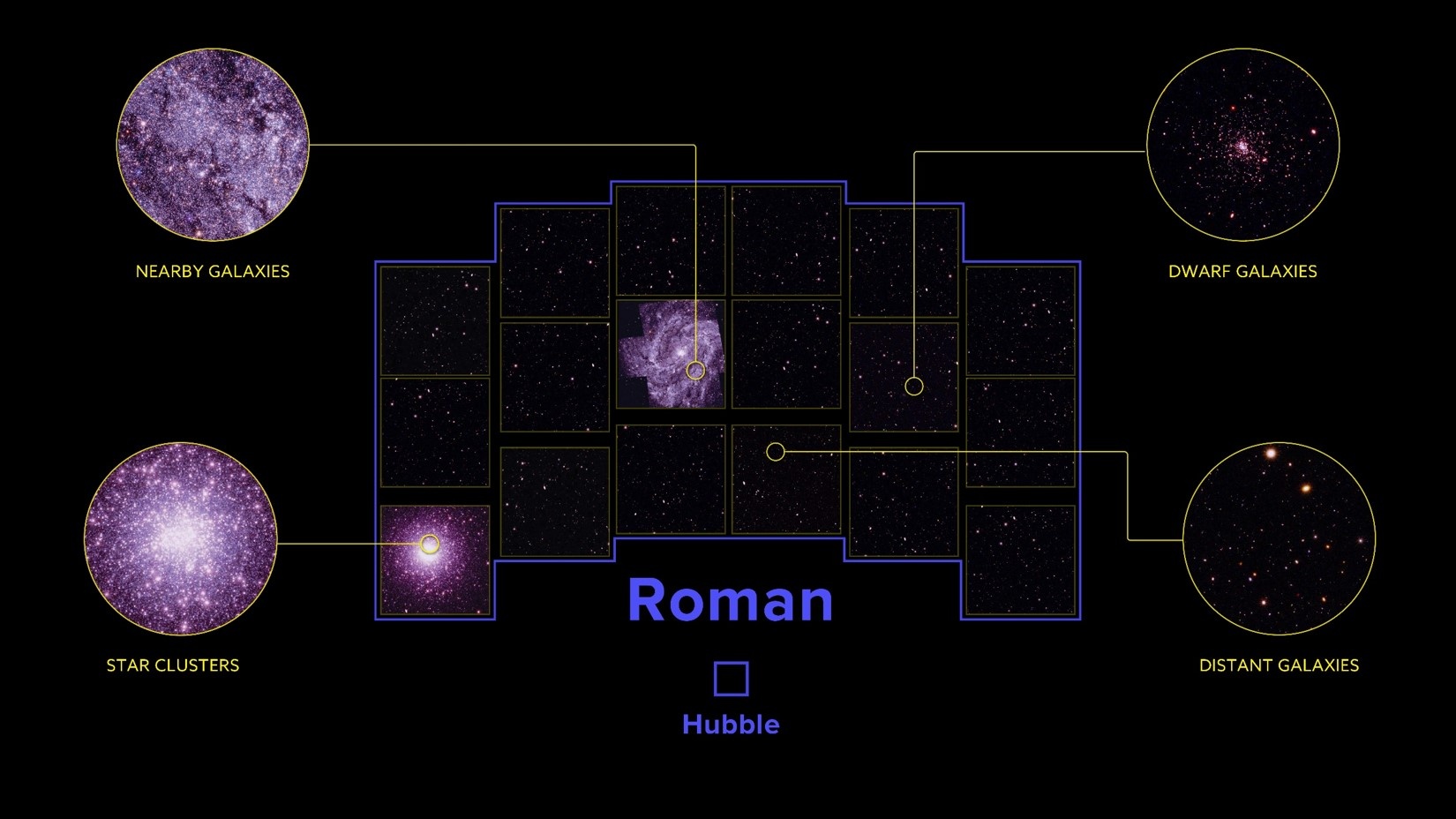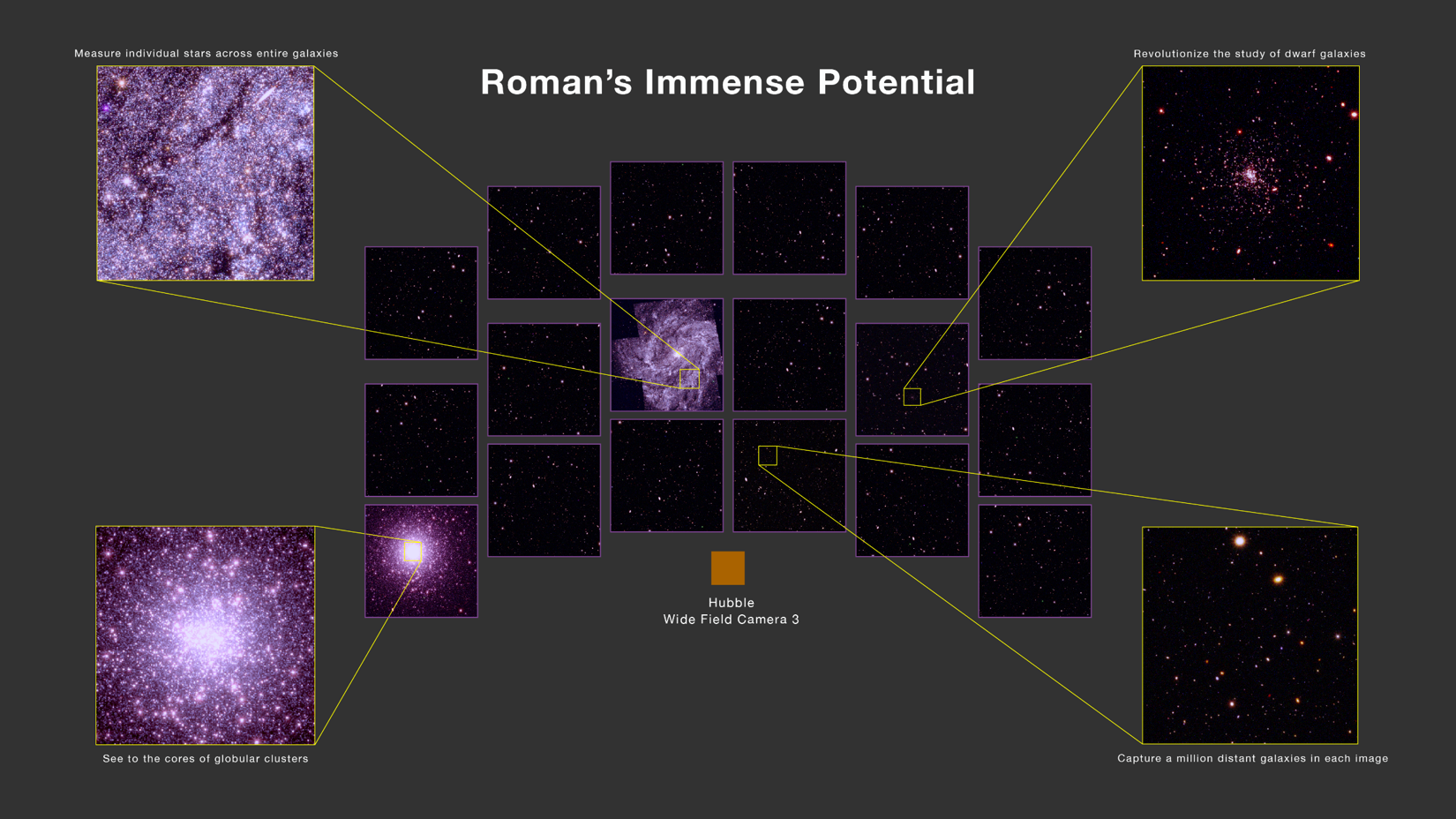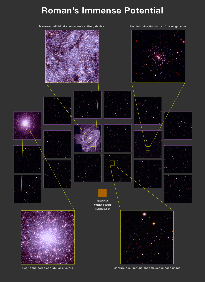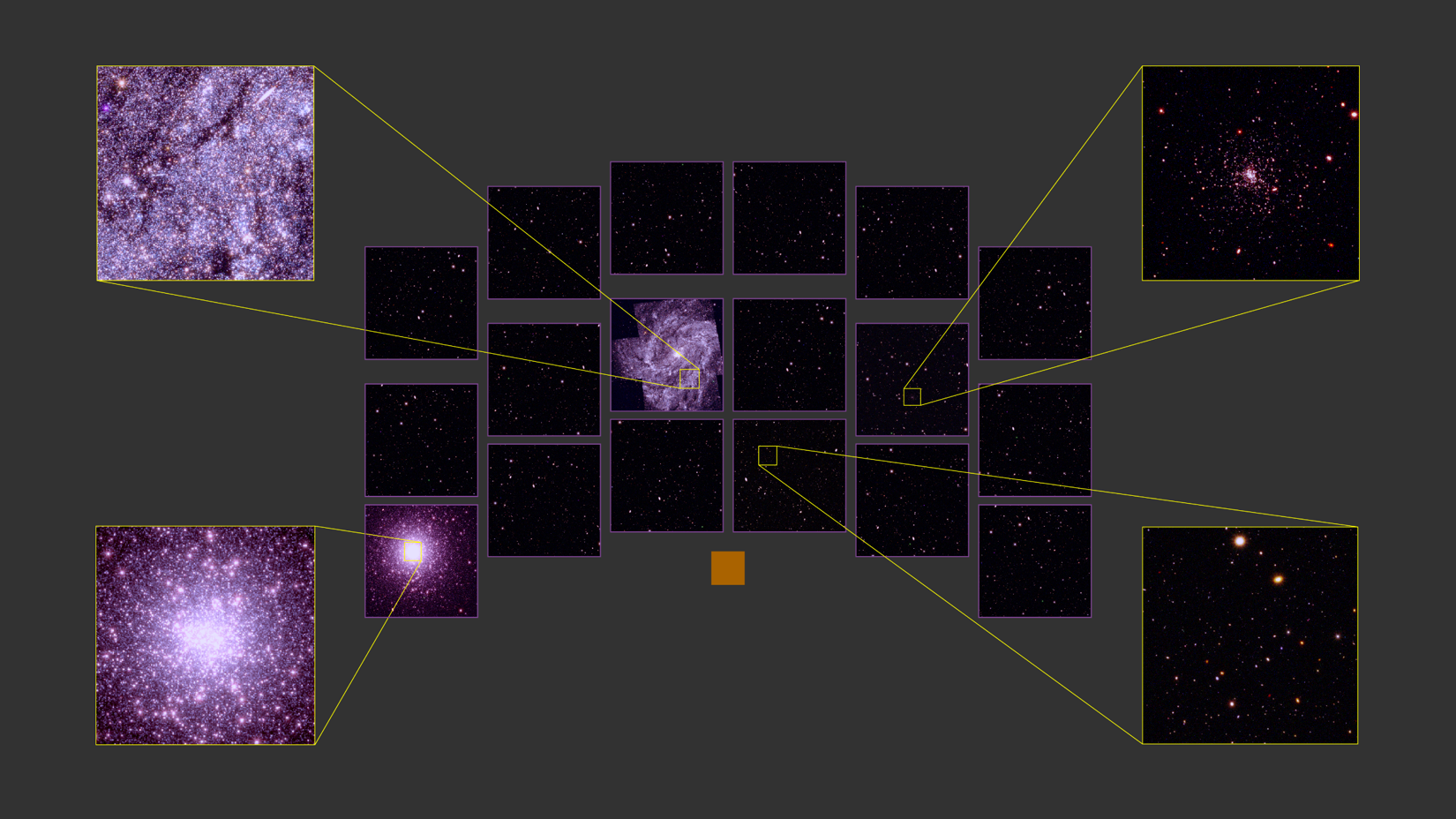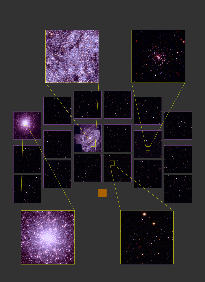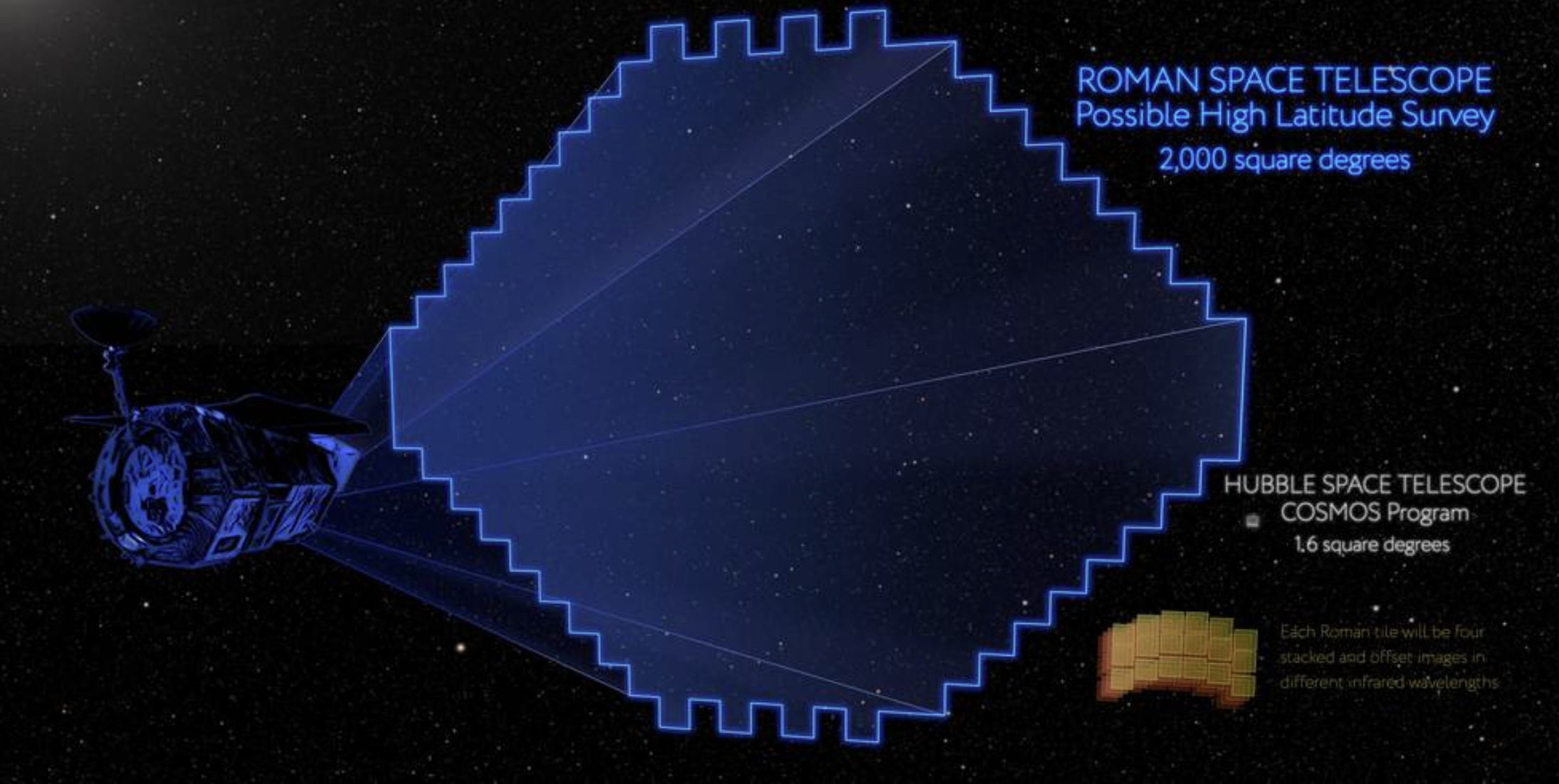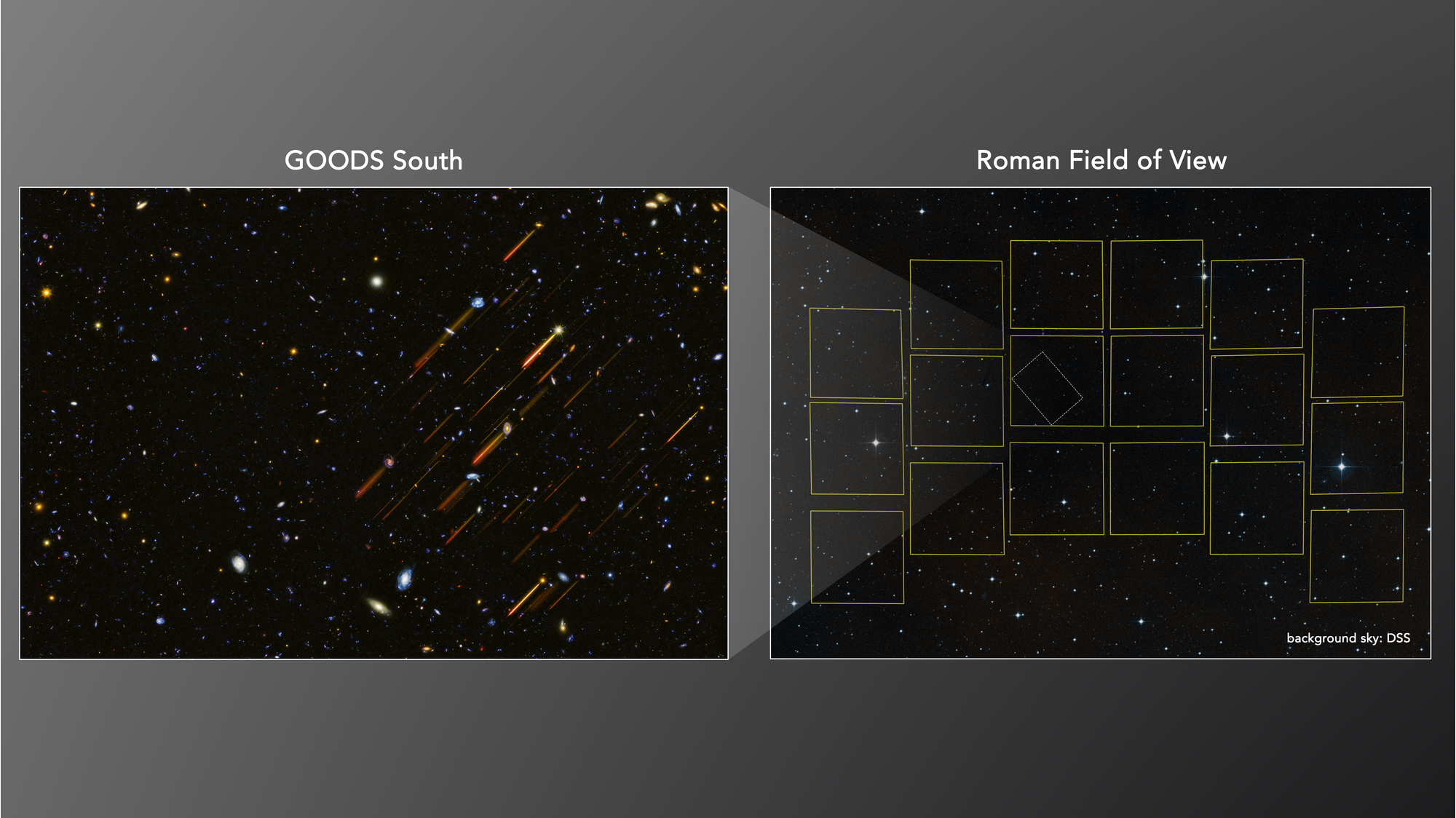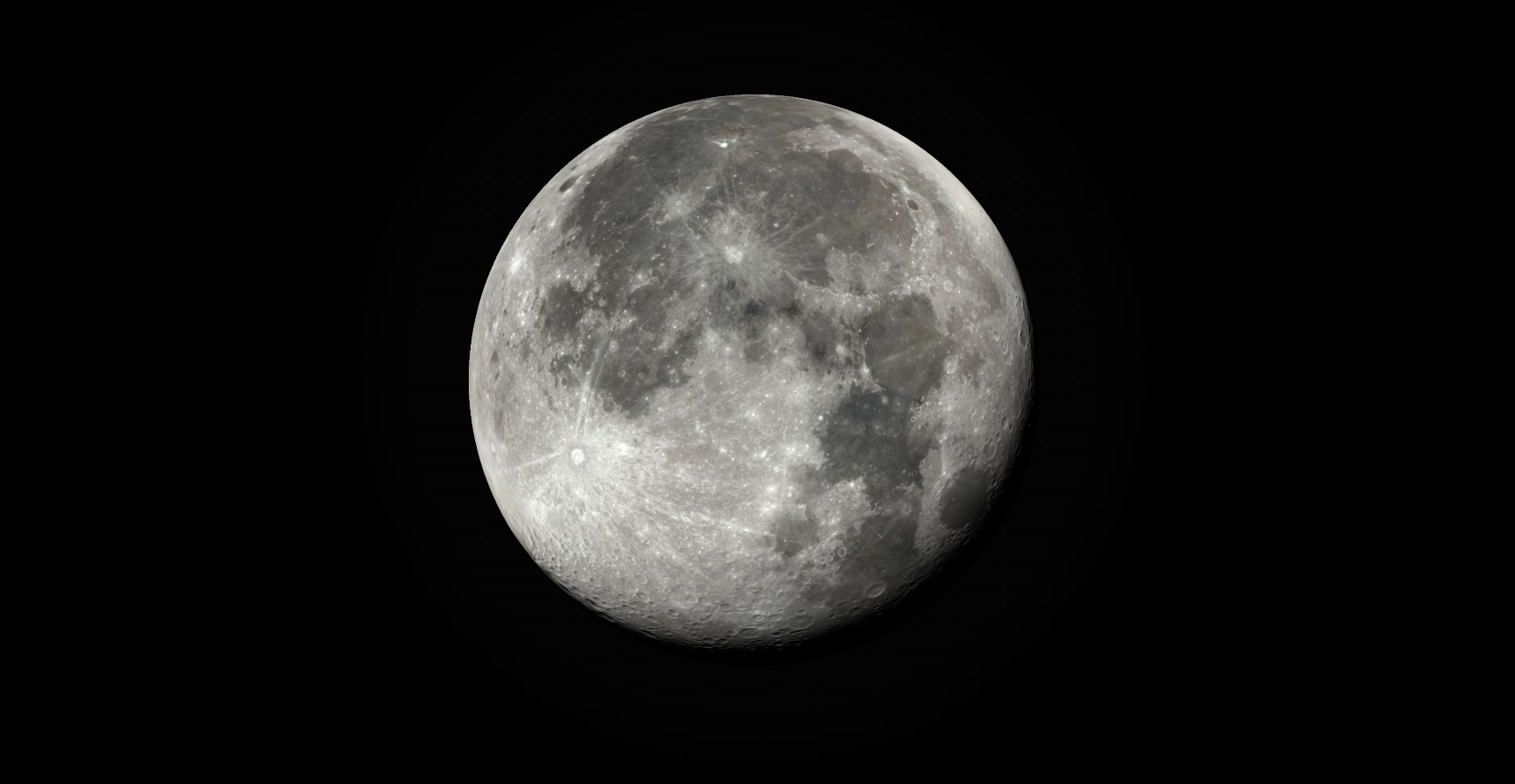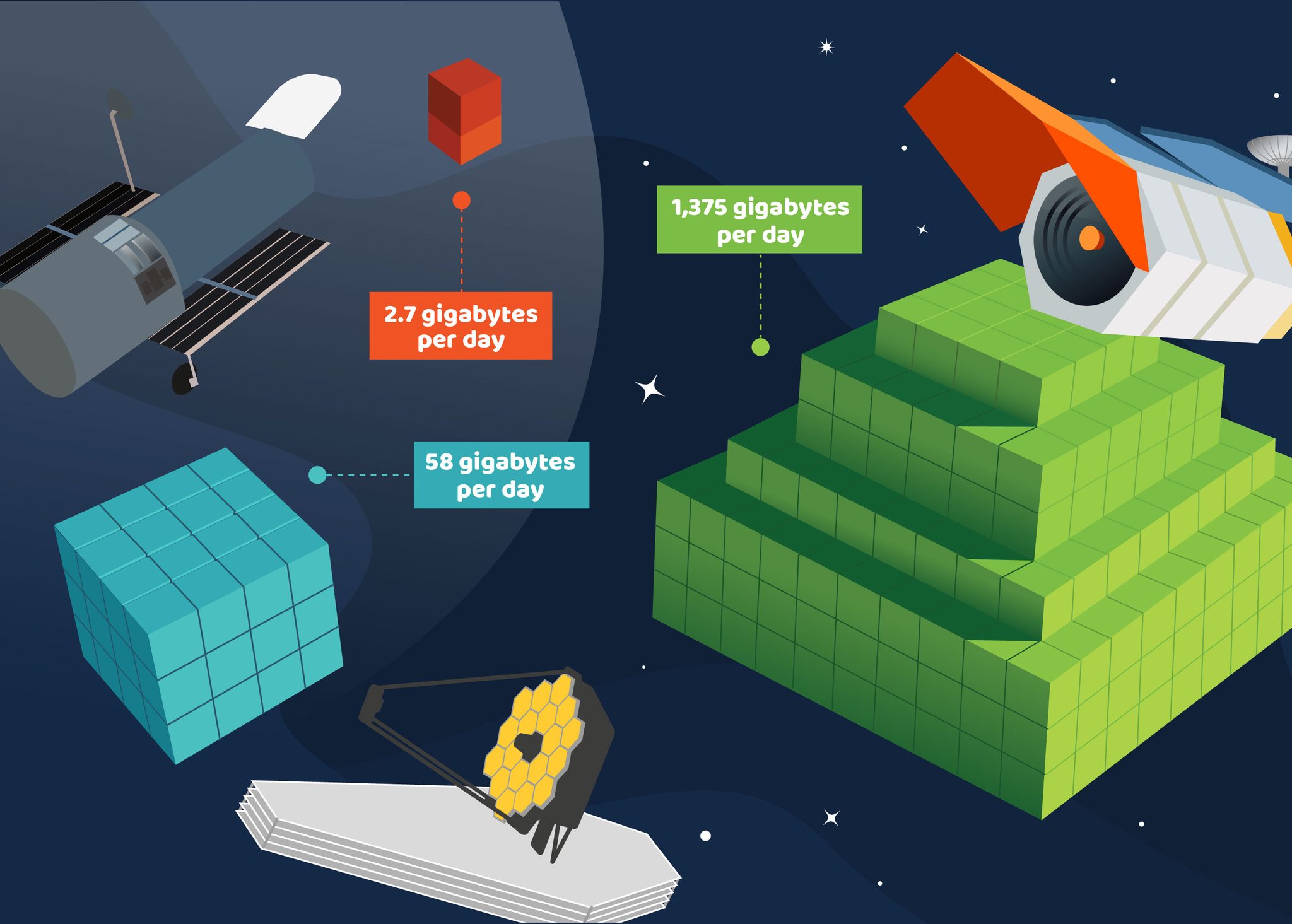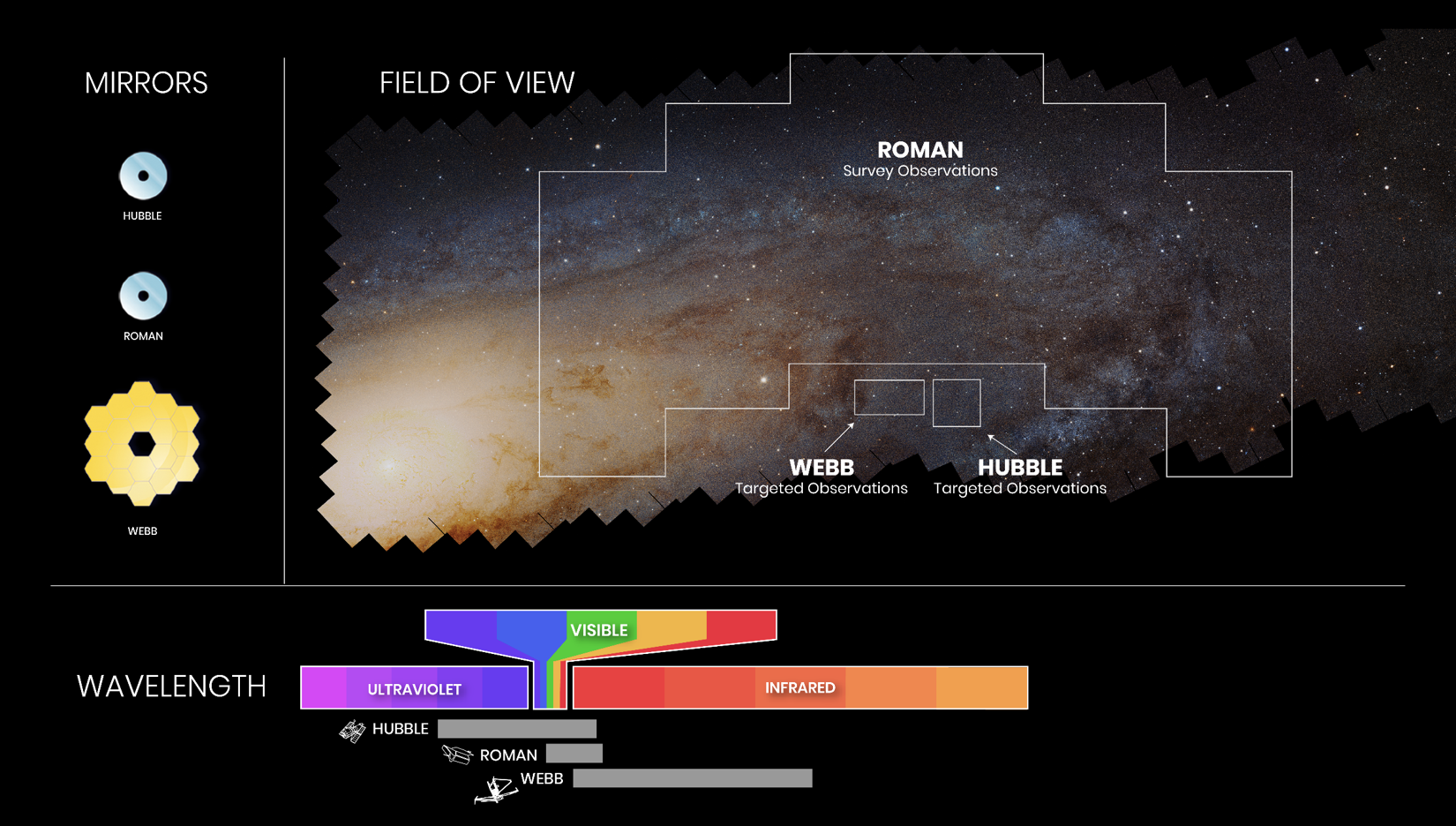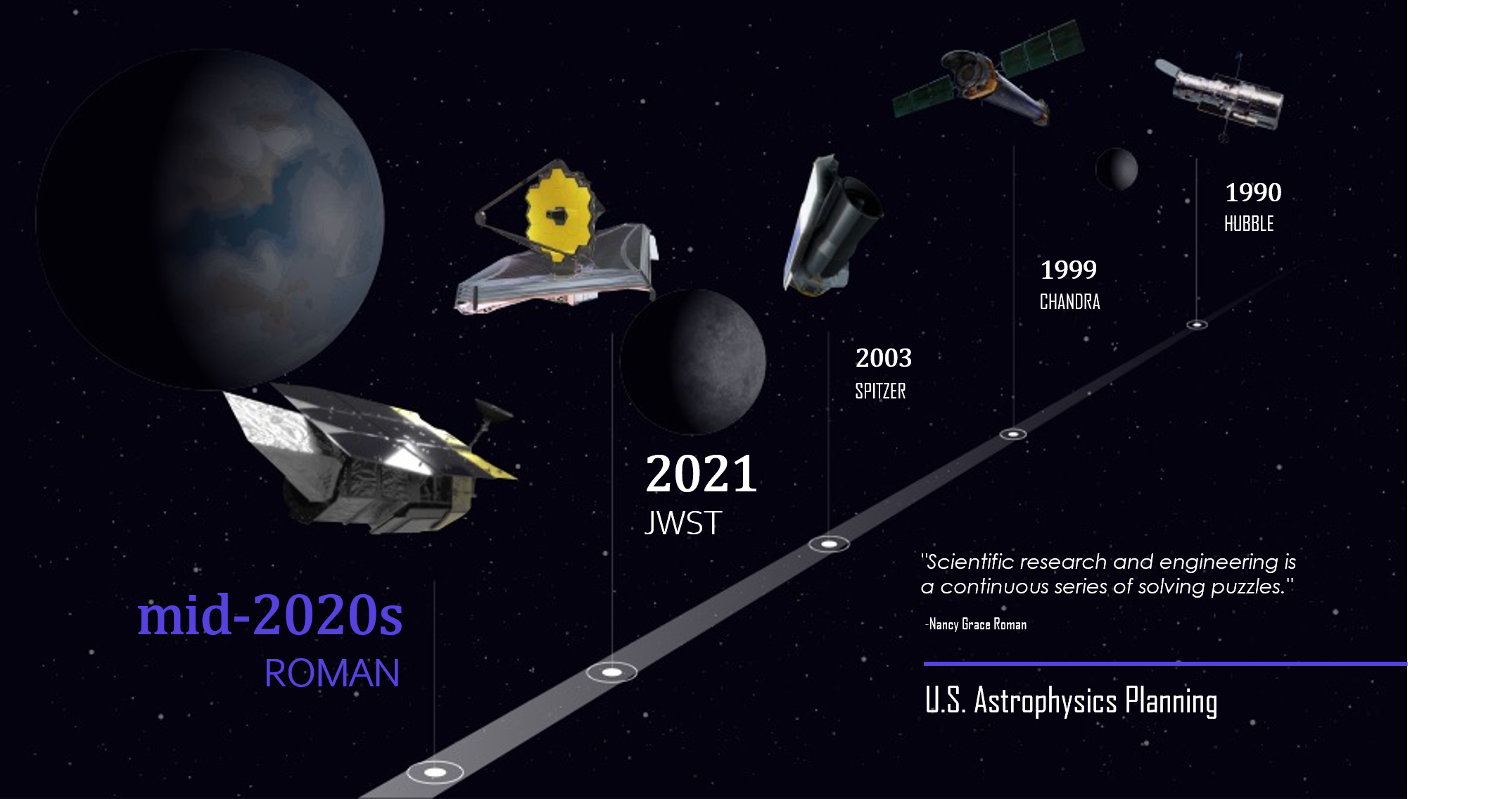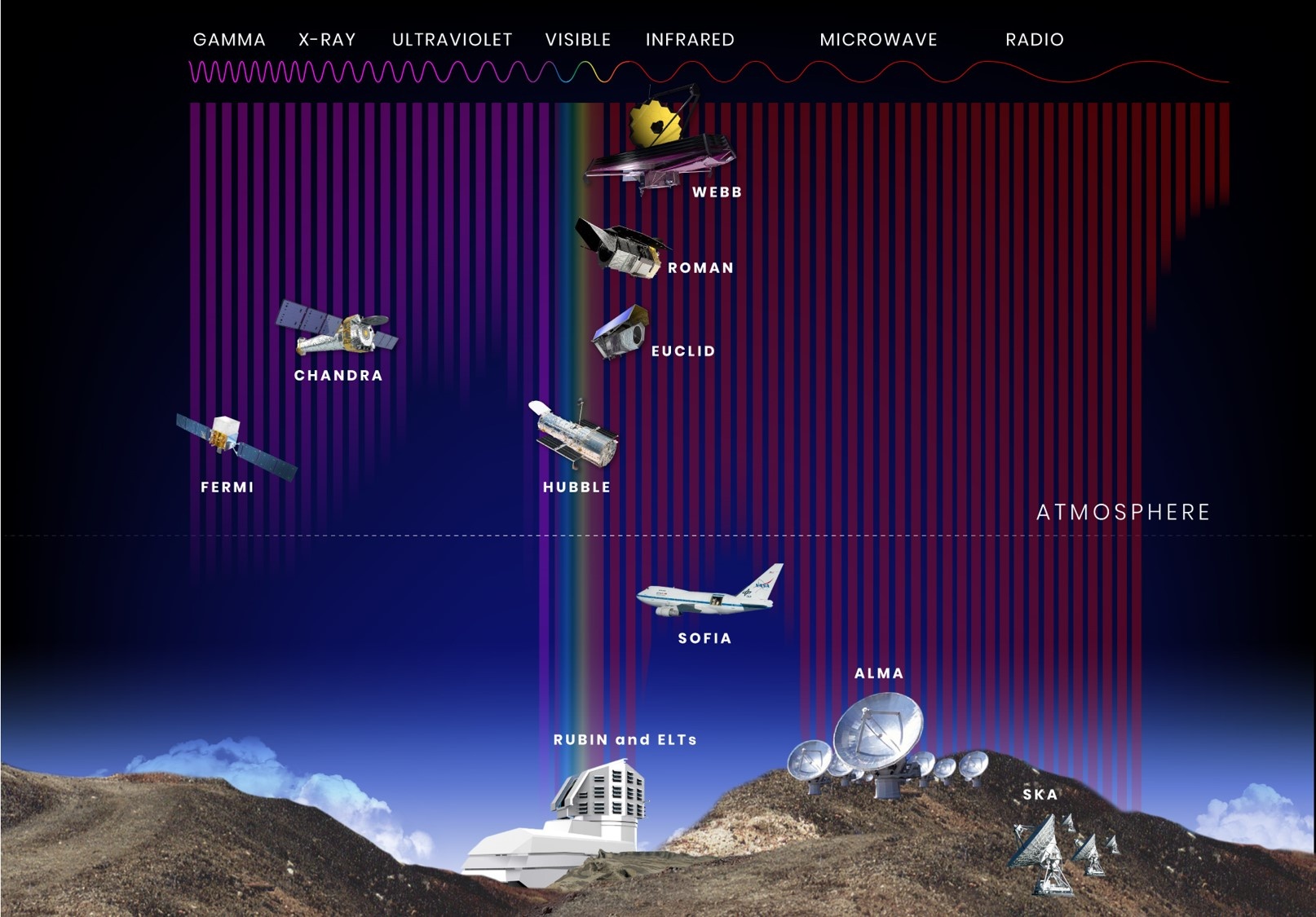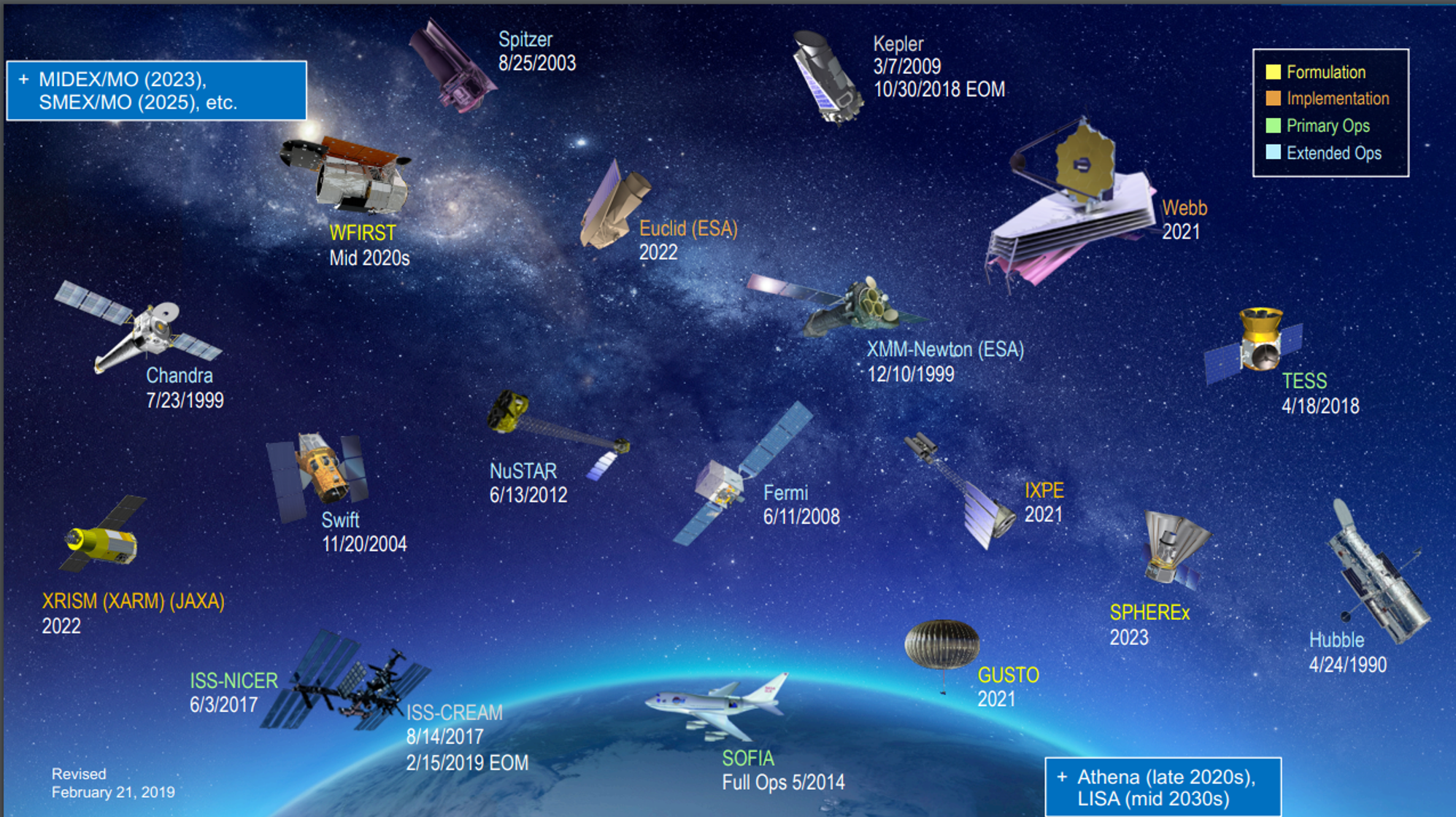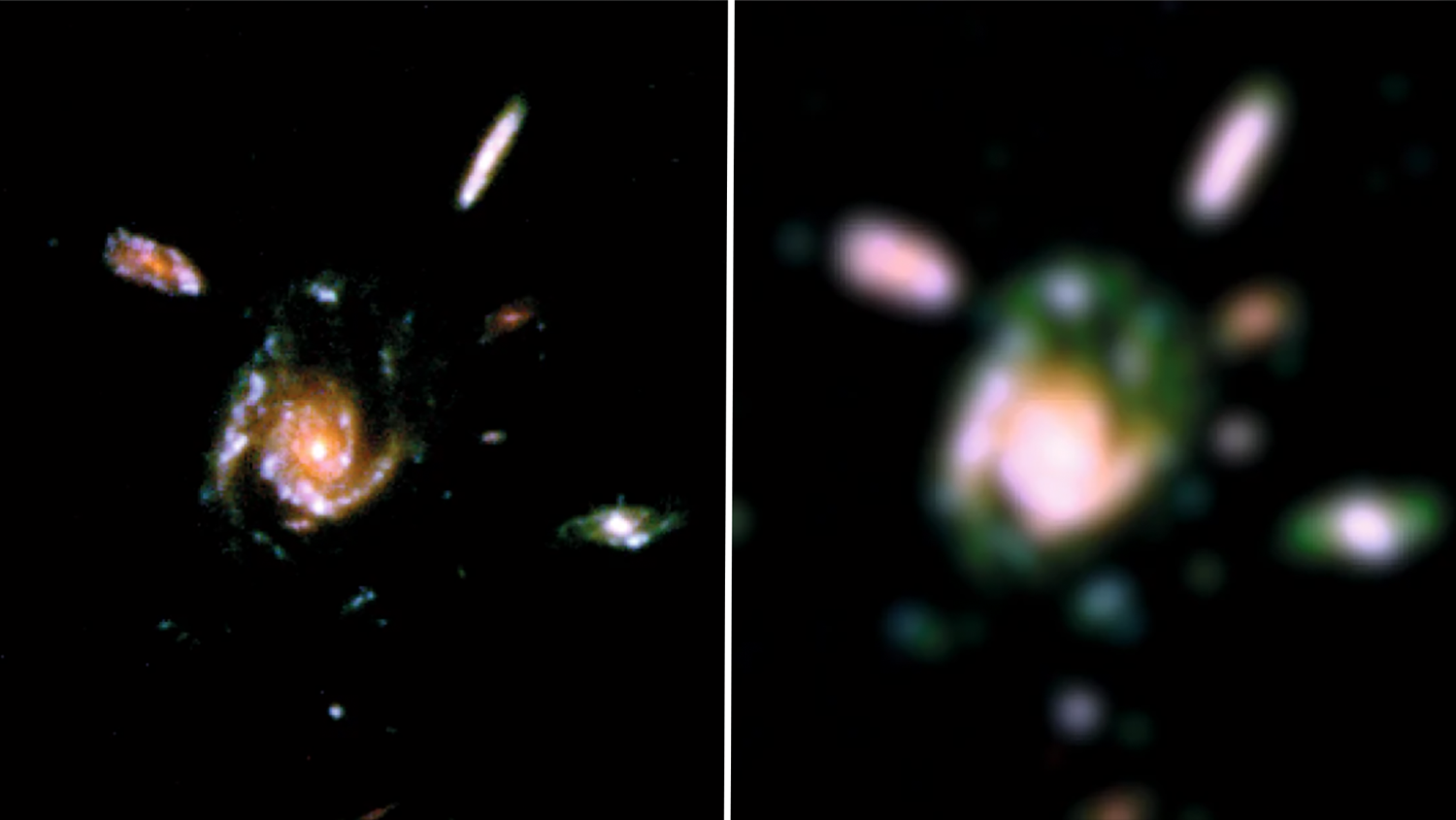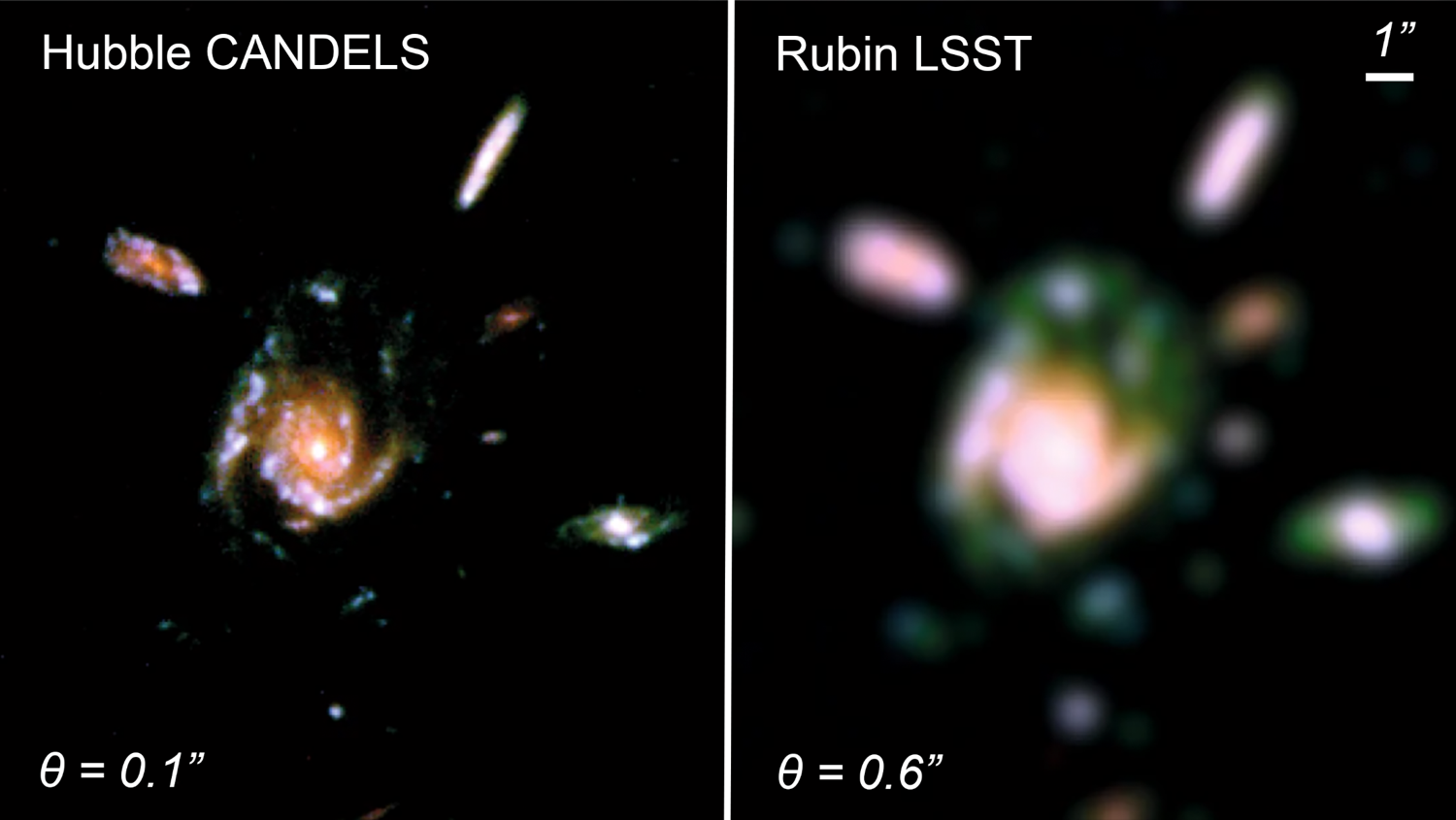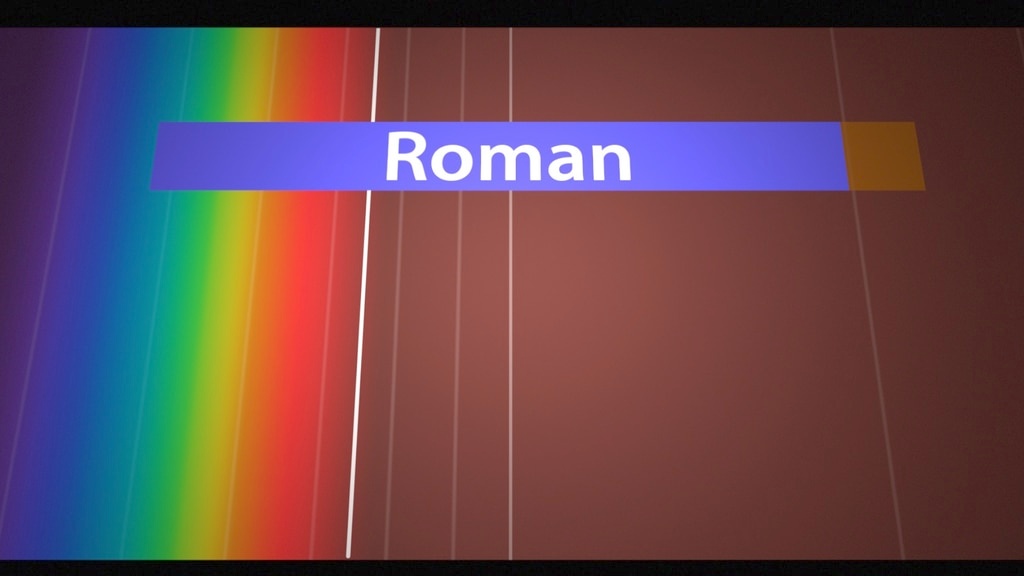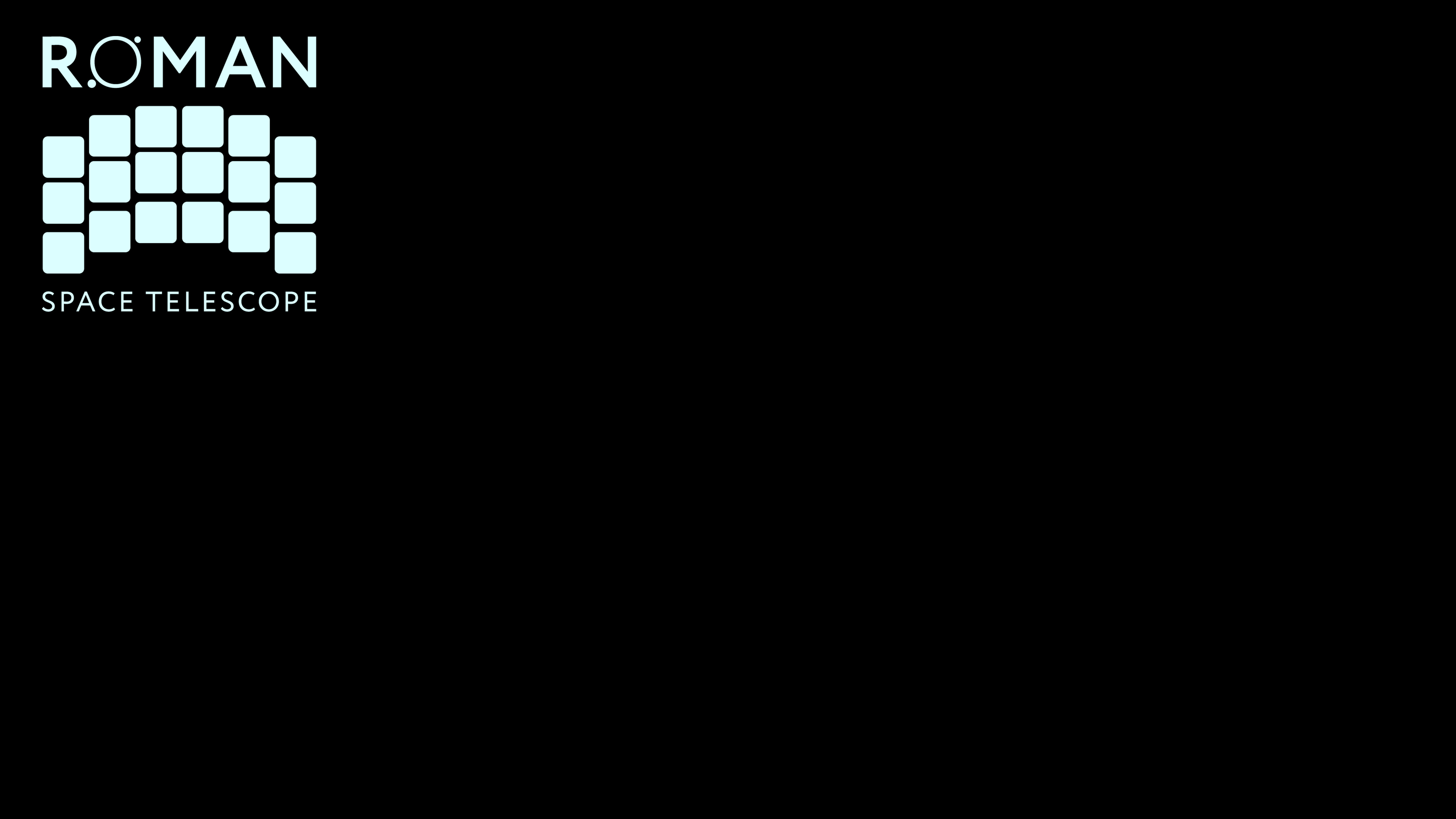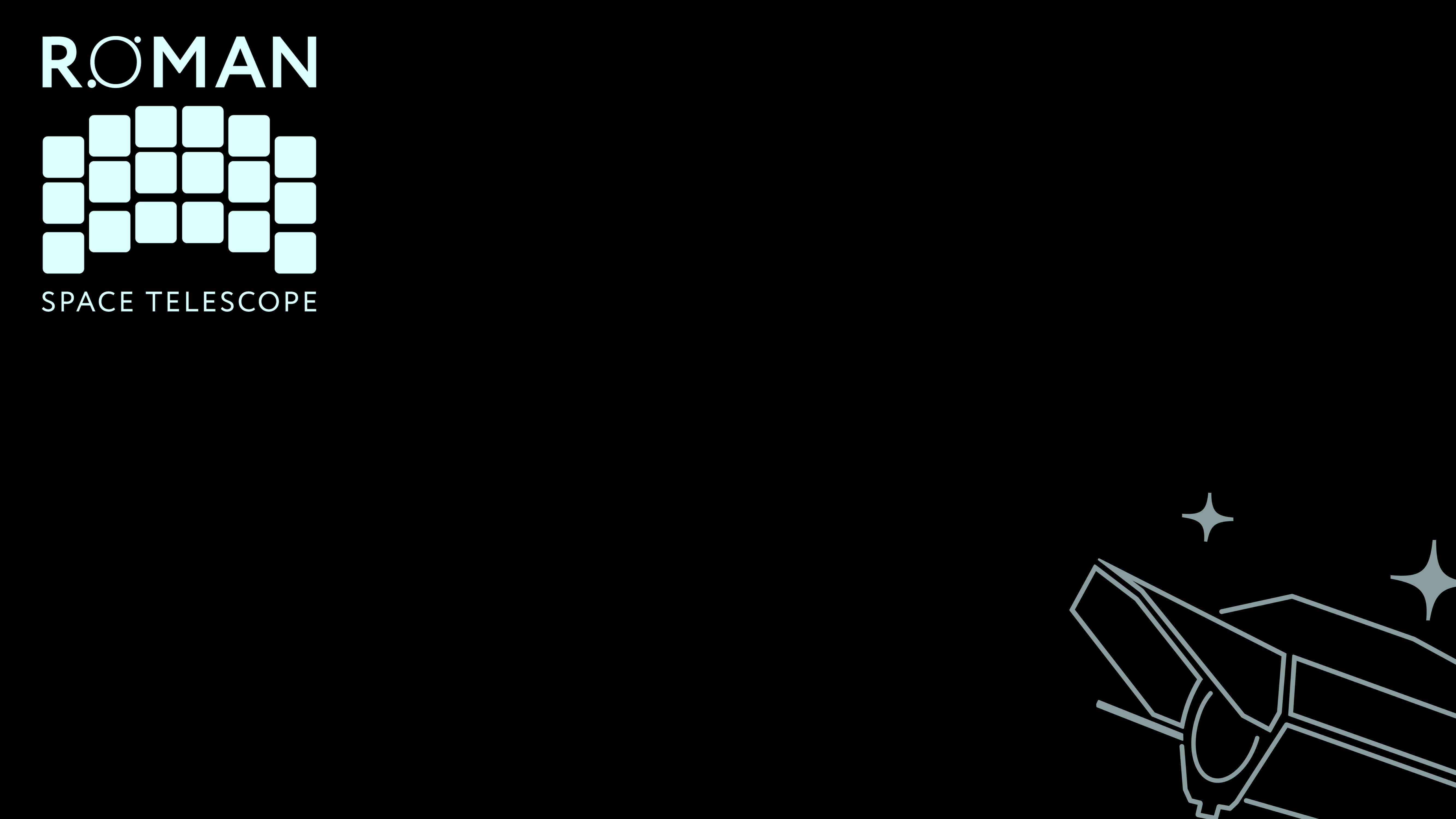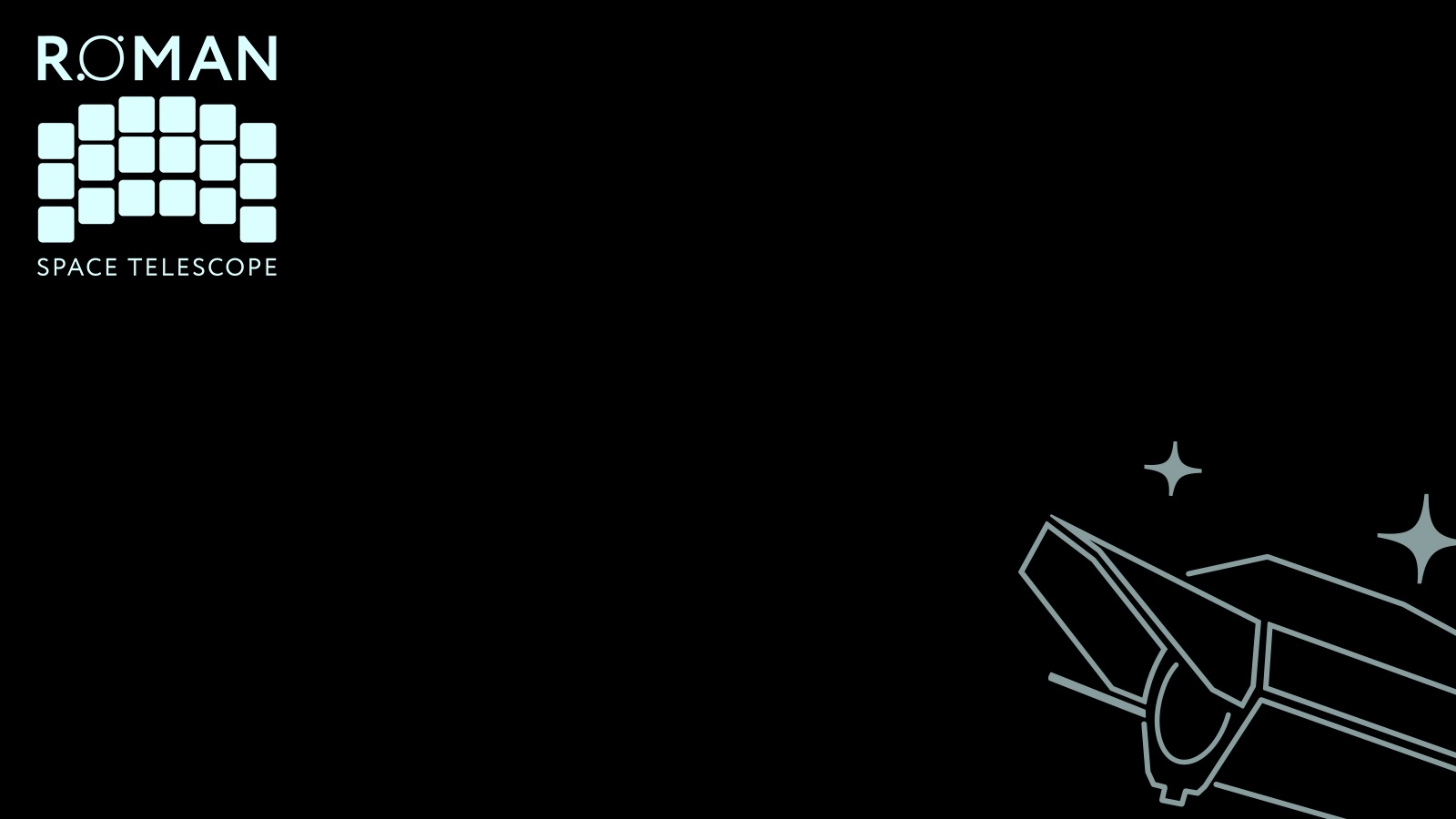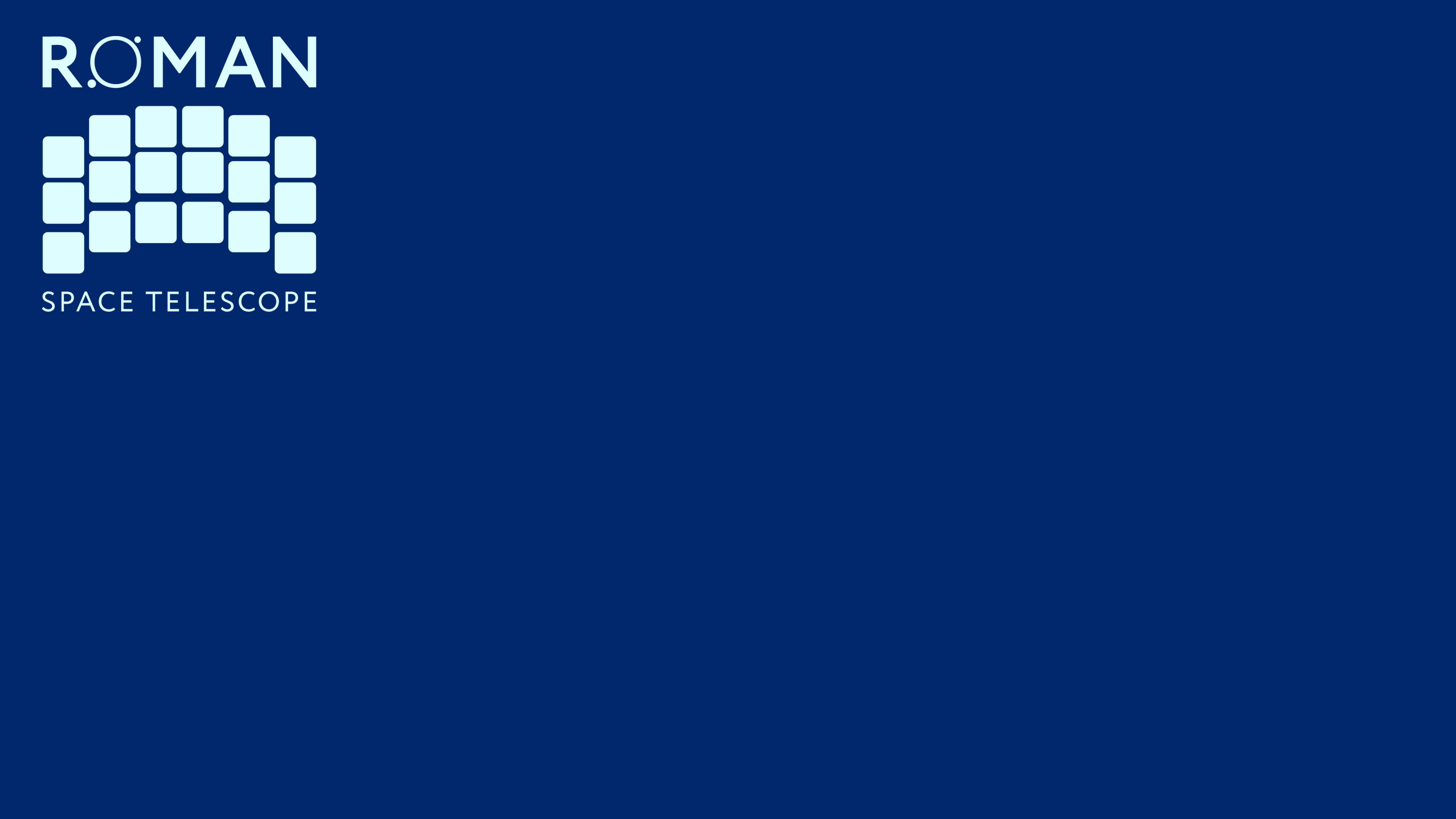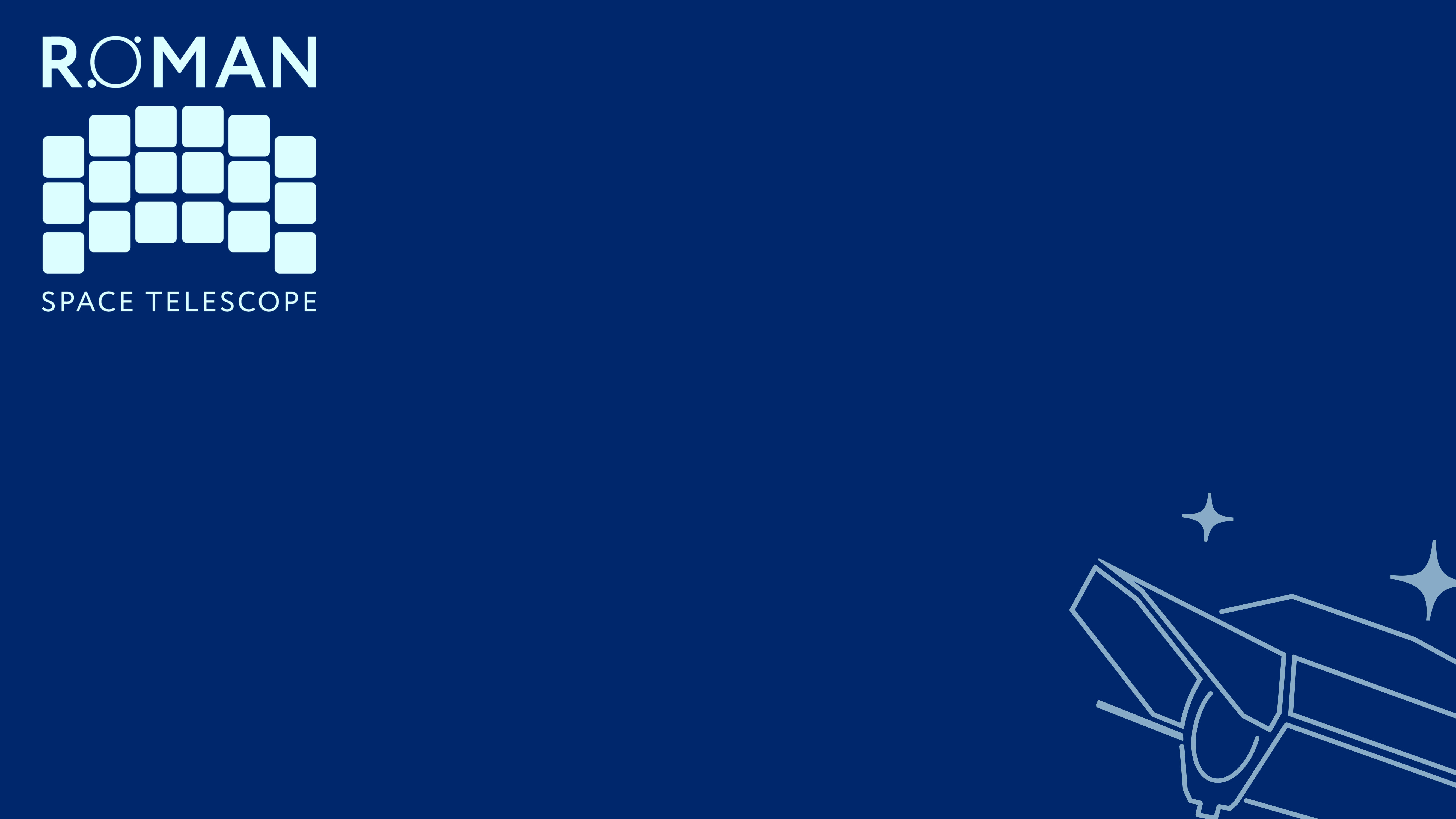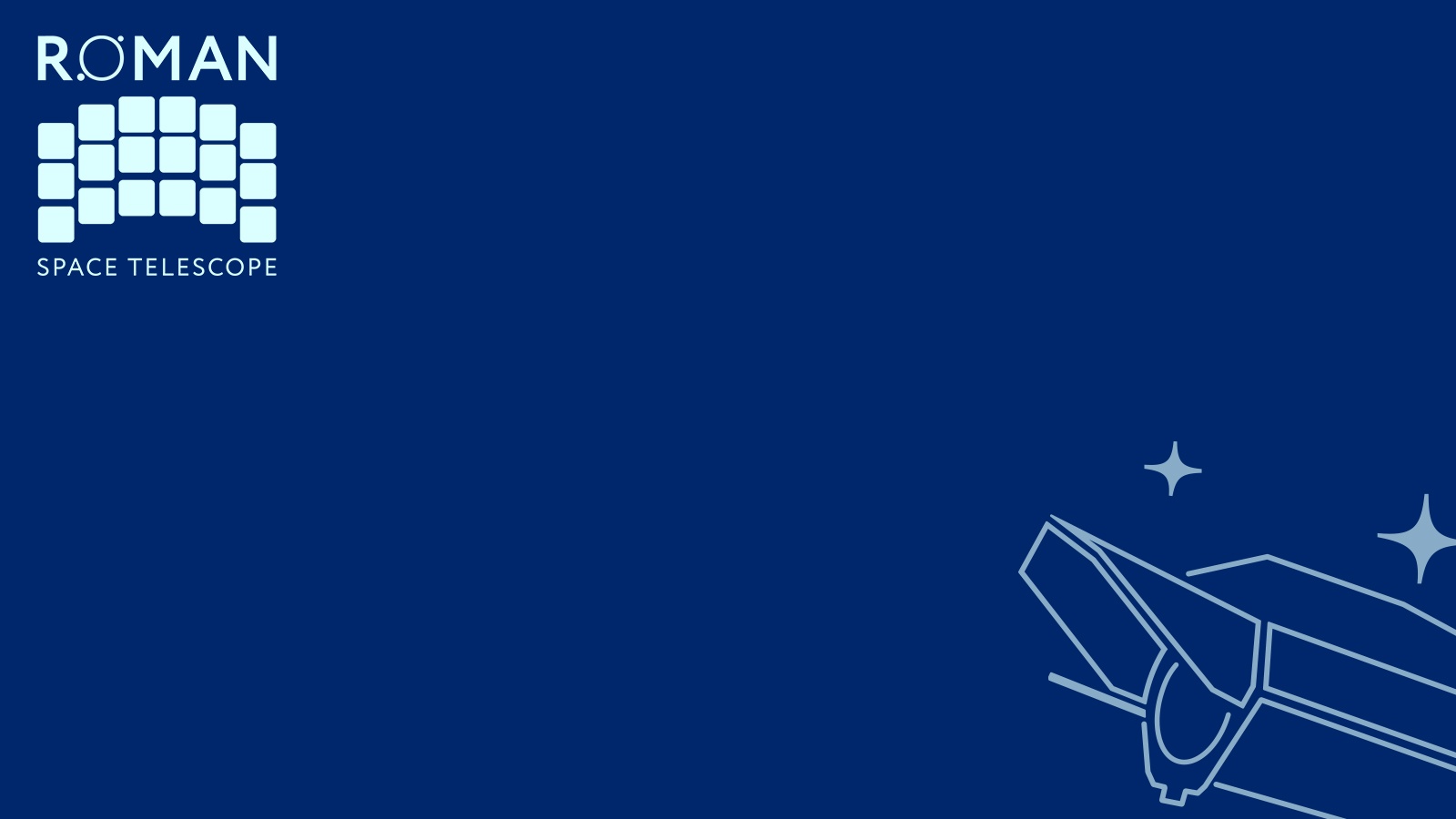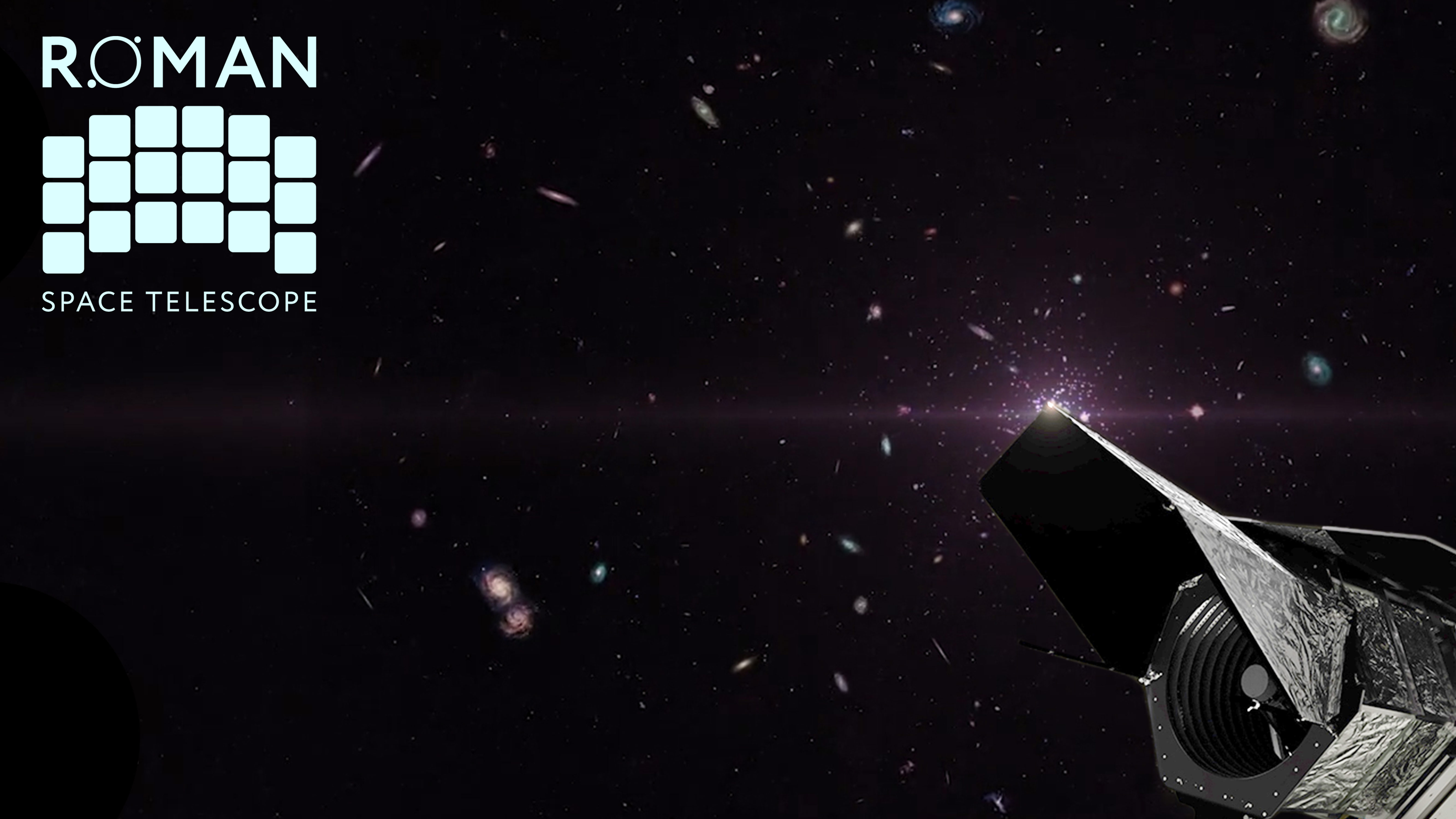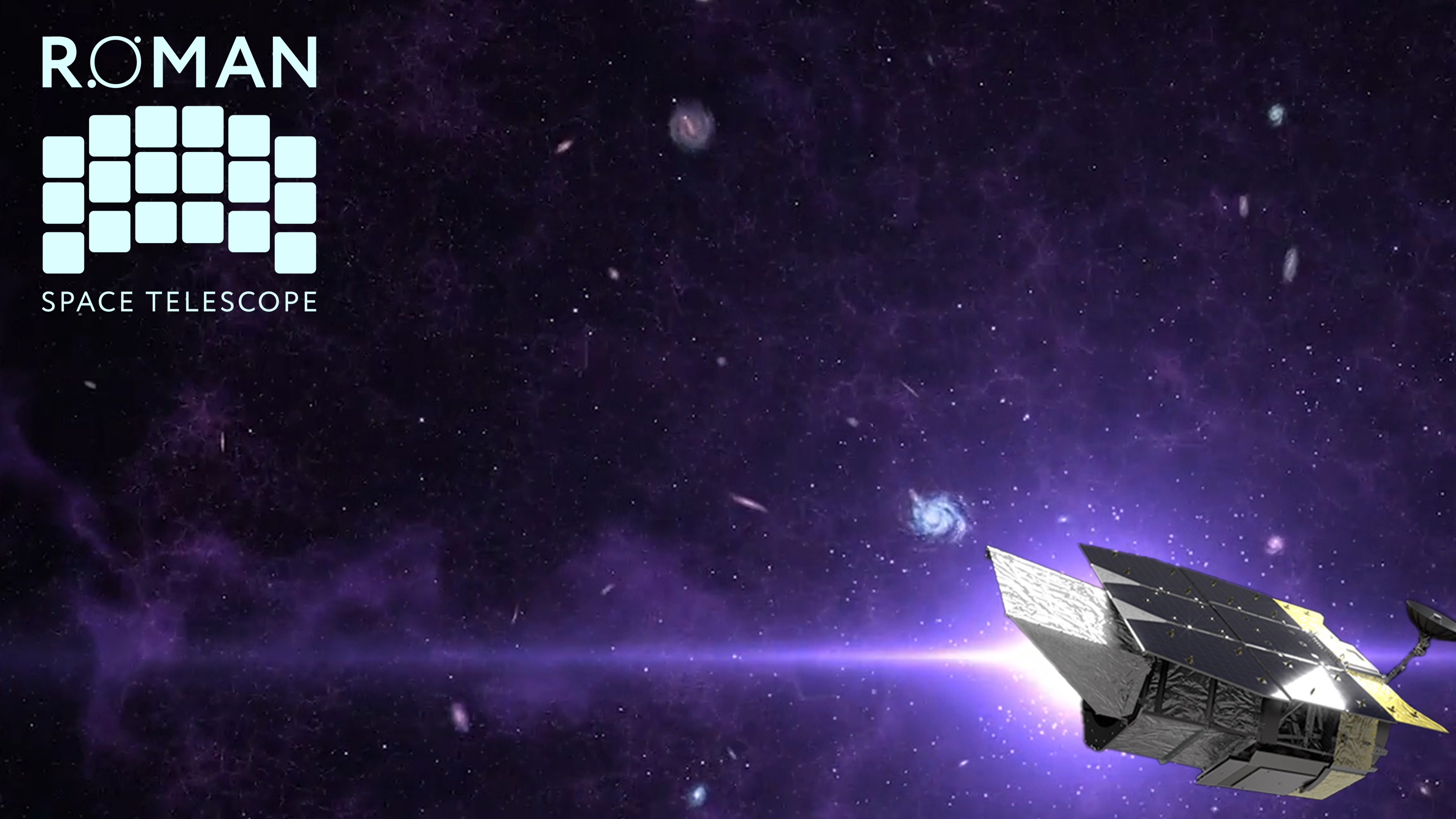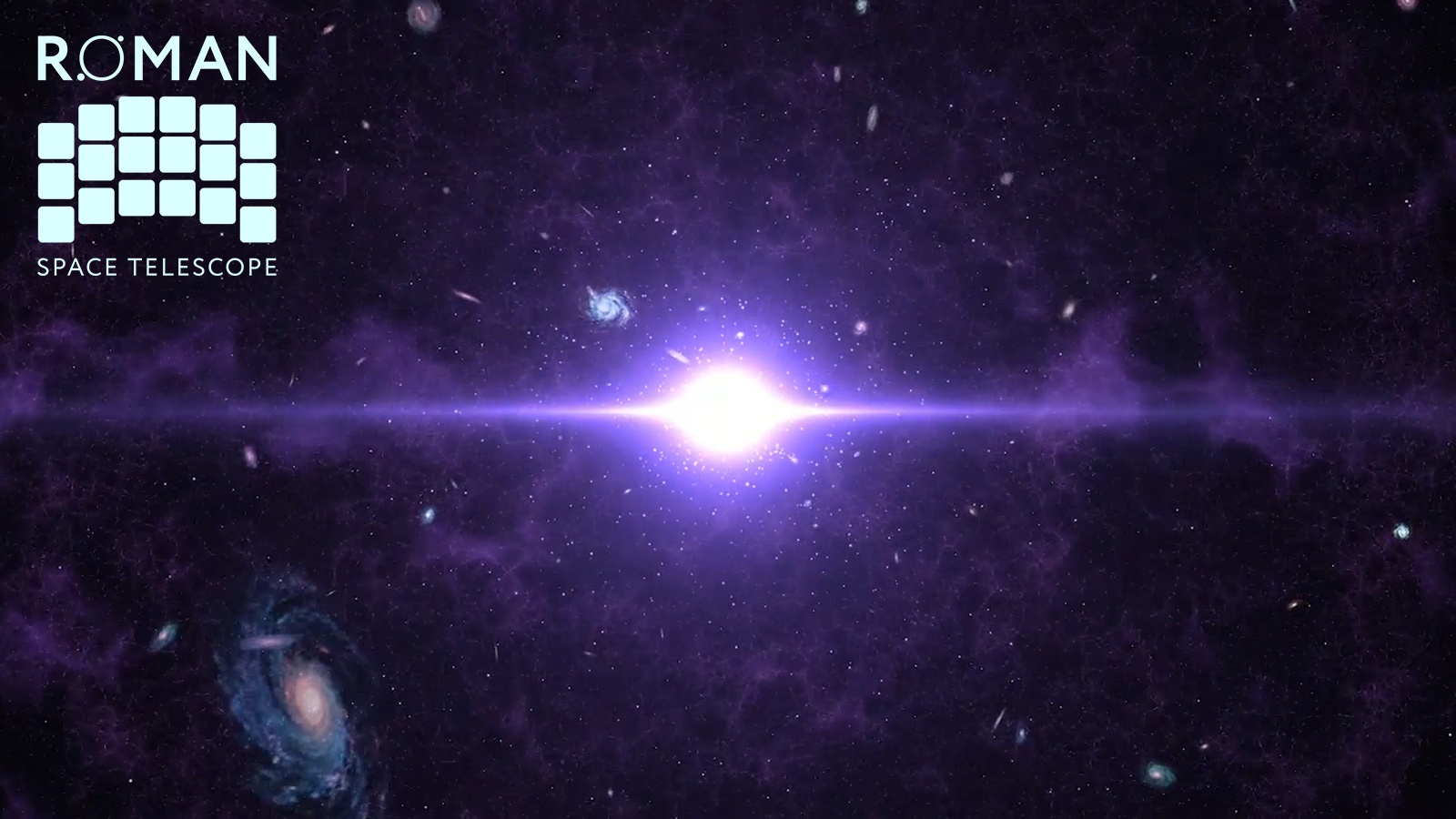| Thumbnail and Description | Credit | File Type | File Size | File Exension | Filename | File Location | Source Location |
|---|---|---|---|---|---|---|---|
Nancy Grace Roman, shown here at NASA's Goddard Space Flight Center in approximately 1972, was the first female executive and the first Chief of Astronomy at NASA | NASA | Image | 701.2 KB | JPG | nancy grace roman | https://stsci.box.com/s/pjwtwa4q7z199puxppt3q4niwmae6wha | https://roman.gsfc.nasa.gov/aboutNGR.html |
Learn about Nancy Grace Roman, her contribution to NASA missions, and how NASA has honored her. | NASA's Goddard Space Flight Center Music: "Rising Tides" from Universal Production Music | Video | 956.8 MB | MP4 | Roman_Biography_Best_1080 | https://stsci.box.com/s/i26zvhytv00tqiwu1yw1t4vsmbdn0w5w | https://svs.gsfc.nasa.gov/13608 |
The original prototypes of the LEGO® Ideas "Women of NASA" set displayed in front of the Apollo Lunar Module in the Boeing Milestones of Flight Hall at the Smithsonian’s National Air and Space Museum in Washington, DC, August 20, 2018. Credit: National Air and Space Museum | Source:
Rights Usage:
| Image | 2 MB | JPG | NASM2018-02043 | https://stsci.box.com/s/rrcyydzfzkgvy2v299smf185edd6gxbj | https://airandspace.si.edu/multimedia-gallery/nasm2018-02043jpg |
| NASA | Image | 1 MB | JPG | NGR_Still_1 | https://stsci.box.com/s/cwp47ll85gode0u4fakyxeriklk5xw32 | https://roman.gsfc.nasa.gov/aboutNGR.html |
Dr. Nancy Grace Roman visits James Webb Space Telescope (JWST) and the Hubble Project Team. | Photographer: NASA/GSFC/Bill Hrybyk | Image | 4 MB | JPG | GSFC_20170331_2017-11028_037_orig | https://stsci.box.com/s/wpbl1g90uren6f4iheg1cedv7105g1kp | https://images.nasa.gov/details-GSFC_20170331_2017-11028_037 |
Dr. Nancy Grace Roman visits James Webb Space Telescope (JWST) and the Hubble Project Team. | Photographer: NASA/GSFC/Bill Hrybyk | Image | 6 MB | JPG | GSFC_20170331_2017-11028_014_orig | https://stsci.box.com/s/2xg0hbfofxp3gubg345azk54st4sdvn5 | https://images.nasa.gov/details-GSFC_20170331_2017-11028_014 |
NASA's Associate Administrator of the Science Mission Directorate Dr. Edward J. Weiler presents the Women in Aerospace's Lifetime Achievement Award to retired NASA chief astronomer Nancy Grace Roman at the organization's annual awards ceremony and banquet held at the Ritz-Carlton Hotel in Arlington, VA on Tuesday, Oct. 26, 2010. Four current NASA leaders and one retiree were recognized for their work by Women in Aerospace. The event celebrates women's professional excellence in aerospace and honors women who have made outstanding contributions to the aerospace community. Photo Credit: (NASA/Bill Ingalls) | Photographer: (NASA/Bill Ingalls) | Image | 16.6 MB | TIF | 201010260006HQ_orig | https://stsci.box.com/s/19s43nv877zxbglxflxgkww09hyhru7y | https://images.nasa.gov/details-201010260006HQ |
Artwork of Nancy Grace Roman and Vera C. Rubin. Developed for a social media campaign during Women's History Month by STScI and the Vera C. Rubin Observatory. | Illustration by J. Kang/STScI | Image | 597 KB | PNG | Roman_Rubin_tw | Error rendering macro 'widget' com.atlassian.confluence.api.service.exceptions.IllegalURLException: The provided url- https://api.twitter.com/1/statuses/oembed.json?id=1366426052126511104&omit_script=true&lang=en is not included in the whitelist!.Please add the url to whitelist to allow access | |
Artwork of Nancy Grace Roman and Vera C. Rubin. Sized for Facebook posts. Developed for a social media campaign during Women's History Month by STScI and the Vera C. Rubin Observatory. | Illustration by J. Kang/STScI | Image | 2.3 MB | PNG | Roman_Rubin_fb | ||
The history of women's contributions to the fields of science, technology, engineering, and math (STEM) is long and varied. But it has also often been overlooked or underrepresented. This series highlights only a very few of the women who have made important discoveries and have had a crucial impact on STEM fields. This, however, is not just a look into the past. Today, women are in every STEM discipline, in every type of job, and represent the widest range of background and experiences. Download the free poster set to use in your space | NASA Illustration: Kristin DiVona | Image | 3.4 MB | roman_poster | https://stsci.box.com/s/qif9riups3ye1w650tg0u854dz62hcg9 | https://chandra.si.edu/women/images/roman.pdf | |
Nancy with a model of an Orbiting Solar Observatory. | NASA | Image | 1.2 MB | PNG | nancy-model | https://stsci.box.com/s/ewta914jgirwifgx4g4v7geynckws1rs | https://hackaday.com/2018/04/03/nancy-grace-roman-mother-of-the-hubble/ |
| Thumbnail and Description | Credit | File Type | File Size | File Extension | Filename | File Location | Source Location |
|---|---|---|---|---|---|---|---|
Learn more about the Roman Space Telescope spacecraft with this short tour of the main systems. | NASA's Goddard Space Flight Center Music: “Phenomenon" from Above and Below Written and produced by Lars Leonhard | Video | 807.1 MB | MP4 | 13295_Roman_360_Best_1080 | https://stsci.box.com/s/9m81dvpe9zpfjc41zeml5hnq0o0kdh14 | https://svs.gsfc.nasa.gov/13295 |
Still frame of spacecraft animation | NASA's Goddard Space Flight Center | Image | 48.4 KB | JPG | TurntableRev01A_ProRes_Alpha.00001_print | https://stsci.box.com/s/e5mcy7dm5i4cp48feffpktv9fscmto0s | https://roman.gsfc.nasa.gov/gallery-spacecraftillustrations.html |
Still frame of spacecraft animation | NASA's Goddard Space Flight Center | Image | 191.4 KB | JPG | Roman_Space_Telescope_Still_1 | https://stsci.box.com/s/iddn4cojy0peaq68urgiv2m5xvautwiw | https://svs.gsfc.nasa.gov/13621 |
Still frame of spacecraft animation | NASA's Goddard Space Flight Center | Image | 172.2 KB | JPG | Roman_Space_Telescope_Still_2 | https://stsci.box.com/s/axgzqky3u55uwjv3iwaags1gvewdz332 | https://svs.gsfc.nasa.gov/13621 |
Still frame of spacecraft animation | NASA's Goddard Space Flight Center | Image | 178.3 KB | JPG | Roman_Space_Telescope_Still_3 | https://stsci.box.com/s/3hr4ctcz7b61j6b14g4lh43ejcfx7wvk | https://svs.gsfc.nasa.gov/13621 |
Still frame of spacecraft animation | NASA's Goddard Space Flight Center | Image | 507.8 KB | JPG | RST_2020_Still | https://stsci.box.com/s/l6dcfm49nydoschci88jnvmn8o5d75q8 | https://svs.gsfc.nasa.gov/13621 |
Still frame of spacecraft animation | NASA's Goddard Space Flight Center | Image | 755.2 KB | JPG | Roman_Space_Telescope_Animation1_Still2 | https://stsci.box.com/s/qy3f9jyhy3aqxpn1su9qx9vjon0pid1g | https://svs.gsfc.nasa.gov/13621 |
Stylized still frame of spacecraft animation | NASA's Goddard Space Flight Center | Image | 2 MB | JPG | Trailer_still_1 | https://stsci.box.com/s/g526b9ntswvm4iovkiqjuksswa8jtodq | https://svs.gsfc.nasa.gov/13621 |
Stylized still frame of spacecraft animation | NASA's Goddard Space Flight Center | Image | 1.5 MB | JPG | Roman_Still_2 | https://stsci.box.com/s/h7k7y22w2rpqr0w3q46fdqrp5atysh1f | https://svs.gsfc.nasa.gov/13621 |
Stylized still frame of spacecraft animation and name | NASA's Goddard Space Flight Center | Image | 1.8 MB | JPG | Roman_Title_1 | https://stsci.box.com/s/de2mwgl5vg55u3zidr73ztyr498fobum | https://svs.gsfc.nasa.gov/13621 |
Still frame of spacecraft animation | NASA's Goddard Space Flight Center | Image | 38.3 KB | JPG | TurntableWithBarrelRollA_4k.00738_print | https://stsci.box.com/s/ckg6p2ta4vpw1nlsuk2xlpllt5n55w21 | https://svs.gsfc.nasa.gov/13621 |
"Beauty pass" animation of the Roman Space Telescope spacecraft | NASA's Goddard Space Flight Center | Video | 45.4 MB | MP4 | Roman_Space_Telescope_Beauty1_1080 | https://stsci.box.com/s/5sg8hzhiya6mm8r799fpul6w36wuuh7x | https://svs.gsfc.nasa.gov/13621 |
"Beauty pass" animation of the Roman Space Telescope spacecraft | NASA's Goddard Space Flight Center | Video | 45.5 MB | MP4 | Roman_Space_Telescope_Beauty2_1080 | https://stsci.box.com/s/frk2ko9hk4ydq2k8uxkohxvvhk6sy8uz | https://svs.gsfc.nasa.gov/13621 |
Welcome to NASA's upcoming infrared survey mission, taking a wider view of the cosmos. | NASA's Goddard Space Flight Center | Video | 281.5 MB | MP4 | Roman_Space_Telescope_Trailer_Best_1080 | https://stsci.box.com/s/ai1fe4kjh29ao3gcqbi93xrku2u9b5ui | https://svs.gsfc.nasa.gov/13606 |
The Nancy Grace Roman Space Telescope will provide clues to help solve some of the greatest mysteries of astrophysics! It will survey planets by the thousands, galaxies by the millions, and stars by the billions, and help answer some of astronomy’s biggest questions. It will also provide evidence needed to help answer some of astronomy’s biggest questions, such as, “What is the nature of dark energy?” and “What is the large-scale structure of the universe?” It may even help answer questions astronomers don’t yet know to ask! | llustration: J. Kang/STScI | Image | 560.1 KB | JPG | post_02 | https://stsci.box.com/s/kh5babds5nqq9amgqiffrwed8amsrhl9 | https://twitter.com/SpaceTelescope/status/1565379968061902848 |
The Nancy Grace Roman Space Telescope is like a detective whose work will answer many questions—but spawn even more! As a survey telescope in space, Roman will be a pathfinder. It will answer one set of questions, but its work will lead to a whole new set of questions to be answered by the next generations of telescopes! | llustration: J. Kang/STScI | Image | 611.1 KB | JPG | post_06 | https://stsci.box.com/s/txin2rddltlr3elxcj0g14cng1wq1h6i | https://twitter.com/SpaceTelescope/status/1575524568109764616 |
The Roman Space Telescope’s primary mirror reflects an American flag. Its surface is figured to a level hundreds of times finer than a typical household mirror. | L3Harris Technologies | Image | 9 MB | JPG | pm10 | https://stsci.box.com/s/xzo05oilxq7upj38wg1gdvitxa111y95 | https://www.nasa.gov/feature/goddard/2020/primary-mirror-for-nasas-roman-space-telescope-completed |
The Nancy Grace Roman Space Telescope’s primary mirror, which will collect and focus light from cosmic objects near and far, has been completed. Using this mirror, Roman will capture stunning space vistas with a field of view 100 times greater than Hubble images. | L3Harris Technologies | Image | 1.7 MB | JPG | pm2_1 | https://stsci.box.com/s/bou373c30lnu38zn7bcrshm8rie56656 | https://www.nasa.gov/feature/goddard/2020/primary-mirror-for-nasas-roman-space-telescope-completed |
Crane operators lower the support equipment to move the Roman Space Telescope’s primary mirror. Using this mirror, Roman will provide a new view into the universe, helping scientists solve cosmic mysteries related to dark matter, dark energy, and planets around other stars. | L3Harris Technologies | Image | 43.7 KB | JPG | pm3 | https://stsci.box.com/s/ozwncqvt4ml3idufa4rt00rjvwkikkam | https://www.nasa.gov/feature/goddard/2020/primary-mirror-for-nasas-roman-space-telescope-completed |
Members of the Roman Space Telescope team pose with the telescope’s primary mirror at L3 Harris Technologies in Rochester, New York. The telescope just passed a key milestone review, permitting the team to move on to finalizing the telescope design. | NASA's Goddard Space Flight Center | Image | 4 MB | PNG | WFIRSTNASAPhoto | https://stsci.box.com/s/2aj4xjo30g67or6pznpf9vrccmuevcmk | https://svs.gsfc.nasa.gov/13295 |
This photo shows the setup for space environment testing of the engineering development unit for Roman’s Solar Array Sun Shield, which will serve two purposes. First, it will supply electrical power to the observatory. Second, it will shield the Optical Telescope Assembly, the Wide Field Instrument, and the Coronagraph Instrument from sunlight. | NASA/Chris Gunn | Image | 133.2KB | JPG | romamsassjpg_1 | https://stsci.box.com/s/k0g8m3yj3s9y1u949jr5a8q4yhnhdmpq | https://www.nasa.gov/feature/goddard/2021/nasa-confirms-roman-missions-flight-design-in-milestone-review |
This photo shows 18 of Roman's detectors mounted in an engineering test unit of the mission's focal plane array. The focal plane array will be incorporated into Roman's Wide Field Instrument – a 300-megapixel camera that will capture enormous images of the cosmos. | NASA/Chris Gunn | Image | 113 KB | JPEG | romandet-1681946 | https://stsci.box.com/s/lzh8v5cdxogmio7jwx4uq1qh55twmbi1 | https://www.nasa.gov/feature/goddard/2021/nasa-s-roman-space-telescope-selects-24-flight-quality-heat-vision-eyes |
Greg Mosby holds one of Roman’s detectors (left) and an entire cell phone camera (right) for size comparison. The best modern cell phone cameras can provide around 12-megapixel images, while each of Roman’s detectors contains 16 megapixels. Since Roman’s camera contains 18 detectors, it will capture 300-megapixel panoramas. The mission will conduct sweeping cosmic surveys with the same sharp resolution that the Hubble Space Telescope provides. | NASA/Chris Gunn | Image | 92.4 KB | JPG | Roman-detector-phone-camera | https://stsci.box.com/s/5aysqk0z947ldqyw08jlgr9wt5j2kdgs | https://www.nasa.gov/feature/goddard/2021/nasa-s-roman-space-telescope-selects-24-flight-quality-heat-vision-eyes |
The Nancy Grace Roman Space Telescope Mosaic Plate has 18 detectors, each no larger than a sticky note, that together will capture the widest views of the universe ever taken from space. With these detectors, Roman will take 300-megapixel images of the universe (the average smartphone is around 12 megapixels for comparison. This will allow astronomers to explore a vast array of celestial objects and phenomena, like galaxies, exoplanets, dark matter, and many more. | Credit: NASA/Chris Gunn | Image | 746.1 KB | JPEG | Roman-detectors-mosaic-plate-assembly_1 | https://stsci.box.com/s/ma26cq94v0nhcj7lhe4jjmrm727kv6uk | https://www.flickr.com/photos/195562936@N08/albums/72177720303575876/with/52491036264/ |
The Nancy Grace Roman Space Telescope Mosaic Plate has 18 detectors, each no larger than a sticky note, that together will capture the widest views of the universe ever taken from space. With these detectors, Roman will take 300-megapixel images of the universe (the average smartphone is around 12 megapixels for comparison. This will allow astronomers to explore a vast array of celestial objects and phenomena, like galaxies, exoplanets, dark matter, and many more. | Credit: NASA/Chris Gunn | Image | 461.1 KB | JPEG | Roman-detectors-mosaic-plate-assembly_3 | https://stsci.box.com/s/gactbq9y2d65mi2n866at6kuobkpdivd | https://www.flickr.com/photos/195562936@N08/albums/72177720303575876/with/52491036264/ |
L3Harris Technologies has completed the Nancy Grace Roman Space Telescope's Primary Mirror Assembly (PMA) test and build. | Credit: NASA/Chris Gunn | Image | 3.4 MB | JPG | Roman_PMA_1 | https://stsci.box.com/s/ts5o3q3uqwwhd4jjg747qo3bqoit9l45 | https://www.flickr.com/photos/195562936@N08/albums/72177720303767612 |
L3Harris Technologies has completed the Nancy Grace Roman Space Telescope's Primary Mirror Assembly (PMA) test and build. | Credit: NASA/Chris Gunn | Image | 5.6 MB | JPG | Roman_PMA_2 | https://stsci.box.com/s/buwtm9qg4clhhrssi2aiiilm4wwsxutz | https://www.flickr.com/photos/195562936@N08/albums/72177720303767612 |
The Nancy Grace Roman Space Telescope's secondary mirror is being integrated into the flight hardware. Roughly four times smaller than Roman’s primary mirror, the secondary mirror is just 22 inches across (55.9 cm or about the size of a large tire). It’s a critical part of the forward structure assembly, which also includes the support structure. Roman's secondary mirror further focuses the light from the primary mirror and is the last optic before the light beam is split between the two channels for the Wide Field Instrument and the Coronagraph Instrument. | Credit: NASA/Chris Gunn | Image | 894.9 KB | JPG | Roman_Secondary_mirror_1 | https://stsci.box.com/s/feq0lyk1qafrt2p51fq7lhaej45bl42j | https://www.flickr.com/photos/195562936@N08/albums/72177720303916084 |
The Nancy Grace Roman Space Telescope's secondary mirror is being integrated into the flight hardware. Roughly four times smaller than Roman’s primary mirror, the secondary mirror is just 22 inches across (55.9 cm or about the size of a large tire). It’s a critical part of the forward structure assembly, which also includes the support structure. Roman's secondary mirror further focuses the light from the primary mirror and is the last optic before the light beam is split between the two channels for the Wide Field Instrument and the Coronagraph Instrument. | Credit: NASA/Chris Gunn | Image | JPG | Roman_Secondary_mirror_2 | https://stsci.box.com/s/mu2a8k9yk5h0exj3jy2if2b5si6h3a5k | https://www.flickr.com/photos/195562936@N08/albums/72177720303916084 |
| Thumbnail | Credit | File Type | File Size | File Extension | Filename | File Location | Source Location |
|---|---|---|---|---|---|---|---|
The Nancy Grace Roman Space Telescope is a next-generation space telescope that will survey the infrared universe from beyond the orbit of the Moon. The spacecraft's giant camera, the Wide Field Instrument (WFI), will be fundamental to this exploration. The WFI features the same angular resolution as Hubble but with 100 times the field of view. Data it gathers will enable scientists to discover new and uniquely detailed information about planetary systems around other stars. The WFI will also map how matter is structured and distributed throughout the cosmos, which should ultimately allow scientists to discover the fate of the universe. Watch this video to see a simplified version of how it works. | NASA's Goddard Space Flight Center. Music" "Horizon Ahead" from Killer Tracks | Video | 269.5 MB | MP4 | 13235_WFI_Roman_Best_1080 | https://stsci.box.com/s/eb54z0uwxchl1re2zwz2nj5ogy44jcpr | https://svs.gsfc.nasa.gov/13235 |
4k animation of the telescope and Wide Field Instrument, showing a simplified exploded view of how it works. | NASA's Goddard Space Flight Center/CI Lab | Video | 384.5 MB | MP4 | GSFC_20190626_WFIRST_m13235_widefield_Animation | https://stsci.box.com/s/tltx2mth63vklcet8jxj3k9fbk7n9ifu | https://svs.gsfc.nasa.gov/13235 |
Animated GIF of the Roman Wide Field Instrument. | NASA's Goddard Space Flight Center | Animation | 1.8 MB | GIF | WFIRST_WideFieldInstrument | https://stsci.box.com/s/itwbh12qrd21uc9ejmc6hugpv3txe8tq | https://svs.gsfc.nasa.gov/13235 |
| Thumbnail | Credit | File Type | File Size | File Extension | Filename | File Location | Source Location |
|---|---|---|---|---|---|---|---|
Watch this video to learn more about the Roman Space Telescope's coronagraph instrument, – a system of masks, prisms, detectors, and even self-flexing mirrors built to block out the glare from distant stars and reveal planets in orbit around them. | NASA's Goddard Space Flight Center Music: "Concept of Motion" from Universe Production Music | Video | 96.8 MB | MP4 | 13325_Roman_CGI_1080 | https://stsci.box.com/s/yh5oh6lxu1um85pvqsz0j32iokyxfiv0 | https://svs.gsfc.nasa.gov/13325 |
| Thumbnail | Credit | File Type | File Size | File Extension | Filename | File Location | Source Location |
|---|---|---|---|---|---|---|---|
| Thumbnail | Credit | File Type | File Size | File Extension | Filename | File Location | Source Location |
|---|---|---|---|---|---|---|---|
Rogue planets are free-floating planets that do not orbit a star and instead travel through space. Scientists think they are outcasts from developing planetary systems and may be very numerous throught the galaxy. This illustration shows a rogue planet traveling through space. | NASA/JPL-Caltech/R. Hurt (Caltech-IPAC) | Video | 30 MB | MP4 | 13644_Rogue_Planet_1080 | https://stsci.box.com/s/m6pxbptqq1xwopul054cib53a8476k8b | https://svs.gsfc.nasa.gov/13644 |
| Jason Wang (Caltech)/Christian Marois (NRC Herzberg) | Video | 1.6 MB | MP4 | hr8799_orbit_hd_crop | https://stsci.box.com/s/pqvjc0d4wzp8lkgqyk3od99l9xpd1whb | https://jasonwang.space/orbits.html | |
This animation shows how a planet can disappear in a star’s bright light, and how a coronagraph, such as the one that will be used on Roman, can reveal it. | NASA's Goddard Space Flight Center/CI Lab | Video | 29.5 MB | MOV | WFIRST_exoplanet_Coronagraph_V2_H264_1080p | https://roman.gsfc.nasa.gov/exoplanets_direct_imaging.html | |
The Roman surveys will search for planets toward the center of our Milky Way galaxy, which is heavily populated with stars. The higher density of stars will yield more microlensing events, including those that reveal exoplanets. | NASA's Goddard Space Flight Center/CI Lab | Video | 15.1 MB | MP4 | WFIRST_Microlensing_S4_4k_30fps_h264 | https://roman.gsfc.nasa.gov/exoplanets_microlensing.html | |
This animation illustrates the concept of gravitational microlensing. When one star in the sky appears to pass nearly in front of another, the light rays of the background source star become bent due to the warped space-time around the foreground star. This star is then a virtual magnifying glass, amplifying the brightness of the background source star, so we refer to the foreground star as the lens star. If the lens star harbors a planetary system, then those planets can also act as lenses, each one producing a short deviation in the brightness of the source. Thus we discover the presence of exoplanets, and measure its mass and separation from its star. | NASA's Goddard Space Flight Center | Video | 20.7 MB | MP4 | WFIRST_Microlensing_S1a_4k_30fps_h264 | https://roman.gsfc.nasa.gov/exoplanets_microlensing.html | |
Kepler and other exoplanet search efforts have discovered thousands of large planets with small orbits, represented by the red and black dots on this chart. Roman will find planets with a much wider range of masses orbiting farther from their host star, shown by the blue dots. | NASA’s Goddard Space Flight Center, adapted from Penny et al. (2019) | Image | 1.2 MB | PNG | Roman_expected_planets-lg | https://roman.gsfc.nasa.gov/exoplanets_microlensing.html | |
This animation shows a planet crossing in front of, or transiting, its host star and the corresponding light curve astronomers would see. Using this technique, scientists anticipate Roman could find 100,000 new worlds. | Credits: NASA’s Goddard Space Flight Center/Chris Smith (USRA/GESTAR) | Video | 884.9 KB | MP4 | Transit-Method-For-Detecting-Planets | https://roman.gsfc.nasa.gov/exoplanets_transit_method.html | |
This animation illustrates two ways a gravitational microlensing event could look to an observer. At top is the way it could appear to a telescope able to resolve the features. The source star appears to move and distort as its light is warped by the closer lensing star and its planet. At bottom is a light curve showing the intensity of light from the event. As the two stars reach best alignment, the signal reaches its peak. The planet orbiting the lensing star is detectable as a brief change in brightness. | NASA's Goddard Space Flight Center/CI Lab | Video | 23 MB | MP4 | WFIRST_Microlensing_S1b_4k_30fps_h264 | https://svs.gsfc.nasa.gov/20315 | |
This pair of animations compare signals from two planet detection methods – microlensing (top) and transit (bottom) – for high- and low-mass planets. Microlensing signals from small planets are rare and brief, but they’re stronger than the signals from other methods. | NASA's Goddard Space Flight Center/CI Lab | Video | 19.9 MB | MP4 | WFIRST_Microlensing_S2_4k_30fps_h264 | https://svs.gsfc.nasa.gov/20315 | |
The Roman Space Telescope will have Hubble-like angular resolution since it will orbit above Earth’s atmosphere, enabling it to separate host and source stars from microlensing events. Its wide field of view will allow the Roman Space Telescope to classify planets’ stars on an unprecedented scale, adding to our understanding of the type of systems throughout the galaxy – including those like our own. | NASA's Goddard Space Flight Center/CI Lab | Video | 21.8 MB | MP4 | WFIRST_Microlensing_S5_4k_30fps_h264 | https://svs.gsfc.nasa.gov/20315 | |
This animation demonstrates the xallarap effect (which is parallax in reverse). As a planet moves around its host star, it exerts a tiny gravitational tug that shifts the star’s position a bit. This can pull the distant star closer and farther from a perfect alignment. Since the nearer star acts as a natural lens, it’s like the distant star’s light will be pulled slightly in and out of focus by the orbiting planet. By picking out little shudders in the starlight, astronomers will be able to infer the presence of planets. | NASA's Goddard Space Flight Center | Animation | 2.1 MB | GIF | Xallarap_Effect | https://svs.gsfc.nasa.gov/13795 | |
This graphic highlights the search areas of three planet-hunting missions: the upcoming Nancy Grace Roman Space Telescope, the Transiting Exoplanet Survey Satellite (TESS), and the retired Kepler Space Telescope. Astronomers expect Roman to discover roughly 100,000 transiting planets, worlds that periodically dim the light of their stars as they cross in front of them. While other missions, including Kepler's extended K2 survey (not pictured in this graphic), have unveiled relatively nearby planets, Roman will reveal a wealth of worlds much farther from home. | NASA's Goddard Space Flight Center | Image | 96.1 KB | JPEG | mission_observations-transit-_mkv | https://www.nasa.gov/feature/goddard/2021/nasa-s-roman-mission-predicted-to-find-thousands-of-transiting-planets | |
This animation zooms out from our solar system and shows how the sunlight scattered by zodiacal dust is brighter than the planets when viewed from afar. The same kind of dust in other planetary systems, called exozodiacal dust, creates a similar haze that makes it challenging to detect orbiting worlds. | NASA's Goddard Space Flight Center | Animation | 2.9 MB | GIF | exo_dust_solar_system_5 | https://www.nasa.gov/feature/goddard/2022/how-nasas-roman-could-help-find-other-earths-by-surveying-space-dust |
| Thumbnail and Description | Credit | File Type | File Size | File Extension | Filename | File Location | Source Location |
|---|---|---|---|---|---|---|---|
This Roman simulated image is 1/140th a Roman field of view. There are so many stars at the center of our galaxy that in other telescopes’ views they may blur together, but Roman will see them with high clarity, distinguishing stars in the center bulge from those in the surrounding disk. Tracking the precise positions and colors of individual stars over time will provide insight on the star-formation processes in the Milky Way bulge, bar, and disk. | Matthew T. Penny (Ohio State University) | Image | 5.5 MB | PNG | Simulated_Bulge_image-WZcolor | Published article: https://iopscience.iop.org/article/10.3847/1538-4365/aafb69/pdf Penny, M. T., 2019, ApJS, 241, 3P | |
This image of the Eagle Nebula showcases the superb resolution and wide field of view of NASA’s upcoming Nancy Grace Roman Space Telescope. In the center is Hubble's view of the Pillars of Creation - superimposed on a ground-based image. Roman’s Wide Field Instrument field of view is highlighted. Roman’s images will have the resolution of Hubble while covering an area about 100 times larger in a single pointing. The wide field image for the Eagle nebula is a combination between an image taken by NSF’s 0.9-meter telescope at Kitt Peak National Observatory (Credit: T.A.Rector (NRAO/AUI/NSF and NOIRLab/NSF/AURA) and B.A.Wolpa (NOIRLab/NSF/AURA)) and an image by amateur astronomer Liam Murphy. | L. Hustak (STScI) Acknowledgement: L. Murphy, T.A.Rector (NRAO/AUI/NSF and NOAO/AURA/NSF) and B.A.Wolpa (NOAO/AURA/NSF) | Image | 9.7 MB | PNG | Eagle_Zoom_3840x2160 | https://stsci.box.com/s/vo03mnk2vky8kwm6w3sd2wnw1rxppcod | N/A Related Press Release - https://www.hubblesite.org/contents/news-releases/2020/news-2020-41 |
This image of the Eagle Nebula showcases the superb resolution and wide field of view of NASA’s upcoming Nancy Grace Roman Space Telescope. In the center is Hubble's view of the Pillars of Creation - superimposed on a ground-based image. Roman’s Wide Field Instrument field of view is highlighted. Roman’s images will have the resolution of Hubble while covering an area about 100 times larger in a single pointing. This version has labels. The wide field image for the Eagle nebula is a combination between an image taken by NSF’s 0.9-meter telescope at Kitt Peak National Observatory (Credit: T.A.Rector (NRAO/AUI/NSF and NOIRLab/NSF/AURA) and B.A.Wolpa (NOIRLab/NSF/AURA)) and an image by amateur astronomer Liam Murphy. | L. Hustak (STScI) Acknowledgement: L. Murphy, T.A.Rector (NRAO/AUI/NSF and NOAO/AURA/NSF) and B.A.Wolpa (NOAO/AURA/NSF) | Image | 9.7 MB | PNG | Eagle_Zoom_RomanHubbleLabeled_3840x2160 | https://stsci.box.com/s/ybkkkyed2qoqgsph2zsmp8k7olgz7ji0 | N/A
|
This video of the Eagle Nebula showcases the superb resolution and wide field of view of NASA’s upcoming Nancy Grace Roman Space Telescope. It begins with a Hubble image of the famous Pillars of Creation superimposed on a ground-based image. The view then zooms out to show the full field of view of Roman’s Wide Field Instrument. Roman’s images will have the resolution of Hubble while covering an area about 100 times larger in a single pointing. The wide field image for the Eagle nebula is a combination between an image taken by NSF’s 0.9-meter telescope at Kitt Peak National Observatory (Credit: T.A.Rector (NRAO/AUI/NSF and NOIRLab/NSF/AURA) and B.A.Wolpa (NOIRLab/NSF/AURA)) and an image by amateur astronomer Liam Murphy. | L. Hustak (STScI) Acknowledgement: L. Murphy, T.A.Rector (NRAO/AUI/NSF and NOAO/AURA/NSF) and B.A.Wolpa (NOAO/AURA/NSF) | Video | 41.7 MB | MP4 | STScI-H-v2041a-3840x2160 | https://stsci.box.com/s/0hdnebsckqiyi55segnf3wo5bov4hpbr | https://www.hubblesite.org/contents/media/videos/2020/41/1282-Video?news=true |
This video of the Eagle Nebula showcases the superb resolution and wide field of view of NASA’s upcoming Nancy Grace Roman Space Telescope. It begins with a Hubble image of the famous Pillars of Creation superimposed on a ground-based image. The view then zooms out to show the full field of view of Roman’s Wide Field Instrument. Roman’s images will have the resolution of Hubble while covering an area about 100 times larger in a single pointing. This version has labels. The wide field image for the Eagle nebula is a combination between an image taken by NSF’s 0.9-meter telescope at Kitt Peak National Observatory (Credit: T.A.Rector (NRAO/AUI/NSF and NOIRLab/NSF/AURA) and B.A.Wolpa (NOIRLab/NSF/AURA)) and an image by amateur astronomer Liam Murphy. | L. Hustak (STScI) Acknowledgement: L. Murphy, T.A.Rector (NRAO/AUI/NSF and NOAO/AURA/NSF) and B.A.Wolpa (NOAO/AURA/NSF) | Video | 42.3 MB | MP4 | STScI-H-v2041c-3840x2160 | https://stsci.box.com/s/d45dk6epga6vje40o7wzgrnmzdura80a | https://www.hubblesite.org/contents/media/videos/2020/41/1284-Video?news=true |
This simulated image of a portion of the Andromeda galaxy highlights the high resolution, large field of view, and unique footprint of NASA’s upcoming Nancy Grace Roman Space Telescope. | NASA, STScI, and B.F. Williams (University of Washington) Image composition: STScI | Image | 45.4 MB | PNG | STSCI-H-p2002a-q-7237x4453 | https://stsci.box.com/s/tu9i8tuiqnyhoizcd8x6gwubasg788km | https://www.hubblesite.org/contents/media/images/2020/02/4608-Image?news=true |
Details of a simulated image of the Andromeda galaxy highlight the high resolution of Roman imagery. Unlike a typical wide field camera, which can cover a large area of sky but cannot reveal fine details, Roman will provide both a large field of view and high resolution. The details shown here each cover about 0.0013 square degrees of sky, the equivalent to a single infrared image from Hubble’s WFC3 camera. The pixel scale is 0.11 arcseconds/pixel. | NASA, STScI, and B. F. Williams (University of Washington) Image composition: STScI | Image | 56.1 MB | PNG | STSCI-H-p2002b-q-7237x5121 | https://stsci.box.com/s/0d8yszqylp7oum3m4yvx1e885tsyh25k | https://www.hubblesite.org/contents/media/images/2020/02/4609-Image?news=true |
Details of a simulated image of the Andromeda galaxy highlight the high resolution of Roman imagery. Unlike a typical wide field camera, which can cover a large area of sky but cannot reveal fine details, Roman will provide both a large field of view and high resolution. The details shown here each cover about 0.0013 square degrees of sky, the equivalent to a single infrared image from Hubble’s WFC3 camera. The pixel scale is 0.11 arcseconds/pixel. This version has additional labels. | NASA, STScI, and B. F. Williams (University of Washington) Image composition: STScI | Image | 56.1 MB | PNG | STSCI-H-p2002c-q-7237x5121 | https://stsci.box.com/s/g7nhs7jr4g5s9pmpmbmsvf1c8af866xt | https://www.hubblesite.org/contents/media/images/2020/02/4610-Image?news=true |
A composite figure of the Andromeda galaxy (M31) highlights the extremely large field of view of NASA’s upcoming Nancy Grace Roman Space Telescope. | Background image: Digitized Sky Survey and R. Gendler
Image composition: STScI | Image | 38.3 MB | PNG | STSCI-H-p2002d-f-5400x5400 | https://stsci.box.com/s/v0dn04p7uzemp5zis8im8wmqq52npc46 | https://www.hubblesite.org/contents/media/images/2020/02/4611-Image?news=true |
A composite figure of the Andromeda galaxy (M31) highlights the extremely large field of view of NASA’s upcoming Nancy Grace Roman Space Telescope. This version has additional labels. | Background image: Digitized Sky Survey and R. Gendler
Image composition: STScI | Image | 38.4 MB | PNG | STSCI-H-p2002e-f-5400x5400 | https://stsci.box.com/s/587tn7f4cpsbvxzs1a9c1cpujmn27wru | https://www.hubblesite.org/contents/media/images/2020/02/4612-Image?news=true |
A composite figure of the Andromeda galaxy (M31) highlights the extremely large field of view of NASA’s upcoming Nancy Grace Roman Space Telescope. Inside the Roman footprint is simulated Roman data, which you can see more clearly in the three pull-outs - each one being a Hubble field-of-view. In addition to the resolved stars in Andromeda, the insets reveal: The top inset: star cluster and background galaxy Middle inset: dust cloud Bottom inset: young star cluster | Background image: Digitized Sky Survey and R. Gendler Roman simulation images: NASA, STScI, and B. F. Williams (University of Washington) Image composition: STScI | Image | 50.5 MB | TIF | andromeda_context_sim_and_pullouts | https://stsci.box.com/s/gjvtupzzyulw41a7lx5u4ckfmitfoere | N/A Related press-release: https://www.hubblesite.org/contents/media/images/2020/02/4612-Image?news=true |
NASA’s Nancy Grace Roman Space Telescope, will capture the equivalent of 100 high-resolution Hubble images in a single shot, imaging large areas of the sky 1,000 times faster than Hubble. In several months, the Roman Space Telescope could survey as much of the sky in near-infrared light—in just as much detail—as Hubble has over its entire three decades. Watch the video to learn more about the Roman Space Telescope's simulated image. | NASA's Goddard Space Flight Center Music: "Flight Impressions" from Universal Production Music | Video | 936.5 MB | MP4 | 13497_Simulated_Image_Roman_Best_1080 | https://stsci.box.com/s/ad3bo5j1m9p5ubjnkz1h5iku0n5pliyp | https://svs.gsfc.nasa.gov/13497 |
The Carina Nebula is an example of a star-forming region with many stages of the stellar lifecycle captured by Hubble. There is no guarantee that Roman will be studying this same area. This is the clean version of the image. | Background image: Nathan Smith, University of Minnesota/NOIRLab/NOAO/AURA/NSFHubble Mosaic: Hubble Image: NASA, ESA, N. Smith (University of California, Berkeley), and The Hubble Heritage Team (STScI/AURA); CTIO Image: N. Smith (University of California, Berkeley) and NOAO/AURA/NSF
Composition: A. Pagan (STScI) | Image | 2.9 MB | PNG | Roman_Stellar_LC_slide_clean_1920x1080 | Roman Overview Presentation https://www.stsci.edu/roman/documentation/technical-documentation | |
The Carina Nebula is an example of a star-forming region with many stages of the stellar lifecycle captured by Hubble. There is no guarantee that Roman will be studying this same area. This is the annotated version of the image. | Background image: Nathan Smith, University of Minnesota/NOIRLab/NOAO/AURA/NSFHubble Mosaic: Hubble Image: NASA, ESA, N. Smith (University of California, Berkeley), and The Hubble Heritage Team (STScI/AURA); CTIO Image: N. Smith (University of California, Berkeley) and NOAO/AURA/NSF
Composition: A. Pagan (STScI) | Image | 2.9 MB | PNG | Roman_Stellar_LC_slide_annotated_wo_Title_1920x1080 | Roman Overview Presentation https://www.stsci.edu/roman/documentation/technical-documentation | |
The Carina Nebula is an example of a star-forming region with many stages of the stellar lifecycle captured by Hubble. There is no guarantee that Roman will be studying this same area. This is the full annotated version of the image, including title and Hubble instruments used in the pull-out Hubble images. | Background image: Nathan Smith, University of Minnesota/NOIRLab/NOAO/AURA/NSFHubble Mosaic: Hubble Image: NASA, ESA, N. Smith (University of California, Berkeley), and The Hubble Heritage Team (STScI/AURA); CTIO Image: N. Smith (University of California, Berkeley) and NOAO/AURA/NSF
Composition: A. Pagan (STScI) | Image | 2.9 MB | PNG | Roman_Stellar_LC_slide_annotated_wInstruments_1920x1080 | Roman Overview Presentation https://www.stsci.edu/roman/documentation/technical-documentation | |
This animation depicts a brown dwarf, which range from about 4,000 to 25,000 times Earth’s mass. They’re too heavy to be characterized as planets, but not quite massive enough to undergo nuclear fusion in their cores like stars. | NASA's Goddard Space Flight Center | Animation | 4.7 MB | GIF | Brown_Dwarf_Beauty | ||
NASA’s upcoming Nancy Grace Roman Space Telescope will see thousands of exploding stars called supernovae across vast stretches of time and space. Using these observations, astronomers aim to shine a light on several cosmic mysteries, providing a window onto the universe’s distant past and hazy present. | NASA's Goddard Space Flight Center Music: "Relentless Data" from Universal Production Music | Video | 654.2 MB | MP4 | 13852_Roman_Standard_Candle_Supernovae_1080_Best | ||
Following its launch no later than May 2027, NASA’s Roman Space Telescope will survey the same areas of the sky every few days. Researchers will mine these data to identify kilonovae – explosions that happen when two neutron stars or a neutron star and a black hole collide and merge. When these collisions happen, a fraction of the resulting debris is ejected as jets, which move near the speed of light. The remaining debris produces hot, glowing, neutron-rich clouds that forge heavy elements, like gold and platinum. Roman’s extensive data will help astronomers better identify how often these events occur, how much energy they give off, and how near or far they are. | NASA, Joseph Olmsted (STScI) | Image | 13 MB | PNG | STScI-01GG86D49QPMKSME3SRCNANW2Y | https://hubblesite.org/contents/news-releases/2022/news-2022-049.html | |
How will NASA’s Roman Space Telescope detect kilonovae – brief flashes of light sent out by the merger of two neutron stars or a neutron star and a black hole? In part, due to the telescope’s wide field of view. Roman’s view is 200 times larger than the Hubble Space Telescope’s infrared view. Once Roman starts observing the sky at a regular cadence following its launch, planned by 2027, researchers expect to be able to identify more of these spectacular events, both nearby and very far away. Although we do not yet know the rate of these events, when Roman’s data pour in we will begin to learn how frequent these mergers are – and what results. | NASA, Alyssa Pagan (STScI) | Video | 20.8 MB | MP4 | STScI-01GG7YDFPZZAQYWC0WF0NMW4C9 | https://hubblesite.org/contents/news-releases/2022/news-2022-049.html |
| Thumbnail and Description | Credit | File Type | File Size | File Extension | Filename | File Location | Source Location |
|---|---|---|---|---|---|---|---|
This image of galaxy cluster Abell 426 showcases the superb resolution and wide field of view of NASA’s upcoming Nancy Grace Roman Space Telescope. It highlights Hubble's view of the galaxy NGC 1275 superimposed on a ground-based image. Roman’s Wide Field Instrument field of view is highlighted. Roman’s images will have the resolution of Hubble while covering an area about 100 times larger in a single pointing. The wide field image for Abell 426 is composed of a combination of the Digitized Sky Survey and an image by Petri Kehusmaa. | L. Hustak (STScI) Acknowledgement: Digitized Sky Survey and P. Kehusmaa | Image | 8.3 MB | PNG | Abell246_Zoom_3840x2160 | https://stsci.box.com/s/r6deulxldsro4vvfk8uu6owem39hm78y | N/A Related Press Release - https://www.hubblesite.org/contents/news-releases/2020/news-2020-41 |
This image of galaxy cluster Abell 426 showcases the superb resolution and wide field of view of NASA’s upcoming Nancy Grace Roman Space Telescope. It highlights Hubble's view of the galaxy NGC 1275 superimposed on a ground-based image. Roman’s Wide Field Instrument field of view is highlighted. Roman’s images will have the resolution of Hubble while covering an area about 100 times larger in a single pointing. This version has labels. The wide field image for Abell 426 is composed of a combination of the Digitized Sky Survey and an image by Petri Kehusmaa. | L. Hustak (STScI) Acknowledgement: Digitized Sky Survey and P. Kehusmaa | Image | 8.3 MB | PNG | Abell246_Zoom_RomanHubbleLabeled_3840x2160 | https://stsci.box.com/s/38thedm791ragzsrbixdnbq1yczt6cq6 | N/A Related Press Release - https://www.hubblesite.org/contents/news-releases/2020/news-2020-41 |
This video of galaxy cluster Abell 426 showcases the superb resolution and wide field of view of NASA’s upcoming Nancy Grace Roman Space Telescope. It begins with a Hubble image of the galaxy NGC 1275 superimposed on a ground-based image. The view then zooms out to show the full field of view of Roman’s Wide Field Instrument. Roman’s images will have the resolution of Hubble while covering an area about 100 times larger in a single pointing. The wide field image for Abell 426 is composed of a combination of the Digitized Sky Survey and an image by Petri Kehusmaa. | L. Hustak (STScI) Acknowledgement: Digitized Sky Survey and P. Kehusmaa | Video | 22.9 MB | MP4 | STScI-H-v2041b-3840x2160 | https://stsci.box.com/s/omngflj4hxisfa39wsp858gjacgg34a0 | https://www.hubblesite.org/contents/media/videos/2020/41/1283-Video?news=true |
This video of galaxy cluster Abell 426 showcases the superb resolution and wide field of view of NASA’s upcoming Nancy Grace Roman Space Telescope. It begins with a Hubble image of the galaxy NGC 1275 superimposed on a ground-based image. The view then zooms out to show the full field of view of Roman’s Wide Field Instrument. Roman’s images will have the resolution of Hubble while covering an area about 100 times larger in a single pointing. This version has labels. The wide field image for Abell 426 is composed of a combination of the Digitized Sky Survey and an image by Petri Kehusmaa. | L. Hustak (STScI) Acknowledgement: Digitized Sky Survey and P. Kehusmaa | Video | 23.8 MB | MP4 | STScI-H-v2041d-3840x2160 | https://stsci.box.com/s/v0dmg4druro82sk89tfnqtbsu58tvfks | https://www.hubblesite.org/contents/media/videos/2020/41/1285-Video?news=true |
Roman will find a diversity of galaxies at different stages of their evolution—galaxies in small groups and in large clusters, merging galaxies, and newborn galaxies. By capturing both volume and detail, Roman will greatly advance knowledge about galaxies and their variety of forms, and also their evolution over the history of the universe. This image showcases separate Hubble observations of select galaxies in the Coma Cluster, within a single Roman field of view. This version has basic annotations. | Background Image: Digitized Sky Survey Galaxy Images: NASA, ESA, M. Sun (University of Alabama), W. Cramer and J. Kenney (Yale University), J. Mack (STScI), and J. Madrid (Australian Telescope National Facility) and Hubble Heritage Team (STScI/AURA). Image Composition: A. Pagan (STScI) | Image | 3.8 MB | PNG | ComaCluster_Roman_Galaxy_Morphology_1920x1080_clean | Roman Overview Presentation https://www.stsci.edu/roman/documentation/technical-documentation | |
Roman will find a diversity of galaxies at different stages of their evolution—galaxies in small groups and in large clusters, merging galaxies, and newborn galaxies. By capturing both volume and detail, Roman will greatly advance knowledge about galaxies and their variety of forms, and also their evolution over the history of the universe. This image showcases separate Hubble observations of select galaxies in the Coma Cluster, within a single Roman field of view. This version has additional annotations. | Background Image: Digitized Sky Survey Galaxy Images: NASA, ESA, M. Sun (University of Alabama), W. Cramer and J. Kenney (Yale University), J. Mack (STScI), and J. Madrid (Australian Telescope National Facility) and Hubble Heritage Team (STScI/AURA). Image Composition: A. Pagan (STScI) | Image | 3.8 MB | PNG | GalaxyMorphology_RomanSlide_1920x1080_annotated_woTitle | Roman Overview Presentation https://www.stsci.edu/roman/documentation/technical-documentation | |
This image showcases UGC 2885 (Rubin's Galaxy), with Hubble's view in inset and the Roman field of view. Roman will be able to capture the entire halo of galaxies like Rubin in a single pointing, which is about 100 times larger than a Hubble pointing. | Hubble's View of Rubin's Galaxy: NASA, ESA, and B. Holwerda (University of Louisville) Background Image: DSS Image Composition: J. DePasquale (STScI) | Image | 46.5 MB | TIF | rubins_pullout | https://stsci.box.com/s/dq5r4xkqoahwsh8st12405alxna1iztq | Roman Overview Presentation https://www.stsci.edu/roman/documentation/technical-documentation Hubble's Rubin Galaxy press release - https://www.hubblesite.org/contents/news-releases/2020/news-2020-1 |
This image showcases UGC 2885 (Rubin's Galaxy), with Hubble's view in inset and the Roman field of view. Roman will be able to capture the entire halo of galaxies like Rubin in a single pointing, which is about 100 times larger than a Hubble pointing. In this version, an estimate of the extent of the halo of Rubin's Galaxy is shown. | Hubble's View of Rubin's Galaxy: NASA, ESA, and B. Holwerda (University of Louisville) Background Image: DSS Image composition: J. DePasquale (STScI) | Image | 46.5 MB | TIF | rubins_pullout_withHalo | https://stsci.box.com/s/05rcljanmdjnw504os94t4fw31v8tmns | Roman Overview Presentation https://www.stsci.edu/roman/documentation/technical-documentation Hubble's Rubin Galaxy press release - https://www.hubblesite.org/contents/news-releases/2020/news-2020-1 |
This composite image illustrates the possibility of a Roman Space Telescope “ultra deep field” observation. In a deep field, astronomers collect light from a patch of sky for an extended period of time to reveal the faintest and most distant objects. This view centers on the Hubble Ultra Deep Field (outlined in blue), which represents the deepest portrait of the universe ever achieved by humankind, at visible, ultraviolet and near-infrared wavelengths. Two insets reveal stunning details of the galaxies within the field. Beyond the Hubble Ultra Deep Field, additional observations obtained over the past two decades have filled in the surrounding space. These wider Hubble observations reveal over 265,000 galaxies, but are much shallower than the Hubble Ultra Deep field in terms of the most distant galaxies observed. These Hubble images are overlaid on an even wider view using ground-based data from the Digitized Sky Survey. An orange outline shows the field of view of NASA’s upcoming Nancy Grace Roman Space Telescope. Roman’s 18 detectors will be able to observe an area of sky at least 100 times larger than the Hubble Ultra Deep Field at one time, with the same crisp sharpness as Hubble. | NASA, ESA, and A. Koekemoer (STScI) Acknowledgement: Digitized Sky Survey | Image | 6 MB | TIF | STScI-R-p2103a-f-1920x1080 | https://www.hubblesite.org/contents/media/images/2021/03/4797-Image?news=true | |
This composite annotated image illustrates the possibility of a Roman Space Telescope “ultra deep field” observation. In a deep field, astronomers collect light from a patch of sky for an extended period of time to reveal the faintest and most distant objects. This view centers on the Hubble Ultra Deep Field (outlined in blue), which represents the deepest portrait of the universe ever achieved by humankind, at visible, ultraviolet and near-infrared wavelengths. Two insets reveal stunning details of the galaxies within the field. Beyond the Hubble Ultra Deep Field, additional observations obtained over the past two decades have filled in the surrounding space. These wider Hubble observations reveal over 265,000 galaxies, but are much shallower than the Hubble Ultra Deep field in terms of the most distant galaxies observed. These Hubble images are overlaid on an even wider view using ground-based data from the Digitized Sky Survey. An orange outline shows the field of view of NASA’s upcoming Nancy Grace Roman Space Telescope. Roman’s 18 detectors will be able to observe an area of sky at least 100 times larger than the Hubble Ultra Deep Field at one time, with the same crisp sharpness as Hubble. | NASA, ESA, and A. Koekemoer (STScI) Acknowledgement: Digitized Sky Survey | Image | 6 MB | TIF | STScI-R-p2103b-f-1920x1080 | https://www.hubblesite.org/contents/media/images/2021/03/4798-Image?news=true | |
This zoom-out animation begins with a view of the Hubble Ultra Deep Field (outlined in blue), which represents the deepest portrait of the universe ever achieved by humankind, at visible, ultraviolet and near-infrared wavelengths. The view then expands to show a wider Hubble survey of that area of sky (white outline), which captured about 265,000 galaxies in a large mosaic. Expanding further, we see the Hubble data overlaid on a ground-based view using data from the Digitized Sky Survey. An orange outline shows the field of view of NASA’s upcoming Nancy Grace Roman Space Telescope. Roman’s 18 detectors will be able to observe an area of sky at least 100 times larger than the Hubble Ultra Deep Field at one time, with the same crisp sharpness as Hubble. | NASA, ESA, A. Koekemoer (STScI), and A. Pagan (STScI) | Video | 20.2 MB | MP4 | STScI-R-v2103a-1920x1080 | https://www.hubblesite.org/contents/media/videos/2021/03/1303-Video?news=true | |
This zoom-out annotated animation begins with a view of the Hubble Ultra Deep Field (outlined in blue), which represents the deepest portrait of the universe ever achieved by humankind, at visible, ultraviolet and near-infrared wavelengths. The view then expands to show a wider Hubble survey of that area of sky (white outline), which captured about 265,000 galaxies in a large mosaic. Expanding further, we see the Hubble data overlaid on a ground-based view using data from the Digitized Sky Survey. An orange outline shows the field of view of NASA’s upcoming Nancy Grace Roman Space Telescope. Roman’s 18 detectors will be able to observe an area of sky at least 100 times larger than the Hubble Ultra Deep Field at one time, with the same crisp sharpness as Hubble. | NASA, ESA, A. Koekemoer (STScI), and A. Pagan (STScI) | Video | 20.4 MB | MP4 | STScI-R-v2103b-1920x1080 | https://www.hubblesite.org/contents/media/videos/2021/03/1304-Video?news=true | |
In a map of the Milky Way, the neighboring spiral arm just beyond the Sun is known as the Perseus arm. Astronomers created this map by measuring the locations of natural radio sources known as masers (pink dots in pullouts at right) and dust clouds (blue dots). At upper right, a shaded region shows the previously believed shape of the Perseus arm, demarcated by a combination of masers and dust clouds. New measurements (middle right) show that some of these dust clouds are much closer or farther from the Sun than originally thought. As a result, the Perseus arm may be much clumpier and less well-defined (lower right). | SCIENCE: Joshua Peek (STScI) ILLUSTRATION: Robert L. Hurt (Caltech, IPAC), Leah Hustak (STScI) | Image | 6.6 MB | PNG | STScI-01FPJ7G96N1ART6HXR1TCE54QC | https://stsci.box.com/s/ep0wba9jrr5vkvhxuw00ms1xtrccwoyo | https://hubblesite.org/contents/news-releases/2021/news-2021-061 |
This portion of the Hubble GOODS-South field contains hundreds of visible galaxies. A representative sample of those galaxies on the right half of the image also have their spectra overlayed in a representation of slitless spectroscopy. By using slitless spectroscopy, a spectrum is obtained that contains both spatial and wavelength information. For example, the inset highlights a spiral galaxy that shines brightly in the emission line of hydrogen-alpha (Hα) as well as in broad starlight (the horizontal strip of light). Its spiral shape is traced by the Hα portion of the spectrum. By combining imaging and spectroscopy, astronomers can learn much more than from each technique alone. | IMAGE: NASA, ESA IMAGE PROCESSING: Joseph DePasquale (STScI) ACKNOWLEDGMENT: University of Geneva, Pascal Oesch (University of Geneva), Mireia Montes (UNSW) | Image | 26.4 MB | PNG | STScI-01FF84JQ7RMQXS5ZX222PP5VA8 | https://stsci.box.com/s/1kjkcd9019o0cu1rg0vrt56wzjx8n8y5 | https://hubblesite.org/contents/news-releases/2021/news-2021-048.html |
| Thumbnail and Description | Credit | File Type | File Size | File Extension | Filename | File Location | Source Location |
|---|---|---|---|---|---|---|---|
(2011) Astronomers have pushed NASA's Hubble Space Telescope to its limits by finding what they believe is the most distant object ever seen in the universe. Its light traveled 13.2 billion years to reach Hubble, roughly 150 million years longer than the previous record holder. The age of the universe is 13.7 billion years. | Illustration: NASA, ESA, and A. Feild (STScI);
| Image | 3.4 MB | JPG | Early-Universe | https://stsci.box.com/s/ah83zdbpqtv46ci932imgv209yfh1rr7 | https://www.hubblesite.org/contents/media/images/2011/05/2815-Image.html?news=true |
The SDSS map of the Universe. Each dot is a galaxy; the color bar shows the local density. | SDSS | Image | 173.1 KB | JPG | orangepie | https://stsci.box.com/s/6xfec4uos1147czkkz3epuydta4p647y | https://www.sdss.org/science/ |
Visualization of simulated Roman emission-line galaxy distribution data used to measure BAO and RSD. The wedge shown covers an RA sweep of 45° with a DEC thickness of 1°, and includes more than 215,000 galaxies. | Data provided by Z. Zhai and Y. Wang, Caltech/IPAC, and A. Benson, Carnegie Observatories Data Visualization: J. DePasquale, STScI. | Image | 3.7 MB | PNG | static_wedge-rev | "Cosmology with Roman" Fact Sheet https://www.stsci.edu/roman/documentation/technical-documentation | |
Visualization of simulated Roman emission-line galaxy distribution data used to measure BAO and RSD. The wedge shown covers an RA sweep of 45° with a DEC thickness of 1°, and includes more than 215,000 galaxies of a much larger 5-million galaxy simulated galaxy catalog. This version developed for experts in cosmology. | Data provided by Z. Zhai and Y. Wang, Caltech/IPAC, and A. Benson, Carnegie Observatories Data Visualization: J. DePasquale and D. Player, STScI. | Image | 10.8 MB | PNG | LSS_Roman_Version1_Final | Roman Overview Presentation https://www.stsci.edu/roman/documentation/technical-documentation | |
Visualization of simulated Roman emission-line galaxy distribution data used to measure BAO and RSD. The wedge shown covers an RA sweep of 45° with a DEC thickness of 1°, and includes more than 215,000 galaxies of a much larger 5-million galaxy simulated galaxy catalog. This version developed for those not experts in cosmology. | Data provided by Z. Zhai and Y. Wang, Caltech/IPAC, and A. Benson, Carnegie Observatories Data Visualization: J. DePasquale and D. Player, STScI. | Image | 10.3 MB | PNG | LSS_Roman_Version2_Final | Roman Overview Presentation https://www.stsci.edu/roman/documentation/technical-documentation | |
This animation explains how BAOs arose in the early universe and how astronomers can study the faint imprint they made on galaxy distribution to probe dark energy’s effects over time. In the beginning, the cosmos was filled with a hot, dense fluid called plasma. Tiny variations in density excited sound waves that rippled through the fluid. When the universe was about 400,000 years old, the waves froze where they were. Slightly more galaxies formed along the ripples. These frozen ripples stretched as the universe expanded, increasing the distance between galaxies. Astronomers can study this preferred distance between galaxies in different cosmic ages to understand the expansion history of the universe. | NASA's Goddard Space Flight Center Music: "Pulse and Glow" from Adrift in Time. Written and Produced by Lars Leonhard. | Video | 250 MB | MP4 | 13768_BAO_Narr_4k | https://svs.gsfc.nasa.gov/13768 | |
Shorter, unnarrated version of the animation above. This animation explains how BAOs arose in the early universe and how astronomers can study the faint imprint they made on galaxy distribution to probe dark energy’s effects over time. In the beginning, the cosmos was filled with a hot, dense fluid called plasma. Tiny variations in density excited sound waves that rippled through the fluid. When the universe was about 400,000 years old, the waves froze where they were. Slightly more galaxies formed along the ripples. These frozen ripples stretched as the universe expanded, increasing the distance between galaxies. Astronomers can study this preferred distance between galaxies in different cosmic ages to understand the expansion history of the universe. | NASA's Goddard Space Flight Center | Video | 66.2 MB | MP4 | BAO_Short_4k | https://svs.gsfc.nasa.gov/13768 | |
The small peak near the center of the graph in this video shows how BAOs subtly influenced galaxy distribution. Today, there is a slight bump in the probability of finding galaxies about 500 million light-years away from each other. This distance shrinks as we look farther out into space, to earlier cosmic times. | NASA's Goddard Space Flight Center | Video | 23.2 MB | MP4 | BAO_Bump_Graph_4k | https://svs.gsfc.nasa.gov/13768 | |
Waves of sound – BAOs – ripple through the primordial cosmic sea in this animated gif. | NASA's Goddard Space Flight Center | Animation | 4.6 MB | GIF | BAO_Ripples | https://svs.gsfc.nasa.gov/13768 | |
Dark Energy Expansion Graph: Animation illustrating the changing rate of expansion due to dark energy. | NASA's Goddard Space Flight Center | Video | 53.8 69MB | MOV | Dark_Energy_Expansion_Graph_FINAL-1080p | https://roman.gsfc.nasa.gov/dark_energy.html | |
This visualization shows how dark matter (blue-gray threads) provided the framework for normal matter (bright spots) to build up into large cosmic structures, like galaxies and galaxy clusters. | KIPAC/Stanford | Animation | 69 MB | GIF | Dark_Matter_Simulation | https://roman.gsfc.nasa.gov/dark_matter.html | |
NASA's Wide Field Infrared Survey Telescope will explore how dark energy has affected the universe's expansion in the past. | NASA's Goddard Space Flight Center | Video | 14.4 MB | MP4 | Unraveling_the_Mysteries_of_Dark_Energy_with_NASA's_WFIRST.mp4 | https://roman.gsfc.nasa.gov/newsroom_2019.html | |
This video dissolves between six cubes to show the simulated distribution of galaxies at redshifts 9, 7, 5, 3, 2, and 1, with the corresponding cosmic ages shown. As the universe expands, the density of galaxies within each cube decreases, from more than half a million in the first cube to about 80 in the last. Each cube is about 100 million light-years across. Galaxies assembled along vast strands of gas separated by large voids, a foam-like structure echoed in the present-day universe on large cosmic scales. | NASA’s Goddard Space Flight Center/F. Reddy and Z. Zhai, Y. Wang (IPAC) and A. Benson (Carnegie Observatories) | Video | 59.2 MB | MP4 | 14105_110_RedshiftGalaxyCube_Dissolve_1080 | https://svs.gsfc.nasa.gov/14105 | |
These six cubes show the simulated distribution of galaxies at redshifts 9, 7, 5, 3, 2, and 1, with the corresponding cosmic ages shown. As the universe expands, the density of galaxies within each cube decreases, from more than half a million at top left to about 80 at lower right. Each cube is about 100 million light-years across. Galaxies assembled along vast strands of gas separated by large voids, a foam-like structure echoed in the present-day universe on large cosmic scales. | NASA’s Goddard Space Flight Center/F. Reddy and Z. Zhai, Y. Wang (IPAC) and A. Benson (Carnegie Observatories) | Video | 49.5 MB | MP4 | 14105_110_RedshiftGalaxyCube_6Panel_1080 | https://svs.gsfc.nasa.gov/14105 | |
This graphic illustrates how cosmological redshift works and how it offers information about the universe’s evolution. The universe is expanding, and that expansion stretches light traveling through space. The more it has stretched, the greater the redshift and the greater the distance the light has traveled. As a result, we need telescopes with infrared detectors to see light from the first, most distant galaxies. | NASA, ESA, Leah Hustak (STScI) | Image | 1.3 MB | PNG | Roman_CosmologicalRedshift_Vertical_v3 | https://svs.gsfc.nasa.gov/14107 | |
This Hubble image features four of the thousands of galaxies found within the Hubble Ultra Deep Field. All of the highlighted galaxies show evidence of vigorous star formation (blue regions filled with hot, young stars). In the insets at right, the near-infrared spectrum of each galaxy is displayed. By examining a galaxy’s spectrum, you can learn about the ages of its stars, its star-formation history, how many heavy chemical elements it contains, and more. Upon entering operations in 2027, the Nancy Grace Roman Space Telescope will be able to collect spectra for every object in its field of view, which is 200 times larger than Hubble’s in infrared light. As a result, it will enable studies of rare galaxies from a period known as “cosmic noon,” when many galaxies went through growth spurts. | SCIENCE: NASA, ESA, STScI, Casey Papovich (TAMU) IMAGE PROCESSING: Alyssa Pagan (STScI) | Image | 18 MB | PNG | STScI-01G407SYE55D51SYNVZ4Z1VY8Q | https://hubblesite.org/contents/news-releases/2022/news-2022-018.html?filterUUID=5f9d3684-88ed-4633-b385-93fd21831642 | |
NASA’s Nancy Grace Roman Space Telescope will be a powerful tool for studying galaxies throughout the cosmos. It will be able to provide spectra for every galaxy in its field of view. And with a field of view 200 times that of the Hubble Space Telescope at infrared wavelengths, Roman can capture thousands of objects of interest in a single observation. | VIDEO: Robert L. Hurt (IPAC) Music: "Red Giant" by Stellardrone | Video | 35.1 MB | MP4 | STScI-01G68DFH1Z4CB5FWSSE3CM5BK8 | https://hubblesite.org/contents/news-releases/2022/news-2022-018.html?filterUUID=5f9d3684-88ed-4633-b385-93fd21831642 | |
This animation portrays the complementary nature of imaging and spectroscopy to understand galaxies. It begins with a portion of the Hubble GOODS-South field, a region of the sky containing hundreds of visible galaxies. Then rainbow-colored lines called spectra are added next to selected galaxies; in reality, every star and galaxy has its light spread out. The underlying image later fades away to highlight the galaxies’ spectra, which contain a wealth of information including distances (redshifts). The image and spectra were obtained by Hubble and illustrate what will be done with Roman, but over a vastly larger number of galaxies. | ANIMATION: NASA, ESA, Joseph DePasquale (STScI) | Video | 43.7 MB | MP4 | STScI-01FF870TZDSHXK3E22AX5XXVG4 | https://hubblesite.org/contents/news-releases/2021/news-2021-048.html |
| Thumbnail and Description | Credit | File Type | File Size | File Extension | Filename | File Location | Source Location |
|---|---|---|---|---|---|---|---|
This infographic showcases the difference in data volume between the Nancy Grace Roman, Webb and Hubble space telescopes. Each day, Roman will send over 500 times more data back to Earth than Hubble. | NASA's Goddard Space Flight Center | Image | 38.9 MB | PNG | Roman_Data_Scale_Final | https://stsci.box.com/s/iqmluwt2j2dyeexzpv8vyfdo4kkristp | https://svs.gsfc.nasa.gov/13667 |
This infographic showcases the difference in data volume between the Nancy Grace Roman and Hubble space telescopes. Each day, Roman will send over 500 times more data back to Earth than Hubble. | NASA's Goddard Space Flight Center | Image | 39.3 MB | PNG | Roman_Data_Scale_HubbleOnly_Final | https://stsci.box.com/s/okmw15dblwmq4ajnmkfnivxdwb4e4p6s | https://svs.gsfc.nasa.gov/13667 |
This infographic showcases the difference in data volume between the Nancy Grace Roman and Hubble space telescopes, using hard drives to symbolize data volume. Each day, Roman will send over 500 times more data back to Earth than Hubble. This version gives the time baseline by which these archival data are collected (30 years for Hubble, 5 years for Roman). | Z. Levy (STScI) | Image | 1.7 MB | JPG | Big Data - with time | Roman Overview Presentation https://www.stsci.edu/roman/documentation/technical-documentation | |
| Z. Levy (STScI) | Image | 1.6 MB | JPG | Big Data | https://stsci.box.com/s/n89dvdu344h7br3j09udbet76w5mxh2t | Roman Overview Presentation https://www.stsci.edu/roman/documentation/technical-documentation |
This simulated image illustrates the wide range of science enabled by Roman's extremely wide field of view and exquisite resolution. The yellow squares, which all contain background imagery simulated using data from Hubble’s Cosmic Assembly Near-infrared Deep Extragalactic Survey (CANDELS) program, outline the area Roman can capture in a single observation. A blue square shows the field of view of Hubble’s Wide Field Camera 3 for comparison. While the CANDELS program took Hubble nearly 21 days to survey in near-infrared light, Roman’s large field of view and higher efficiency would allow it to survey the same area in less than half an hour. Top left: This view illustrates a region of the large nearby spiral galaxy M83. Top right: A hypothetical distant dwarf galaxy appears in this magnified view, demonstrating Roman’s ability to detect small, faint galaxies at large distances. Bottom left: This magnified view illustrates how Roman will be able to resolve bright stars even in the dense cores of globular star clusters. Bottom right: A zoom of the CANDELS-based background shows the density of high-redshift galaxies Roman will detect. | Benjamin Williams, David Weinberg, Anil Seth, Eric Bell, Dave Sand, Dominic Benford, and the WINGS Science Investigation Team Image Composition: Z. Levy (STScI) | Image | 8.5 MB | JPG | Roman - Simulated View | https://stsci.box.com/s/bceee8zopmvsq169n5tkndutfwnaezlu | Roman Overview Presentation https://www.stsci.edu/roman/documentation/technical-documentation |
This simulated image illustrates the wide range of science enabled by Roman's extremely wide field of view and exquisite resolution. The purple squares, which all contain background imagery simulated using data from Hubble’s Cosmic Assembly Near-infrared Deep Extragalactic Survey (CANDELS) program, outline the area Roman can capture in a single observation. An orange square shows the field of view of Hubble’s Wide Field Camera 3 for comparison. While the CANDELS program took Hubble nearly 21 days to survey in near-infrared light, Roman’s large field of view and higher efficiency would allow it to survey the same area in less than half an hour. Top left: This view illustrates a region of the large nearby spiral galaxy M83. Top right: A hypothetical distant dwarf galaxy appears in this magnified view, demonstrating Roman’s ability to detect small, faint galaxies at large distances. Bottom left: This magnified view illustrates how Roman will be able to resolve bright stars even in the dense cores of globular star clusters. Bottom right: A zoom of the CANDELS-based background shows the density of high-redshift galaxies Roman will detect. | Benjamin Williams, David Weinberg, Anil Seth, Eric Bell, Dave Sand, Dominic Benford, and the WINGS Science Investigation Team | Image | PNG | Greatfield_Simulated_Roman_Landscape_Text | https://stsci.box.com/s/9fgfz4uyjmpa1io3yzow2w9kn2icigxg | https://svs.gsfc.nasa.gov/13667 | |
This simulated image illustrates the wide range of science enabled by Roman's extremely wide field of view and exquisite resolution. The purple squares, which all contain background imagery simulated using data from Hubble’s Cosmic Assembly Near-infrared Deep Extragalactic Survey (CANDELS) program, outline the area Roman can capture in a single observation. An orange square shows the field of view of Hubble’s Wide Field Camera 3 for comparison. While the CANDELS program took Hubble nearly 21 days to survey in near-infrared light, Roman’s large field of view and higher efficiency would allow it to survey the same area in less than half an hour. Top left: This view illustrates a region of the large nearby spiral galaxy M83. Top right: A hypothetical distant dwarf galaxy appears in this magnified view, demonstrating Roman’s ability to detect small, faint galaxies at large distances. Bottom left: This magnified view illustrates how Roman will be able to resolve bright stars even in the dense cores of globular star clusters. Bottom right: A zoom of the CANDELS-based background shows the density of high-redshift galaxies Roman will detect. | Benjamin Williams, David Weinberg, Anil Seth, Eric Bell, Dave Sand, Dominic Benford, and the WINGS Science Investigation Team | Image | PNG | Greatfield_Simulated_Roman_Portrait_Text | https://stsci.box.com/s/4wrzhvltn01mcpu2w238tddsvsx8fsmc | https://svs.gsfc.nasa.gov/13667 | |
This simulated image illustrates the wide range of science enabled by Roman's extremely wide field of view and exquisite resolution. The purple squares, which all contain background imagery simulated using data from Hubble’s Cosmic Assembly Near-infrared Deep Extragalactic Survey (CANDELS) program, outline the area Roman can capture in a single observation. An orange square shows the field of view of Hubble’s Wide Field Camera 3 for comparison. While the CANDELS program took Hubble nearly 21 days to survey in near-infrared light, Roman’s large field of view and higher efficiency would allow it to survey the same area in less than half an hour. Top left: This view illustrates a region of the large nearby spiral galaxy M83. Top right: A hypothetical distant dwarf galaxy appears in this magnified view, demonstrating Roman’s ability to detect small, faint galaxies at large distances. Bottom left: This magnified view illustrates how Roman will be able to resolve bright stars even in the dense cores of globular star clusters. Bottom right: A zoom of the CANDELS-based background shows the density of high-redshift galaxies Roman will detect. | Benjamin Williams, David Weinberg, Anil Seth, Eric Bell, Dave Sand, Dominic Benford, and the WINGS Science Investigation Team | Image | PNG | Greatfield_Simulated_Roman_Landscape_NoText | https://stsci.box.com/s/lnp2rumbiadldy6a6wrcj392qvbmhzvw | https://svs.gsfc.nasa.gov/13667 | |
This simulated image illustrates the wide range of science enabled by Roman's extremely wide field of view and exquisite resolution. The purple squares, which all contain background imagery simulated using data from Hubble’s Cosmic Assembly Near-infrared Deep Extragalactic Survey (CANDELS) program, outline the area Roman can capture in a single observation. An orange square shows the field of view of Hubble’s Wide Field Camera 3 for comparison. While the CANDELS program took Hubble nearly 21 days to survey in near-infrared light, Roman’s large field of view and higher efficiency would allow it to survey the same area in less than half an hour. Top left: This view illustrates a region of the large nearby spiral galaxy M83. Top right: A hypothetical distant dwarf galaxy appears in this magnified view, demonstrating Roman’s ability to detect small, faint galaxies at large distances. Bottom left: This magnified view illustrates how Roman will be able to resolve bright stars even in the dense cores of globular star clusters. Bottom right: A zoom of the CANDELS-based background shows the density of high-redshift galaxies Roman will detect. | Benjamin Williams, David Weinberg, Anil Seth, Eric Bell, Dave Sand, Dominic Benford, and the WINGS Science Investigation Team | Image | PNG | Greatfield_Simulated_Roman_Portrait_NoText | https://stsci.box.com/s/61cwd1r28a686qh1uze2v15ws3azc5rq | https://svs.gsfc.nasa.gov/13667 | |
This illustration compares the relative sizes of the areas of sky covered by two surveys: Roman’s High Latitude Wide Area Survey, outlined in blue, and the largest mosaic led by Hubble, the Cosmological Evolution Survey (COSMOS), shown in red. In current plans, the Roman survey will be more than 1,000 times broader than Hubble’s. Roman will also explore more distant realms of space than most other telescopes have probed in previous efforts to study why the expansion of the universe is speeding up. | NASA's Goddard Space Flight Center | Image | 3.8 MB | JPEG | roman_hls_mkiii_2 | https://stsci.box.com/s/x8gtecqqdonl5zdm3nkxq4pw75l20wa9 | https://www.nasa.gov/feature/goddard/2021/nasa-s-roman-mission-will-help-empower-a-new-era-of-cosmological-discovery |
The Hubble image of a portion of the GOODS-South field (left) required multiple individual exposures that were stitched into a mosaic. The Roman Space Telescope will have a field of view (right) at least 100 times greater than Hubble, allowing it to capture data on thousands of galaxies in a single exposure. | IMAGE: NASA, ESA IMAGE PROCESSING: Joseph DePasquale (STScI) ACKNOWLEDGMENT: Pascal Oesch (University of Geneva), Mireia Montes (UNSW), DSS | Image | 32.8 MB | PNG | STScI-01FF85PY2TZSQRK1TVB7Y6NA0J | https://stsci.box.com/s/kza6zz7s7oo7l1svay3vw30bv00fo46t | https://hubblesite.org/contents/news-releases/2021/news-2021-048.html |
The Roman Space Telescope is designed for large surveys of the sky. This animation gives a sense of the scale of just one of Roman’s potential survey areas, which would span an area of 2,000 square degrees – about 10,000 times the size of the full Moon. | NASA, IPAC, Robert L. Hurt (IPAC) Acknowledgement: This animation has made use of the Stellarium planetarium. | Video | 3.2 MB | MP4 | STScI-01FG2BZXPDVVSD26QQMSRGC7ZG | https://stsci.box.com/s/7t3gi35q8mkssf8cx170bg0xg6laft8d | https://hubblesite.org/contents/media/videos/2021/048/01FG274RXS1QBDZA8WJ7MBAX99?news=true |
The Nancy Grace Roman Space Telescope is a clue-hunter. As a survey mission, Roman will observe areas of the sky repeatedly, much like going back to the room multiple times to look for new details, or details that may have changed. It will cast a wide net with Hubble Space Telescope-quality data, but with 200 times Hubble’s infrared field of view! The infrared Roman mission will greatly expand our view of the universe, and it will provide many more clues to help solve some the greatest mysteries of astrophysics. | Illustration: J. Kang/STScI | Image | 682.2 KB | JPG | post_01 | https://stsci.box.com/s/8r9v6y7137opysjc5ildaw66b9r1onl8 | https://twitter.com/SpaceTelescope/status/1562836961064538117 |
Like a detective who shares clues, the Nancy Grace Roman Space Telescope will provide open access and analysis of its data to scientists everywhere! | Illustration: J. Kang/STScI | Image | 480.5 KB | JPG | post_04 | https://stsci.box.com/s/cf1s5uejujolke3puxndi6hmtku9cb5u | https://twitter.com/SpaceTelescope/status/1570452139985764352 |
As a survey mission, the Nancy Grace Roman Space Telescope will collect Hubble-quality data but with 200 times Hubble’s infrared field of view. It will view planets by the thousands, galaxies by the millions, and stars by the billions. It will transmit almost 1,400 gigabytes of information to the ground each day—more than the storage space of an average home computer. For comparison, the Hubble Space Telescope sends less than 3 gigabytes a day, and the James Webb Space Telescope sends less than 60 gigabytes. After just five years of observing, Roman will have delivered 20,000 terabytes! All of this data will provide a treasure trove of information to scientists for many years to come. | Illustration: J. Kang/STScI | Image | 406 KB | JPG | post_05 | https://stsci.box.com/s/5hf914jm0tnuxohtipwjeigtc31vnmkt | https://twitter.com/SpaceTelescope/status/1572985338041098240 |
| Thumbnail and Description | Credit | File Type | File Size | File Extension | Filename | File Location | Source Location |
|---|---|---|---|---|---|---|---|
Comparison of Hubble, Webb, and Roman, including their unique strengths and synergies. | A. James (STScI) | Image | 32.4 MB | PNG | Roman-Hubble-Webb_comparison | https://www.hubblesite.org/hubble-30th-anniversary/resources | |
Every ten years the astronomy community evaluates the top priorities for future science and what missions can best address them – called the Decadal Review. This figure highlights the prioritized large space-based missions for previous decadal reviews. The dates listed are the launch dates for each mission. | NASA, J. Kang (STScI) | Image | 4.7 MB | PNG | History_Space_Based_Missions | Roman Overview Presentation https://www.stsci.edu/roman/documentation/technical-documentation | |
Comparison of observatories in the 2020s and their windows into the electromagnetic spectrum. | A. James (STScI) | Image | 1.3 MB | JPG | many_observatories_wavelength_graph | https://stsci.box.com/s/1nbv554hcym2yjth9a5etnm9ebfzwqnq | Roman Overview Presentation https://www.stsci.edu/roman/documentation/technical-documentation |
NASA Astrophysics Fleet Mission Chart | NASA | image | 3.5 MB | Astro Fleet2019-Feb21_TAGGED | https://stsci.box.com/s/ferl1fvl5q9j3nypo5t1lw17vcj4hm3g | https://smd-prod.s3.amazonaws.com/science-pink/s3fs-public/atoms/files/Astro%20Fleet2019-Feb21_TAGGED.pdf | |
Comparison of Hubble and expected Rubin Observatory LSST data resolution. (L) BVz color image from the Hubble CANDELS field with θ = 0.1” and r ≈ 28.5. Roman will have comparable resolution. (R) Simulated Rubin LSST image made by degrading Hubble data to Rubin resolution of θ = 0.6”. In the Rubin image, the galaxy is blended with surrounding objects. Correlating overlapping Rubin and Roman imagery would make it possible to develop machine learning algorithms to deblend Rubin imagery that does not overlap with Roman. Clean version. | Image from B.E. Robertson, et al. 2019, Nat Rev Phys, 1, 450 | image | 2 MB | PNG | Roman_Deblending_clean | ||
Comparison of Hubble and expected Rubin Observatory LSST data resolution. (L) BVz color image from the Hubble CANDELS field with θ = 0.1” and r ≈ 28.5. Roman will have comparable resolution. (R) Simulated Rubin LSST image made by degrading Hubble data to Rubin resolution of θ = 0.6”. In the Rubin image, the galaxy is blended with surrounding objects. Correlating overlapping Rubin and Roman imagery would make it possible to develop machine learning algorithms to deblend Rubin imagery that does not overlap with Roman. Annotated version. | Image from B.E. Robertson, et al. 2019, Nat Rev Phys, 1, 450 | image | 2 MB | PNG | Roman_Deblending_annotated | https://ui.adsabs.harvard.edu/abs/2019NatRP...1..450R/abstract "Cosmology with Roman" Fact Sheet https://stsci.edu/roman/documentation/technical-documentation | |
This video discusses the Nancy Grace Roman Space Telescope's new near-infrared filter and the benefits it will provide. | Credit: NASA's Goddard Space Flight Center Music: "Particles and Fields" and "Final Words" from Universal Production Music | Video | 654.2 MB | MP4 | 13852_Roman_Standard_Candle_Supernovae_1080_Best | ||
The Nancy Grace Roman Space Telescope will partner with other observatories such as JWST, the Hubble Space Telescope, and Vera Rubin Observatory to help solve some of the universe’s greatest mysteries. The synergy will produce results greater than anything that could be achieved by any one telescope. | Illustration: J. Kang/STScI | Image | 718.5 KB | JPG | post_03 | https://twitter.com/SpaceTelescope/status/1567909893683683332 |
| Simple Design | Complex Design | Lower Res Design | |
|---|---|---|---|
| Black |
|
|
|
| Dark Blue |
|
|
|
| Light Blue |
|
|
|
| Space Theme |
|
|
|

